ICG MAGAZINE
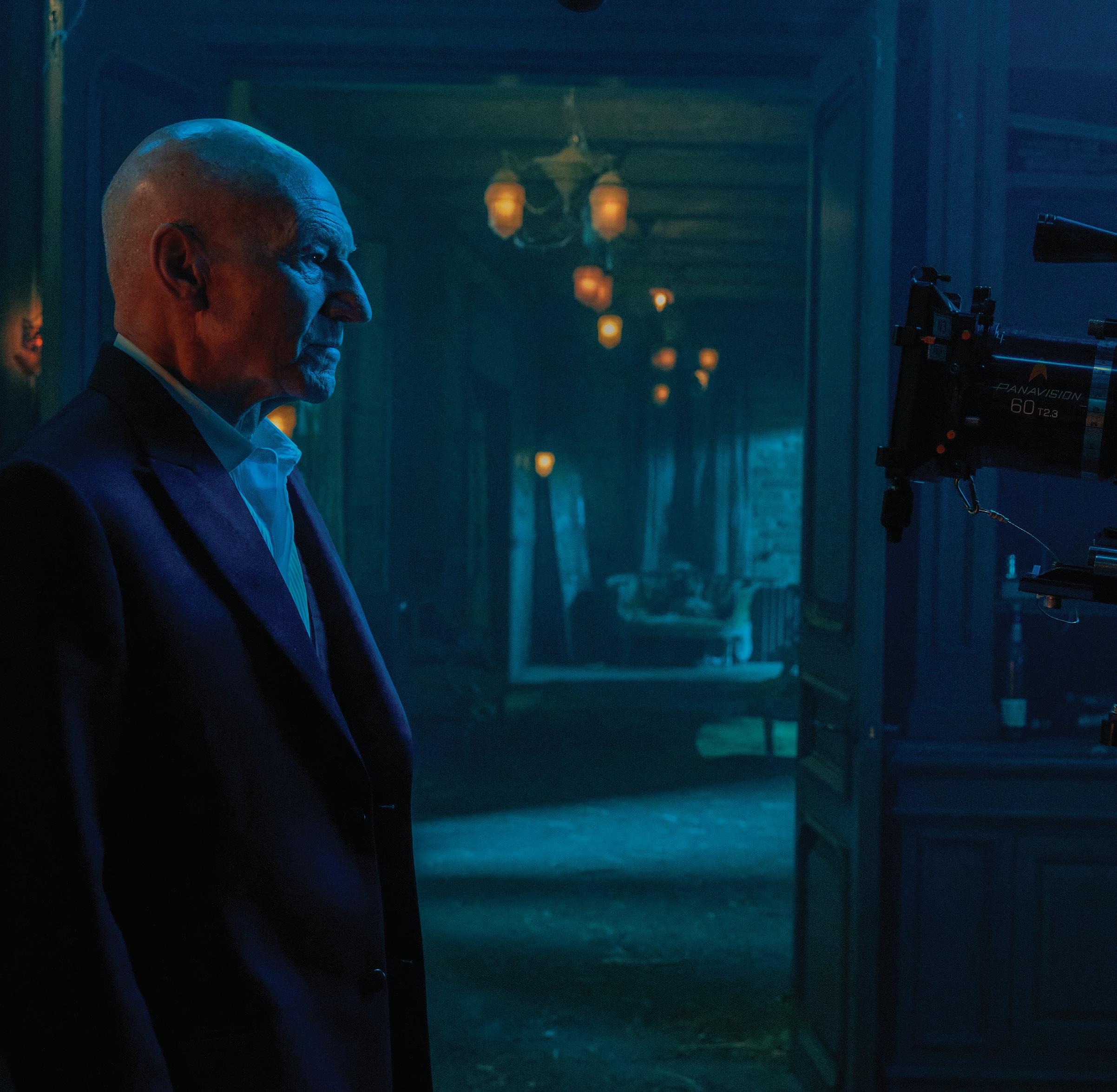
STAR TREK: PICARD + UP HERE + TINY BEAUTIFUL THINGS
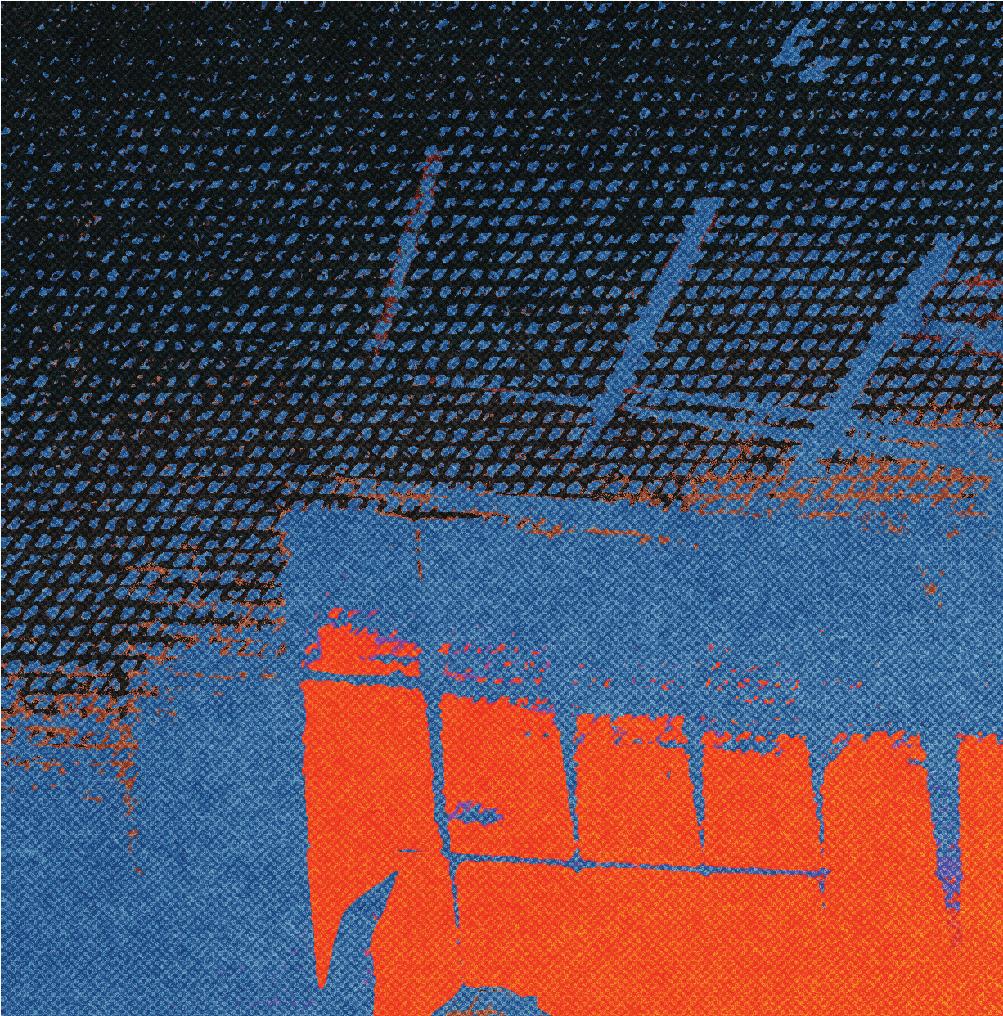

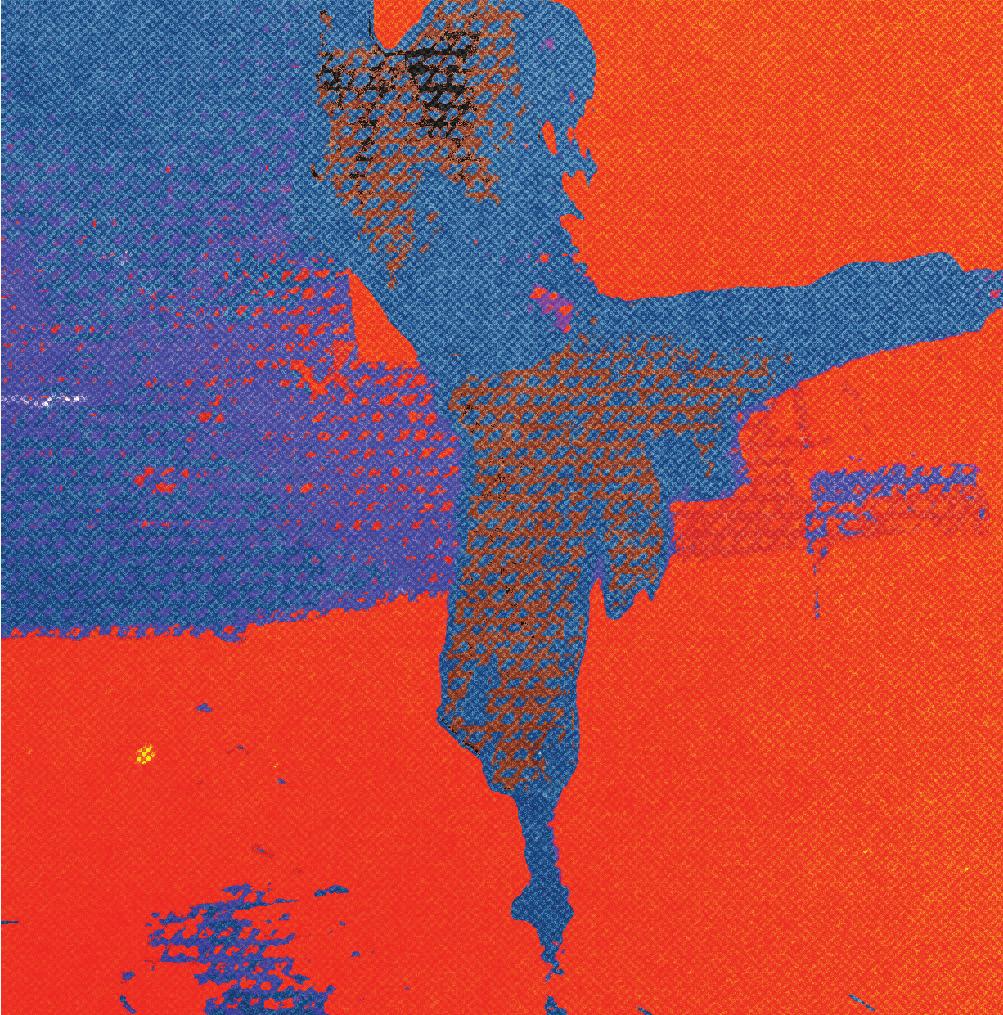
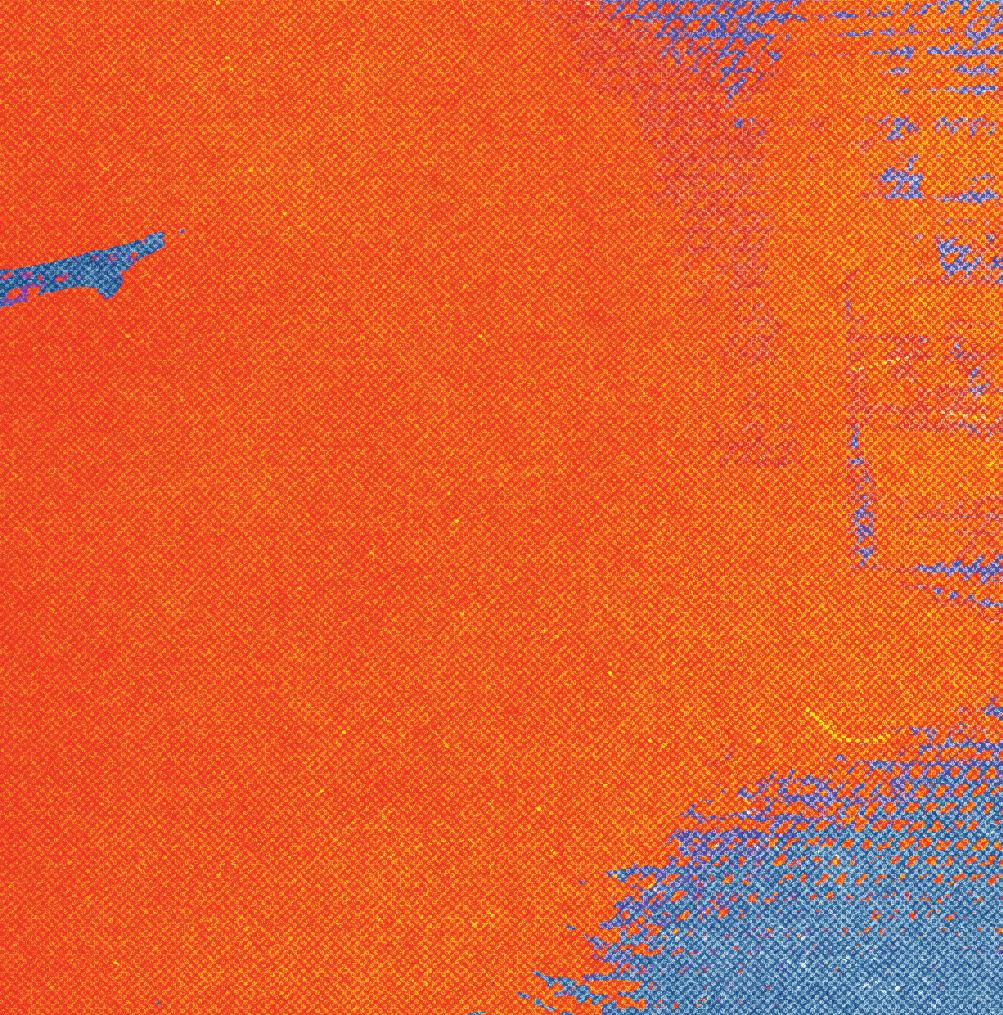
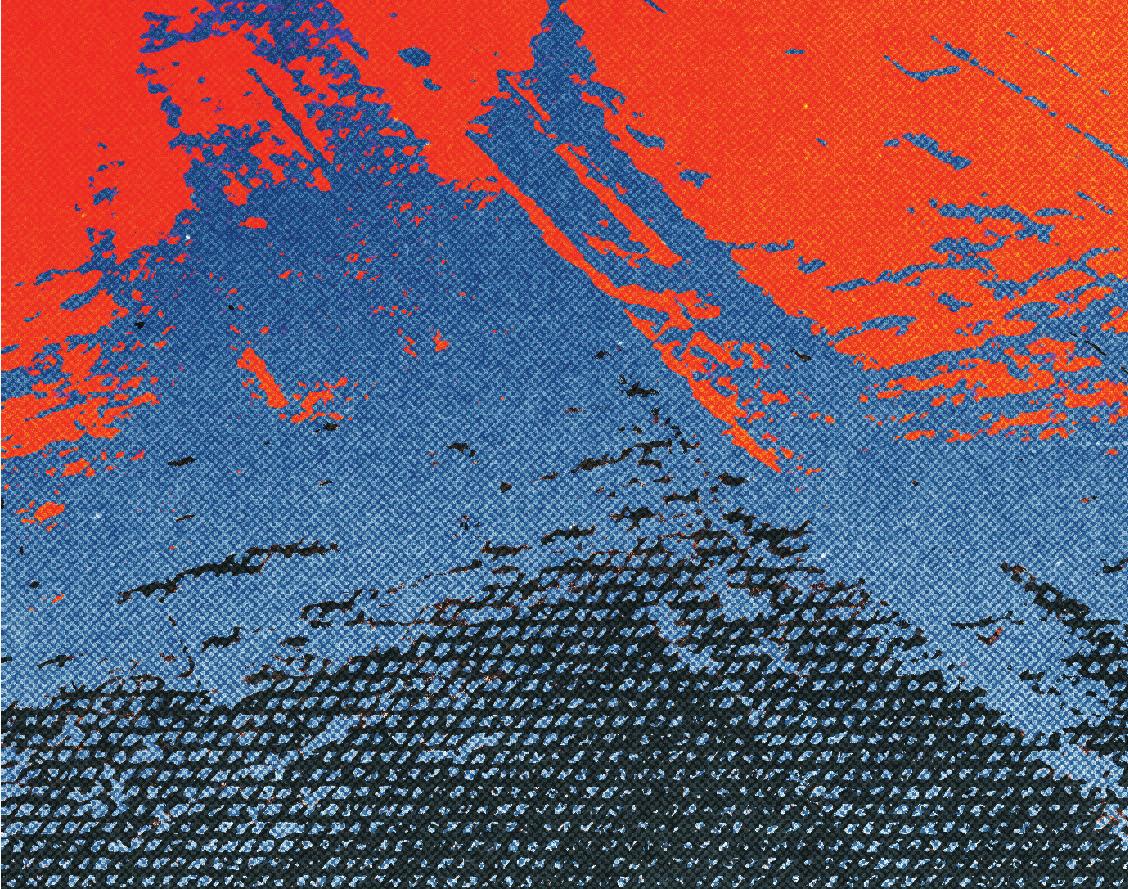
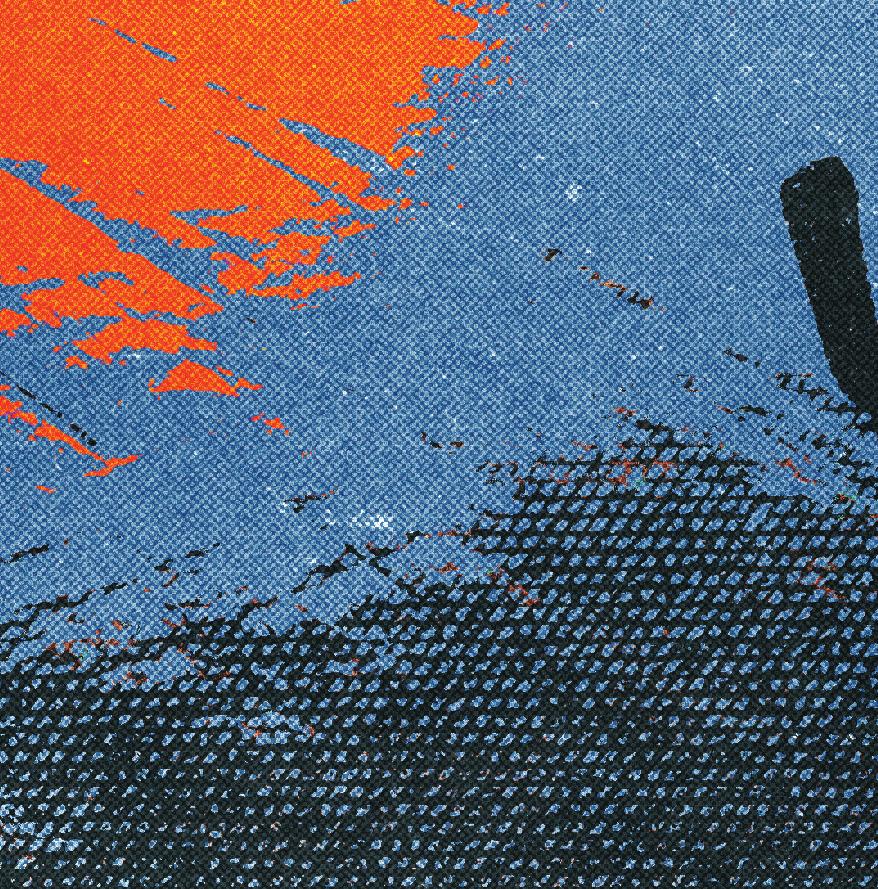
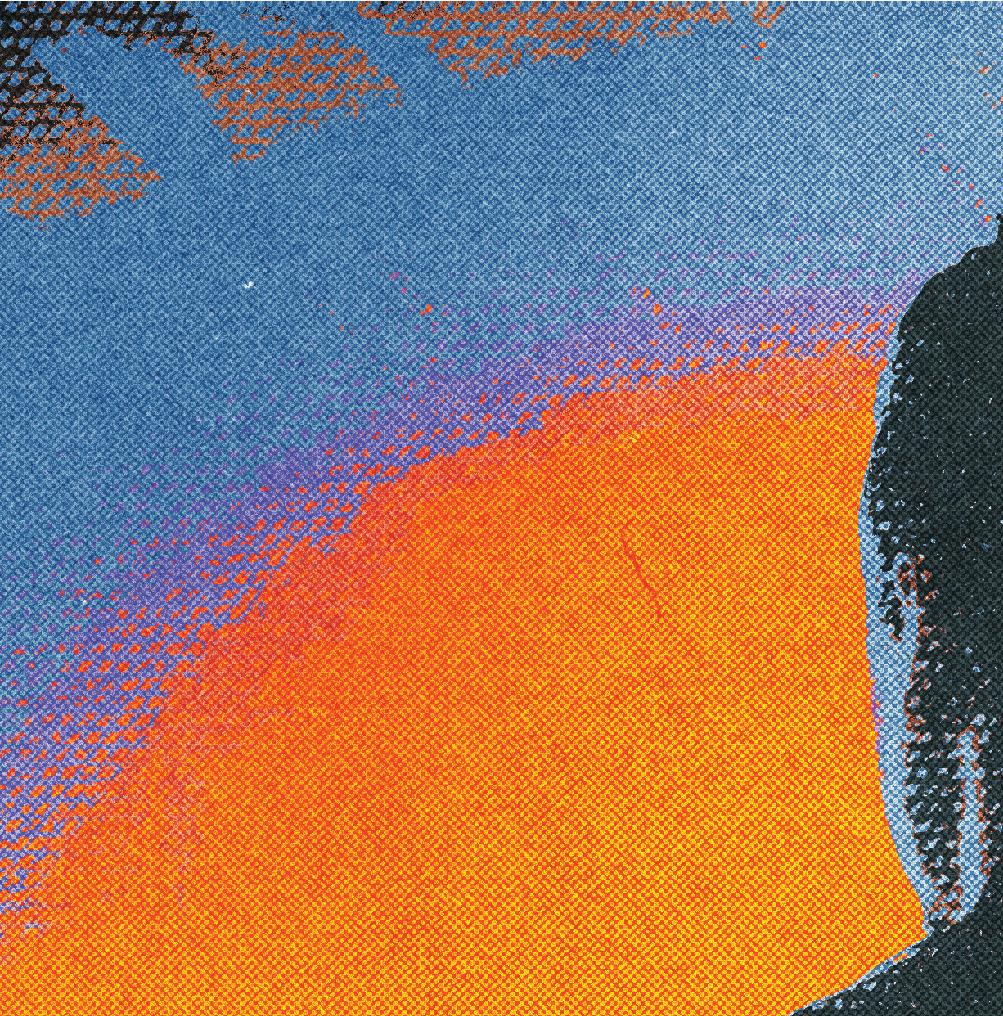

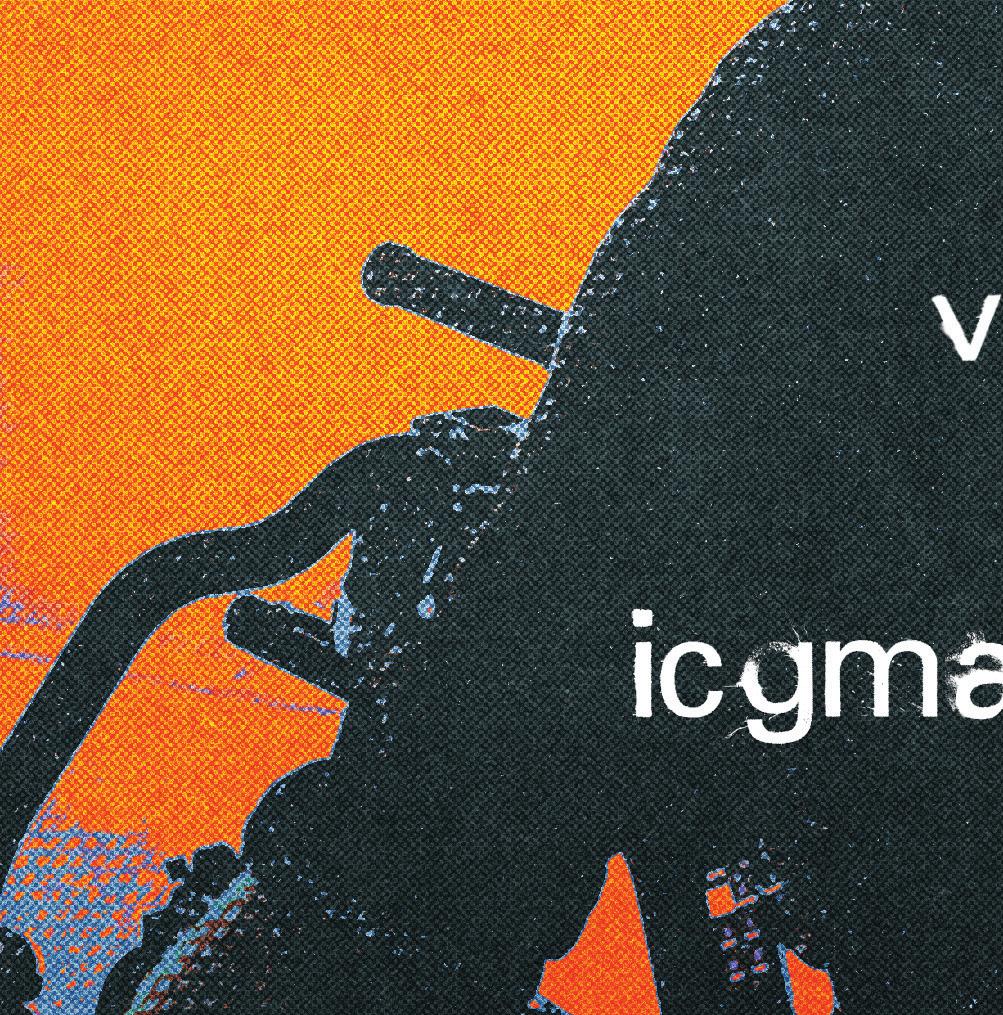




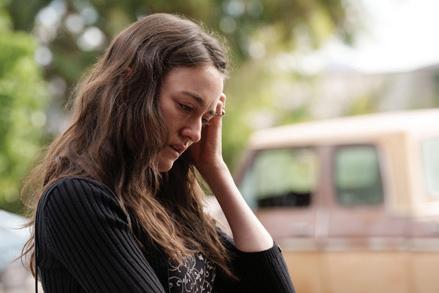

4 APRIL 2023 THE FINAL FRONTIER FEATURE 01 Crescenzo Notarile, ASC, AIC, and Jon Joffin, ASC, chart a visual journey beyond Federation borders for Star Trek: Picard 26 SPECIAL Sundance 2023 .... 74 NEW TECHNOLOGY DEPARTMENTS gear guide ................ 12 refraction ................ 16 on the street ................ 20 exposure ................ 22 production credits ................ 104 stop motion .............. 110 April 2023 / Vol. 94 No. 03
Tiny Beautiful Things FEATURE 03 FAMILY TREE Director
Ashley Connor listens to her “inner creative voice” for Hulu’s new musical series, Up Here FEATURE 02 44 60 ONE FROM THE HEART CONTENTS
Tobias
Datum joins an all-women team to bring forth Hulu’s emotionally complex new
limited series,
of Photography
Industry-leading image quality in a lightweight, go-anywhere package.
Embraced by award-winning filmmakers and owner-operators taking their careers to the next level, the ALEXA Mini LF is ARRI’s flagship large-format camera. Versatile and adaptable due to its compact size, low weight, and multiple recording formats, the Mini LF offers unsurpassed large-format image quality, continually improving ARRI accessories, software updates, and an exciting new REVEAL Color Science post workflow.
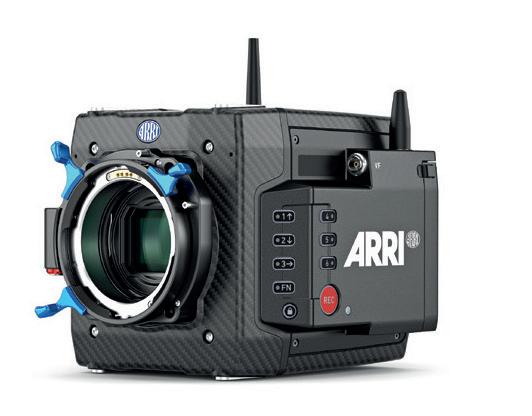
www.arri.com/alexa-mini-lf

PRESIDENT’S LETTER

Creativity Central
This month’s issue of ICG Magazine , centered around new technology, doesn’t only highlight the amazing new gear used on high-end visual effects movies and television series, as one might think. It’s also a platform for those tech innovators in this membership – DP’s, operators, assistants, DIT’s and others who take their skills from the set to the workbench, and sometimes the launching pad of a new business. Our Local 600 members have showcased gear, apps, and other products they’ve invented at key industry trade shows –like this recent February at HPA, in Palm Desert, CA, or in a few weeks from now at NAB in Las Vegas, and this June, at Cine Gear, here in Los Angeles. It’s incredible to see how this membership continues to innovate in their respective crafts. If they see a way to do something more efficiently on set; if they see something missing in the technology chain of their own workflows; or if they just imagine a way to get their job (and the jobs of other crafts) done more safely, they go and create something to make our industry better, stronger, and more productive. I’ve seen several examples in my career – from the camera to the grip department – of union film workers finding interesting technological solutions to problems they’ve encountered on sets or locations. And while I’m the first to admit I’m not aware of all the new technologies coming at us (on an almost daily basis), I can say I’m honored to be part of a union whose members take such pride in creating some of the new technologies ICG readers will learn about in this April issue – and all year round.
6 APRIL 2023
Baird B Steptoe
Photo by Scott Everett White
National President International Cinematographers Guild IATSE Local 600
Lights, Camera, Action, Logistics!
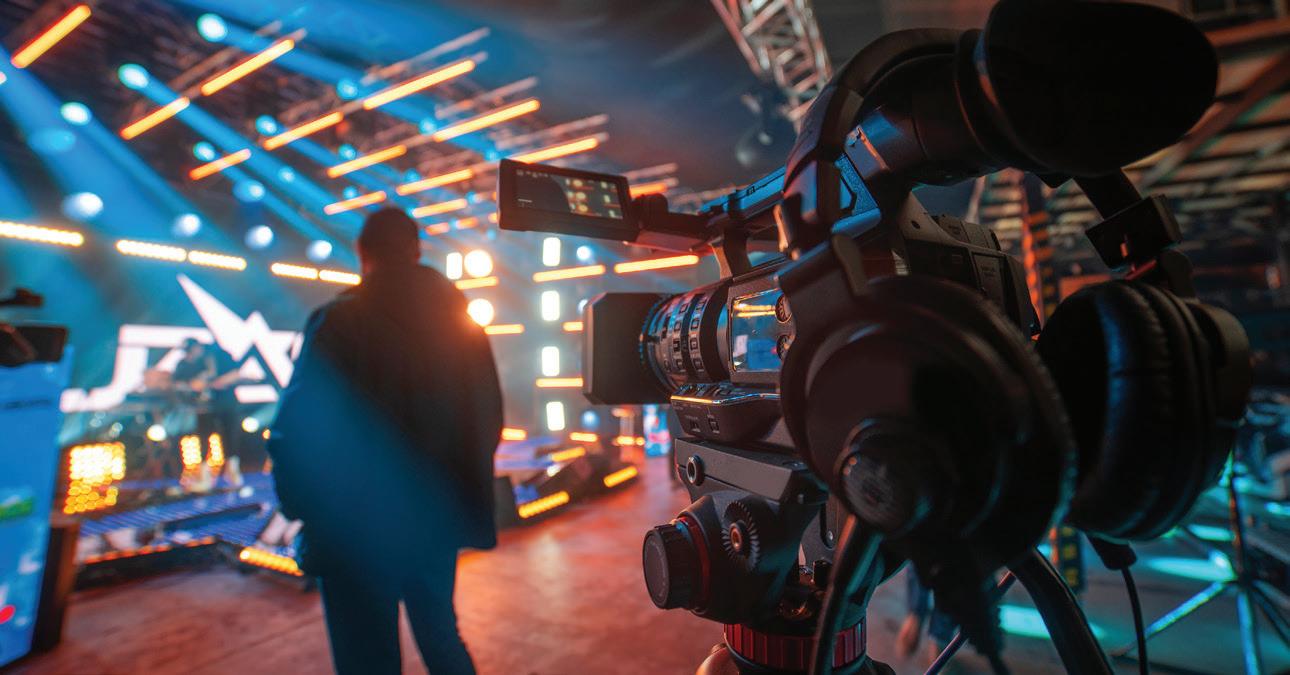
Masterpiece’s Entertainment Division understands the complex logistics of the industry including seemingly impossible deadlines, unconventional expedited routings, and show personnel that must be on hand. Masterpiece has the depth of resources to assist you in making sure everything comes together in time, every time.
Contact us to find out how our experienced team can securely and efficiently handle transporting to remote locations, made possible through our network of agents and partners around the globe. We have high-level access to restricted areas in all major international airports to oversee freight handling to make sure your precious cargo is always safe.
Our range of services, include:




• Performing Arts Industry Expertise

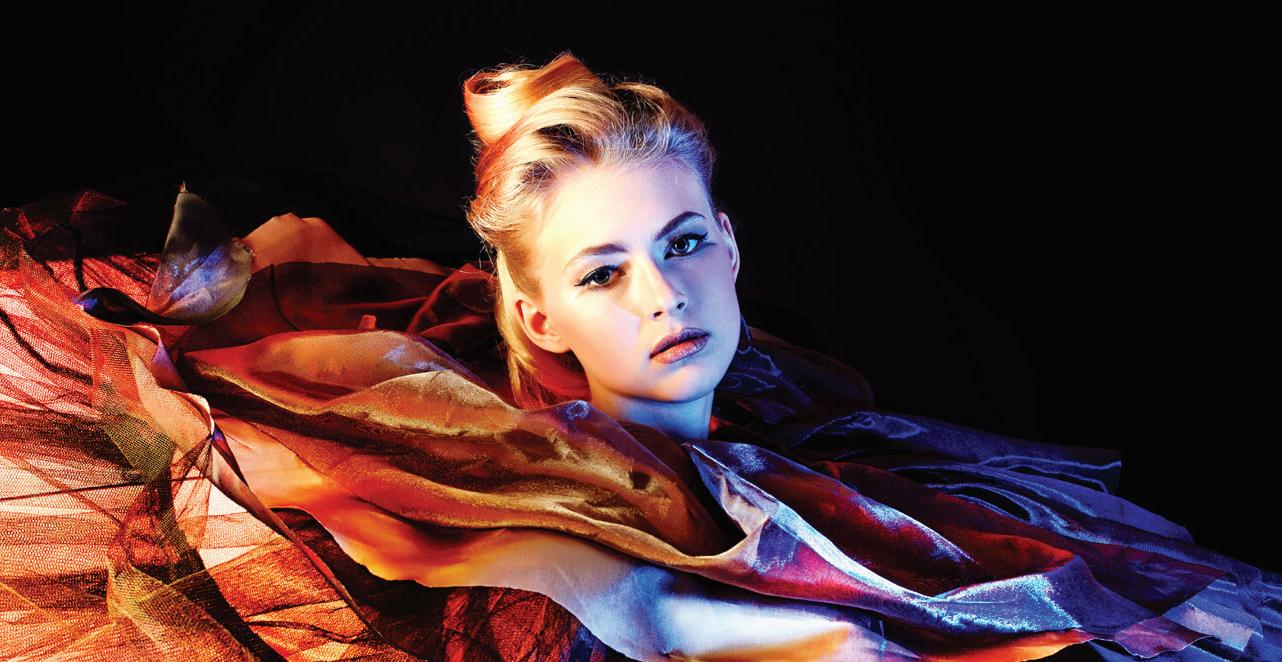
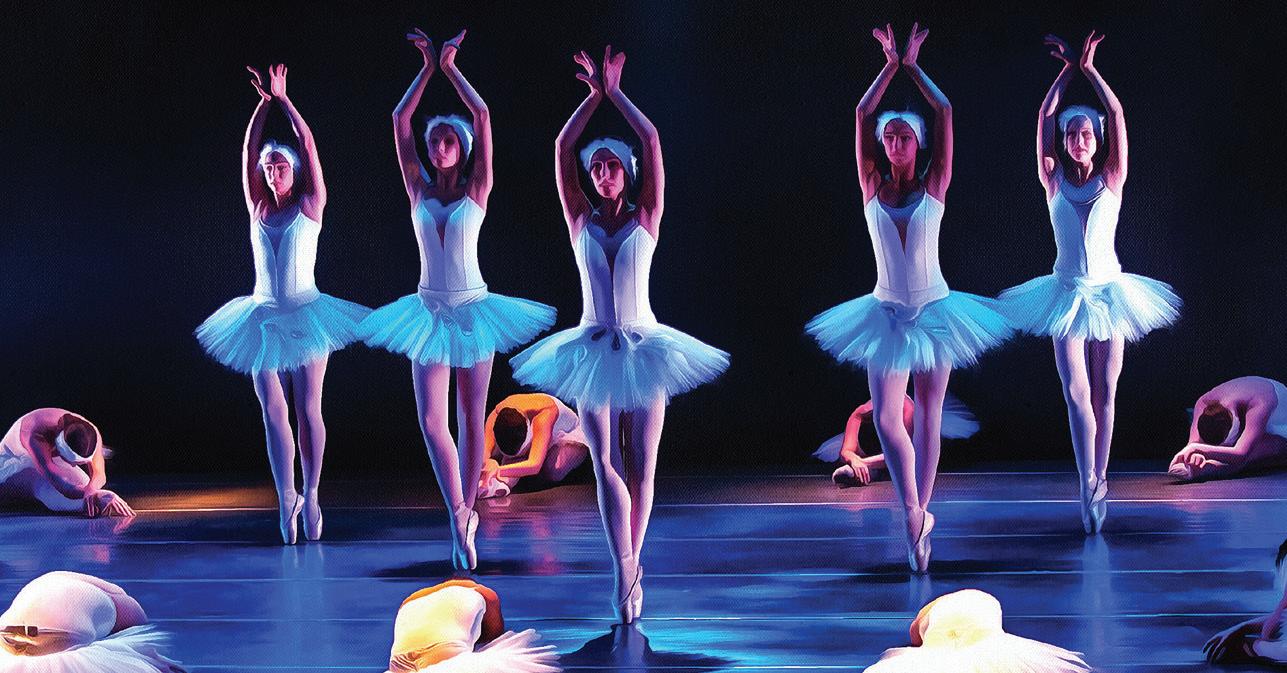

• Customs Brokers
• Freight Forwarders
• ATA Carnet Prep & Delivery
• Border Crossings
• Domestic Truck Transport
• International Transport via Air or Ocean
• Expedited Shipping Services
• 24/7 Service Available
FESTIVALS BALLET SPORTING STAGE

FILM & TV
ENTERTAINMENT LOGISTICS EXPERTS LEARN MORE www.masterpieceintl.com
Publisher
Teresa Muñoz
Executive Editor
David Geffner
Art Director
Wes Driver
STAFF WRITER
Pauline Rogers
COMMUNICATIONS COORDINATOR
Tyler Bourdeau
COPY EDITORS
Peter Bonilla
Maureen Kingsley CONTRIBUTORS
Michael Chambliss
Dennys Ilic
Kevin Martin
Valentina Valentini
April 2023 vol. 94 no. 03
IATSE Local 600
NATIONAL PRESIDENT
Baird B Steptoe
VICE PRESIDENT
Chris Silano
1ST NATIONAL VICE PRESIDENT
Deborah Lipman
2ND NATIONAL VICE PRESIDENT
Mark H. Weingartner
NATIONAL SECRETARY-TREASURER
Stephen Wong
NATIONAL ASSISTANT SECRETARY-TREASURER
Patrick Quinn
NATIONAL SERGEANT-AT-ARMS
Betsy Peoples
INTERIM NATIONAL EXECUTIVE DIRECTOR
Chaim Kantor
COMMUNICATIONS COMMITTEE
John Lindley, ASC, Co-Chair
Chris Silano, Co-Chair
CIRCULATION OFFICE
7755 Sunset Boulevard Hollywood, CA 90046
Tel: (323) 876-0160
Fax: (323) 878-1180
Email: circulation@icgmagazine.com
ADVERTISING REPRESENTATIVES
WEST COAST & CANADA
Rombeau, Inc.
Sharon Rombeau
Tel: (818) 762 – 6020
Fax: (818) 760 – 0860
Email: sharonrombeau@gmail.com
EAST COAST, EUROPE, & ASIA
Alan Braden, Inc.
Alan Braden
Tel: (818) 850-9398
Email: alanbradenmedia@gmail.com
Instagram/Twitter/Facebook:
@theicgmag
ADVERTISING POLICY: Readers should not assume that any products or services advertised in International Cinematographers Guild Magazine are endorsed by the International Cinematographers Guild. Although the Editorial staff adheres to standard industry practices in requiring advertisers to be “truthful and forthright,” there has been no extensive screening process by either International Cinematographers Guild Magazine or the International Cinematographers Guild.
EDITORIAL POLICY: The International Cinematographers Guild neither implicitly nor explicitly endorses opinions or political statements expressed in International Cinematographers Guild Magazine. ICG Magazine considers unsolicited material via email only, provided all submissions are within current Contributor Guideline standards. All published material is subject to editing for length, style and content, with inclusion at the discretion of the Executive Editor and Art Director. Local 600, International Cinematographers Guild, retains all ancillary and expressed rights of content and photos published in ICG Magazine and icgmagazine.com, subject to any negotiated prior arrangement. ICG Magazine regrets that it cannot publish letters to the editor. ICG (ISSN 1527-6007)
Ten issues published annually by The International Cinematographers Guild 7755 Sunset Boulevard, Hollywood, CA, 90046, U.S.A. Periodical postage paid at Los Angeles, California.
POSTMASTER: Send address changes to ICG 7755 Sunset Boulevard Hollywood, California 90046
Copyright 2021, by Local 600, International Alliance of Theatrical Stage Employes, Moving Picture Technicians, Artists and Allied Crafts of the United States and Canada. Entered as Periodical matter, September 30, 1930, at the Post Office at Los Angeles, California, under the act of March 3, 1879. Subscriptions: $88.00 of each International Cinematographers Guild member’s annual dues is allocated for an annual subscription to International Cinematographers Guild Magazine. Non-members may purchase an annual subscription for $48.00 (U.S.), $82.00 (Foreign and Canada) surface mail and $117.00 air mail per year. Single Copy: $4.95
The International Cinematographers Guild Magazine has been published monthly since 1929. International Cinematographers Guild Magazine is a registered trademark.
www.icgmagazine.com www.icg600.com







It was great to return in person this past February to the Hollywood Professionals Association (HPA) conference with my colleague, ICG Business Representative, and technology expert Michael Chambliss. Unlike much larger industry gatherings, HPA is an intimate affair, where roughly one thousand attendees – technological thought leaders from around the world – cluster at a Palm Desert, CA hotel for a flurry of presentations that, this year, ranged from an all-day seminar on the herculean tech efforts it took to create Avatar: The Way of Water (in the darkest days of COVID) to whether the entertainment industry should put all its chips (aka assets) into the cloud. HPA is also a bitesized trade show, where vendors gather in a separate hall known as the “Innovation Zone” to show off their latest products. (This year’s offerings were mainly centered on workflow and postproduction tools.)
There’s always plenty of brain power percolating at HPA, and this year’s conference was especially stimulating, with stakeholders from Sony Pictures Entertainment and The Walt Disney Company to Amazon, AVID and Zeiss. I’ll be posting a story from our visit to HPA later this month on icgmagazine.com, but I did want to highlight one HPA story running in this month’s On The Street (page 20).
Local 600 DIT Ryan Prouty has been in the film/TV/broadcast trenches for almost two decades, and he’s picked up a thing or two about production efficiency (or the lack thereof). When we met Prouty outside HPA’s Innovation Zone, he was demoing two companies he’s created – COLORSPACE [colorspacevan.com] and CinemaScan [www. cinemascan.la] – both aimed at increasing efficiency (and thus giving more time toward the creative process) on set. CinemaScan is particularly interesting to IATSE crafts workers as it combines panoramic photography and game-engine technology to create a video of a location before IATSE crews show up for work. CinemaScan provides a detailed “fly-over” and “walk-through” for basic quality-of-work issues (such as where are the bathrooms? Where is crafty staged? Where can we park our G&E truck to run the shortest amount of cabling to the set?). As Prouty told me: “Both
COLORSPACE and CinemaScan were inspired by my years spent on sets around the world: the guiding force is what technology can do for humans when it’s designed with intention.”
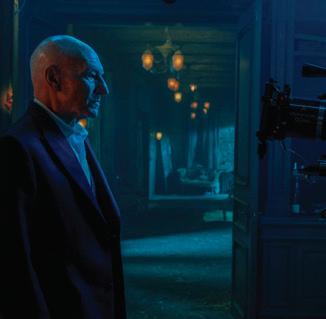
“Design with intention” describes this month’s cover story on Seasons 2/3 of Star Trek: Picard While I’m personally a Star Wars guy (sorry, Trekkies), I have nothing but love and admiration for a franchise born of three (slightly cheesy) years in the late 1960s that went on to become a global phenomenon, generating some $10.5 billion in revenue across every imaginable platform – feature films, spin-off episodics, video games, comic books, novels and so on. Two filmmakers highlighted in Kevin Martin’s story (page 26) – Director of Photography Crescenzo Notarile, ASC, AIC, and Actor/Director Jonathan Frakes –have been intimately involved with Trek’s episodics, and, in Frakes’ case, several features as well.
Crescenzo (first name only, please!) shot Seasons 1/2 of Star Trek: Discovery, before moving over to shoot Picard’s second and third seasons (sharing duties with Jon Joffin, ASC, for Season 3). His years of experience in episodic television were eagerly embraced by Frakes, who says both men bonded over such Trek staples as “foregrounding” and “lens flares.” Frakes describes Crescenzo as “a force on set, so people love him. And he’ll try anything. He even let me sneak in a third camera.”
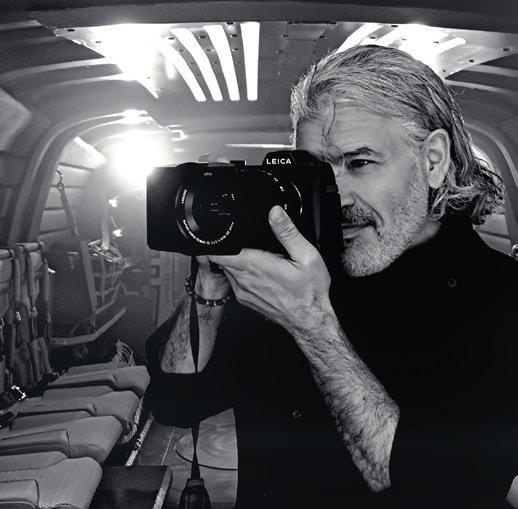
Making the working day easier for filmmakers has also been a passion of Creative Technologist Annie Chang for the better part of 20 years. Chang, a force in her own right, especially when visiting with “everyone everywhere all at once” as she was at HPA 2023, talks about technology’s relationship to the creative process in this month’s Refraction (page 16). Her recent work at Universal Pictures in “narrative and production ontologies” is built around the realization that “you cannot force technology onto creatives and non-technical people – it must make sense for them and fit their workflows,” she states. And when it comes to what she calls “soft leadership skills,” Chang (one of the most respected women in the technology space) notes: “We must remember our responsibilities in not only setting the strategies for our companies and productions but also our accountability in providing a healthy culture and working environment for our team members.”
Or, to paraphrase one overriding theme at this year’s HPA, “It’s the human factor, guys! Create technology that’s built to support and fuel creativity.”
Kevin Martin
The Final Frontier
“Back in 1996, before CGI established dominion over the Trek-verse, I got to ‘meet’ the Enterprise-E shooting miniature when covering Star Trek: First Contact. That was the first Trek film directed by Jonathan Frakes, aka Captain Will Riker, who again pulled double-duty as actor/ director for a pair of Season 3 episodes of Star Trek: Picard, shot by Crescenzo Notarile, ASC, AIC. Frakes told me that “through the efforts of ILM’s John Knoll and actress Alice Krige, the shot when the Borg Queen’s head slowly descends to join with its body remains one of the finest bits of live-action combined with VFX I’ve ever seen.”
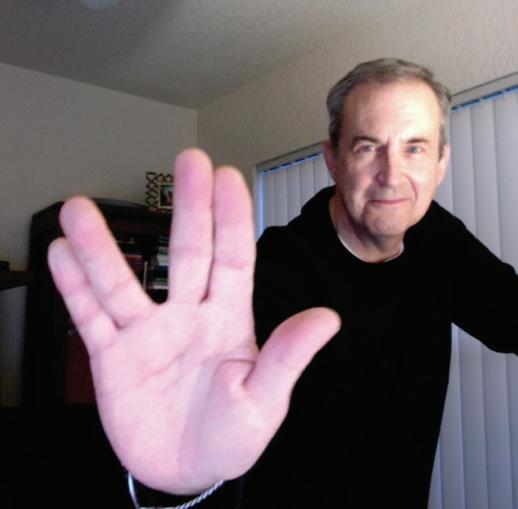
Dennys Ilic
The Final Frontier, Stop Motion
“Although I’ve been shooting stills for 20 years, I started as a cinematographer. I had overlap for a while, having filmed my last feature in 2010. Having a touch of enochlophobia, I found more comfort in the solitude and control of shooting stills, so much so that even my highest profile editorial shoots involved just me and one assistant. As I burrowed more into this world, I found myself back on film and TV sets, but now enjoying the hunt from the shadows for that perfect image that holds a different perspective than the movie camera. Everything came full circle when I discovered the beautiful optics of Leica. If you love the tools as much as the job, then work can’t be anything but joy.”
David Geffner
 Executive Editor
Executive Editor
Email: david@icgmagazine.com
10 APRIL 2023
ICG MAGAZINE
CONTRIBUTORS
Cover photo by Trae Patton
Photo by Sara Terry
WIDE ANGLE
Create Atmosphere
T IFF en Bl A ck F og & nI gh
Fog F I l ers
Tiffen adds a new tool for the cinematographer’s pallet. Paired with digital cameras, Black Fog and Night Fog Filters can provide a soft highlight glow reminiscent of the classic double fog cinematic look.





Black Fog provides an overall atmospheric softening that creates a smooth wide flare from the highlights yet keeps the blacks, black without overly muting colors or losing detail in shadows. A subtle effect, it can be used to add an overall look to a project.

Night Fog yields a natural fog effect with overall atmospheric softening and wide flare, coupled with unique contrast reduction technology that reduces highlights without darkening shadows. In light grades it provides a beautiful new look. In strong grades it flattens the contrast and desaturates color so it is useful for day-for-night.
On Bridgerton Season 3, we often shot in historical locations that had priceless artwork. Therefore, we were not able to use atmosphere in the air. I achieved a similar look using Tiffen Black Fog Filters. They made it feel like there was ambient diffusion in the space. Also, when I lit the filter with a backlight, it added a creamy soft flare that enhanced the feeling of atmosphere even more, which I was able to utilize during key intimate moments.
Alicia Robbins Director of Photography
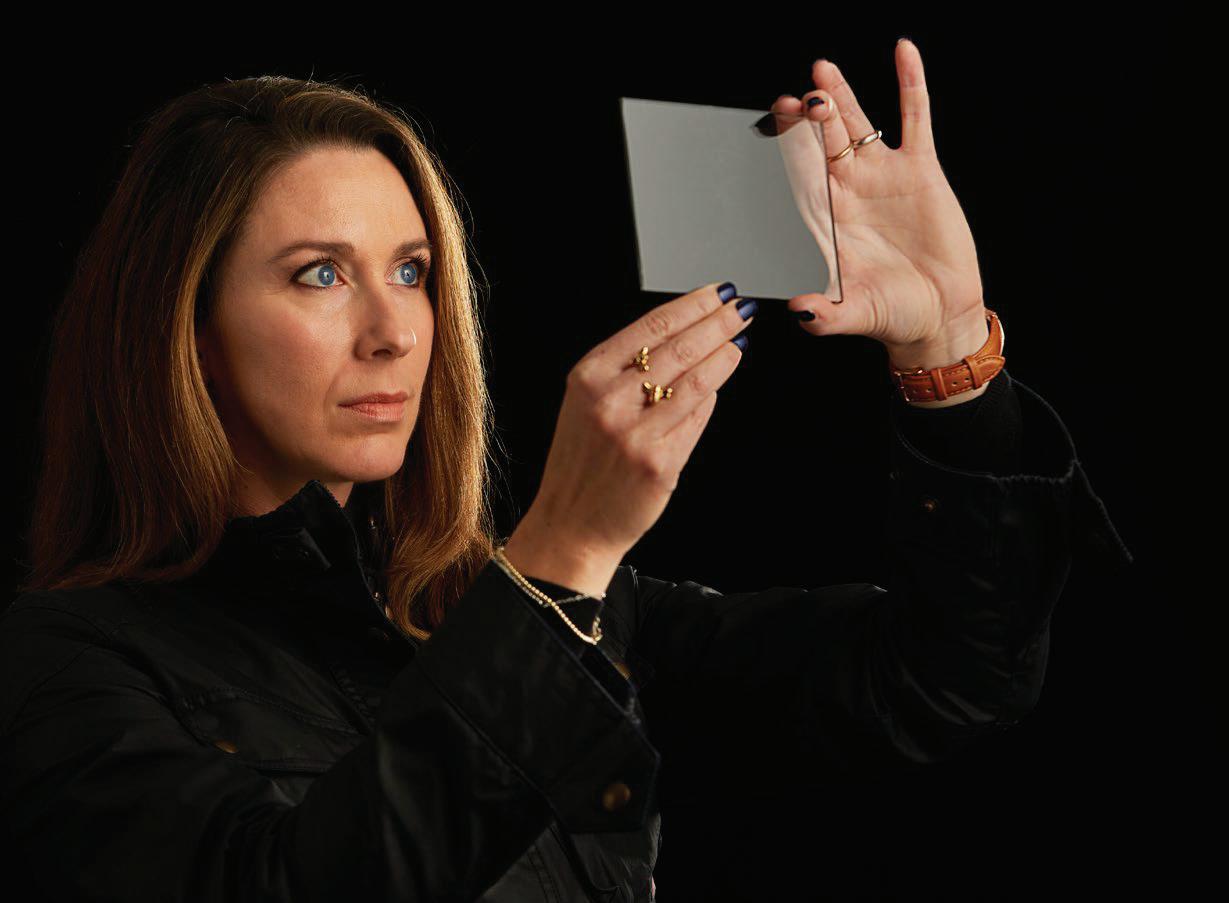
‘‘
new tiffen.com
GEAR GUIDE
AGITO Trax – SkyTrax
PRICING: DEPENDS ON THE SETUP WWW.MOTION-IMPOSSIBLE.COM
With the addition of the SkyTrax system to the AGITO Trax system, users can under-sling payload capacity of up to 100 kg. Following AGITO’s fully modular approach, the AGITO Track can be repurposed and converted to the SkyTrax System, or an additional track can be added. Lengths run from the largest 8-ft (2.5-m) sections to the smallest 2-ft (0.6-mm) sections, creating a system from 10 to 100 m or more. It runs fully enclosed in the SkyTrax hoops, keeping the system safe and secure, with a third rail for running cable management. The system is LOLER tested up to and beyond a 100-kg payload capacity. It’s fully customizable for multiple studios or live events. Overhead shots from perms or temporary elevated structures are newly adapted with ease. “Lifting the camera in the air with SkyTrax gives AGITO a whole new perspective,” says Rob Drewett, CEO of Motion Impossible.
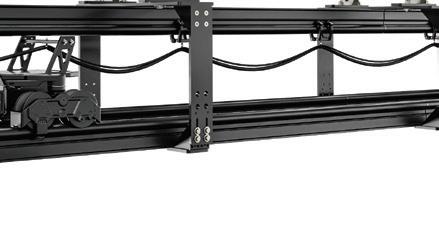
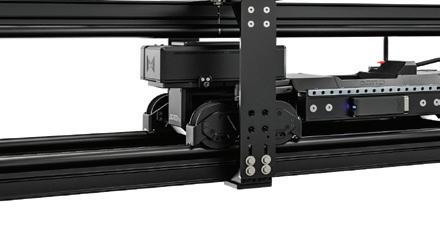

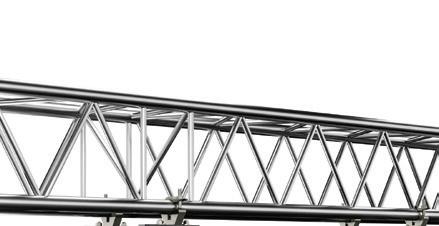

Blackmagic Design’s DaVinci Resolve for iPad
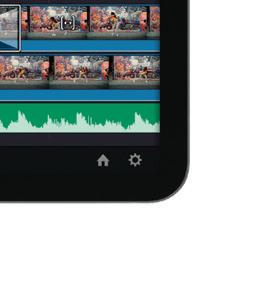
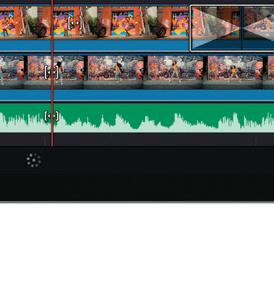



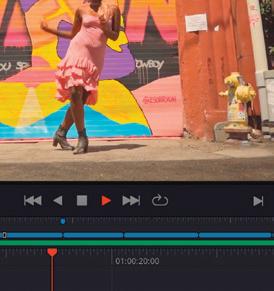

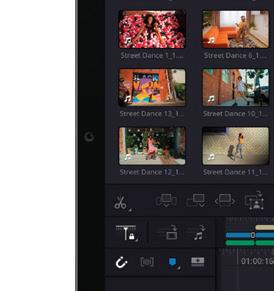


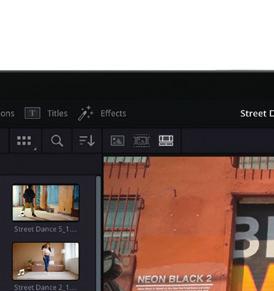
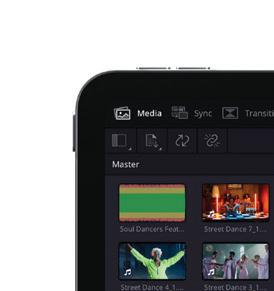
PRICING: FREE DOWNLOAD FROM APPLE IOS APP STORE. STUDIO FOR IPAD VIA ONE-OFF IN-APP PURCHASE FOR $95
WWW.BLACKMAGICDESIGN.COM
With DaVinci Resolve for iPad, creators can extend digital workflows in new ways and places. Optimized for MultiTouch technology and Apple Pencil, DaVinci Resolve for iPad features support for cut and color pages, as well as Blackmagic Cloud multi-user collaboration – cutting-edge AI tools powered by the DaVinci Neural Engine, including Magic Mask, Voice Isolation, Dialogue Leveler, Smart Reframe for social media and more. The cut page is perfect for projects with tight deadlines as it has a streamlined interface designed for speed, with features such as source tape for visual media browsing, quick review, and smart editing tools. The sync bin and source-overwrite tools are the fastest way to edit multi-cam programs, with easy-to-create, perfectly synchronized cutaways. The color page has a wide range of primary and secondary color grading features, including Power Windows, qualifiers, a 3D tracker, advanced HDR grading tools, and more.
12 APRIL 2023
DJI Goggles 2

PRICING: $649
WWW.DJI.COM/GOGGLES-2
disguise Previz
PRICING: FREE 14-DAY TRIAL; FROM $49 PER MONTH AFTER TRIAL WWW.DISGUISE.ONE/CLOUD
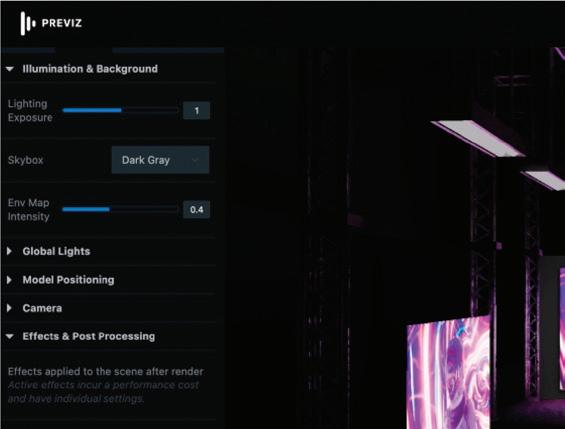
Disguise’s new Previz, integrated into its cloud platform, is a web-based app that lets filmmakers share a 3D replica of their virtual production stage – including geometry, textures, and a baked version of the timeline. So, no matter where disguise users are in the world, they can preview, comment on, and approve every LED visual, all before the first shot. “Previz has allowed us to communicate ideas and concepts in a meaningful and visual way that is simple to use and straightforward to create and share,” describes Troy Fujimura, Head of Design and Technology at Centerstage. With Previz, production teams can ensure that every virtual production scene looks photoreal from every angle before heading to set, reducing potential production delays as well as the need for extensive fixes in post. Previs is available as part of the disguise Cloud Pro and Studio subscriptions, which let creative teams manage 3D files, animations, cameras and lighting from a mobile-friendly interface. It is also directly connected to disguise Drive, which enables fi lmmakers to easily share preview links and store multiple stage models.
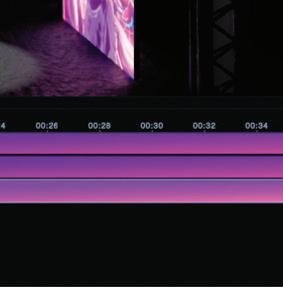
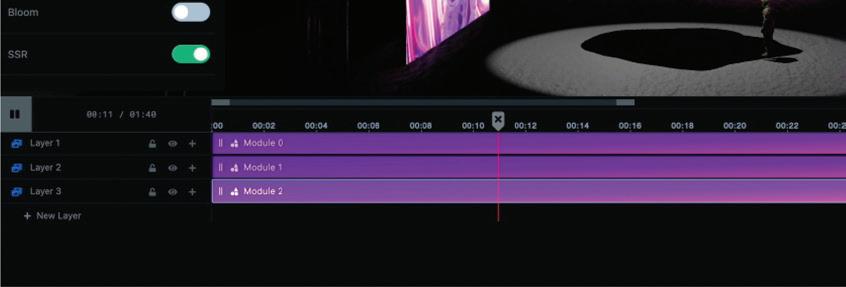

DJI’s Goggles 2 is a next-generation headset that offers a smaller, lighter and more comfortable fit, with a crystalclear FPV image comparable to those from other DJI drones. The unit features a clearer Micro OLED screen with adjustable diopters, so people who normally wear glasses do not need to use them with these goggles. When used with the DJI Motion Controller, the operator can control the aircraft and the gimbal camera freely to meet his or her shooting needs in various scenarios. An intuitive touch panel on the side of the goggles enables the user to easily control settings with only one hand.

13 APRIL 2023
GEAR GUIDE
LiteGear’s Auroris
PRICING: X SYSTEM $25,999, $18,990 (FIXTURE ONLY); V SYSTEM $13,990, $10,590 (FIXTURE ONLY) WWW.LITEGEAR.COM/AURORIS
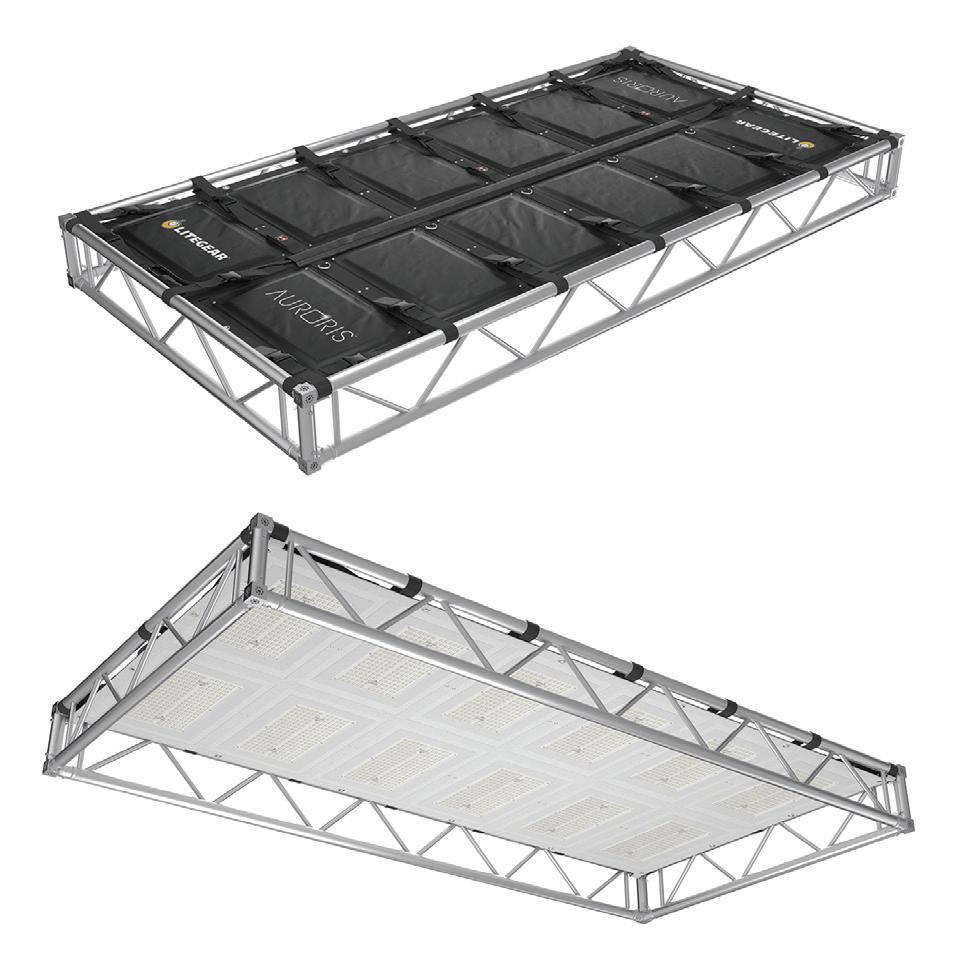
This overhead light source combines high-quality color rendition and precision control in one easy-to-use package. Powered by LiteGear’s Spectrum technology, Auroris X is built with 24 large-format pixels mappable source that can cover a 100-square-foot area with just one fixture. Designed to be light on weight and easy to rig, Auroris X is one of the slimmest, most versatile soft lights. The Auroris V brings the favorite features of the Auroris X into a compact, half-sized kit – perfect for rigging on smaller sets and in tighter spaces. The Auroris V’s unique shape allows rigging horizontally, vertically or as an overhead. Both units feature next-level Spectrum color for cinema-quality color output, with high-quality white light from 2,000K to 11,000K, and wide-gamut hue selection with full-spectrum desaturation.
SRG-A40 and SRG-A12 4K PTZ Zoom Cameras
PRICING: SRG-A40 $3000, SRG A12 $2500
Sony is expanding its lineup of pan-tilt-zoom (PTZ) cameras with the addition of two 4K models with built-in AI analytics. The SRG-A40 and SRG-A12 cameras automatically and consistently track and naturally frame presenters, regardless of movement or posture, for seamless content creation and control – all without operating a computer. The new PTZ Auto Framing technology features automatic operation for quick object tracking and rediscovery, as well as multiple Auto Framing options. Highlights of the cameras include image quality with automation, the flexibility of IP, powerful zoom, remote control, and easy configuration and operation. They are ideal for use in education, corporate, medical, government, broadcast and faith applications, as well as for live events. They will be available in North America in September.

14 APRIL 2023
WWW.PRO.SONY GEAR GUIDE
GEAR GUIDE
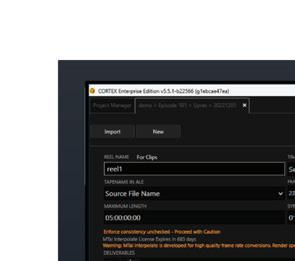
Atlas Slider
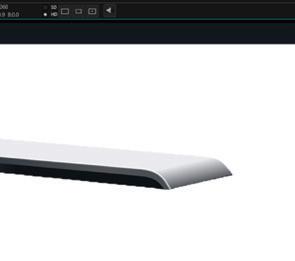

PRICING: STARTS AT $5,800 WWW.MRMOCO.COM
MRMC’s Atlas Slider is versatile in its modular design, meaning it can be upgraded and expanded to suit a range of applications, manual or powered. It can carry up to a 40-kg payload and offers precise mechanics, such as a fully equipped motion-control system. Perfect for studio and stage, the slider comes with a range of setup options customized to specific demands. Rail options include 0.8-m and 1.2-m sections, with 2-m and 3-m sections. Maximum length is 12 m. It is assembled without tools. Each section is equipped with feet that can be easily and quickly adjusted to any surface. Modularity allows it to be set and leveled on the ground, on tripods or even hung upside down under the ceiling. It can use a number of Slidekamera heads by MRMC, with cameras up to heavy broadcast and cine models.

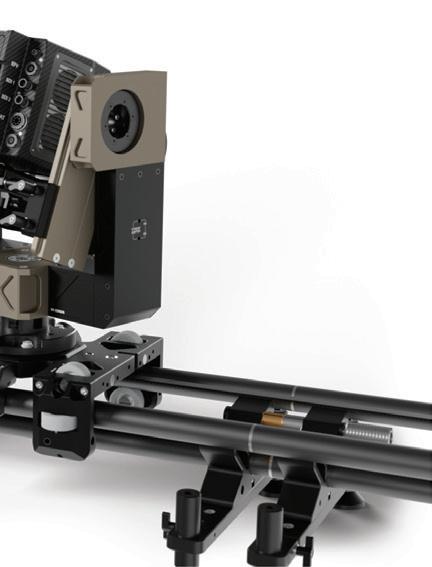

MTI Film Cortex v5.5

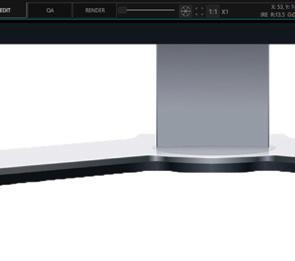
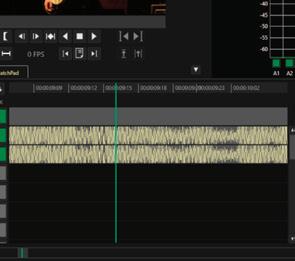
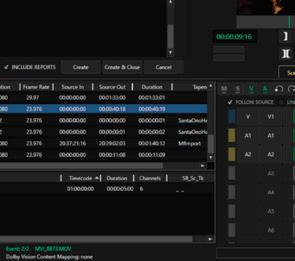


PRICING: FREE FOR NOW WWW.MTIFILM.COM/CORTEX
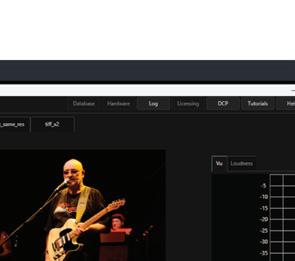
“MTai Super Resolution Uprez was developed using advanced machine learning techniques to analyze low-resolution content and generate new high-resolution content by filling in missing details that were lost in the original low resolution,” explains Wojtek Janio, director of Restoration MTI Film. “At MTI, we’ve been using MTai Super Resolution Uprez to enhance the quality of series and movies mastered in SD and upscale them to HD or UHD resolutions. Our leading-edge algorithms are at the forefront of using machine learning techniques to improve content quality and provide the best experience for audiences.” Frame Rate Conversion uses machine learning to interpolate between frames, increasing or decreasing the frame rate without ghosting, stutter or distortion. MTai Uprez applies a similar process to the task of increasing frame-rate resolution. The tool analyzes adjacent pixels within a single frame to produce intermediary pixels in a smooth transition. The result is not simply a larger image but one with greater detail and clarity.

15 APRIL 2023
ANNIE CHANG
VP, CREATIVE TECHNOLOGIES, UNIVERSAL PICTURES
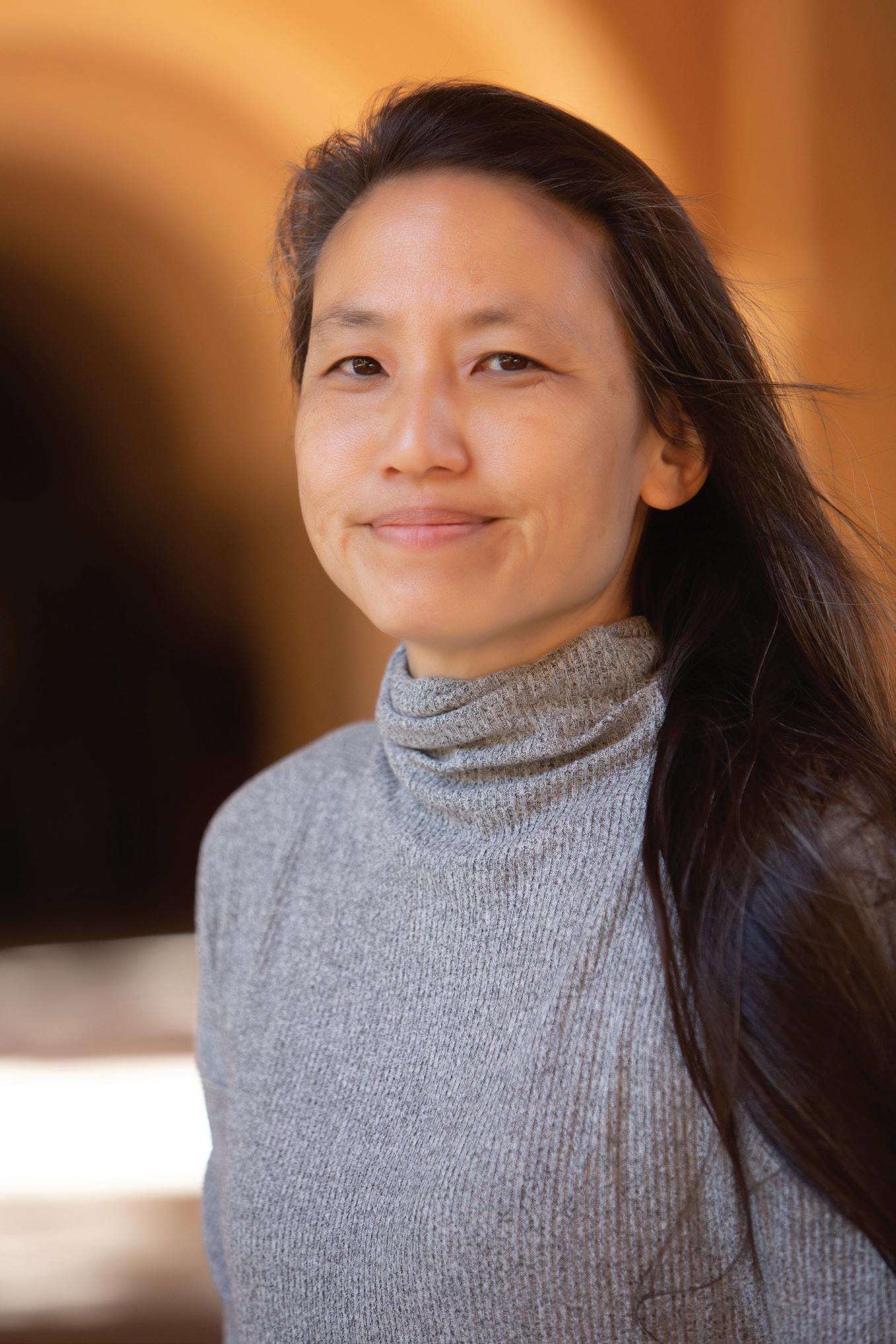
16 APRIL 2023 REFRACTION 16 APRIL 2023
PHOTO COURTESY OF ANNIE CHANG
I am often asked how to become a creative technologist, and here’s my answer.
First off, you need an innate desire to solve problems and make things better, but you also need the ability to look at problems and solutions creatively. Growing up, my dad was a computer scientist and electrical engineer for IBM; he and my brother were always tinkering with electronics and I loved to do the same. By the age of 12, I was soldering components onto PC boards for my dad’s side company (willing child labor since I had fun doing it). As my mom loved to sing, and my sister was and is a great artist, I also enjoyed being creative. I picked up the bass guitar in high school and dabbled in other instruments, including the French horn. I wanted to be a veterinarian, but I had a difficult time with organic chemistry in college. So, after a few fits and starts with other majors, and playing bass guitar in bands, I decided to start my recording studio and become a recording engineer. The one problem? My college didn’t have that program, so I turned to electrical engineering technology, which I thought would be helpful for sound recording.
I never did break into the music industry, so the first half of my career was spent working with new distribution technologies of the time, including DVD, digital cinema, HD telecine, Blu-ray, Apple iTunes, 3D Blu-ray, electronic sell-through (the predecessor to streaming), and the videotape-to-file transition. I helped break down confusing technical topics into things that non-technical people could understand and utilize to further these new technologies with consumers.
One example is visualizing the idea of file formats and compression schemes, which was always confusing for people. I would take a small plastic Tupperware container and a printout of one frame of a movie. I would show them that this was an uncompressed frame that would not fit in the
container. Then, I would crumple it up, showing that it was compressed, and place it in the container, explaining that we can make it fit in smaller places through compression. As I uncrumpled the paper, I would explain that the image was getting decompressed. Then, I would show it side by side with another printout that had not been crumpled to show that the compressed version, with all of its creases, would never be as good as the original uncompressed picture. This demo explained lossy compression scheme and, to this day, people who saw it rave about how they finally understood the concept of compression.
At The Walt Disney Studios, I was a digital technologist; when we started shooting on the RED ONE and MX cameras for The Muppets 2 and Pirates of the Caribbean: On Stranger Tides, chaos ensued because digital cameras created something called a “workflow,” which was incredibly foreign compared to the film process. Although we had been editing digitally with AVIDs for years, the major sea change was that we were now digitally kicking off the image source, the camera files. Gone were the well-understood chemical baths; in was a new world of proprietary camera and file formats, codecs, transcoding, resolution resizing, easy-to-mess-up color, and playback digital video.
My deep understanding of file formats and compression schemes was crucial to taming the chaos, and it provided me with an opportunity to move from distribution technology to production technology. The first task was to figure out why a show’s dailies didn’t look like their editorial media. It turned out to be the ubiquitous QuickTime container/ playback issue that plagued many of our early filebased shows. I also got to figure out how the VFX department on Beverly Hills Chihuahua 3 could do
their own camera plate pulls (one of the first shows to do that outside of a post house in 2012).
In 2016, I became VP of Technology for Marvel Studios, where I oversaw both Production IT and Production Technology. Production IT is the IT support for a movie or episodic production. It entails the installation and support of storage and networking but also goes into things like identity management, email, and other applications. Production technology was the precursor to creative technology, as it dealt with the workflows that sit on top of the IT infrastructure, but focused on production and post. My passion was developing strategies for filmmaking’s future and working towards that goal (although building a screening room for the VFX team on Black Panther in the middle of a tornado in Atlanta, GA, was interesting).
I am now in my fifth year as a creative technologist at Universal Pictures, where I’m seeking out new technologies and workflows to help solve problems for our film productions. I work closely with our Production IT team and shape the strategy and future vision of how Universal uses technologies for creative development, pre-production, physical production, VFX, post-production and archival. Creative-technology roles at the studios were born from traditional production-technology roles. The new terminology is more apropos to the fact that we want to make things easier, better, or more efficient for creatives, while always preserving their intent. To be a Creative Technologist, you must love solving problems but also have a knack for understanding how creatives want to work.
One big realization is that you cannot force technology onto creatives and non-technical people – it must make sense for them and fit their workflows. This means partnering with our studio executives and/or production crews to help them understand the ins and outs of specific technologies.
17 APRIL 2023 04.2023 17 APRIL 2023
That may include helping to better understand and advise on using ARRI’s ALEXA 35 camera, which has an entirely new color-management science and new features, such as Textures, or it could be to help figure out ways to take advantage of workflows being fully digital. (Even if the footage is shot on film, it is scanned into digital files right away.) It could also mean helping make sense of how artificial intelligence can be used to help creative development and visual effects.
Creative Technologists also participate in efforts to help drive commonly needed standards for our industry. One of the most exciting industry efforts is the updating of ACES (Academy Color Encoding System). ACES 1.0 was the first free, open-standard, color-management system – from camera through finishing and archive – that was production-ready upon release. It was the result of over 10 years of research, testing and field trials; many ICG readers are familiar with ACES 1.0 and may well have used it, loved it or hated it. Now, with a well-deserved update, ACES 2.0 will be available in 2023 (fingers crossed) with major improvements, addressing many concerns from ACES 1.0.
Another exciting effort is what we are doing at Universal Pictures around ontologies, a common language that enables applications and systems to exchange metadata easily and efficiently. We collect tremendous amounts of data in pre-production and production (camera notes, AD notes, script supervisor notes, editorial code books, VFX shot tracking databases, etc.) that are digital (instead of just handwritten). Wouldn’t it be interesting if we could connect all that information and relate it together to provide a rich context to others downstream? And what if we could associate assets like camera files, editorial media, VFX comps, models and other files to that web of context? This concept could make it easier to find our assets. Now, imagine if you could include script and call-sheet/schedule information into that web of information.
We’ve tested these ideas out at Universal, with some interesting results.
The process begins with these two common “backbones” of information: Narrative and Production ontologies. The Narrative ontology has everything to do with the story and comes from the script. This would include characters like Dominic Toretto and Letty Ortiz (from The Fast and the Furious series), scenes, props, vehicles and story locations. The Production ontology is the real-world equivalent of the Narrative. For example, the character Dominic Toretto is played by Vin Diesel and his real stunt doubles, while Dominic’s Charger is several different picture cars in the Universal inventory.
The camera slate is a crucial piece of Production information that ties the Narrative and Production worlds together – through this bridge we can relate the Narrative and Production ontologies. Starting to manage assets when we make them is too late in the chain. Instead, we want to see a database of the Narrative and Production elements related to each other first and then start associating assets as they are created to that backbone. Then, if you were part of the production crew, you could search by shoot day, or if you were on the VFX team, you could search by VFX shot ID. All of the data would be interrelated, allowing crew members (and eventually our archivists after the show wraps) to find whatever they are looking for through whatever method they are familiar with.
This crazy concept is part of the MovieLabs 2030 Vision. MovieLabs is a technology joint venture of the major Hollywood studios, and they released a paper [MovieLabs 2030 Vision] that details what the future of filmmaking could look like by 2030.
Before you think this is disconnected mumbo jumbo from studio executives working in a vacuum, many of us who helped write the vision (including myself) have worked on productions and seen firsthand the amount of inefficient and labor-intensive tasks required to make a movie or episodic. Part of the MovieLabs Vision is to create connected, streamlined workflows that make it easier to find and work with assets (like camera files, editorial
media, visual effects shots, etc.) that we create on our productions by leveraging all of the metadata that isn’t connected – yet.
The last thing I’ll leave you with is technology as it relates to leadership and management. Most people think technology leaders are only supposed to make strategies for the future. But one key overlooked area is the soft skills needed for good leadership and management of other technologists. To be brutally honest, many technologists, scientists and engineers are not always the most extroverted people (or necessarily socially adept). But the corporate ladder dictates that if you want to retain young technical talent, you must promote them to manager. Yet many companies do not provide these technologists with training and education on how to manage other people. The new manager gets promoted to a Director level, then a VP, then SVP, all the while not understanding what it takes to properly lead and motivate their team. Eventually, that person becomes a CTO, and those under him/her suffer.
I do not know if this is unique to technology fields, but I have experienced it in a prior role (thankfully, not at Universal). And while this presents no action item for the cinematography audience, I did want to extend the fact that when you are in a leadership position, you must remember your responsibility in not only setting the strategies for your company/ production but also your accountability in providing a healthy culture and working environment for your team members.
I was once told that my leadership style was poor and needed to change, and I began to believe that critique. But after receiving several awards for leadership and innovation from the Advanced Imaging Society, Hollywood Professional Association, TVNewsCheck, and Women in Technology Hollywood over the last few years, I’ve realized that my prior leader was wrong and that my leadership style, which includes what I wrote above, is something that technology leaders should model. Technology can sometimes be confusing and overwhelming, but that is why people like me are here to help navigate it.
18 APRIL 2023 REFRACTION 04.2023 18 APRIL 2023
"We collect tremendous amounts of data in pre-production and production... wouldn’t it be interesting if we could connect all that information and relate it together to provide a rich context to others downstream?"
cinegearexpo.com
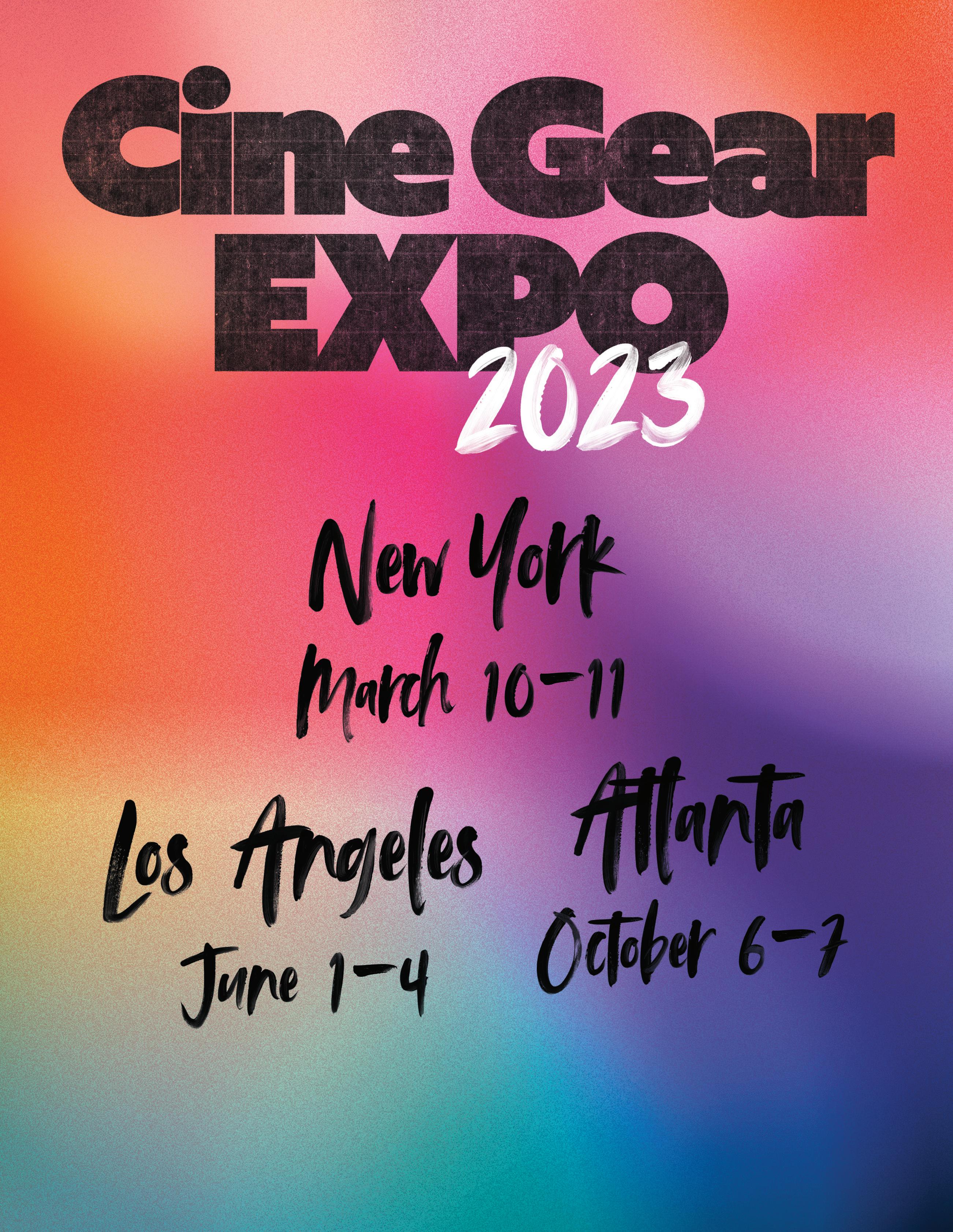
RYAN PROUTY
 BY DAVID GEFFNER
BY DAVID GEFFNER
20 APRIL 2023 ON THE STREET 20 APRIL 2023
PHOTO COURTESY OF RYAN PROUTY
DIGITAL IMAGING TECHNICIAN
A lunch hour spent talking to Local 600 DIT Ryan Prouty, at the February 2023 HPA Conference in Palm Desert, CA, is both an educational and technologically fun experience. Prouty, who has spent some 20 years in the motion picture and broadcast industry trenches as a digital imaging technician, broadcast studio camera operator, virtual reality cinematographer, documentary producer/ director, and certified Phantom technician, is also, in his own words, “a proud ICG member” since 2013.
He’s also a man on a mission, as the two companies Prouty founded, COLORSPACE [colorspacevan.com] and CinemaScan [cinemascan. la], are intent on maximizing efficiency (and, as a result, safety) on film and TV sets. Standing outside HPA’s “Innovation Zone,” where a multitude of vendors has come to share its products with technological thought leaders from around the globe, Prouty demos COLORSPACE 1: a 4×4 Mercedes Sprinter van housing a 4K HDR color suite; a two-seat edit bay; and equipment for monitoring, ingesting, and coloring footage for productions on location. But, Prouty explains, COLORSPACE is much more than just leading-edge tech. The vehicle (COLORSPACE 1 was launched at CineGear 2019, with COLORSPACE 2 launched at HPA 2023) “gives directors the tools to see what they need to see in the moment,” Prouty tells us. “Previs, storyboards, dailies, live images et cetera. At the same time, the technology is invisible to the end user as it’s tucked behind a solid partitioned wall, preventing humming fans and blinking LED’s from taking away from the creative decision-making experience.”
As Prouty explains, COLORSPACE has a unique history. “It was discovered by Antoine Fuqua in 2020 for Netflix’s The Guilty as a solution for directing remotely during times of COVID,” he says. “Antoine ultimately preferred working out of COLORSPACE 100 percent of the time,” he adds, and has subsequently taken Prouty and COLORSPACE on to large-scale productions that include Amazon’s The Terminal List (shot by Armando Salas, ASC) and Emancipation (shot by Robert Richardson, ASC).
In addition to the two COLORSPACE vans, Prouty was at HPA launching his set-scanning service, CinemaScan, which he describes as a LIDAR set scanning service with three unique benefits to any production. “Number one is that it turns your location into a digital collaboration tool similar to Slack or Microsoft Teams,” Prouty details. “Using the art department as an example, we’re not talking about them having to send a blank email asking: ‘Hey, you know in the backyard by the fence and the barbecue? Should we have that propped to the left or the right?’ with a response that’s usually: ‘What are you talking about?’ Instead, they can send
a link to the actual location that we’ve scanned, and ask: ‘Do you want it here or here?’’’
The second benefit of CinemaScan, Prouty continues, “is to take all of those decisions – visually made through our scan – in prep and communicate them with any department via a fly-through video, which is easily made through the same scanning equipment, nearly instantaneously, and is customizable to highlight any detail or perspective. Imagine a video that shows a crewmember exactly where his or her parking space is, where to access the shuttle to set, where to get breakfast, where the bathrooms are, where the appropriate staging is for their carts – I am a DIT, after all,” he smiles, “and exactly where the first shot of the day will occur.”
The fly-through videos Prouty shows me are not unlike what your favorite real-estate broker might send for a prospective house sale, but with much more detail. “We can make custom videos on an individual, a department, a crew-wide or even a shot level,” he adds. “The production office could include the link or QR code to the video on the call sheet, and now everyone on the crew gets a quick 45-second walk-through of the location before they’ve even parked their cars.”
Prouty says the goal for all productions should be to “turn on the camera, intelligently placed and pointing at the right thing, with all of the lighting and talent in place as quickly as possible. I know that will never be one or two minutes after call time – but it should not be three hours, as I’ve experienced too many times to count,” he says. “One of the biggest barriers to cutting down the start time to say, 45 minutes to an hour, is the crew not being familiar with the location.”
The third spoke in Prouty’s drive for efficiency comes from the meshing of CinemaScan’s two technologies – a point cloud LIDAR scan coupled with panoramic photography. “We can export the point cloud data into Unreal Engine 5,” he notes, “insert some meta-humans, and have a good understanding of what the finished product will look like. As a crewmember, very rarely did I understand that aspect of my day, so adding the data into Unreal Engine creates this tool that can discover the nuances of any given location and communicate more fully what’s happening on the day, all before a single pixel is captured by camera.”
From a cinematography standpoint, CinemaScan holds some intriguing potential. Prouty offers up the scenario where a DP is finishing a commercial in New York, “your producer is with the location in L.A., and your director may be in London,” he describes. “Using the LIDAR data and Unreal, they can all do scene blocking in the actual location, online, across the world and across time zones.
“I know from experience many DP’s and directors like to feel their craft in the moment,” Prouty’s quick to add, “and, of course, we never want to lose that creative spontaneity. But this tool allows creatives to block out their slam-dunk shots in advance, and get them in a quicker, more efficient timeframe, which allows time for more fine-tuning before the next setup.”
When asked about CinemaScan’s comparison to pre-viz, Prouty says, “the kind of previsualization the DP, director, and VFX super have been doing for years on action films was an initial inspiration. But this is quick and cheap previs for logistics to achieve the first shot of the day much more quickly, as opposed to a high-resolution previz that’s going to make its way into VFX at some point on the project. We scan at about 1500 square feet per hour, so this property I’m demoing now and is also on our website was done in a hair under two hours.”
Prouty says that his background as a DIT means he is forever balancing capability versus portability. “I want to be able to say ‘yes’ to everything that’s asked of me,” he shares. “But I also want to maintain the smallest possible footprint on set. When I’m hired on a job, I ask the basics: ‘Are there stairs? Are we on the beach? Is the roof location using three scissor lifts!? It is? Yikes!’”
In simple terms, Prouty says that “the more educated I am as a crewmember about a location, the more intentional I can be about providing the DP with the right capabilities and having the most efficient footprint on set,” he continues. “The location on the demo I’m showing is a singlestory family home, where the software has already measured the doorways to let me know there would be no problem bringing my 50-inch DIT cart. If the location was a four-story building with limited roof access, I’d know to probably be coming with just a Pelican case.”
As is often the way with Local 600’s innovative membership, Prouty says CinemaScan came out of a need to “scratch our own itch. I was on a location with the COLORSPACE van, and AD’s were too busy to provide us with any location data,” he concludes. “I figured if I made it so quick and easy all they had to do was point, we’d have better results. So, I came an hour early, flew my drone over the set, and imported those files/data into Polycam [a 3D scanning app for iPhone and Android]. I then went up to one of the AD’s with a 3D-rendered map and said, ‘Hey, I just need you to point to where we’re shooting today.’ It didn’t take too long to recognize its marketability aspect, and then the sparks started flying about how this type of technology could educate the crew and, in essence, give us the ability to answer our own questions.”
21 APRIL 2023 04.2023 21 APRIL 2023
KRISTEN ANDERSON-LOPEZ & ROBERT LOPEZ
CO-EXECUTIVE PRODUCERS/CREATORS/SONGWRITERS
BY PAULINE ROGERS
Kristen Anderson-Lopez and Robert Lopez have won 22 industry awards and have been nominated for 40 Oscars, including Original Song (2014 Frozen and 2018 Coc o), along with a Primetime Emmy for Music and Lyrics for WandaVisio n in 2021. The two met at the BMI Musical Theatre workshop in 1999 and started dating seriously just before Y2K.
“We started working together in 2002, mostly to spend more time together!” shares Anderson-Lopez. Their first songs as a team were for a Disney Channel show called Bear in the Big Blue House . After that, they went on to write Finding Nemo The Musical for Disney's Animal Kingdom. That led to Disney Animation, where they wrote Winnie The Pooh and Frozen , then on to Pixar for Coco and more. After the two married in 2003, they started developing a version of Up Here for the stage. It was a completely different story with completely different characters than the Hulu series that debuted in late March (page 44), but it contained the same underlying themes and ideas. The couple workshopped Up Here with the Roundabout Theatre and then did a version at the La Jolla Playhouse in 2015. In retrospect, Anderson-Lopez says, “it needed Steven Levenson, Danielle Sanchez-Witzel, Tommy Kail and the streaming TV genre to find its true footing.” Like so many of their projects, Anderson-Lopez says Up Here has been a journey. ICG Magazine caught up with Filmland’s most successful musical husband-and-wife team to hear about the various challenges inherent in their many different avenues of entertainment.

22 APRIL 2023 EXPOSURE
PHOTO BY SARAH SHATZ/HULU
22 APRIL 2023

23 APRIL 2023 04.2023 23 APRIL 2023
How did the process and the story for Up Here change as it moved from stage to streaming?
Robert Lopez: Twenty years ago, when I was first learning how to write musicals in the BMI Workshop, I was taught that for a story to be a good musical, it must ideally be set “long ago and far away,” because everyone knows people in New York in modern times don’t break out into song. We also learned it must be about a larger-than-life, extroverted main character, because for a character on stage to be believably singing their emotions, those emotions must be strong and uncomplicated. I understood the reasons for the guidelines, but I still found them constraining – contemporary stories about ambivalence are the ones that most interest me!
So, what changed? Well, eventually, I got an idea: inside the mind of the most introverted, self-thwarting character are huge feelings, huge emotions, and huge characters and forces of antagonism, none of which anyone else can see –and this world inside the mind would make a great place to set a musical, perhaps about consciousness itself. When Kristen joined me on the project, her first contribution was to make it a romantic comedy because the best way to challenge anyone’s idea of themselves is to introduce a love interest. We worked for 10 years – on and off – developing this stage show. In that version, we only went into the male character’s head, and our “head characters” were zany, made-up, like the “Humbug” and the “Critic.” When the show debuted in 2015 in La Jolla, much of it felt so promising, but the fundamental story of seeing into only one person’s head felt unsatisfying and somewhat lopsided from a storytelling point of view. But we had a hard time envisioning how the piece as it existed onstage could be adapted to show Lindsay’s consciousness, and we put it aside for a few years to finish our work on Frozen Broadway and Frozen II . During the pandemic, our friend Tommy Kail called and asked whether we had any ideas for a streaming musical series. All of a sudden, we became excited to overhaul Up Here for this new medium, with a new story, new characters, and, with a few exceptions, completely new songs. Aside from being a romantic comedy called Up Here set in someone’s mind, the stage show bears little resemblance to the Hulu streaming project.
What was it like working with a Tony-winning artist like Steven Levenson? Kristen AndersonLopez: Bobby and I had always wanted to work with Steven, and there was even a time when we planned to continue working on the La Jolla version with him. Then life and other projects took over, and we lost a few years. Cut to 2019, and there we were at the opening night of Fosse/Verdon , and Bobby and I were so taken with how Steven had crafted this masterpiece that opened windows into the protagonist’s head through their iconic songs. We
knew then and there that we had to somehow revisit Up Here with Steven again. He was the visionary storyteller we needed. An added bonus is that he’s a wonderful human being and friend.
We covered Tommy Kail’s work on the film version of Hamilton [ICG Magazine September 2020]. He seems to have a knack for melding Broadway and Hollywood into one package. How did the three of you work together? RL: We had regular Zoom meetings with Steven and Tommy – and later our fifth partner, Danielle Sanchez-Witzel – to develop the characters and the scope of the show, establishing themes to explore, constantly beating and re-beating the pilot episode, and [deciding] what might be fertile ground for musical moments. We wrote some exploratory songs, some of which remain in the finished product – the song What If was the first song we wrote for it. The main challenge was figuring out who these elusive “head characters” were, how many there would be, how they would be introduced, and what the rules were for them showing up. These parameters were constantly being changed and challenged during our development process. The main change from our original stage concept was that the head characters would not be abstract but based on significant people from the main characters’ past. The idea being that when anyone goes through emotional trauma, a new guardian is created to protect them from that same danger happening again. But as we get older, some of these guardians outlive their usefulness and begin to get in the way of personal growth and true romantic connection.
How did you work with Up Here’s director of photography, Ashley Connor? Is there an example of how music and cinematography overlap? KAL: One of my favorite things about our Up Here process was that we were all working in the same building, which we jokingly named “Up Here University.” We’d be up recording or comping/mixing a song, and Ashley could wander in and see some of how the sausage was made. We would send our songs to the choreographer, Sonya Tayeh, and then wander down to see what her gang was developing. We were all figuring out what this unknown creation was together. There was a fun moment when Sonya and Ashley called us to watch the I Am Not Alone rehearsal. The dancers had big cardboard boxes that stood in for walls, and Ashley was right in the middle of it, working on her shots and angles. Bobby and I were blown away by Sonya’s choices and even more blown away by how those choices would be captured through Ashley’s many lenses. But at that moment, she looked like she was part of the number! Once we got into filming, we realized what a metaphor that rehearsal was. She would be a huge part of the choreography of every single number in the show.
What are the main differences in writing music for a large theatrical franchise like Frozen versus television like WandaVision or Up Here versus stage like Book of Mormon ? RL: In certain ways, writing a song for a musical is the same, no matter what the medium. It’s about creating characters, finding the right moments for them to sing in the story, finding their voices, and then talking through the song until we are ready to write it. This is always the most enjoyable part of our process because it’s just the two of us playing.
Is the collaboration for streaming different from theatrical? KAL: Theater is very iterative. You put something up, watch, learn, go away, and rewrite. There are workshops and previews, and you learn by repetition. With Up Here, we tried to replicate the theatrical collaboration as closely as we could, and we had some blissful days of that kind of work in preproduction. However, once production begins, TV, like time itself, marches ever forward. You execute the plan, you pivot and collaborate during the shooting hours, and it is captured and done by the end of the shooting day. The iterative part begins in post. But during the process, every day is a new adventure.
Did you talk with the editors during post? RL: Yes, as executive producers, we were in very close contact with the editors during post, weighing in at every stage. That’s honestly where the songs found their final shape. Some bits that felt necessary as we were writing needed to be cut in post. Sometimes the entrance point of the music would be changed to make the song feel organic. We realized in post that the opening vamp for our opening number, To Really Know Someone , needed to start a scene earlier in the flashback to connect the flashback to the song beginning in the present day. So, I had to add like 32 bars of piano chords and keep it interesting before the first line of the song!
What is the process of writing the score? Is it always written to rough footage, fine-cut footage, or no footage at all? KAL: We should clarify language – there is a difference between the songs and the score. The songs – there are 18 of them – were all written and recorded before anyone stepped in front of a camera. The “score” is the music that supports the scenes and storytelling, and that part is added in post. The director’s cut always included a temp score curated along with the editor. And we started working with Chris Beck and his team to replace the temp score with their original score after all the executive producers had a chance to sign off on episode cuts.
How different is it to create the “score” or “song” first and then create the footage? RL: The “score,” meaning the underscoring, is always written after
24 APRIL 2023 EXPOSURE
APRIL 2023
the picture is locked. But the “songs” must be finished before production begins since they are essentially as much a part of the script as the dialogue. However, there are parts in a song, such as an intro, transitions, and the end, that sometimes don’t have any lyrics, so they sometimes become fair game during editing and land in the realm of the score – meaning, I have to rewrite them, in favor of making the best show we can.
The music/songs/score for a franchise like Frozen end up having a massive life of their own after the movies are out. Do you see anything like that happening with Up Here ? KAL: One can never anticipate what will happen with any project. We were certainly surprised by Frozen ! We sure hope that people will hear the heart, experience and honesty we have poured into these songs and that these songs will resonate with people’s own experiences and feelings.
How important is the pacing/staging/look of a project on the music itself? RL: Most of our writing gets done before any of the production team is hired. I wish their wonderful work existed for us to be able to draw inspiration from. But usually, it’s the other way around. We make sure they all get the song demos as well as every script so they can take our work into account when they’re planning the look, feel and tone of the show. The director is ultimately in charge of that, and we were very lucky to have one of the greatest of all time in Tommy Kail.
Are there similarities and differences between WandaVision and Up Here? KAL: In some ways, they
are quite different. All the songs for WandaVision were theme songs for television genres throughout the decades. What is similar is that with both shows we are using music to act as a kind of portal into our protagonist’s imaginations, memories, traumas and emotions. Wanda is processing her trauma through these American sitcoms she watched as a child. In Up Here, each song is doing a similar job but in a different way.
Where is musical storytelling right now in features and TV? Do you think it’s growing? RL: Musicals are definitely healthier right now than they were in the 90s when we were starting. They seem to be everywhere you look. And, of course, we both think that’s a really good thing.
What is your favorite part of the process? KAL: I love breaking story at the big-picture level. It’s such a gift to work with geniuses like Steven, Danielle and Tommy and talk for hours, days, and weeks about what we want to say, how we should say it, and most importantly, why? And then later, I love the moment when the story is laid out in front of me, and I can feel the logic of the musical architecture take shape in my mind. It’s truly like I can see a magic scaffold come into focus, like one of those 3D paintings they used to sell in malls. I also just love writing and recording songs with my husband. As Jonathan Larson once said, “What a way to spend the day!”
Tommy talked about finding the moment when the dialogue turns to song. Do you have an example of this, and did you know that going in and write for it? KAL: To once again sing Steven’s much-deserved
praises, he’s such a natural at this. He makes our job easy. But I always talk about how setting up a song is like being a pilot taking off in an airplane. The scene has to follow a straight runway and pick up speed and intensity into the central idea and emotional tone and lead to the discovery or decision the character(s) are going to make somewhere in the song. Just like a pilot, you don’t want to take a sharp turn into another topic that has nothing to do with the song. Similarly, you don't want to be at 10 miles per hour if the song needs you to be at 90 miles per hour.
Do you have a favorite song/moment? RL: I know Kristen’s favorite song is The Truth Is, from episode seven, which summarizes so much of what Lindsay’s character is going through, trying to be herself instead of what the world wants her to be. Mine is probably I Am Not Alone, where you see how much of a romantic Miguel is deep down. Seeing someone’s huge private emotions is so oddly inappropriate and uncomfortable. Yet I think we all kind of relate to it.
What is so different, and key to the story, is the voices in their heads. Were the songs tailored to the visual of the voices? Or the reverse? KAL: That concept is where we began with this whole journey. We always knew that dramatizing the voices, memories, and feelings in our heads that drive the decisions we make was the reason to tell this story. And it was certainly the reason to do this story as a musical, because memories, feelings, and young traumas are bigger than talking. They are as immersive, illogical, repetitive, uncontrollable, beautiful, unpredictable and intangible as music itself. So, it was a perfect storytelling fit.
25 APRIL 2023
04.2023
"Setting up a song is like being a pilot taking off in an airplane... you need to follow a straight runway and pick up speed and intensity into the central idea, emotional tone and discovery the characters will make along the way."
25 APRIL 2023
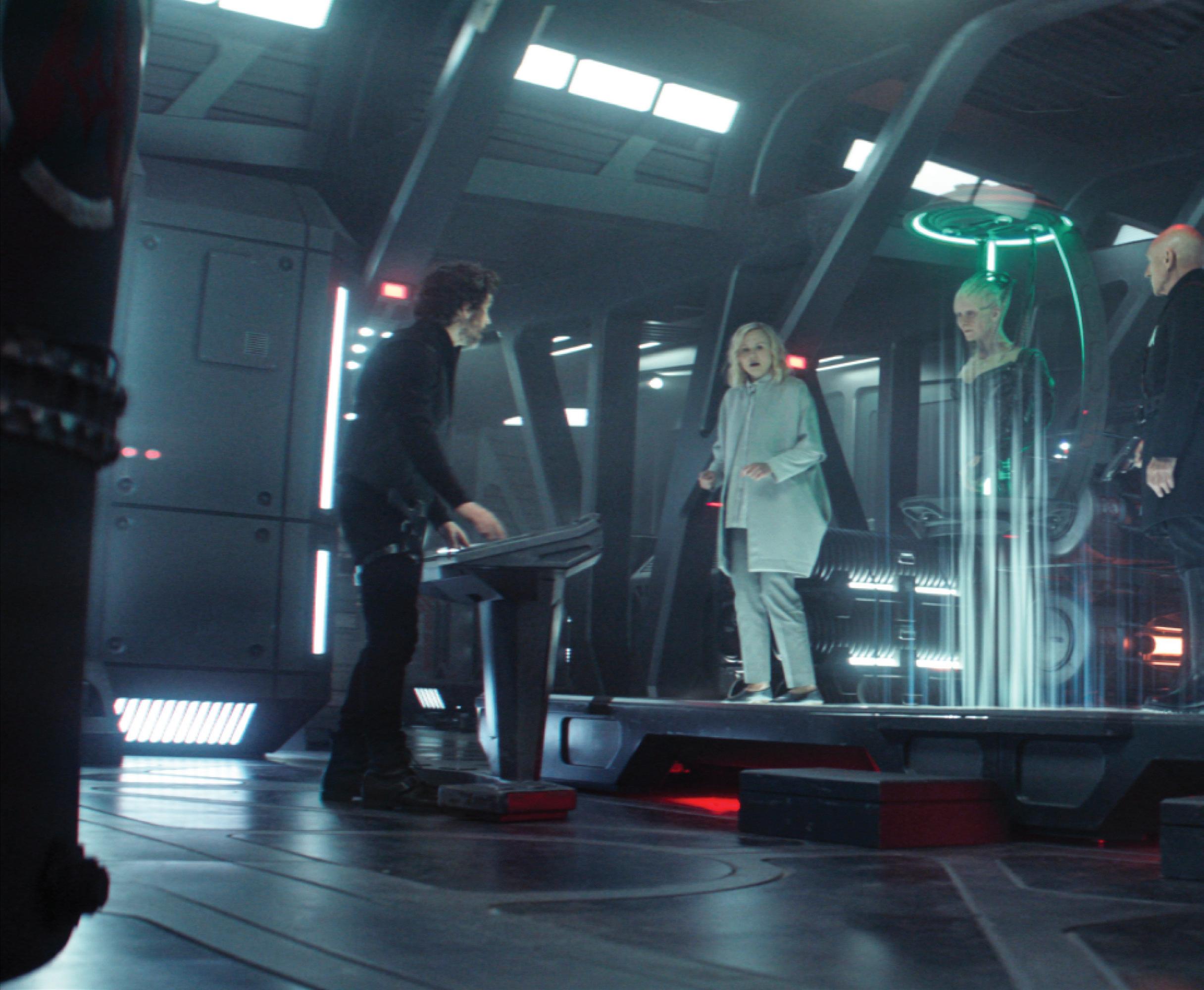
FEATURE 01
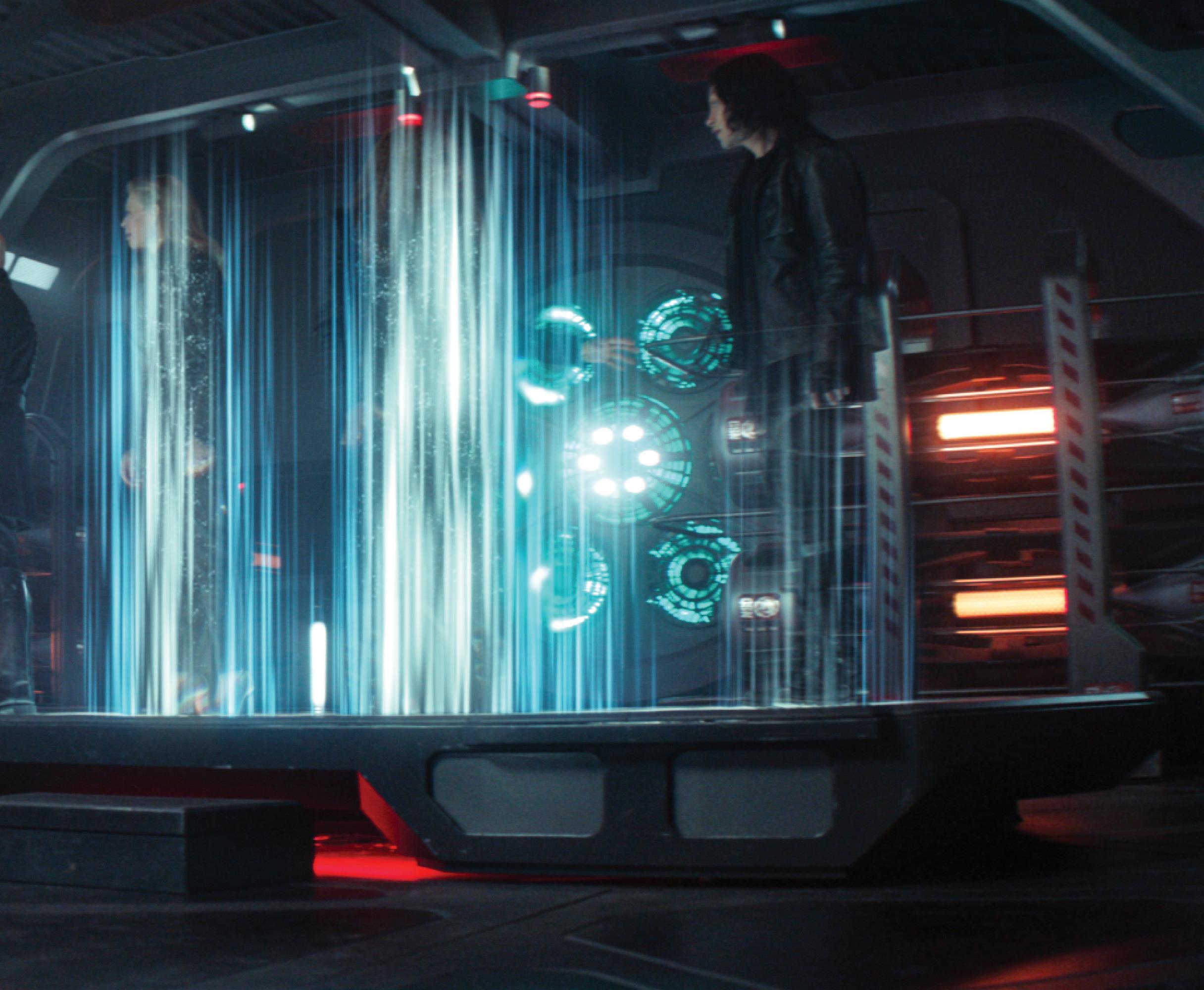 Crescenzo Notarile, ASC, AIC, and Jon Joffin, ASC, chart a visual journey beyond Federation borders for Star Trek: Picard
by Kevin Martin
Photos by Trae Patton / Paramount+
Framegrab Courtesy of Paramount+
Crescenzo Notarile, ASC, AIC, and Jon Joffin, ASC, chart a visual journey beyond Federation borders for Star Trek: Picard
by Kevin Martin
Photos by Trae Patton / Paramount+
Framegrab Courtesy of Paramount+
FRONTIER FINAL THE
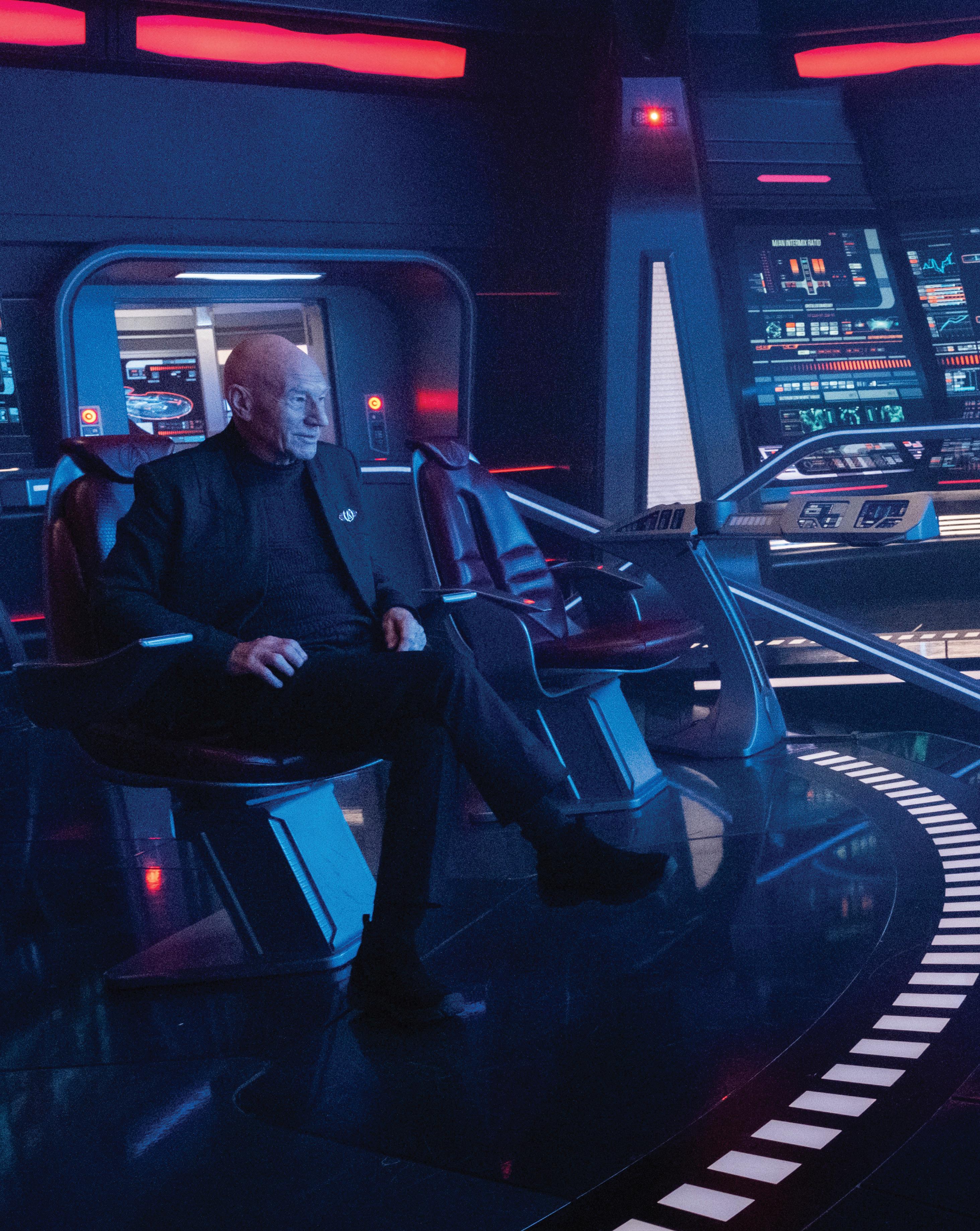
FRONTIER

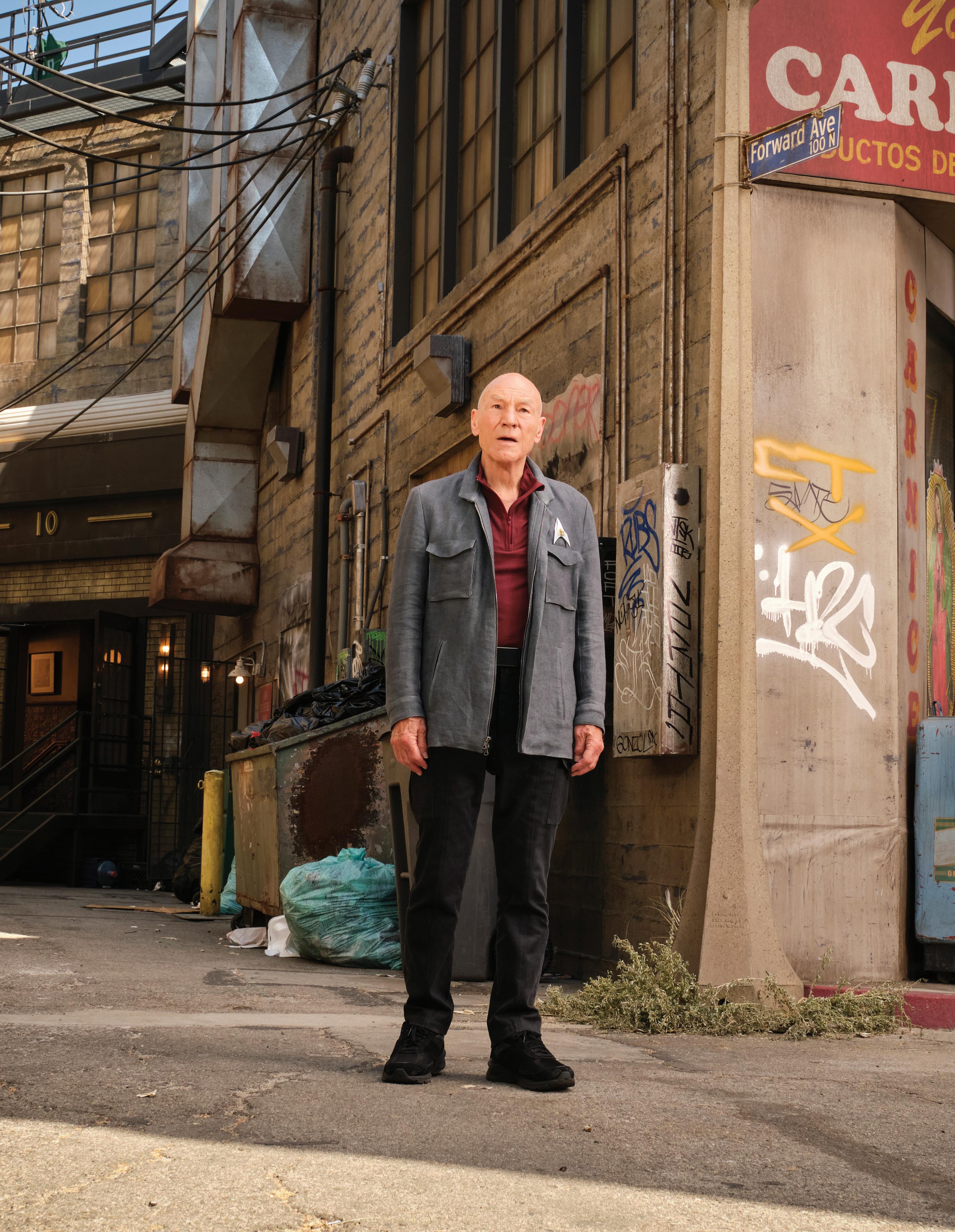
Counting animated as well as live-action series, Paramount+’s investment in the Star Trek brand currently numbers five properties, with more currently in development. While Star Trek: Picard, starring Sir Patrick Stewart, initially eschewed a reunion of Captain Picard’s The Next Generation cast members, Season 3 of the series manages to gradually reunite them – along with some other surprising returnees –in what showrunner Terry Matalas has described as a 10-hour feature.
While Crescenzo Notarile, ASC, AIC, was a newcomer to the science fiction genre before shooting Season 3 of Discovery [along with Glen Keenan, CSC, and Franco Tata], his visual style had made an impression on director Olatunde Osunsanmi when the pair teamed up for an episode of Fox’s acclaimed drama, Gotham . So, when Osunsanmi moved over to Discovery as a director-producer, he tried to recruit Crescenzo (first-name only please!) to shoot Seasons 1 and 2. “We clicked on Gotham over how we looked at using light and smoke to bring beautiful directional sources into frame, and [Osunsanmi] thought that would be great for Trek, ” recalls Crescenzo, who could not accept the entreaties until Season 3 owing to his continuing commitment to Gotham
“When I finally went up to Toronto,” he continues, “I started thinking about how to bring a bold, audacious approach to outer space. I had been lighting with 5K Xenons to get big shafts of light, but there was some question about justifying this look within a sterile starship – and I considered how much creative license I could take. I decided that when the ship is near a moon or planet, that would justify a soft and cooler reflected source coming through the windows. And when the sun was outside, that enabled me to go warmer in hue and deliver the harder shaft of light.”
The plan was for Crescenzo to shoot Discovery’s fourth season and then move over to the first season of Strange New Worlds. But a more urgent situation arose when producers approached him about Seasons 2 and 3 of Star Trek: Picard , which would be shot consecutively, with both DP’s from Season 1 no longer involved. “It was a tough decision, but being able to go back to my home in Los Angeles for the first time in seven years was a big factor,” Crescenzo acknowledges. (Picard is shot in Santa Clarita, unlike the Canadashot Discovery.) “Also, in all honesty, being in on the culmination of Jean-Luc Picard’s space odyssey sounded too good to pass up.”
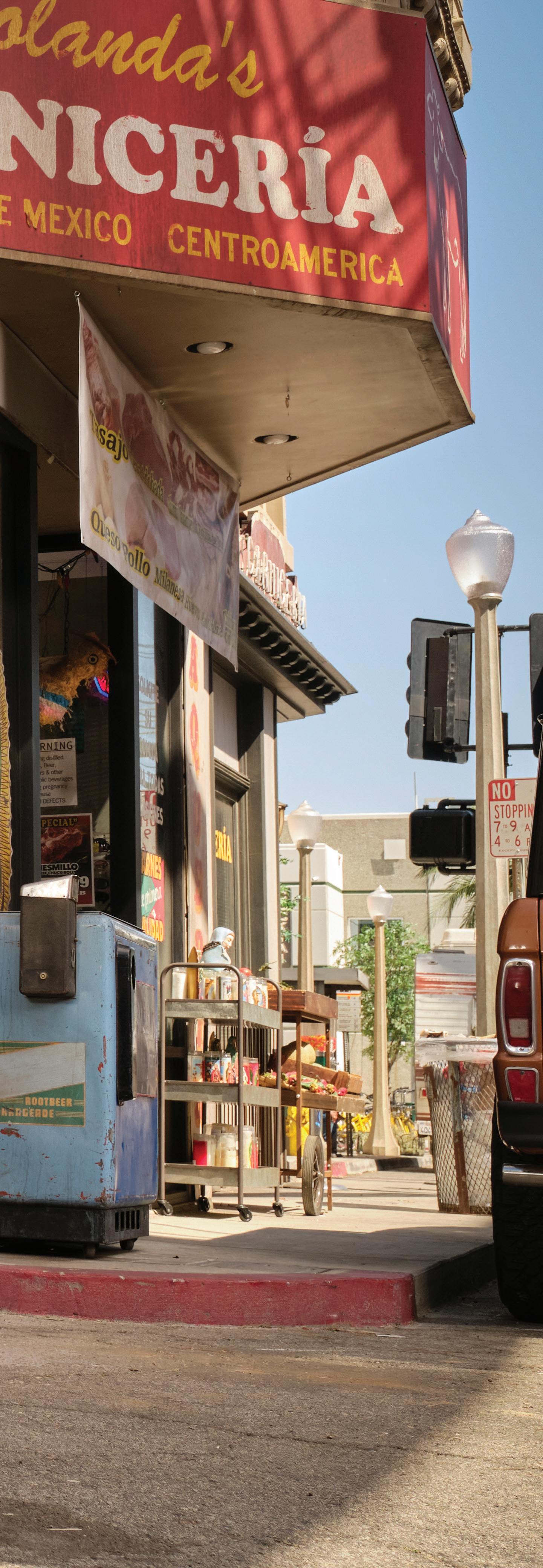
31 APRIL 2023
Picard’s brain trust includes Executive Producer Alex Kurtzman, Showrunners Akiva Goldsman and Terry Matalas, and Producer-Director Doug Aarniokoski, who shares that “we all pitch in to help new directors get started. By shooting in blocks of two episodes for each director, they have more time to get immersed than would otherwise be possible. My job is primarily about shepherding them with support and answering their questions. Terry tells them where their episodes are at tonally, while I talk more in cinematic terms, and Alex always asks: ‘What does the shot make us and the audience feel?’ Production designer Dave Blass takes on the aspects pertaining to sets and location. With all this support, they can hit the ground running and feel secure about their approach.”
Aarniokoski directed both season openers. “It makes sense since I’m already there in discussions with the designers and crew,” he continues. “And it helps make sure we put our most prepared foot forward. I had the good fortune of working on Discovery since Season 1, which is where we learned how to efficiently shoot the starship bridge sets. They had built a platform system spanning the front end of the set, so even though the set had various levels, this created a flat area where dollies could be used. We built these jigsaw-style pieces for Picard as well, mating them against the platforms that created a kind of dance floor upon which we could move multiple cameras during a take.”
The Star Trek franchise has always been more than just its starships (although some Trekees might dispute that). “We had very specific ideas about differentiating the looks for each season,” Aarniokoski asserts. “Season 2 was heavily out on location, mostly with scenes taking place in the now instead of centuries later, plus continuing action on the first season’s La Sirena freighter. That let us vary the look of things from traditional starship-based storytelling, which we then got back to with Season 3. And since we had a large soundstage, we could vary how we shot the ship interiors, using long lenses inside when called for.”
Production Designer Blass adds, “I told my team up front to take the word ‘fantasy’ out of their minds, because Star Trek isn’t fantasy – it’s a drama with sixty years of history behind it that just happens to take place in outer space. In the past, some designers have looked at Trek with an eye toward making it their own. I thought it more important to deliver the best possible version of what fans would expect to see.” To that end, Blass managed to recruit The Next Generationera art-department alums Michael Okuda, John Eaves, and Doug Drexler. As Blass adds: “We didn’t want to destroy what came before, so with their input, we were able to evolve it, maintaining continuity with The Next Generation.” Even the various spaceship exteriors were
all fully designed and textured as 3D models within the art department, with Drexler handing those off with full tech drawings to various VFX vendors.
Season 2 finds Picard transported from a Federation ceremony into an alternate reality where his culture has turned grotesquely fascist. Blass says, “We used the same Disney Concert Hall location for both realities, but played with fascist iconography, including redand-black banners, to suggest the nature of the timeline changes.” Attempting to put time back on track, Picard and his crew travel back to the early 21st century. “My take was, we’re not traveling back to our present-day,” Blass shares. “Instead, we’re returning to an alternate Trek present that we’ve already seen a bit of in a past Deep Space Nine episode [“Future Tense”] that was prophetic in a lot of scary ways – specifically the homeless problem, plus how media companies control things. We tried to address some of that when approaching the contemporary scenes.”
Crescenzo and Season 2 Co-Director of Photography
Jimmy Lindsey, ASC, tested the Cooke SF’s and Panavision T series glass. “I preferred the Panavision T glass because of their presence,” Crescenzo says, “with a faster edge roll-off into softness – bringing out the center, a lens coating that enhances angelic flaring of light, richer contrast and puts a hue of green into the blacks – which I love. The look wasn’t as clinical, though we bolstered that difference through various kinds of diffusion to soften certain dynamics of the frames.”
Prep work was done at Panavision Woodland Hills and handled by A-Camera 1st AC Chad Rivetti, who says the DP’s chose the ALEXA Mini “[as] the small lightweight camera body was good for quickly changing from Ronin to handheld or Steadicam. We also used the M7 Evo head on the dolly a lot. During prep, we were able to fine-tune these configurations and develop shortcuts to make the changeover as quick as possible.”
The four keys to good cinematography, according to Crescenzo, are lighting or the absence of lighting, composition, color, and movement, and these tenets are always figured into his approach. He was supported on set by DIT Ryan Kunkleman, who notes that “we wanted the best look for the dailies, so [Crescenzo and I] stood shoulder-to-shoulder on both seasons, working together to figure out the best way to go about creating CDL’s, so post will see what we were doing on set.” Shooting two cameras was the norm in Season 2, with A-Camera Operator Jody Miller and B-Camera Operator Brian Bernstein sometimes aided by C-Camera Operator Ivonne Hecht.
Shooting Season 2 of Picard during the earliest stretch of COVID was challenging.
“My number one responsibility is to not slow down production,” Crescenzo declares. “The experienced professional makes a good call when deciding what to give up on and what not to. It was so frustrating to work
32 APRIL 2023
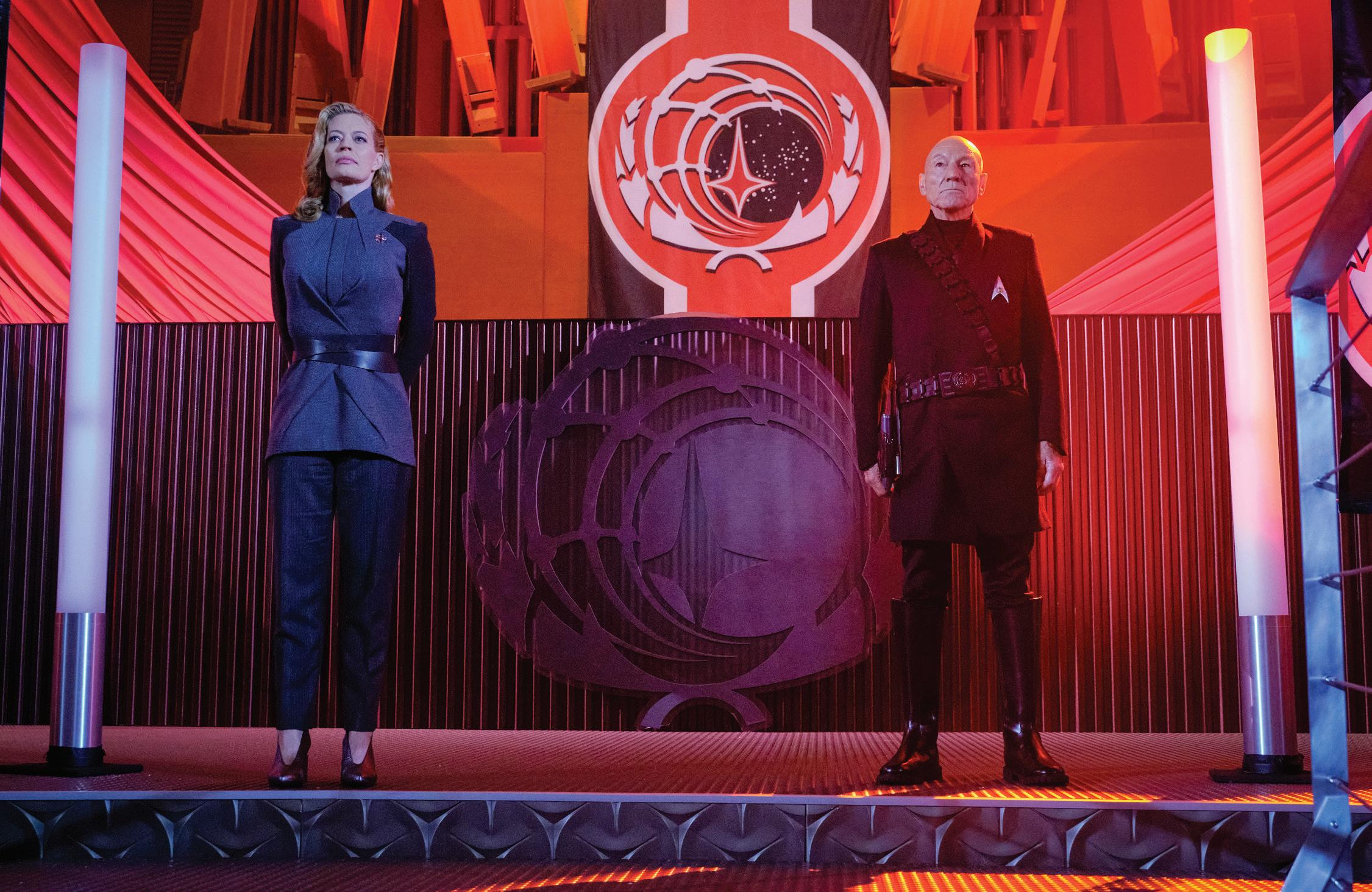

33 APRIL 2023
REGARDING CHALLENGES UNIQUE TO SHOOTING ANY STAR TREK PROPERTY, DP CRESCENZO NOTARILE (ABOVE) SAYS: “I FOUND THE DIFFERENCES BETWEEN SPHERICAL AND ANAMORPHIC LENSES WAS MORE SIGNIFICANT, BECAUSE ANAMORPHIC BOKEH IS OVAL, NOT ROUND SO THE PINPRICKS OF STAR PLANET LIGHT WOULD ALSO GO OVAL. TO COMBAT THIS ERROR OF DISTRACTION, I WOULD TRY TO SHOOT WITH A HIGHER STOP AND KEEP THE BACKGROUND SHARPER, AND THE BOKEH OF PLANETS AND STARS AS ROUND AS POSSIBLE."
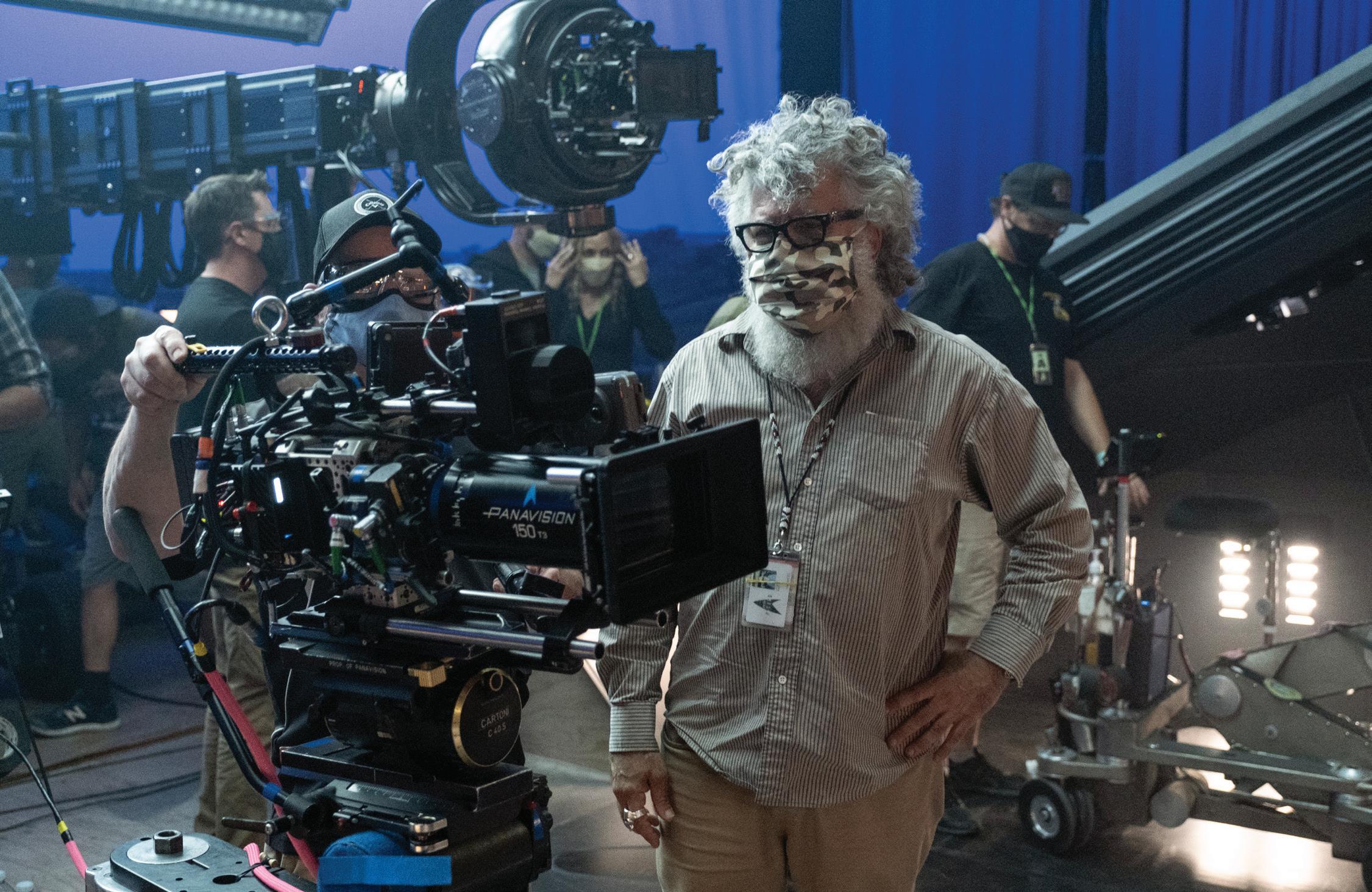

34 APRIL 2023
efficiently at the start of Season 2 because the standins were wearing masks and face shields. Lighting a face means having to be able to see their eyes and bone structure, but this was like lighting somebody in a space helmet, with reflections hiding the very element I was trying to expose for! Ultimately, you have to play it safe in lieu of time, and go softer, and more diffused, and that sometimes compromises the drama of the lighting, when you want to chisel it to be more defined. Halfway through Season 3, the protocols changed, which helped, but this was all very daunting. I have a rep for lighting women from my music-video days with Beyoncé, Mariah Carey, and many others, so I diligently tried to protect and do right by actresses Michelle Hurd and Jeri Ryan in spite of all this.”
Other Trek-specific difficulties also became evident.
“I found the differences between spherical and anamorphic lenses was more significant, because anamorphic bokeh is oval, not round,” Crescenzo continues. “So, with starfields outside the windows, the pinpricks of star planet light would also go oval. To combat this error of distraction, I would try to shoot with a higher stop and keep the background sharper, and the bokeh of planets and stars as round as possible. If I couldn’t accomplish that, then I’d figure out in advance and have my 1st AC order sphericals for the day.”
Season 1 had briefly featured one starship bridge, but, for two episodes in Season 2, on the Stargazer bridge (revamped and further developed into the Titan’s bridge for Season 3), Blass went all out. “The paint was barely dry on what we had done, when our thinking suddenly had to go toward turning it into the Titan, ” the designer recalls. “Since this was a different class of vessel, we needed new graphics to represent that aspect, which meant settling on the ship’s look quickly, since generating playback graphics can take days or weeks. We had thought about using an LED wall for the viewscreen, but then the question became: ‘Hey there guys, can you tell me exactly what you need to be seeing? If not, this wall is just going to get turned into the most expensive electric green screen in history.’”
Crescenzo credits Chief Lighting Technician Len Levine and Lead Lighting Console Programmer Josh Thatcher with designing and rendering the intricate bridge displays. “Josh dealt with more than a thousand lights from his board and could create dynamic and frenetic lighting patterns, letting us achieve the needed intensity and visual dramaturgy for various dramatic moments in the vessel control rooms,” Crescenzo recounts. “Lighting the ship was not as easy as it looks, as there are over a 1000 lights at your fingertips on the board, pulsing, flashing, chasing, changing colors, lifting keys, dropping fills, all on the fly, shot by shot, and within each shot, all depending on what kinetic
lighting is happening outside the windows via VFX, then marrying the interactive lighting within the ship – all while keeping all casts faces beautiful and strong. When we get into medium and close shots, I find that I can chisel the drama by adding negative fill and turning set-embedded lights off. We can bring supplementary lights in and place them lower on stands to get direct light into the actors’ eyes, which isn’t possible during the wides.”
The original plan was for an episode rotation that allowed Crescenzo to shoot the concluding episodes of Season 3; but when Lindsey left, things changed, forcing him to shoot the end of Season 2 instead (and, consequently, not opener to Season 2). “With Season 3, there is a huge difference in that we are returning to a Federation starship as the base for most of the action,” explains Aarniokoski. “We aimed for a cinematic look that differentiated us from the other two current liveaction Trek series. So, we brought in Jon Joffin [ASC] to implement a new look in the first two episodes.”
Joffin describes Rogue One as the first Star Wars film he connected with visually, owing to its sense of realism. “That’s the broad stroke I led with on this project,” he shares. “I was brought on for some of the work I had done with a heightened look, using very subtle soft light on faces. Whenever there is a bright key, to me it looks ‘lit,’ so I try to bring the key light down to appear natural and real.
“Because I came on so late, there wasn’t the time to work with Crescenzo in advance,” Joffin adds, “so I relied on what I had discussed with Doug and Terry.” Part of that involved the use of smoke on stage, “which helped desaturate the background and put more of an emphasis on our characters,” he continues, “keeping the foregrounds snappier and more colorful while also taking the digital edge off our capture. We did an early scene in the Picard mansion that let us showcase this approach. As scripted, it was to all take place at night, but I pleaded to start it in the afternoon with sunlight streaming through the windows so that we have a progression into night from a kind of golden look.”
Joffin praises the work of B-Camera Operator Joey Brian Morena, “who would make an amazing A-cam op as well,” he adds. “But having him on B was great because Joey always finds great shots and consistently delivers. As for [1st AC] Chad [Rivetti], I found him brilliant, not just pulling focus but the way he runs the department.”
Rivetti says Joffin wanted to shoot wide open as much as possible. “So, Season 3 was one of the more challenging shows I’ve done.” While Rivetti still uses a CineTape and a steel tape measure to check distances, he also employs a 7-inch SmallHD Cine7 with Teradek 4K wireless video. “The monitor is mounted to my Preston FIZ 3 focus handset,” he describes, “giving me the freedom to follow the camera and have the best
35 APRIL 2023
view of the actor and camera moves. We did a lot of push-in to close-ups on actors’ faces, wide-open on the 135 millimeter, and pushing from 10/12 feet to 4 feet. Jon liked the look of a longer lens, often opting for doing wides on a 60- or 75-millimeter set up further away.”
Joffin also used an elaborate array of diffusion to light close-ups on the bridge. “All the built-in set lighting gives you ambience, but it doesn’t light faces,” he states. “We brought in huge soft sources in the foreground, which made the set unrecognizable because these 10-by-10 and 10-by-20 frames would be hiding most of the bridge consoles and walls when we lit for the actor.” Joffin also introduced visual aberrations into the image through the use of a Lensbaby Omni, which, he says, “lets you mount little crystals on the matte box filter holder so you see some rainbow colors through them. There were four or five made, and we used them frequently on the bridge.”
As the creatives wanted Season 3 to look cinematic and rich, Joffin explains that “the LUT we had basically crushed everything. Shooting with ½ to 1 stop ND, we could dig more detail out of the darkness if need be. Ryan [Kunkleman] was very good at pushing that,
which is quite an art since you have to watch the highlights. I hadn’t shot with T-series lenses before, but Dan Sasaki told me they were designed to be shot wide-open, so I was at T2.3 most of the time.” Joffin also varied his shutter – but not for the usual no-blur benefit. “One thing I do is play with the shutter for the sake of exposure,” he smiles. “I always want to shoot wideopen, and while ND takes up a full stop, sometimes I want to open more, so closing the shutter from 144 to 270 degrees in increments can achieve that.”
Season 3 A-Camera Operator Nicholas Davidoff shares how Crescenzo and Joffin both faced extra layers of complexity. “Under normal circumstances, you light real-world sets and it can be routine,” Davidoff describes. “But aboard starships with dozens of monitors everywhere and miles of cable linking them to controllers for playback, a huge, coordinated effort was needed to ensure the proper displays were timed at the right moments during the take and shown at the necessary intensity levels which were always changing. Reflections were a constant problem with so many screens and glass everywhere. Another unique challenge for the DP’s were the arrays of pulsing, colored lights designed throughout all the ships. During the take, these practical lights were constantly dimming

36 APRIL 2023
and fading in color and intensity depending on the status of the ship. All that takes time to program and test and under the very tight schedule we had, let's just say things never got boring. We were always charging ahead on all cylinders, with only a few takes to get it right.”
Davidoff ended up going handheld throughout much of Season 3.
“It was to convey a visceral feel and amplify the energy of what was going on,” he continues. “I spent many hours in various handheld modes — easy rigs and butt dollies and on the shoulder — as we got in close to the characters, but also as we moved around the various decks and through the corridors of the various ships. Lengthy dialogue passages were often covered somewhat classically, but then you get an ungrounded kind of feel with closeups when the characters are in each other’s faces.”
For scenes on a wild planet of criminals, production shot nights at Blue Sky Ranch. Blass’s art team built a city with foreground wires going across the sky, and LED strip lights, so when Davidoff would tilt up, “it isn’t just a classic ‘all CG’ reveal,” he explains. “While there are distant city elements added in post, a lot was there incamera. We also built a cable cam to fly lights to suggest

ships passing overhead.” Joffin enlivened the cityscape by using the IVL Square system, which Len Levine had found, creating a mysterious beam of light that gave additional perspective to the environments. When a character experiences a drug reaction, Joffin trotted out an old favorite. “I had this cheap Helios 44 lens that is very blurry and let me swirl the background.”
Joffin characterizes these scenes as a “crazy rush, but the crew remained up to the challenge, even when rapidly improvising a look,” he continues. “We had a scene in our ship corridor set with a character describing a planet with blossom trees and how the blossoms decay. It read like a dream, but we couldn’t afford to realize it with VFX. Since Terry was also directing, I pitched him and Doug on a visual treatment. We removed solid elements in the corridor to leave window-like spaces, through which we brought a sunlight effect. Len Levine and the rigging crew [including Key Grip Maxwell Thorpe] arranged for a truss that could be lowered to bring that sun source down in order to achieve an actual sunset. Then, when flora is mentioned, we blew all these red blossoms into the hallway, practically, before dimming the sunlight as his memory turns dark and changed the color temperature from warm sunlight to something bluer. That’s the kind of thing you might
37 APRIL 2023
work out over the course of a day – but we only had three hours, and yet somehow managed.”
Crescenzo’s Season 3 episodes included a pair for director Jonathan Frakes, who also plays Captain Riker. Franks insists that “the privilege and opportunity to prep with your DP on these high-priced series is invaluable. On other shows, you’re lucky to be able to call your DP and offer to take him to lunch on Saturday just to get some time together before shooting,” Frakes says. “The relationship between the cinematographer, key grip, and the gaffer is, in my opinion as director, the most important thing to be watching, because you can have the most highfalutin plan, but it is meaningless without the ability to execute.
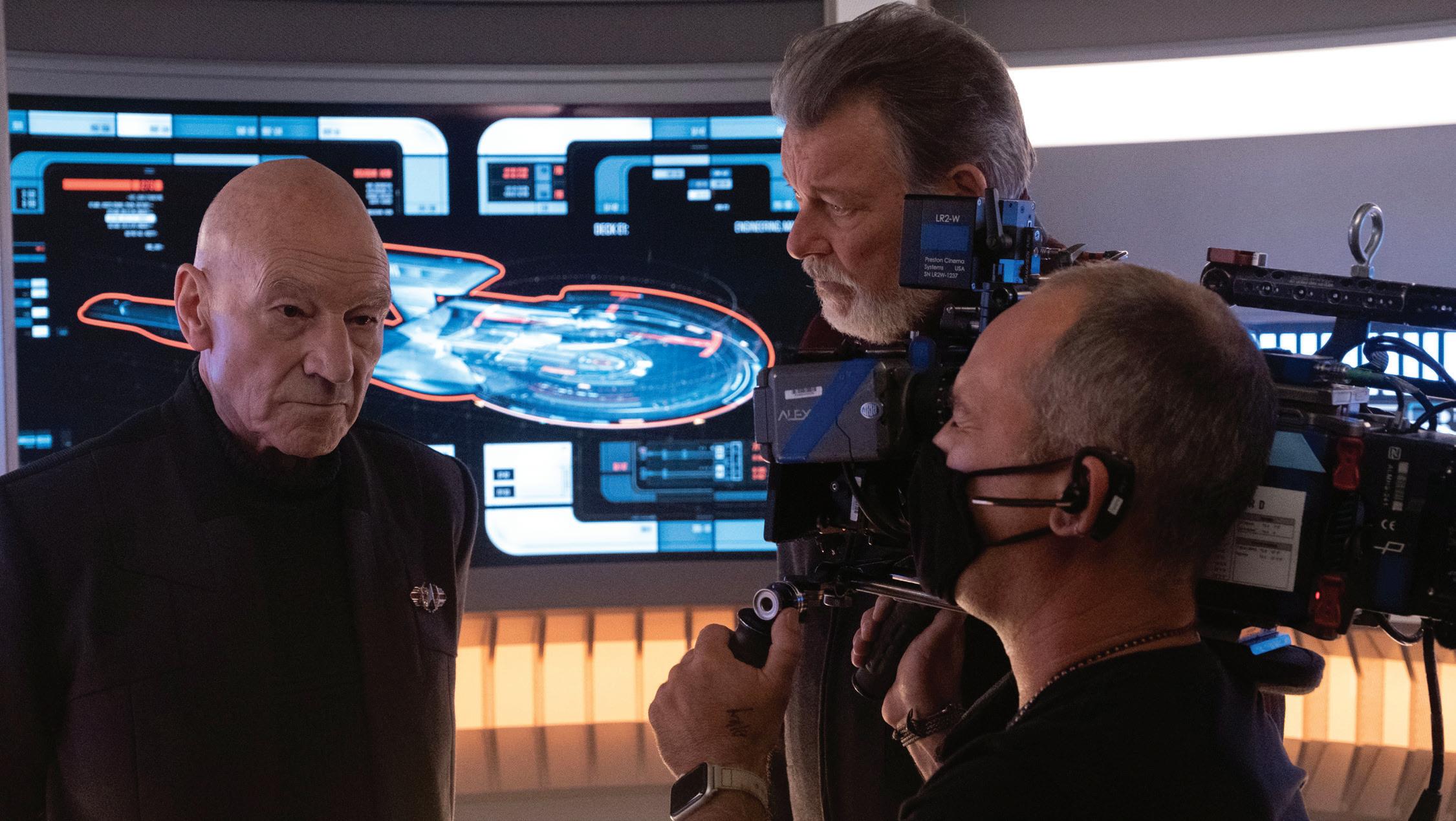
“Plus, we had an advantage in that you just can’t find a bad angle on that bridge,” he adds. “Crescenzo and I are both big fans of foregrounding, and we each remind the other about it when we’re working. That’s become a big part of Trek ever since J.J. [Abrams] took over the film franchise in 2009. The lens flares are one of those aspects, and we both got our hands slapped for leaning into them so heavily because we love them.” [Laughs.]
Frakes’ challenges were compounded in that his character, Riker, is featured in both episodes. “I really
counted on Crescenzo to let me know if we needed another take,” he admits. “[Aarniokoski] was another resource whom I could rely upon. While my instincts are pretty good regarding my acting, it was great having such trustworthy resources backstopping me if I missed something. I also love how Crescenzo takes such good care of the actors, especially the actresses,” he chuckles. “He is a force on that set, so people love him. And he’ll try anything. He even let me sneak a third camera in once.”
Crescenzo felt that Frakes’ on-set ethos –directors handle staging and performance while cinematographers direct the photography – bore fruit. “There are always private meetings addressing the proper tonal qualities and visual arcs for scenes, and that starts during prep and sometimes takes us through the last moment on set,” Crescenzo describes. “But most of the time, directors are rightly concerned with the attitude and emotion of their characters and leave the tech details to me. That means my job as a DP is to interpret the visual emotions the director is trying to convey. For instance, when you dolly in, that takes you inside a character’s mind and heart, and you receive something of what they are feeling or thinking. Wielding so powerful a tool has to be done wisely when it comes to manipulating the hearts and minds of
38 APRIL 2023
OPPOSITE/ABOVE & BELOW: JON JOFFIN, ASC, WHO SHOT EPISODES 1/2 OF SEASON 3 USED AN ELABORATE ARRAY OF DIFFUSION TO LIGHT CLOSEUPS ON THE BRIDGE. “ALL THE BUILT-IN SET LIGHTING GIVES YOU AMBIENCE, BUT IT DOESN’T LIGHT FACES,” JOFFIN DESCRIBES. “SO WE BROUGHT IN HUGE SOFT SOURCES IN THE FOREGROUND, WHICH MADE THE SET UNRECOGNIZABLE AS THESE HUGE [FRAMES] WOULD BE HIDING MOST OF THE BRIDGE CONSOLES AND WALLS WHEN WE LIT FOR THE ACTOR.”
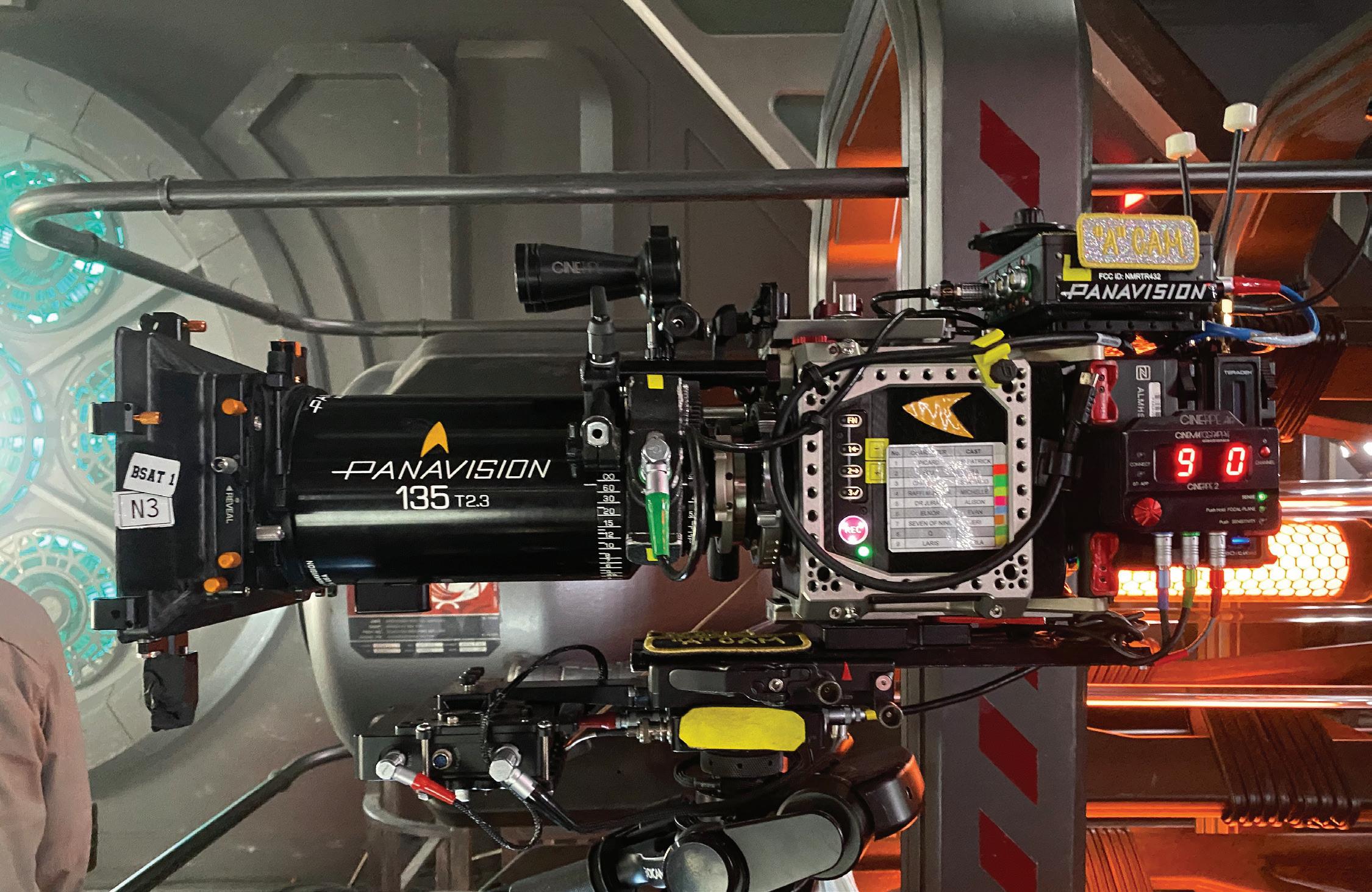
PHOTOS THIS PAGE COURTESY OF CHAD RIVETTI

39 APRIL 2023
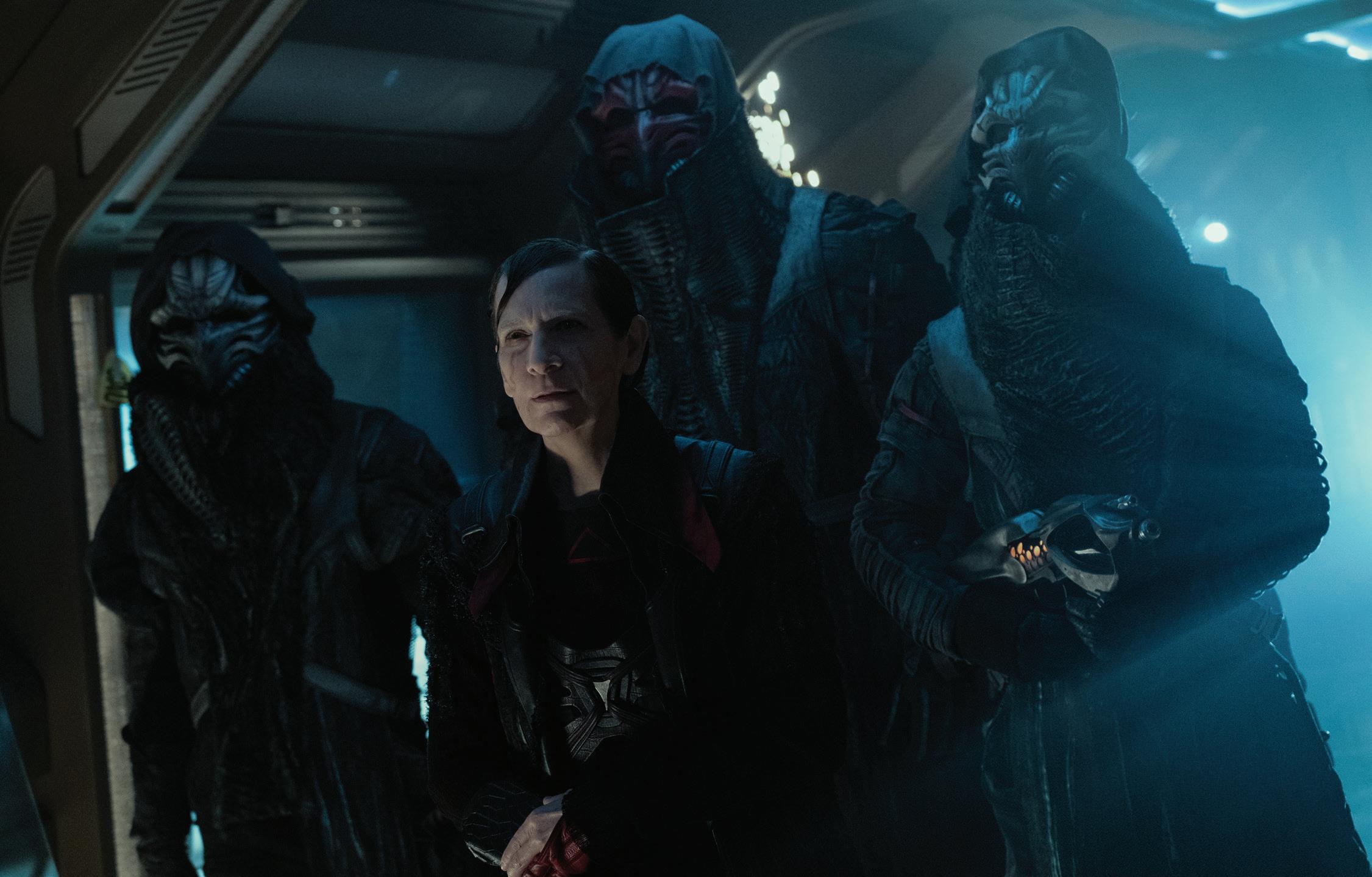

40 APRIL 2023
the viewers. This is the magic of storytelling through filmmaking.”
Since the starship spends much of the season playing hide-and-seek within cloudy formations in space, Crescenzo did some homework, Googling nebulas and amassing a look-book of styles and colors. “Seeing the variety of nebulae made me realize there was a rainbow of color and lighting possibilities,” he states. “I could use kinetic light to fall on the faces of the crew, chasing or swirling or pulsing the light at key moments. VFX Supervisor Jason Zimmerman and I would talk about this and stimulate each other with directions. Sometimes he had a specific idea that I could adhere to, other times, it was still wide open and he would say I could do what I liked and he would match to it. There’s a huge collaboration with VFX, more so than other shows.”
This extended to practical FX, like explosions on set. Crescenzo adds, “I would check with Sam Dean, who handled pyro, to determine the parameters on these blasts. A lot of times, I would have beveled glass, plexi tubes, or streak filters to put in front of the lens and create some refractory elements, giving the shot extra flare, bloom and streak. Sometimes I’d change the shutter, going to 45 degrees instead of 180, which made everything seem more frenetic. The sparks almost vibrated, they had so much more presence.” Crescenzo also employed day players Brooks Robinson and/or Peter Mercurio to operate a third camera during this and other action scenes, while operator Kris Krosskove
– a Trek veteran dating back to Deep Space Nine – was a familiar face for Next Generation actors in one episode.
In that show, as the Titan engages in a mismatched battle with Shrike , commanded by Vadic (Amanda Plummer), Blass did a “super-budget redress,” shooting on the unused lower deck of La Sirena. “Crescenzo and I discussed creating a Cucoloris-style screen that would
go between the ribs of the ship walls,” Blass describes. “It was a trick we used on game shows: crinkled metallic window screen, when uplit, would convey a vague shimmery texture. LED lightmovers enhanced this, suggesting that maybe the ship is liquid metal back there. He backlit that and pumped in smoke, which got us the rest of the way there.”
Bass says it was great Crescenzo was onboard, “because a lot of people are used to doing things very high-tech these days, and they look at you weirdly when you offer solutions that cost four dollars and a roll of gaffer's tape,” he laughs. “Back when I worked with Roger Corman, he explained how Jim Cameron built a whole spaceship corridor out of McDonald’s takeout boxes. In a 3D printed world filled with LED screens, this kind of old-school approach sounds outlandish, but honestly, lighting a pan of water to reflect caustic shadows up into a set works just as well and much more quickly than relying on tech equivalents.”
Nostalgia was not only a factor on set, but also on screen for Picard.
“Every project has a unique signature,” concludes Davidoff, “and seeing, firsthand, the chemistry on Picard – and beyond that, the camaraderie – with the original cast members was a trip. More and more of The Next Generation cast got added as the season went on, so for those days when everybody was there, the feeling was electric, even for someone like me who isn’t a full-on Trekkie. Terry promised Season 3 would be a Mad Max -style thrill ride through outer space. And they achieved that.”
Aarniokoski concurs, adding: “This love letter to The Next Generation was highly charged in terms of everybody being fully engaged. Where’s it going from here; is there going to be a spinoff? That’s the question in the air, and we’re all waiting to hear about that future too – our phones are on.”
41 APRIL 2023
"I TOLD MY TEAM TO TAKE THE WORD ‘FANTASY’ OUT OF THEIR MINDS, BECAUSE STAR TREK ISN’T FANTASY – IT’S A DRAMA WITH SIXTY YEARS OF HISTORY BEHIND IT THAT JUST HAPPENS TO TAKE PLACE IN OUTER SPACE."
PRODUCTION DESIGNER DAVE BLASS
3 A-CAMERA OPERATOR NICHOLAS DAVIDOFF SAYS “SEEING, FIRSTHAND, THE CHEMISTRY ON PICARD – AND BEYOND THAT, THE CAMARADERIE – WITH THE ORIGINAL CAST MEMBERS WAS AMAZING. MORE AND MORE OF THE NEXT GENERATION CAST GOT ADDED AS THE SEASON WENT ON, SO FOR THOSE DAYS WHEN EVERYBODY WAS THERE, THE FEELING WAS ELECTRIC."
 SEASON
PHOTO BY MONTY BRINTON / PARAMOUNT+
SEASON
PHOTO BY MONTY BRINTON / PARAMOUNT+
LOCAL 600 CREW
SEASON 2
Directors of Photography
Jimmy Lindsey, ASC (odd)
Crescenzo Notarile, ASC, AIC (even)
A-Camera Operator/Steadicam
Jody Miller
A-Camera 1st AC
Chad Rivetti
A-Camera 2nd AC
Amanda Darouie
B-Camera Operator
Brian Bernstein
B-Camera 1st AC
Joe Segura
B-Camera 2nd AC
Jordan Cramer
C-Camera Operator
Yvonne Chu
C-Camera 1st AC
Danny Brown
C-Camera 2nd AC
Koko Lee
Digital Loader
Nathan Mielke
DIT
Ryan Kunkleman
Digital Utility
Sierra Haworth
Additional 2nd AC
Max Weckbaugh
Still Photographer Trae Patton
SEASON 3
Directors of Photography
Crescenzo Notarile, ASC, AIC (odd)
Jon Joffin, ASC (even)
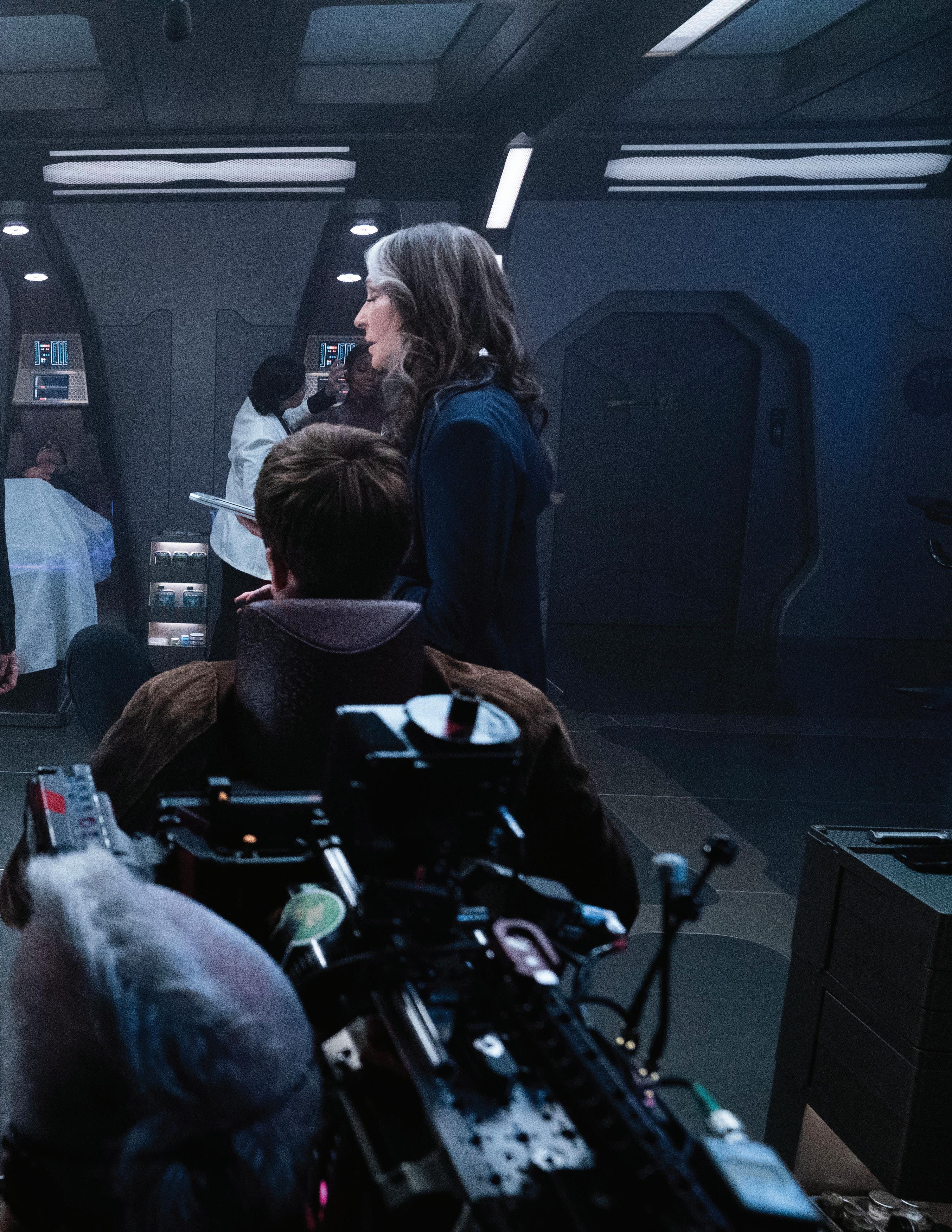
A-Camera Operator/Steadicam
Nick Davidoff
A-Camera 1st AC
Chad Rivetti
A-Camera 2nd AC
Betty Chow
B-Camera Operator
Brian "Joey" Morena
B-Camera 1st AC
Joe Segura
B-Camera 2nd AC
Jordan Cramer
Digital Loader
Nathan Mielke
DIT
Ryan Kunkleman
Digital Utility
Sierra Haworth
Still Photographer Trae Patton

FEATURE 02
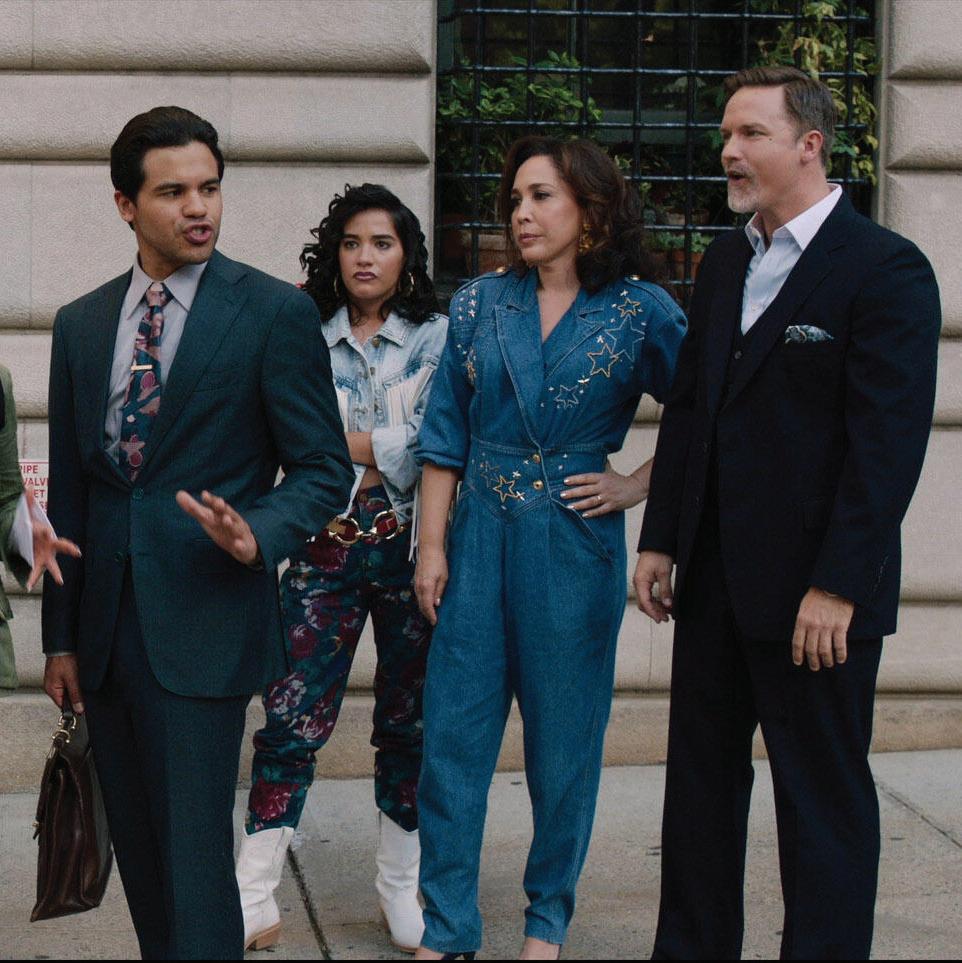 Director of Photography Ashley Connor listens to her “inner creative voice” for Hulu’s new musical series, Up Here
by Pauline Rogers
photos by Sarah Shatz & Patrick Harbron / Hulu
Director of Photography Ashley Connor listens to her “inner creative voice” for Hulu’s new musical series, Up Here
by Pauline Rogers
photos by Sarah Shatz & Patrick Harbron / Hulu
Framegrab Courtesy of Hulu
ONE THE HEART FROM
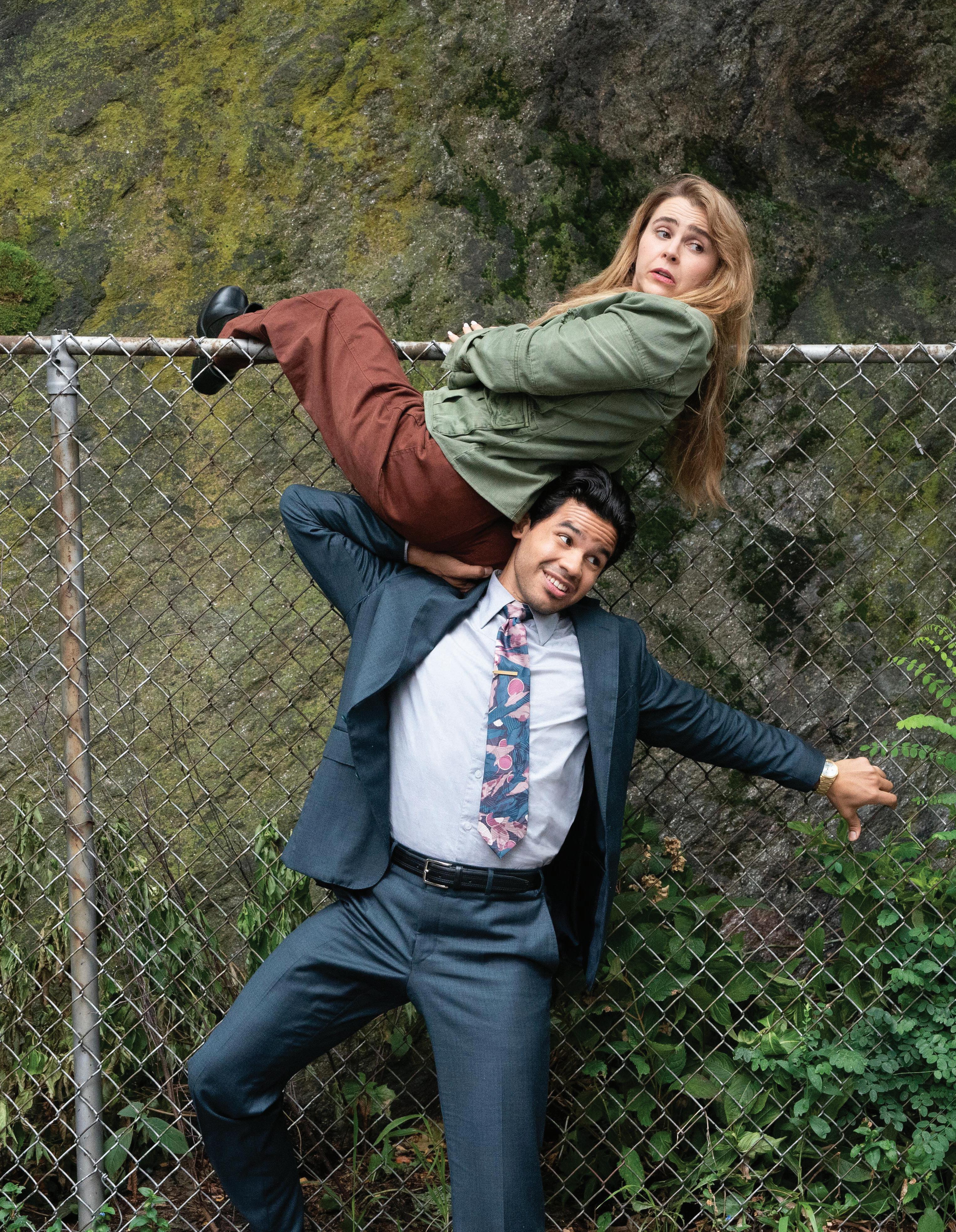 Photo by Patrick Harbron / Hulu
Photo by Patrick Harbron / Hulu
“It was early 2020, theaters were shut down, and I was trying to figure out what to do and where we could put our skills during this pandemic,” recalls multi-award-winning Director/ Producer Tommy Kail (Hamilton, Fosse/Verdon, Grease Live!). “I reached out to Bobby and Kris [Kristen Anderson-Lopez and Robert Lopez, Exposure, page 22]. We immediately began to talk about a show, Up Here, that they had shopped for years. Could we reconfigure from stage to long-form TV? They immediately agreed, and we contacted writer Steven Levenson (Tony winner for Dear Evan Hansen).”

Despite the team’s confinement to virtual meetings , their enthusiasm was palpable. “We immediately acknowledged that a musical on stage was a separate thing,” Kail continues. “Could we take what we loved about the theater, knowing when to move from speaking into elements that go beyond [emotionally] and that we could sing? It had to feel authentic and like a natural extension of what came before and after.”
Although original music written for television still seems rare, Kail’s experience with Fosse/Verdon [ICG Magazine June/July 2019] had already paved the way. And what originally began life as a theatrical musical with a focus on one character’s journey (and the voices in his head) was ultimately transformed into a TV series that included two original songs per episode, was set just before Y2K in New York City, and was about two individuals’ determination to live life to the fullest and find love at the same time, despite the voices (of friends, family, coworkers and adversaries) "Up Here" in their heads.
A critical element of the process was the style of capture. They needed a creative/crafts team who could steep themselves in the art of theater and music. “[Local 600 Director of Photography] Ashley Connor was the perfect match,” Kail continues. “She’s shot a vast number of music videos and cinematic pieces, and thoroughly understands how to make a piece of theater through lighting, staging and control of aperture. Ashley knows how to talk to a lighting designer and how to create a path that serves the story. Plus – she’s fearless. She also impressed us by bringing in a camera crew that was game for anything, from shooting on the streets of New York to working with moments where everyone [including crew] was moving the furniture as thoughts exploded from Miguel’s [Carlos Valdes’s] mind.”
Connor, who immediately warmed to the project, says the shooting time frame and the number of locations and musical numbers required a nimbleness and flexibility to pull off. Her commitment to practical effects also became a tenet of the show. And because Kail has a theatrical background, Connor knew it would be a different approach to prep.
48 APRIL 2023
UP HERE'S TONY-WINNING DIRECTOR TOMMY KAIL SAYS THAT LOCAL 600 DP ASHLEY CONNOR (ABOVE) WAS THE PERFECT MATCH. "ASHLEY HAS SHOT A VAST NUMBER OF MUSIC VIDEOS AND CINEMATIC PIECES," KAIL DESCRIBES, "AND THOROUGHLY UNDERSTANDS HOW TO MAKE A PIECE OF THEATER THROUGH LIGHTING, STAGING AND CONTROL OF APERTURE." / PHOTO BY SARAH SHATZ/HULU

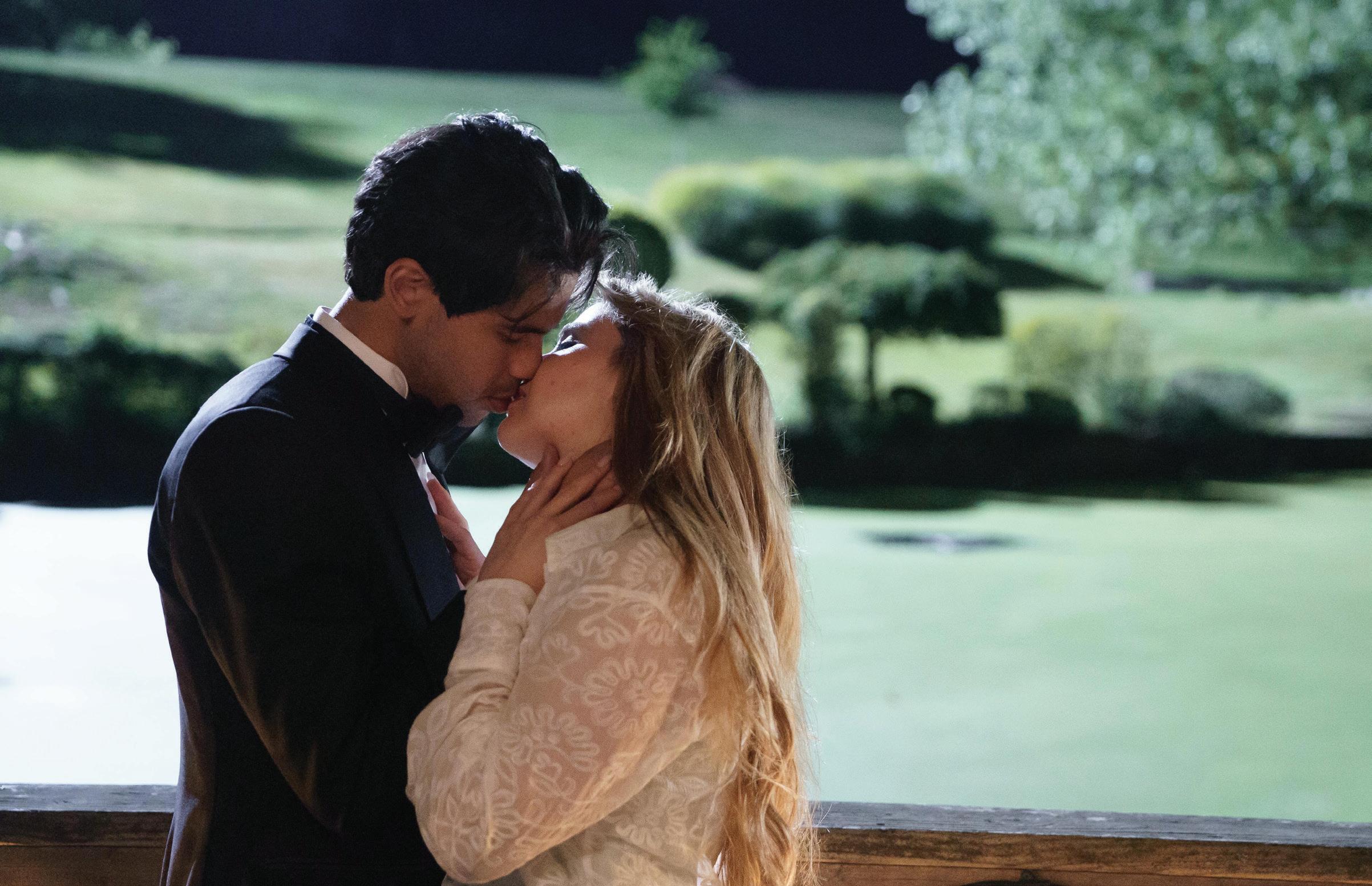
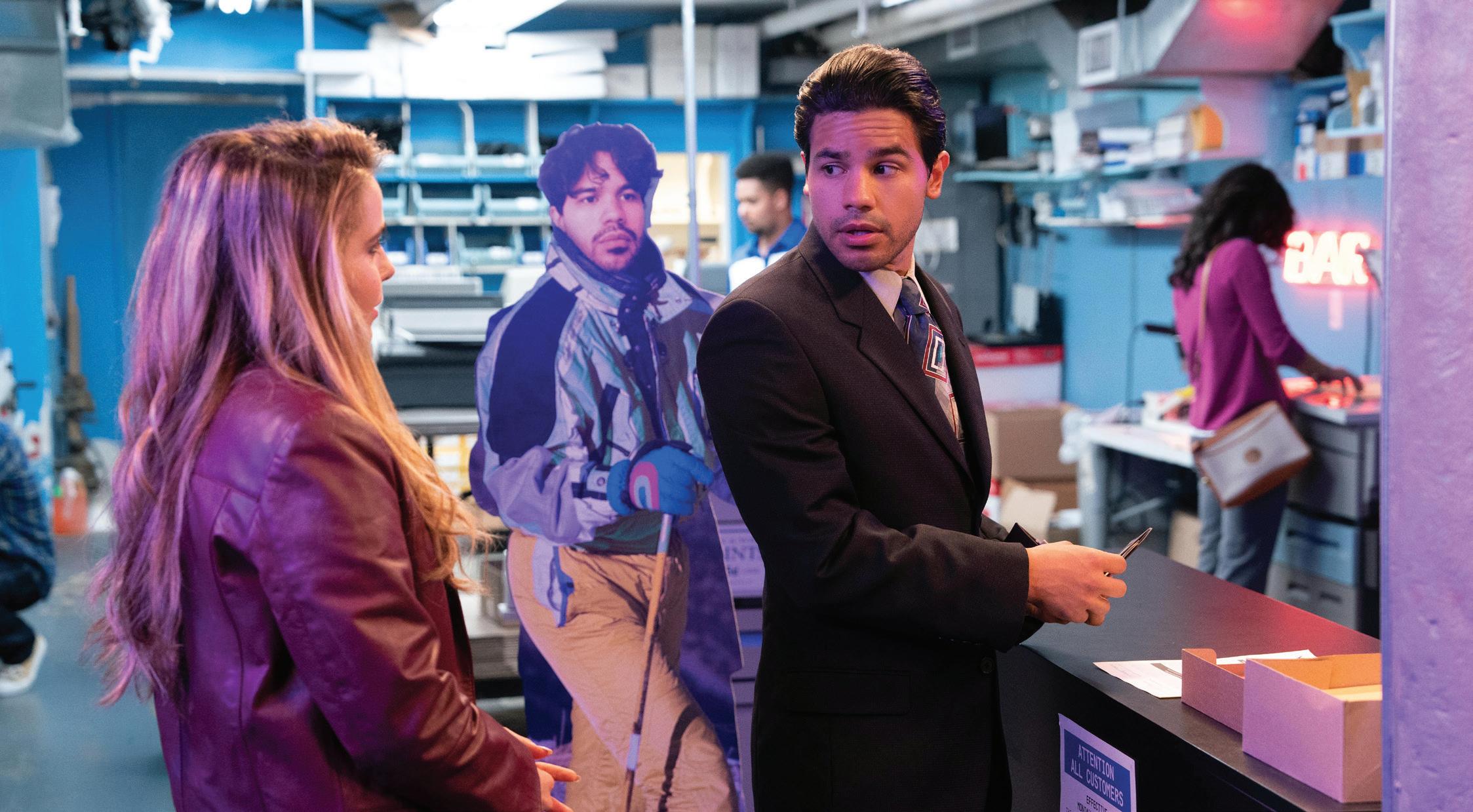
50 APRIL 2023
“Tommy would always tell me that in theater, the look comes last,” she recounts. “So, I knew we had common references and approaches, but exactly what we were going to do was a bit of a mystery. We felt that the story is so subjective to Lindsay [Mae Whitman] and Miguel’s experience, the photography must carry the weight of intimacy and realism to offset the tone of the musical numbers.”
Connor says they wanted viewers to experience Lindsay’s world expanding. “Light and color play a huge role in her world, so we wanted to be expressive with color and contrast,” she continues. “In addition, the production and costume design, beautifully done by Almitra Corey and Nicky Smith, had to complement and enhance our character’s internal struggle. Not only are Lindsay and Miguel falling in love, but we also want the audience to fall in love; we wanted to be in their heads and feel with them; if the show is about following our dreams, despite our fears and anxieties, then the camera work can be a subtle reflection of their emotional state.”
As for lensing, Connor wanted glass that would play nicely with a close-up. “I wanted romantic optics,” she explains. “I turned to the Panavision Primos [paired with ALEXA Mini]. We went through rounds of detuning and testing various alterations. Still, in the end, I opted for a cleaner look. I knew our schedule would be fast and furious, so I couldn’t risk certain distortions slowing me down.” As for Kail, Connor can’t say enough about his ability with actors. “Watching Tommy was an education. He respects their process, and watching him block and rehearse helped set the tone for the whole season. Our motto was simple coverage and blocking for the dialogue-focused scenes, and focus our more idiosyncratic elements for the musical numbers.”
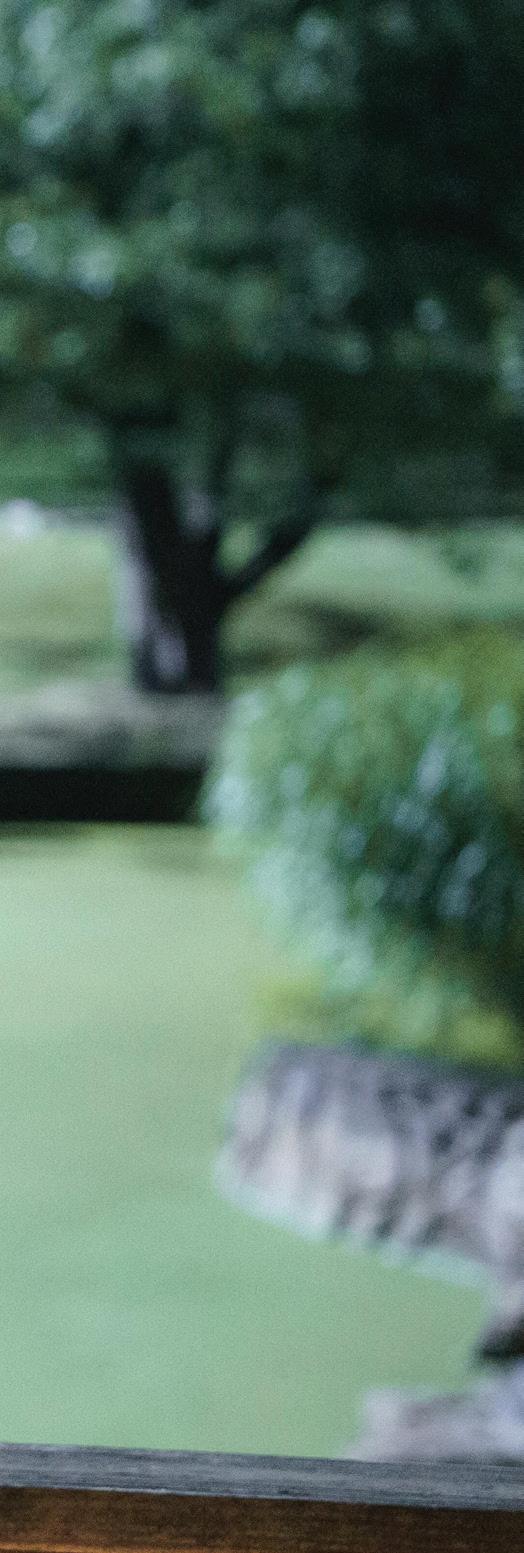
What makes Up Here so unique (aside from the original songs) are the “head characters,” i.e., the voices in Lindsay and Miguel’s minds. Connor says the best approach was to shoot everything twice so that in the edit the characters themselves could come and go. “It was a puzzle to figure out,” she admits. “I was so impressed with the AD department [led by 1st AD’s Becky Chin and Genevieve Palmieri-Metzger] and their scheduling.”
The style of the musical numbers was led by the many references discussed, including
Pennies from Heaven , One from the Heart , and Eternal Sunshine of the Spotless Mind – films that had elements of practical effects. “We wanted a handmade nature to the numbers – lighting shifts, disappearing walls,” Connor adds. “We wanted the photography to be playful. Collaborating with choreographer Sonya Tayeh and production designer Almitra Corey, we were able to conceptualize the numbers to incorporate these concepts. We weren’t trying to hide the fact that we were creating in-camera effects.”
Tayeh’s choreography perfectly complemented and elevated each song’s meaning. “Sonya was so focused on the emotional subtext of the lyric,” Connor states. “We’d all go into rehearsals, and I mean everyone from all creative departments, and watch her pieces take shape. I’d film them, and her team would film them, and we’d do a rough edit together to get a sense of the flow of the piece.”
Chief Lighting Technician John Alcantara and Key Grip Mike Yurich were also key players helping to make the tight shooting days. Connor says both their teams went above and beyond, “often programming lighting effects on the fly, being flexible with adjustments. Our rigging teams were phenomenal, and a lot of times, we didn’t have the ability to re-rig the entire stage between episodes, so our approach was how to cover for multiple numbers.
“Figuring out the lighting cues was always a fun experience,” she adds. “I’m pretty animated. So, I’m basically dancing out the number and thinking of timing with John while the track plays loudly – and we’re trying to listen for emotional cues. The best part of the programming was having Tommy there. He could make a one-eighth-second adjustment for a cue, and it would finally lock into the pacing of the number. We relied heavily on seeing if Tommy responded to the timing of a cue; it became a sort of litmus test.”
Among the series’ many strong musical numbers, “I Am Not Alone,” which focuses on Miguel’s realization that he doesn’t have to face the world alone, touched on all the concepts the creative team had discussed. “Sonya shared the piece, and she knew she wanted the set to break apart and burst open,” Connor recalls. “Almitra and her team brainstormed sets where the walls could fly, and Sonya designed the entire piece for the company dancers to do the moves practically. Her choreography created the most gorgeous shapes – people flying through the air effortlessly.
51 APRIL 2023
CONNOR SAYS THE DETUNED PANAVISION PRIMO LENES PROVIDED HER WITH "ROMANTIC OPTICS." SHE ADDS THAT, "NOT ONLY ARE LINDSAY AND MIGUEL FALLING IN LOVE, BUT WE ALSO WANT THE AUDIENCE TO FALL IN LOVE; WE WANTED TO BE IN THEIR HEADS AND FEEL THEM."
PHOTOS THIS PAGE BY PATRICK HARBRON/HULU
It felt like Miguel was floating in space, like his heart was levitating from his body.”
Connor and her Guild camera team, which included A-Camera Operator Justin Foster, A-Camera 1st AC Gus Limberis, A-Camera 2nd AC Tommy Scoggins, B-Camera Operator/Steadicam Jennie Jeddry, SOC, B-Camera 1st AC Ro Rizzo, and B-Camera 2nd AC Mike Swearingen, as well as loaders Ofelia Chavez and Willie Ching, worked off Tayeh’s choreography. “We’d review the videos we filmed during rehearsal and try to see the best placement for angles to accentuate Sonya’s lifts,” Connor continues. “John and his team created a lighting grid that could softly follow Miguel as he moved through the completely blacked-out stage, so it felt like he was in an abyss. We wanted to slowly reveal the set breaking apart. Justin and our crane team did an incredible job following his actions. Precision was necessary, and it was a difficult crane move to accomplish.”
For “So Many Ways,” also in Episode 104, the programmed lighting cues became key for certain reveals and leaning into surreal edits to fracture the frame. “Jennie’s Steadicam work became extremely important because she could move through the dancers in a way our crane couldn’t,” Connor says. “She became a part of the dancers.”
For the song “Who Am I and Who Are You,” Kail wanted the phone call to play out in designed split-screen shots. “This was also the number where I was finally able to pay homage to my favorite scene in One From the Heart ,” Connor shares. As the phone call gets more intimate, the wall disappears using old-school theater scrim lighting techniques. “We did a full camera test with the fabrics to make sure we were using the right tools,” she adds. “Miguel’s bedroom wall was painted dark green, so to do the effect with lighting meant we needed to try to match the wall as closely as possible.” That’s when the art department replaced the set wall with a scrim wall, and then rebuilt part of Lindsay’s set behind it. Space was tight in Miguel’s bedroom, so negotiating the dolly move took intense precision from A-camera Dolly Grip Casey Jirgal and A-Camera Operator Foster. As usual, Connor listened to the song with the operators and grips, and talked through the timing. “It’s often more intuition-based when you’re designing shots to music,” she describes. Connor adds that “you can plan up to a point, but then you need to rely on
the musicality of your operators and dolly grips to really hear the moments from the song and respond with the move. I loved watching the entire piece come together. It was like a sublime pas de deux.”
“Please Like Me,” in Episode 107, allowed for a tour de force shot where Lindsay pleads her case for connection. “Because all songs were mostly finalized before we went into production,” Connor explains, “it meant we had seen initial concepts for the numbers months before we’d shoot them. This song is about our desire to please other people. It was written to be a performance in a cabaret. The first round had all the elements you see in the final, but we all felt something was missing. I’m not sure how it fully formed, but it came from a fertile conversation with all the key creatives. Could we make the piano come alive? I think I’d pitched a flying piano, which we couldn’t do in our allotted time frame but that led to the discussion of the piano top being motorized to kick her off.”
Corey’s art department created a set with built-in lighting elements, while Tayeh’s choreography played into the song’s funny desperation. From buttons flying off Whitman’s jacket to her hair and makeup “melting off her face,” every department was fully involved.
Jeddry (who was recently made an SOC member) says the “dance days,” as they came to be known, were her favorites. She and Foster got tracks well before filming to familiarize themselves with the songs. Connor also sent the operators rehearsal videos with structure for the camera movements and for how the camera perspective would interact with the dancers.
“I had an insightful conversation with John ‘Buzz’ Moyer [SOC] in prep,” Jeddry recalls. “Buzz had recently finished West Side Story [ICG Magazine December 2021], and he was generous with advice on how to best build the rig for dance, what to look for in rehearsals, always ask for Earwig receivers, and, most importantly, get to know the music.”
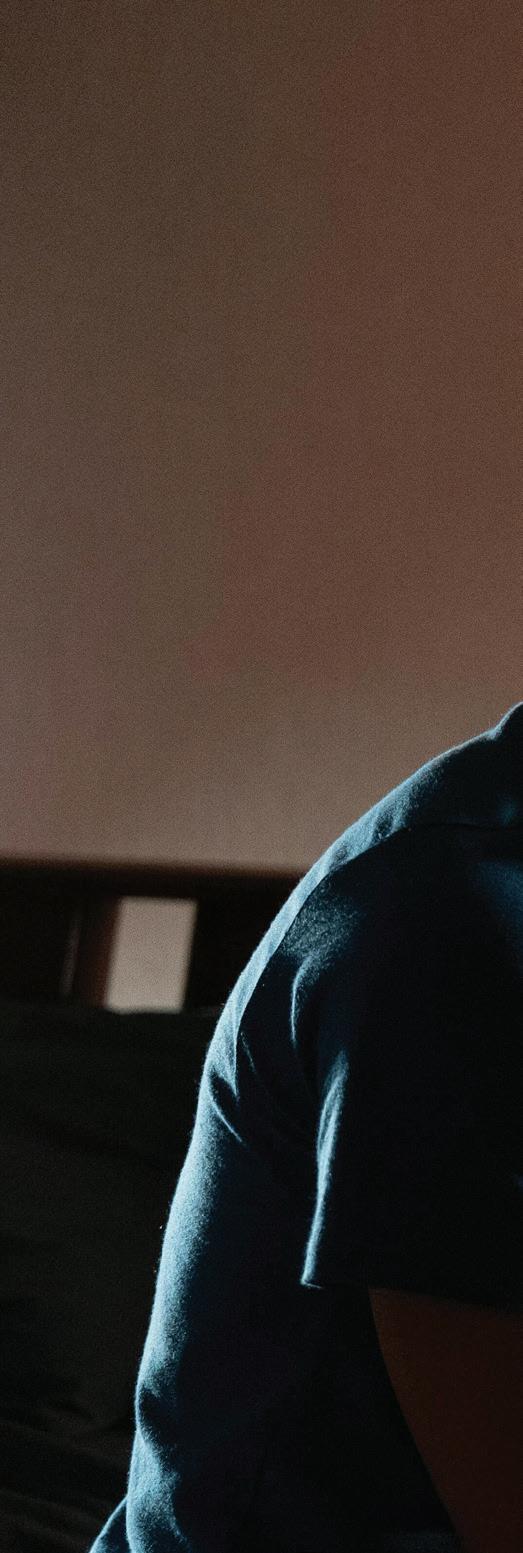
Challenges were many shooting the “dance days,” as Jeddry and Foster didn’t know the lighting cues, their own movement cues, or which props they’d incorporate (like benches, hot dog carts, animals, and dumpsters) until they saw the rehearsals the day of filming. “I would drink up the marking rehearsals like there would never be another one,” Jeddry laughs. “We needed to learn these dance numbers as best we could in a matter of minutes and remember cues so we wouldn’t collide with each other. These
KAIL WANTED THE SONG "WHO AM I AND WHO ARE YOU,” TO PLAY OUT IN DESIGNED SPLIT-SCREEN SHOTS. THAT ALLOWED CONNOR TO PAY HOMAGE TO HER FAVORITE SCENE FROM COPPOLA'S ONE FROM THE HEART . AS THE PHONE CALL GETS MORE INTIMATE, THE WALL DISAPPEARS USING OLDSCHOOL THEATER SCRIM LIGHTING TECHNIQUES. “MIGUEL’S BEDROOM WALL WAS PAINTED DARK GREEN," CONNOR EXPLAINS, "SO TO DO THE EFFECT WITH LIGHTING MEANT WE NEEDED TO TRY TO MATCH THE WALL AS CLOSELY AS POSSIBLE.” / PHOTOS BY SARAH SHATZ / HULU
52 APRIL 2023
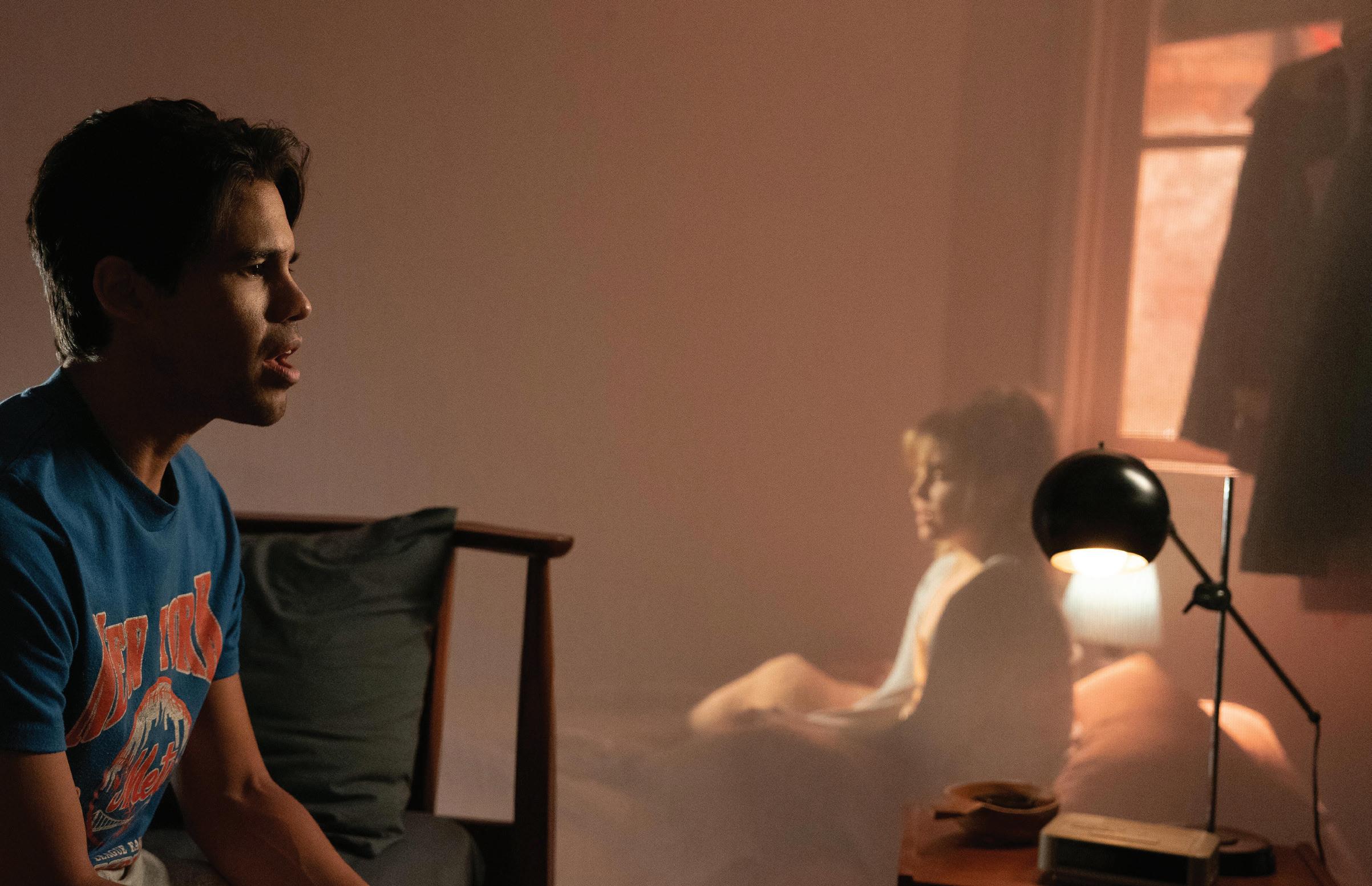
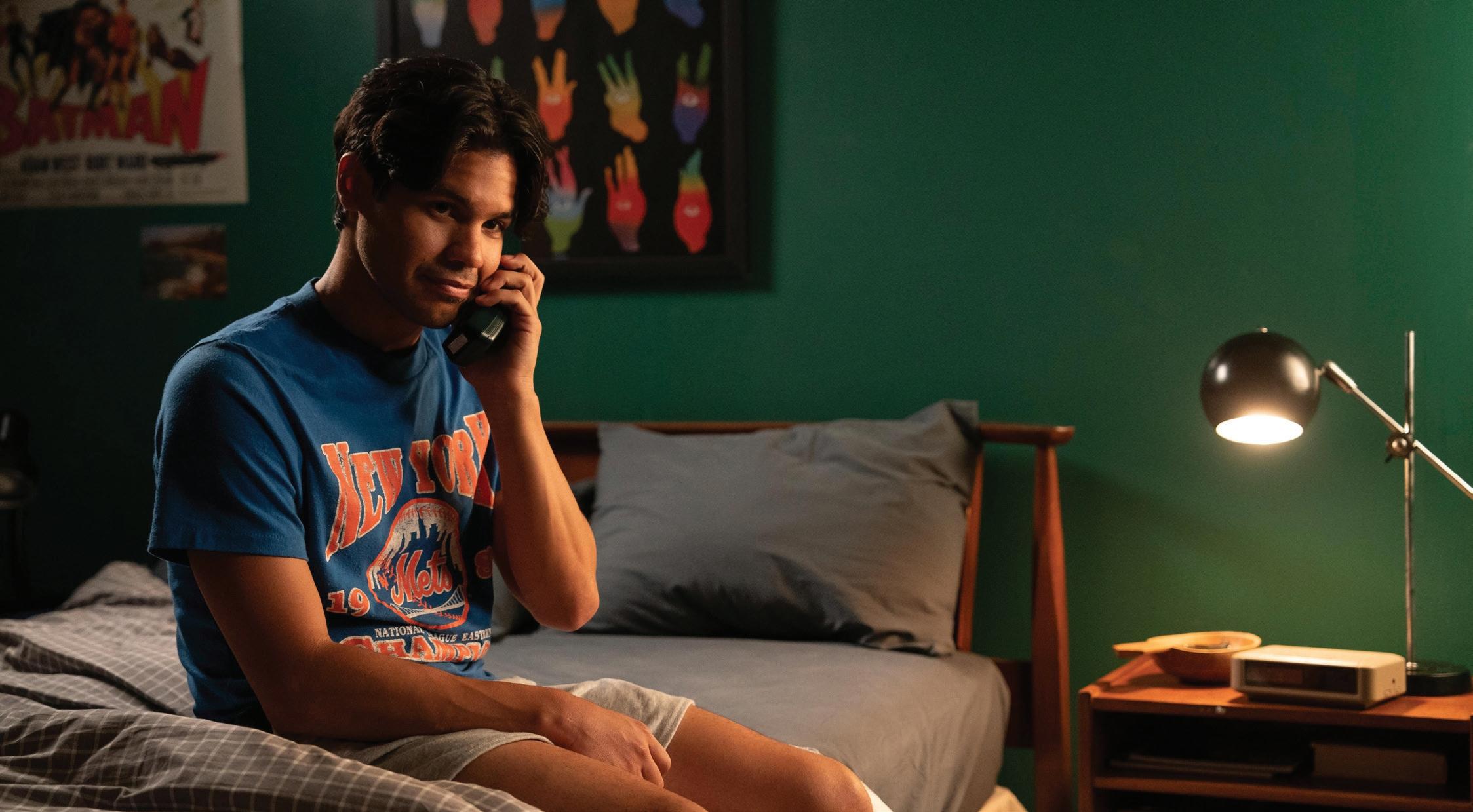
53 APRIL 2023
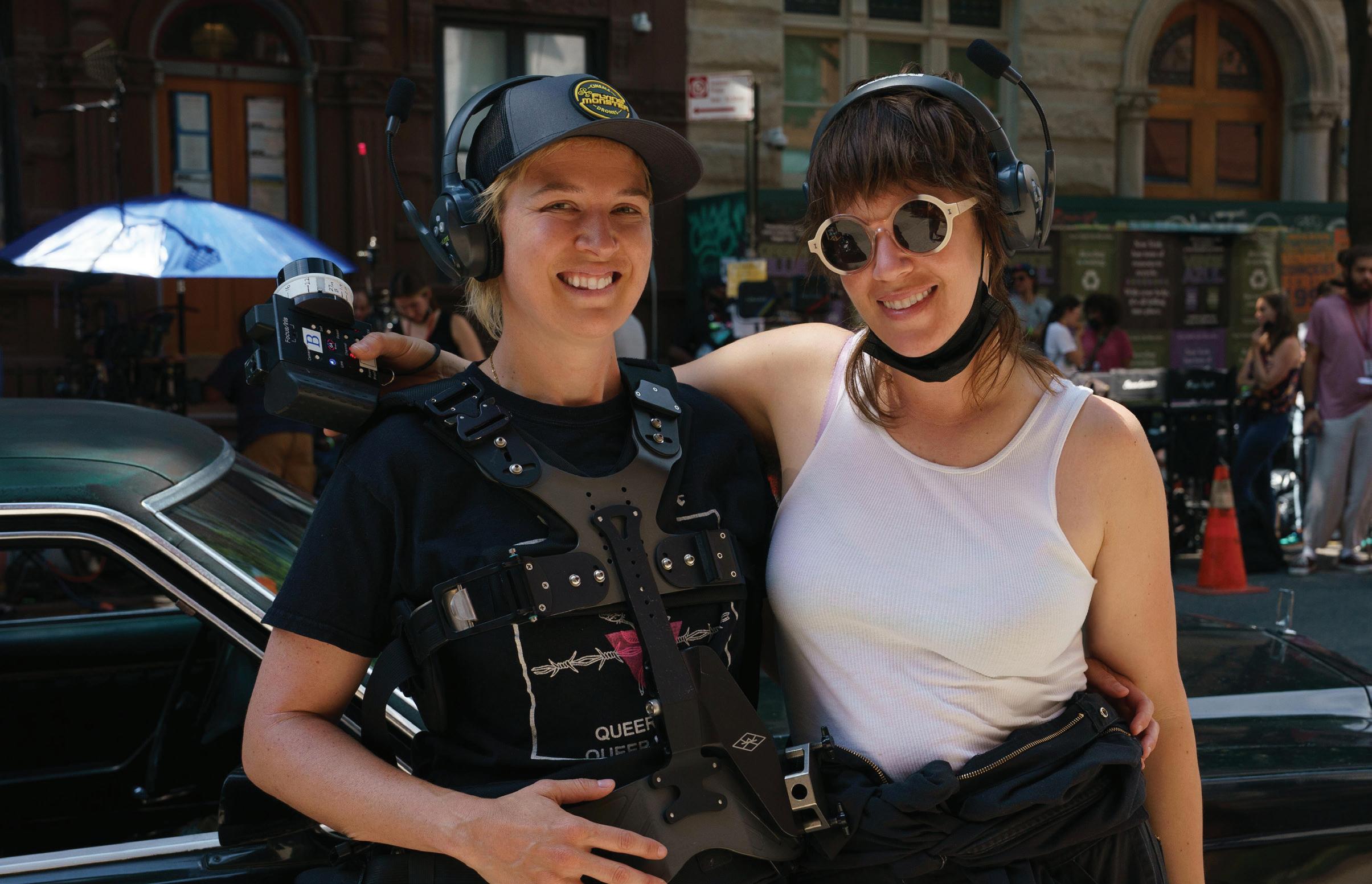

54 APRIL 2023
B-CAMERA/STEADICAM OPERATOR JENNIE JEDDRY, SOC, (ABOVE LEFT WITH CONNOR) HAD AN INSIGHTFUL CONVERSATION WITH OPERATOR JOHN ‘BUZZ’ MOYER IN PREP. “BUZZ HAD RECENTLY FINISHED WEST SIDE STORY ," JEDDRY RECALLS, "AND HE WAS GENEROUS WITH ADVICE ON HOW TO BUILD THE BEST RIG FOR DANCE, WHAT TO LOOK FOR IN REHEARSALS, ALWAYS ASK FOR EARWIG RECEIVERS, AND, MOST IMPORTANTLY, GET TO KNOW THE MUSIC!"
PHOTOS BY SARAH SHATZ/ HULU
days were full of adrenaline and lots of counting. The best part was Ashley’s freedom to find interesting angles, cadences, and movement once we got the necessary wider shots.”
Jeddry says an important asset was her collaboration with assistant choreographers Will Loftis and Alison Ingelstrom. “It is so challenging to glean everything you need to know on the day of filming from one rehearsal,” she continues. “After I got the broad-stroke notes from Ashley, I would run over to Will or Alison, and after the third or fourth time they saw me running, they knew what I was coming for. By the hundredth time, they could read my mind.” Little things counted – noting where dancer leaps landed and whether a bench needed to be moved. Did they need to tape down the carpet for safety?
“I’m a kinesthetic learner, which means I learn best by physically doing something, walking it through, building it myself,” Jeddry explains. “If I can ‘walk’ or ‘mark’ the dancer’s moves with the dancer, I can build muscle memory. You can’t get that from watching a video.” Having Dolly Grip Nicky Moers and Key Grip Yurich behind her, anticipating safety concerns and helping navigate the path, was important also.
To make things even more challenging, Jeddry and Foster had to stay clear of each other’s shots and moving equipment (thank you HME headsets). “We both found the dance numbers; take three would be a sweet spot, just enough practice for the camera and our teams of crane techs, focus pullers, and dolly grips to get confident with our cues, timing, and movement that we could relax into the music and movement and find subtle nuances to make the shot better,” Jeddry adds.
Foster concurs that Up Here provided enormous freedom and creativity. “As an operator, we had to tune our ears to the rhythm and lyrics and internalize the numbers as quickly as possible,” he shares. “We had to make mental notes of what beat a certain action would take place, to be ready for the corresponding camera move. Because if we didn’t anticipate the choreography, our moves would often be too late.”
It wasn’t just the dolly grips who were integral to creating fluid moves for the musical capture. Foster says they relied heavily “on our focus pullers to move with the speed and agility
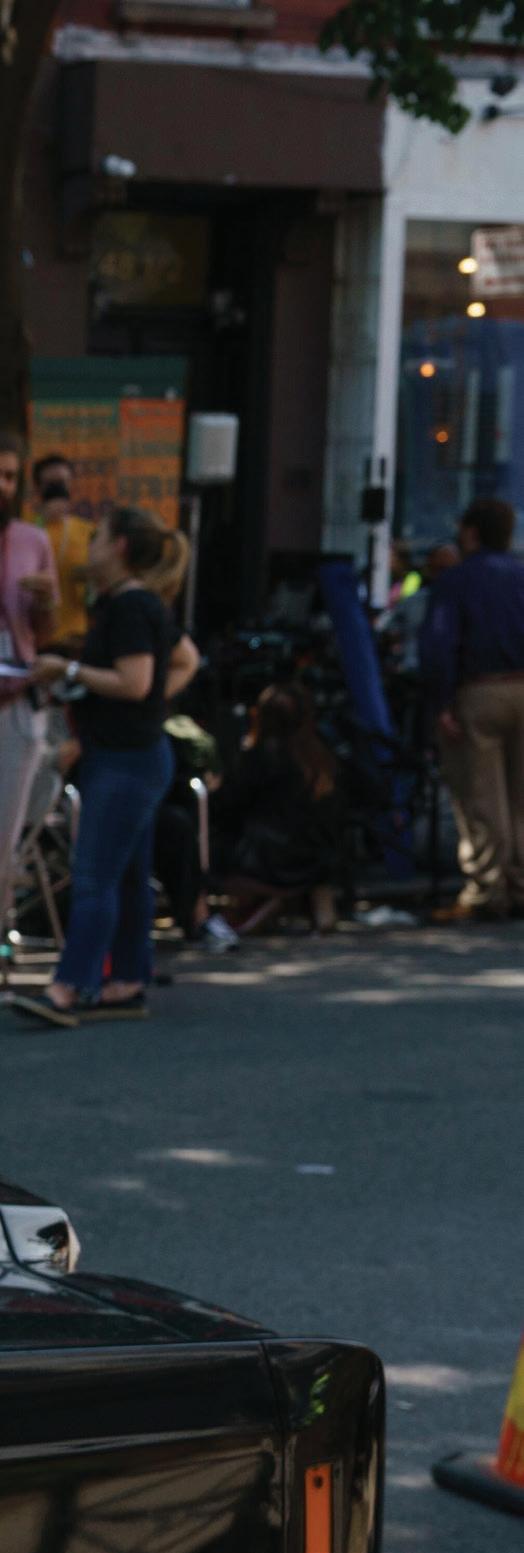
required. Gus [Limberis] is another example of an experienced collaborator whose great attitude helped keep things light on set, even on the most challenging days,” he adds.
“I Am Not Alone” was also a highlight for Foster. The size of the bathroom and how it comes apart to reveal a black void populated with dancers moving the set pieces impacted the camera. “The big question was how to punctuate the moment where the walls come apart,” Foster continues. “I suggested the 50-foot Technocrane to achieve the speed and precision of a straight pullback at the explosive moment. The first take was so dramatic that it elicited applause from the crew. It was one of those moments where the lighting, performance, choreography, camera moves and production design came together.”
According to Rizzo, pulling focus on a musical is different than any other genre. “You have to know the dialogue because the actors would have a moment of spontaneity, and you always had to be ready for that,” she explains. “Lindsay and Miguel each had three characters behind them – the voices in their heads of people from their past. So, it was especially important to watch the rehearsals and know the timing of the lines. Also, given the size of some of the sets, having so many characters in the scenes was tricky. For example, Lindsey’s East Village bedroom was supposed to be a closet that her roommate rented. We also did more than a few scenes in a train car in the loading bay of Cine Magic.”
Rizzo says that the dance sequences were grueling for Steadicam because of the long takes. “‘So Many Ways’ is a great example of a surreal circus act, a mind trip that Miguel goes on when he believes Lindsay is sleeping with a children’s book writer [Brian Stokes Mitchell],” she relates. “Sonya’s choreography was brilliant as it involved complicated lifts and contortions of dancers reaching and pulling at Miguel. Working with Jennie was a pleasure – she had to develop her own choreography on the day, so the stress was high. But Jennie’s energy is contagious. And her ability to carry off the intricate moves – and be in sync with everyone – is inspiring.”
Lighting became a kind of dance as well.
Alcantara says that because of the two-episodesper-block schedule, time was tight. “Throw in the fact that it had musical and dance elements and we had to be more reactionary in our lighting than we would have liked,” he recalls.
55 APRIL 2023
“We would scout a location or a set build and discuss the musical elements, choreography, and overall tone of the lighting. But that’s where any sort of technical prep ended. Instead, I would design a rig, show it to Ashley and then install it with enough versatility and flexibility needed to make on-the-day changes and tweaks.”
Alcantara says that on-stage sets were built with numerous lighting cues and effects depending on the time of day or musical element. “We used Astera Nyx bulbs in all medium-based practicals to be able to recall colors or intensity levels,” he adds.

Although subway sequences were used throughout, the biggest one was “It’s a Sign” from Episode 103, a set built on stage with a retired NYC subway car. “We rewired and lit the interior with Astera Titan and Helios bulbs to control color and intensity while adding an RGB color element,” Alcantara explains. “Outside the car was a tight space to light, so I hung an array of ARRI S60 SkyPanels in pixel mode to create chases that might be found in a subway tunnel as we would go through stations. We also layered that with more Astera and ETC Lustr3 ellipsoidals, hitting a rotating mirror gag to add hard shafts of light.”
Alcantara says the song “What If” was a universal challenge for all of the production crafts. “It was a good test of how fast we were going to have to move in order to cover all the material needed in a tight window of time,” he explains. “We shot most of the dance routine practical on an East Village street. We had dozens of fire escapes rigged with High End Systems’ Lonestar movers – due to their size, versatility – and with Creamsource Vortex8 and LiteGear LiteMats. We also rigged Fiilex Q8 Fresnels to the streetlights we ordered to create pools of sodium lights, combined with 80-foot articulating lifts at each end of the block with a combination of throw movers and Sky Panel S360s.”
The lighting department’s ability to build intricate setups quickly came not only from the support and creativity of Connor but also from other members of the production team. “Because we never had tech rehearsals to hit marks,” Alcantara adds, “[Lighting Programmer] Michael Hill and I would focus all these lights on the fly, and then create color palettes and multiple cues to give it a more theatrical feel than a typical night exterior.”
Production Designer Corey worked closely with Tayeh to “create what would serve her work best,” notes Corey. “We’d create full-sized
mockups of moveable set pieces [like on “I Am Not Alone,” where pieces could explode a room open] and bring them to Ashley. Then the three of us would come up with some visually exciting moments.” Costume Designer Smith says her collaboration with Connor was one of the most “pivotal elements” of the show. “We wanted the clothes to add texture and believability and enhance the magical moments,” Smith shares. “Each song had a different element to address, detailing their look and enhancing the story –and letting the camera have the freedom Ashley needed.”
As for Tayeh, she says every single department’s collaboration with choreography was key to the series. “We all had to make sure we were evoking a clear narrative of the storytelling,” Tayeh notes. “What was different for all of us [from theater] was that we were creating for a flat screen without depth, which brings a lot of challenges. Like the opening number, where Lindsay decides to take on her new life in New York.” Tayeh says the scene hinged on “Almitra’s ability to find and dress an iconic street image of New York, Nicky’s team selecting a fun pair of red plastic pants [to denote Lindsay’s determination to carve a new life] and all of us giving Ashley’s camera team the momentum they needed to capture Lindsay’s urgency to get out and swallow the world.
“As for the choreography, it had to show the vitality of young life,” Tayeh adds. “That collaboration is so apparent in the dance [“Tiger Shark”], when Miguel gives into the voice of a guy he can’t trust and embraces his hypermasculine power. We worked with Ashley to create images [and space] that depicted the driving thoughts through his head as papers fly and dancers go from floor to desk. Ashley was amazing at sitting in an emotion and giving it momentum at just the right moment.”
Connor, who is nothing if not versatile, having also shot the indie Sundance Midnight film Polite Society , says shooting Up Here was “an adventure. It required a leap of faith that the team assembled and the creative leadership could come together to pull off: something that seemed impossible for a half-hour TV show schedule,” she concludes. “There was no room to doubt your instincts, and it took everyone’s persistence of vision and talent to make the musical numbers work. We were so lucky to spend a sweaty summer together on the streets of New York City!”
CHIEF LIGHTING TECHNICIAN JOHN ALCANTARA SAYS HIS TEAM WOULD SCOUT A LOCATION OR A SET BUILD AND DISCUSS THE MUSICAL ELEMENTS, CHOREOGRAPHY, AND OVERALL TONE OF THE LIGHTING. "BUT THAT’S WHERE ANY SORT OF TECHNICAL PREP ENDED," HE NOTES. "INSTEAD, I WOULD DESIGN A RIG, SHOW IT TO ASHLEY AND THEN INSTALL IT WITH ENOUGH VERSATILITY AND FLEXIBILITY NEEDED TO MAKE ON-THE-DAY CHANGES AND TWEAKS."
56 APRIL 2023
PHOTOS BY SARAH SHATZ/ HULU


57 APRIL 2023
LOCAL 600 CREW

Director of Photography Ashley Connor A-Camera Operator Justin Foster A-Camera 1st AC Gus Limberis A-Camera 2nd AC Tommy Scoggins B-Camera Operator Jennie Jeddry, SOC B-Camera 1st AC Ro Rizzo B-Camera 2nd AC Mike Swearingen Loaders Ofelia Chavez Willie Ching Still Photographers Patrick Harbron Sarah Shatz
 PHOTO BY SARAH SHATZ/HULU
PHOTO BY SARAH SHATZ/HULU

Tobias
 by Valentina Valentini
by Valentina Valentini
FEATURE 03
Datum joins an all-women team to bring forth Hulu’s emotionally complex new limited series, Tiny Beautiful Things.
photos by Jessica Brooks / Elizabeth Morris / Erin Simkin / Hulu
photo by Elizabeth Morris
FAMILY
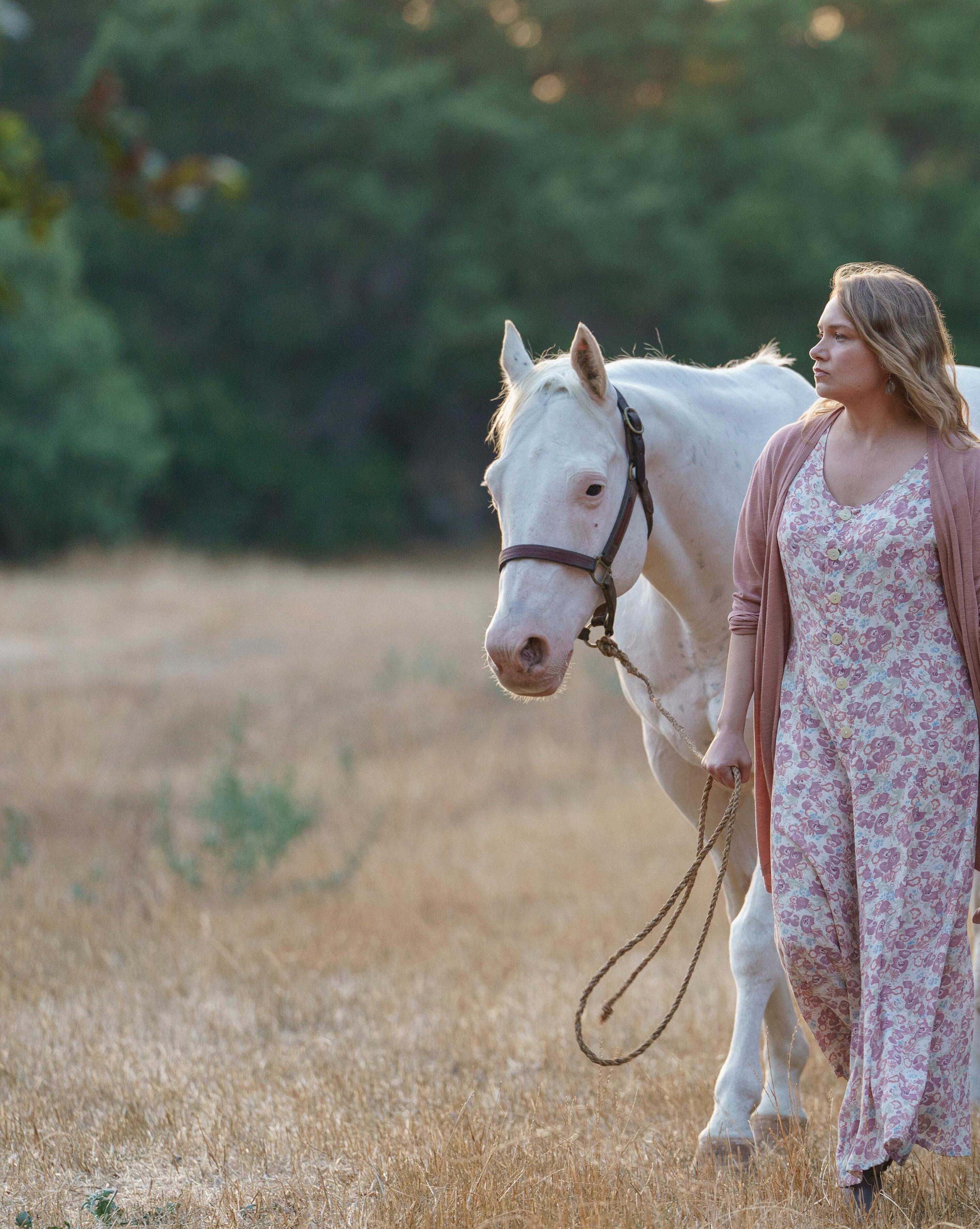
TREE
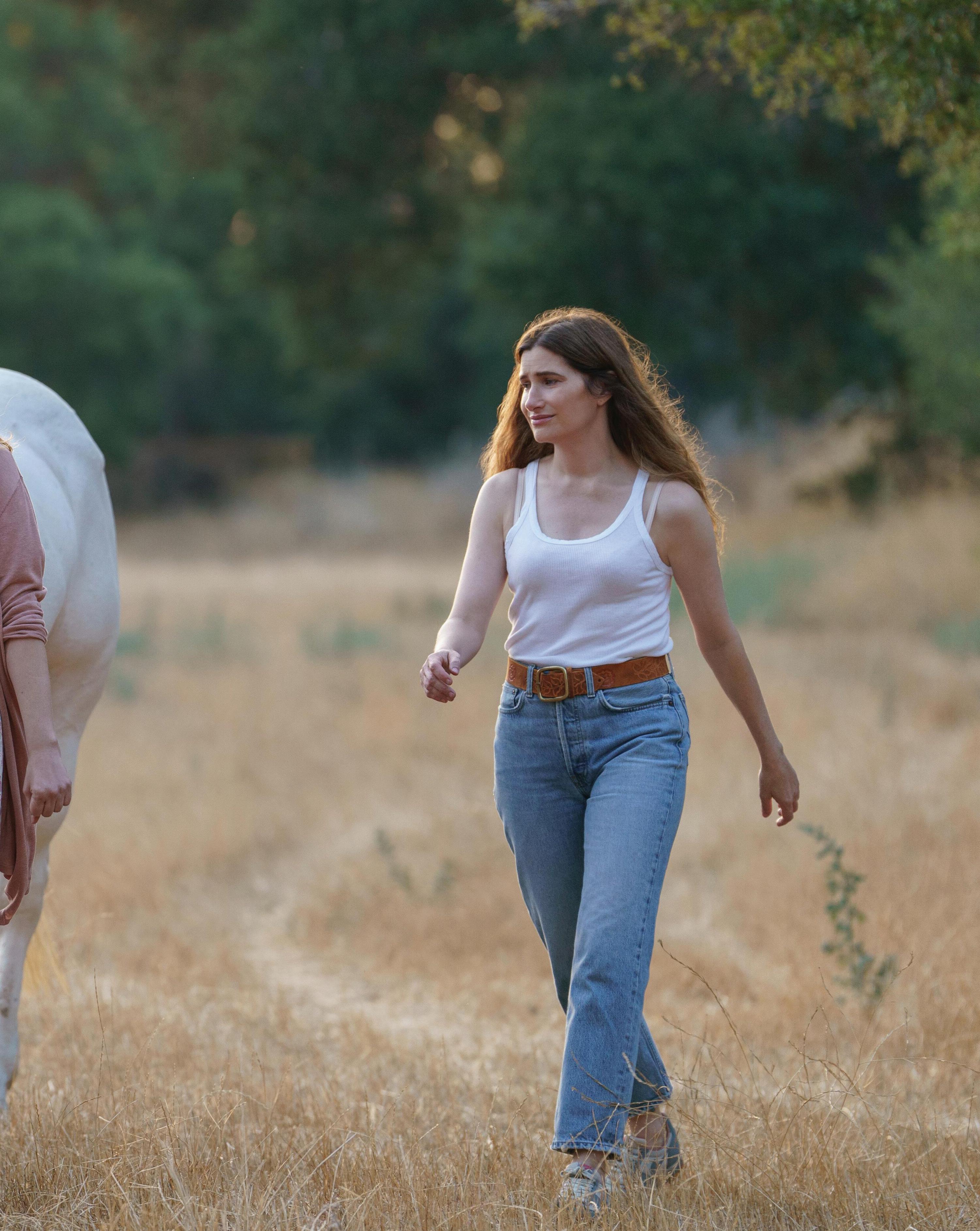 Photo by Jessica Brooks
Photo by Jessica Brooks
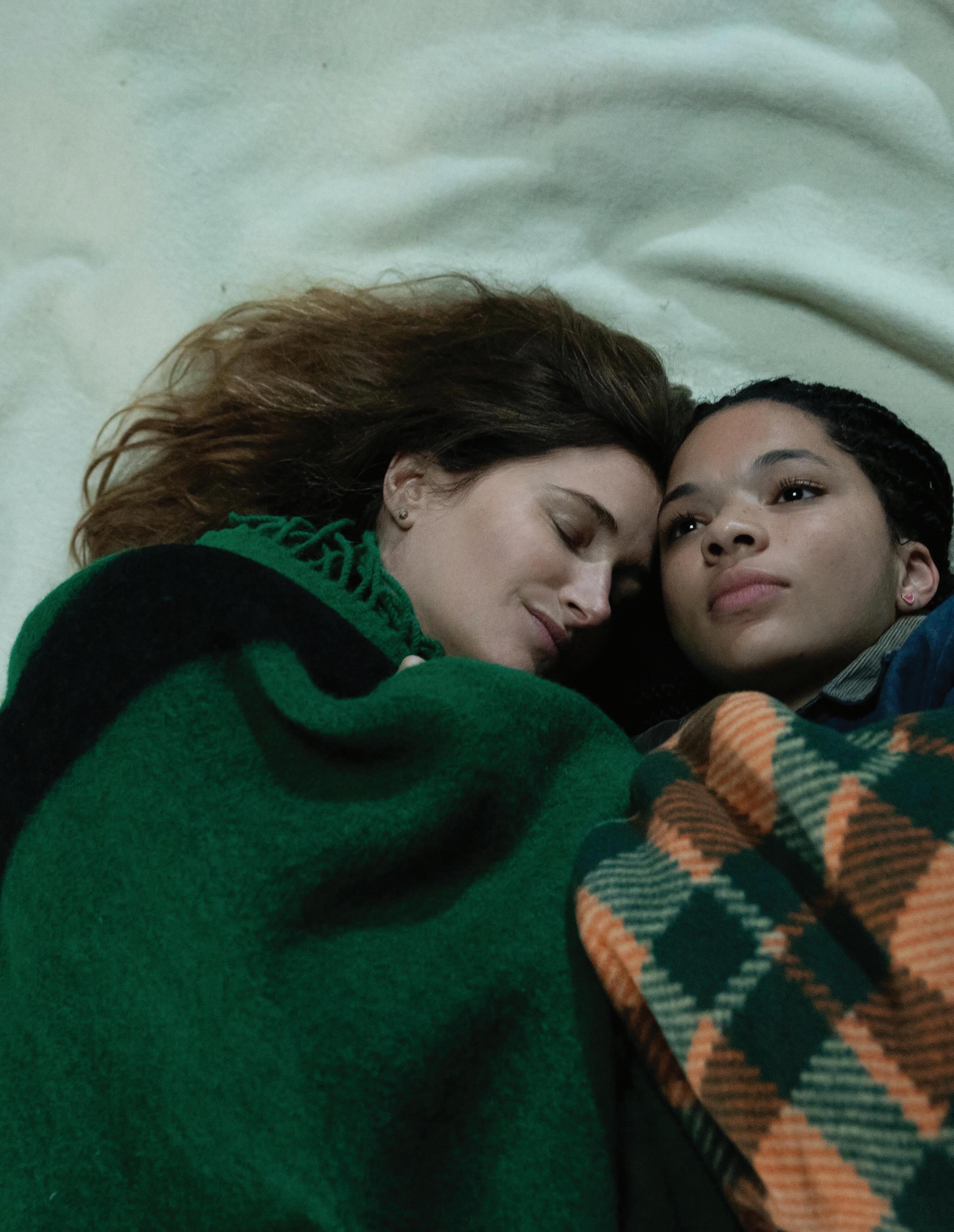 Photo by Jessica Brooks
Photo by Jessica Brooks
Tobias Datum remembers sitting around a table during a pre-production meeting for the new Hulu series Tiny Beautiful Things. He had previously worked with Hello Sunshine, the production company founded by Reese Witherspoon, when he was prepping Daisy Jones & The Six [ICG Magazine February/March 2023] – which was shut down by COVID and then restarted when Datum was unavailable, and then again on the Italian portion of From Scratch; and Datum was happy to be back on board. His main collaborators this time around were showrunner and creator Liz Tigelaar and director Rachel Lee Goldenberg on a project adapted from Cheryl Strayed’s best-selling book about her own experiences as an advice columnist, “Dear Sugar,” for the online outlet The Rumpus. As Datum looked around the table, he realized he was the only man in the room. About 15 other people, all women, surrounded him, and he realized this was a bit of a historic moment.
“I mentioned feeling something special about it to Rachel afterward,” Datum recalls, “and she was like, ‘Yeah, now you know how we feel!’”
It’s no secret that Hollywood has been slow to give stories about complex women a spot at the table. So, when a room full of television executives, creatives and craftspeople get together and there is only one man present, it is indeed something special. The obvious question then – for any one of the executives and creatives –would be: Why did you hire a male cinematographer?
“We interviewed a lot of female DP’s,” recounts Tigelaar, who was the creator and showrunner for Little Fires Everywhere and Life Unexpected . “And when you’ve been surrounded by men your whole career, you can’t help but be intrigued by being surrounded by women and seeing what happens. But it didn’t come down to gender as much as it came down to approach.
Tobi felt like such a fit, aside from his skill and his excellent past work – he’s caring, maternal and parental. And as we expand the idea of gender, we [must be] inclusive of men as well. Tobi was an amazing fit in this sea of women because he doesn’t just come from an intellectual place so much as an emotional place. We were all likeminded in that respect.”
Tiny Beautiful Things is a deeply emotional story whose timeline bookends Strayed’s bestselling memoirturned-Oscar-nominated movie, Wild [ICG Magazine December 2014]. Through eight episodes, we follow Claire (in a tour de force performance by Kathryn Hahn) as both a 40-something and a 20-something (in an equally powerful turn by Sarah Pidgeon). At each stage, Claire is dealing with immeasurable trauma – first, the untimely death of her young mother (Merritt Wever), and later, her failing marriage and contentious relationship with her teen daughter. But 25 years after she decided she wanted to be a writer, Claire gets the opportunity, and whether she fumbles it or not is part of the tale.
“I’d been hoping for a character like this to come along,” recounts Datum.
“Somebody who’s not entirely likable, a flawed person. Especially in television, there's that concern about how flawed a character can be. In the pilot, you meet Claire, and she’s somewhat of a disaster. It’s highly entertaining, too, and then you discover the person underneath [as the show goes on].”
Datum, whose first series was South of Nowhere (2005) and who recently shot On Becoming a God in Central Florida (2019) and True Story (2021), says it’s important to remember that he’s an audience member as well. He says his interest in projects comes from a somewhat selfish place as he wants to work on things that he wants to watch.
“The first images I had in mind for this show were from [still photographer] Nan Goldin,” Datum adds. “In terms of vulnerability, she’s somebody who looked into a mirror to see what looked back. In her famous series [ The Ballad of Sexual Dependency , where Goldin turned the camera on herself to document domestic abuse], there’s no façade; you look directly at this person in an intensely vulnerable moment. That was my starting point. And, maybe this is old school, but I felt the best approach was to just have the cinematography disappear. There is always a side of me that wants to show off, but being in the position where I’m both enjoying what I’m capturing on set and not getting in the way of the performance – that’s the best.”
For Goldenberg, who directed the first two episodes and set the show’s look in collaboration with Datum, her goal was to combine a visual point of view with not getting in the way of the emotion of the storytelling. The references she used in her pitch deck were Moonlight , Madeline’s Madeline , Tree of Life and Ginger & Rosa
“Tobi truly came through on set [because] his priority was always the performance,” describes Goldenberg, who was also impressed with the work of operators Thom Valko (A-Camera/ Steadicam), Ilan Levin (B-Camera for
65 APRIL 2023
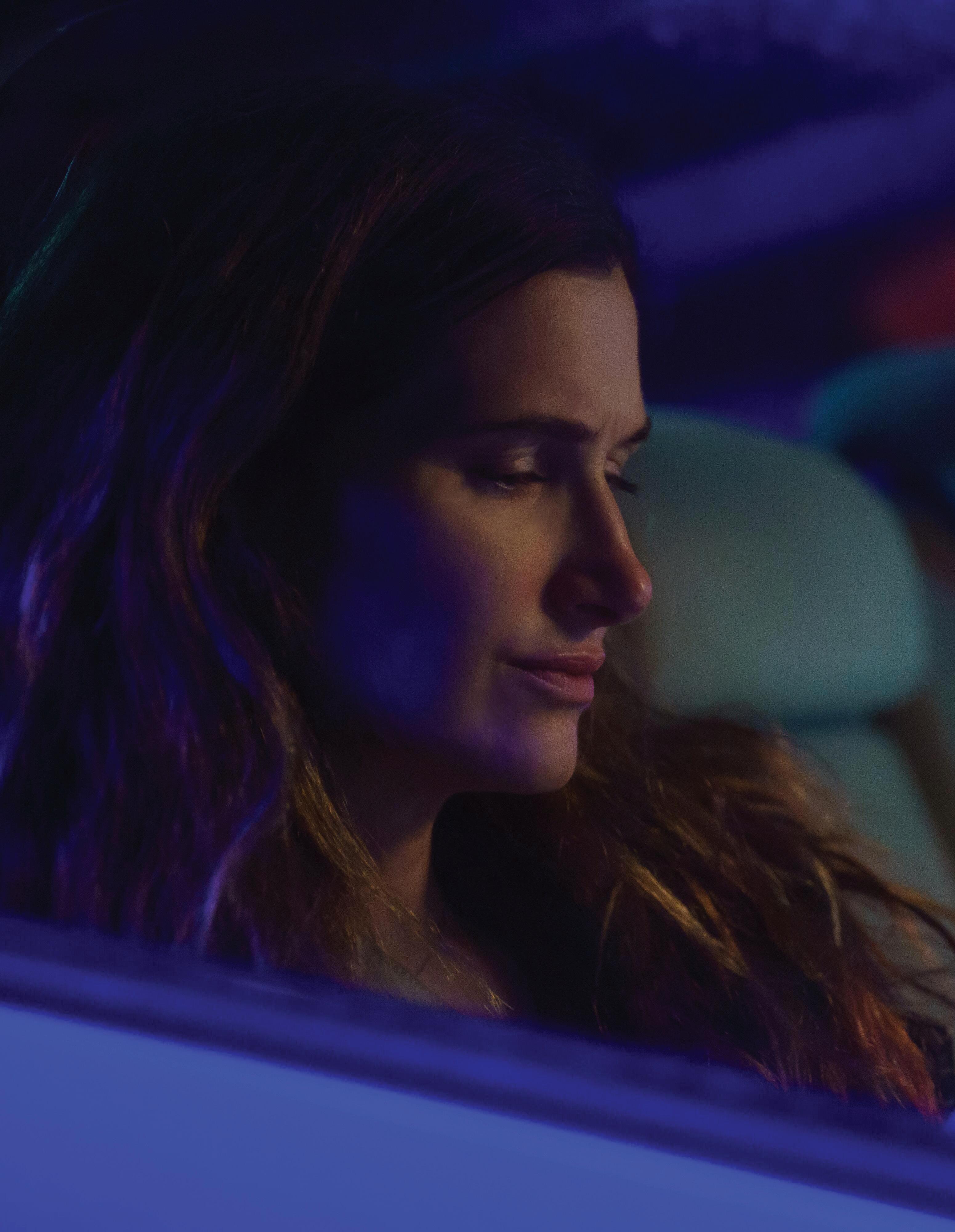 Photo by Erin Simkin
Photo by Erin Simkin
two weeks) and Colin Davis (B-Camera). “Tobi is actor-focused and intuitive; he made sure that someone hitting a mark never got in the way of someone doing the scene. His priorities were much less about the perfection of the look and much more about making sure we were getting the most out of the actors. Though it was with the look he designed, he sort of made it feel effortless.”
Tigelaar, who was on board with using Nan Goldin’s work as a reference point, says she knew Datum was interested in Claire as a character and in capturing “not the perfect but the beauty.” For Tigelaar, Datum could never be close enough or wide enough. “We were often much closer than you were used to being to a character’s face,” Tigelaar shares. “And with the wides, I’d watch shows where I’d love their wides, and I’d think, ‘How did they have the time to do that shot?’ [On our production], sometimes I’d think we were in as wide a shot as we could go, and then Tobi would go wider, and it was just epic. He blew me away with that time and again.”
Adds Datum: “Since [Claire] is a bit lost in this world, we’re either close or in a wide to show her in the context of a space that she doesn’t quite belong [in] and that she maybe is somewhat dwarfed by. This gets more pronounced throughout the episodes.”
Tigelaar says Datum spoke about his approach to designing the look for Tiny Beautiful Things differently than other DP’s she’d work with, being far more focused on making sure that he and his crew would be sensitive to the emotionality of Hahn and Pidgeon’s performances, rather than on what LUT’s or cameras or lenses would be best. “He said, ‘If you aren’t vulnerable, how can you expect other people to be vulnerable around you in order to capture that vulnerability?’” Tigelaar recalls.
This is not to say that gear and technique didn’t matter, more that they were simply tools to help Datum’s crew (and the other department heads) bring to life the story on the page in the most inconspicuous way. To that end, Datum shot on ALEXA Mini LF’s because he felt they’re the gentlest, color science-wise, with skin tones. From Panavision, he

chose the new high-speed large-format Panaspeed series for the scenes that take place in the present; and for the past, he utilized older VistaVision H-Series along with “some cheap macro lenses and a cheap 12 millimeter lens,” he says. “I wanted a bit of that flawed, fuzzy-aroundthe-edges look, and not quite as colormatched as the newer lenses, but still very gentle and soft, taking the digital edge off a bit. The newer primes are a bit crisper but still have nice color rendition and contrast.”
To oversimplify: in depicting the past, there was a split between Claire’s bad and good flashbacks. These were differentiated through two LUT’s created by Picture Shop Colorist Timothy Vincent, whom Datum worked with on Mozart in the Jungle and who was there even in the testing phase; Datum typically relies heavily on his colorist to help set the look. “For the bad flashbacks we created a harsh look,” Vincent recounts. “We combined stronger contrast overall and contaminated colors leaning heavily towards the green and cyan, so nothing felt normal. For the good flashbacks, the look was soft blacks and lower contrast for a more cinematic feel for the day and stronger contrast for the nights. A saturated wash of yellow and red tones, to create a golden feel, was used for both day and night ‘good’ flashbacks.”
At one point, Datum considered filming the flashbacks in a different format or using anamorphic. But he ended up opting for in-camera color and lighting changes, noting that “it’s still the same person, the same world.”
For the good past, the lighting was more expressionistic, and Datum loved how much the H-series lenses flared. For the bad past, he went more fragmented and tried little tricks like Vaseline on a clear filter. “We used a lot of hard light and lens flares for the emotional stuff in the past –VNSP Par cans were constantly being called for,” recalls Chief Lighting Technician Dessie Coale, who was leading the lighting department on an episodic series for the first time. “It was raw stuff, and a part of my job was to make sure that my lighting crew was respectful of the content, understood the actors were in an intense place, and gave them the space and quiet they needed to work. My team was incredible.”
67 APRIL 2023
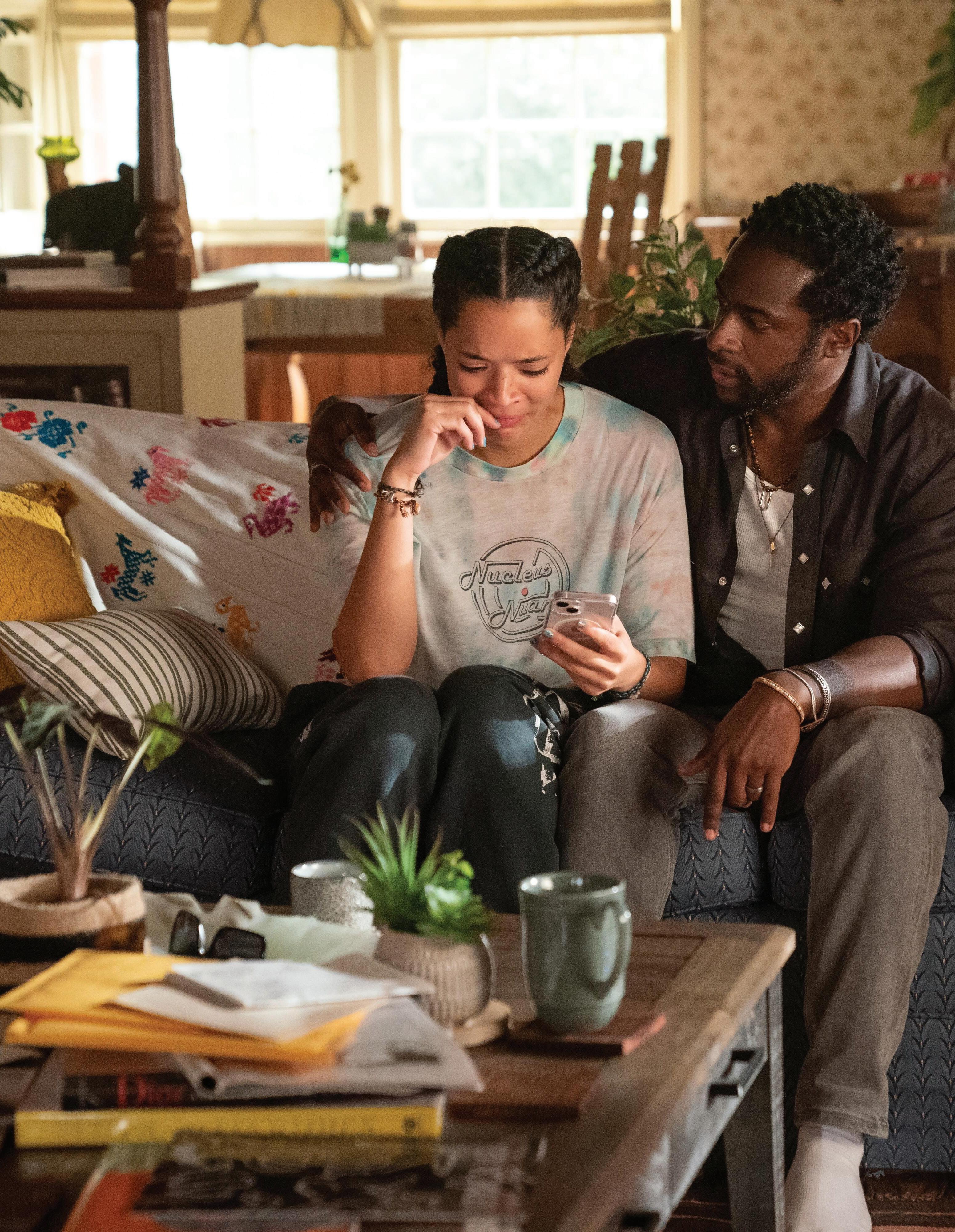 Photo by Jessica Brooks
Photo by Jessica Brooks
Production designer Jessica Kender had worked with Datum prepping Daisy Jones & The Six, and the pair had formed a solid bond that flowed into Tiny Beautiful Things . “I don’t know if Jess reads the script to the extent that she understands how to block the scenes,” says Datum, only half-joking, “but it almost feels that way because [her sets] are so easy to work in. And if the world’s great, then you just have to point the camera at it.”
One of the main points driving their collaboration was the layers of complexity inherent in real life. The characters in this series are messy, and Kender wanted that authenticity in her sets. That meant staying away from anything glossy or highly stylized and ensuring the audience believed that people lived in these spaces – the log cabin from Claire’s past and her present-day house as the two main examples. The exteriors of both were found locations – the cabin on the Disney Ranch and the house in Burbank – and Kender built the stage versions to be solid structures with no fly-away roofs or walls.
“There’s really nothing that gives Jess’s designs away as sets,” Datum continues. “Personally, I like treating a set the way I would treat a location, especially when you have to tie two places together. I don’t necessarily need to have ceilings to light through or lift up. I enjoy the limitations because your solutions are very similar to being on location; having fewer options often makes for stronger choices.
“It sounds a bit esoteric,” he adds, “but there’s almost a bit of a history that lives in [those sets] because they’re so well built. And maybe our grips bemoaned the fact that the ceilings were solid. But I could easily find our frames and block because Jess and her team provided fantastic ways to shoot from rooms into other rooms, or created the space with interesting foreground elements or unique architectural qualities.”
In fact, Kender worked within the framework of the two houses so that Datum didn’t have to pour in light where it wouldn’t be coming from. Wherever she could, she’d put in windows and practicals for source light so Coale and her team did not have to add a lot inside. “We did a lot of the lighting of the cabin from the outside,” Coale recalls. “We knew there was going

to be greenery between the windows and the backing, plus deep porch roofs on two of the sides that we would have to dig under. We made the decision for the rigging electric and rigging grip crew –headed up by Hector Corona and Jeremiah Spinney – to rig Mole Richardson 12-light maxis on chain motor truss and trolley track. That way, when we needed to bring in hard sidelights or backlights, we could lower them in and move them around without having to wheel in any stands and adjust greens. It was great for speed and efficiency.”
Inside the cabin, Coale kept the lighting simple with Aputure 600Xs, Litegear Litemat 8s, and Astera Titan tubes as the workhorses. The cabin had a very tall ceiling with a peaked loft, so Key Grip Travis Belgrad would frequently utilize the loft area for bounce rigs.
Adds Kender: “I love how Tobi lights his stage sets the way he lights on location. When you’re on location, sometimes you’re going to have a blown-out window. You cannot tell at all when you move from stage to location, even if you’re looking with a fine-tuned eye, which is the stage and which is the real location, because Tobi matches them so well.”
Tiny Beautiful Things might have been a tech-light shoot, but when they needed to sort some driving scenes and a mountaintop scene – because what would a Strayed story be without mountains? – they booked time at The Infinity on Disney Stage 1. The Burbank, CA stage, which opened in 2021 and has been used to put the cast of How I Met Your Mother on the Brooklyn Bridge, is in high demand, but because this is a Hulu show and the streamer was acquired by Disney in 2019, there was a small window of time. The Infinity utilizes Industrial Light & Magic’s StageCraft and is made up of 700 LED panels that merge to generate a 1,600-square-foot LED canvas that wraps 180 degrees around with partial overhead coverage.
On a separate stage, Kender created a section of the glacier that Claire would be hiking on. That artificial mountainside was 30 feet long by 15 feet wide by 12 feet high and was rolled onto The Infinity stage
69 APRIL 2023
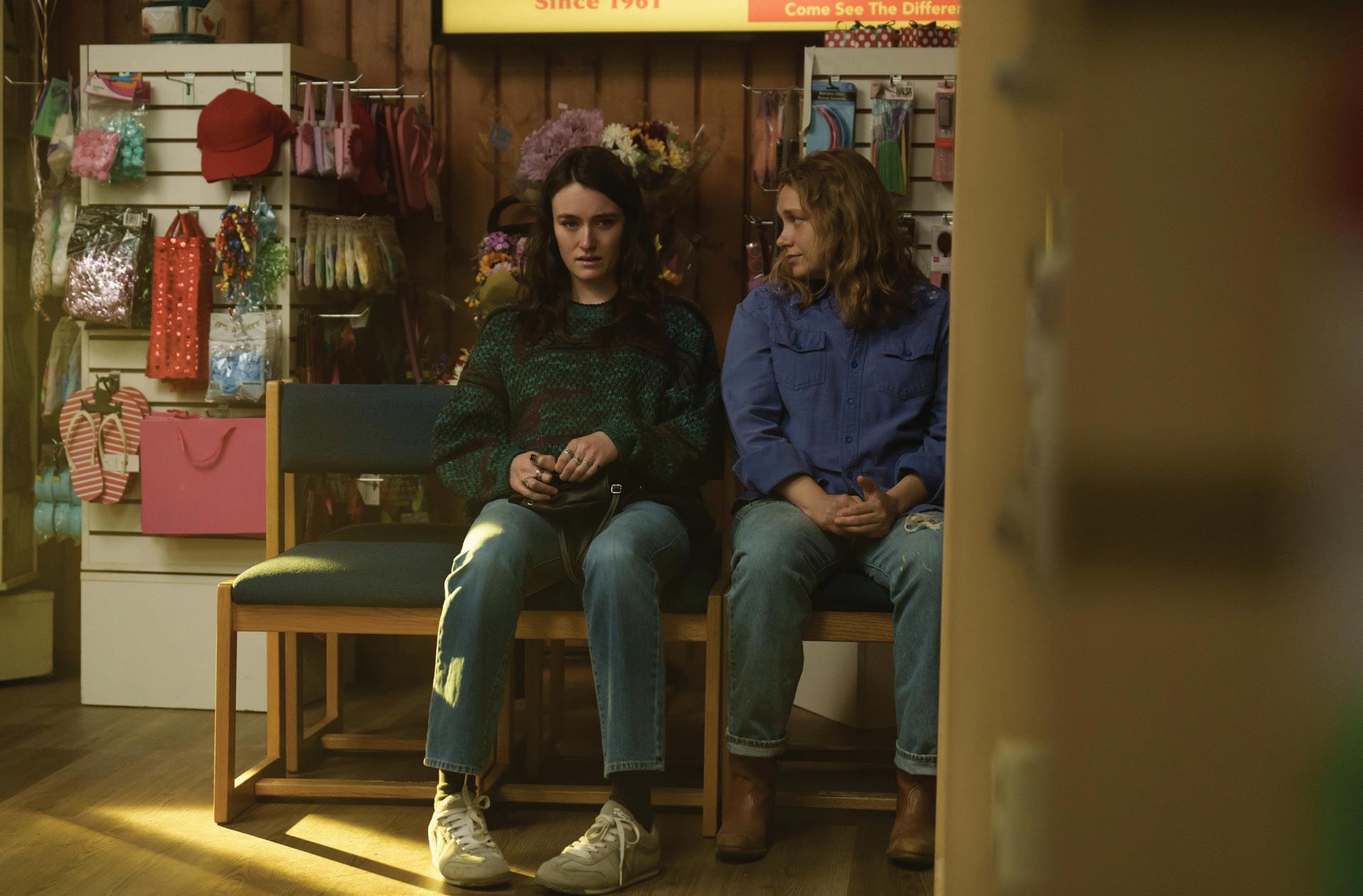


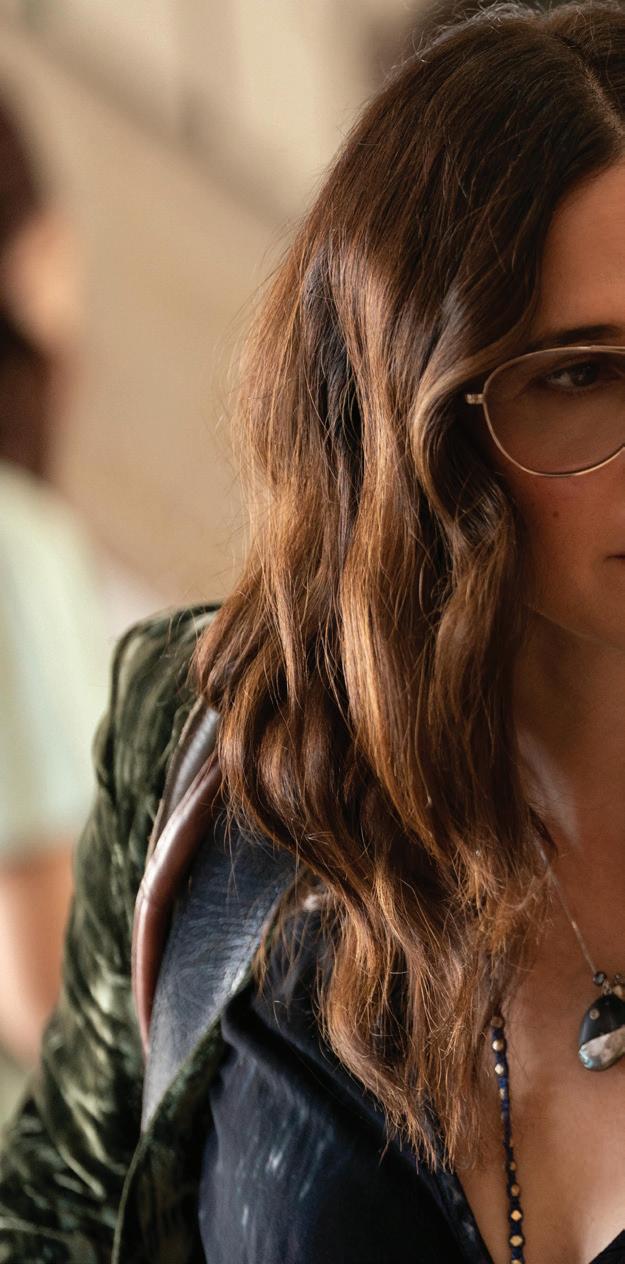
70 APRIL 2023
Photo by Jessica Brooks
OPPOSITE BOTTOM/LEFT: SHOOTING IN THE VOLUME FOR A SNOW HIKING SCENE, DATUM SAYS HE LIKES TREATING A SET THE WAY HE WOULD TREAT A LOCATION, "ESPECIALLY WHEN YOU HAVE TO TIE TWO PLACES TOGETHER," HE SHARES. "I ENJOY THE LIMITATIONS BECAUSE YOUR SOLUTIONS ARE VERY SIMILAR TO BEING ON LOCATION; HAVING FEWER OPTIONS OFTEN MAKES FOR STRONGER CHOICES." / INFINITY STAGE PHOTOS COURTESY OF JESSICA KENDER
on the day. Coale had The Infinity stage crew remove two LED panels from the top area and had her team rig two ARRI M40s in their stead.
“Depending on where the camera angle was,” Coale says, “we would use one or the other of the M40s for Claire’s backlight. It’s important to use hard light on volume stages as much as you can; it’s more realistic, appealing to the eye, and pulls everything together.”

Before shooting on The Infinity stage, Kender had created a small 3D model of the mountain and stage for Datum to help him determine which shots he’d be able to get within their budget. Their back-and-forth helped to make the day run smoothly. For example, Datum wanted to track Claire’s boots walking along the glacier so that the audience wouldn’t know where she was until the wider reveal. Everyone wanted to bring in real snow, knowing those close-ups of her boots wouldn’t alone sell the shot. Luckily, the scenery they used for this sequence existed in The Infinity backlog, so Kender was able to base her colors and textures on that. “We were fully prepped because we knew there wouldn’t be any variables [on the day],” Kender shares.

Once they had the mountain on The Infinity, a truck backed in and they began shoveling snow off it. They’d built drains around the mountain to catch the runoff. Because of the decision-making beforehand, the 3D model, and knowing what they were going into, Datum was able to spend the bulk of that half-day experimenting with different shots and the reveal, as pre-rehearsals were never an option. Datum even asked Vincent to come work with ILM’s StageCraft team to grade the plates on the stage for both days of the shoots. “For the snow hiking scene, I was on the stage for four hours ahead of shooting,” Vincent notes, “getting the scenes the right look so when you looked through the camera they were the best possible. Also, if Tobi had notes he told them to me and I worked with the team to interpret what he wanted so he could concentrate on the lighting, the camera angles, etcetera.”
As Tigelaar concludes. ““That stage was so fun! Everyone was like, ‘Oh, you’re on The Infinity?!’ People were trying to get on set [just to watch]. Going to that stage was a big deal, especially for an intimate half-hour show. I mean, we’re not Marvel.”
71 APRIL 2023
Photo by Elizabeth Morris
LOCAL 600 CREW
Director of Photography
Tobias Datum
A-Camera Operator/Steadicam
Thomas Valko
A-Camera 1st AC
Yoshihiro Kinoshita
A-Camera 2nd AC
Alex Macat
B-Camera Operators
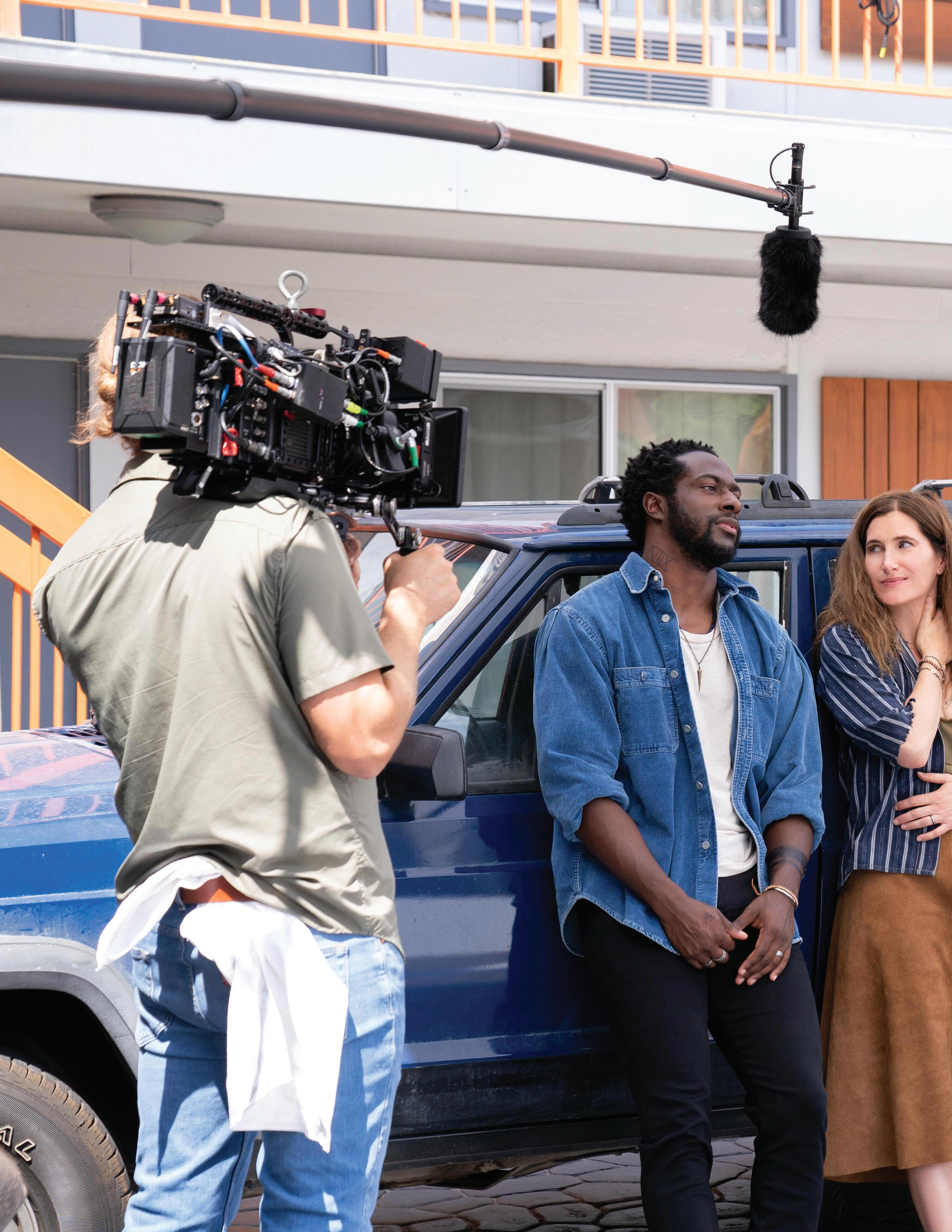
Ilan Levin
Collin Davis
B-Camera 1st AC
Kira Murdock
B-Camera 2nd AC
Alexandra Weiss
Utility
Psalm Amezcua
Additional Utility
Ricky Rose
Digital Loader
Terrell K. Porter
Still Photographers
Jessica Brooks
Elizabeth Morris
Erin Simkin
SHOWRUNNER/CREATOR LIZ TIGELAAR SAYS DATUM, UNLIKE OTHER DP'S SHE'S WORKED WITH, "WAS INTENTLY FOCUSED ON MAKING SURE HE AND HIS CREW WERE SENSITIVE TO THE EMOTIONALITY OF HAHN AND PIDGEON’S PERFORMANCES. TOBI SAID, ‘IF YOU AREN’T VULNERABLE, HOW CAN YOU EXPECT OTHER PEOPLE TO BE VULNERABLE AROUND YOU TO CAPTURE THAT [VULNERABILITY]?’”
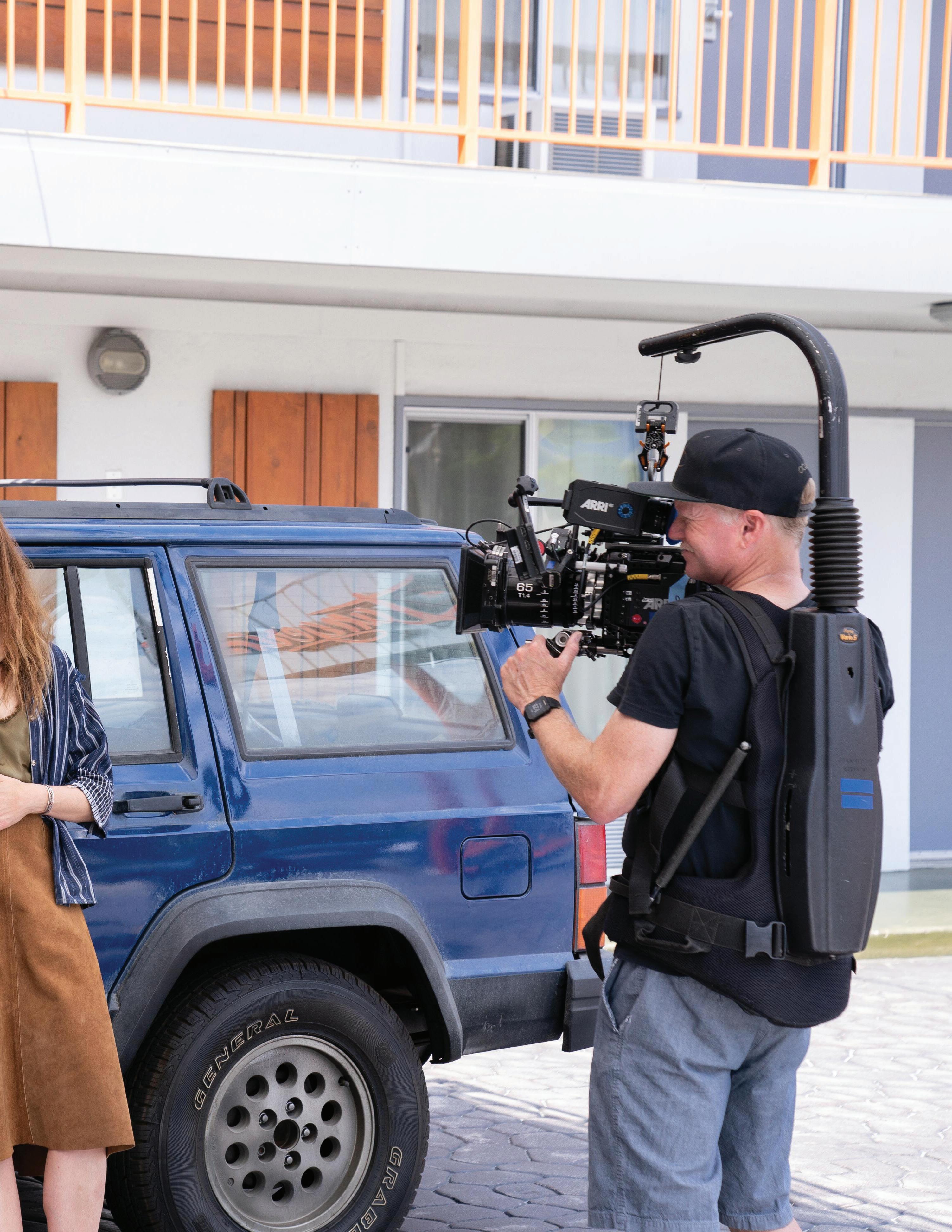 PHOTO BY JESSICA BROOKS
PHOTO BY JESSICA BROOKS
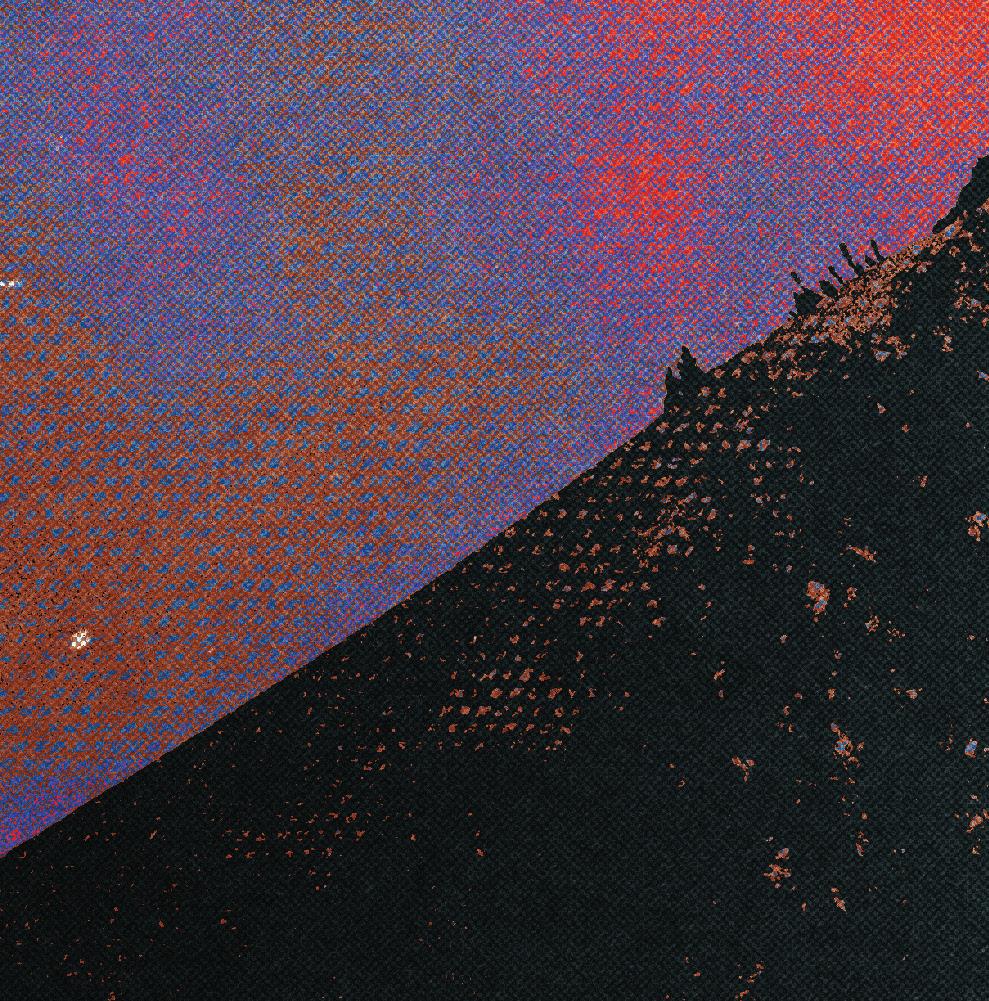
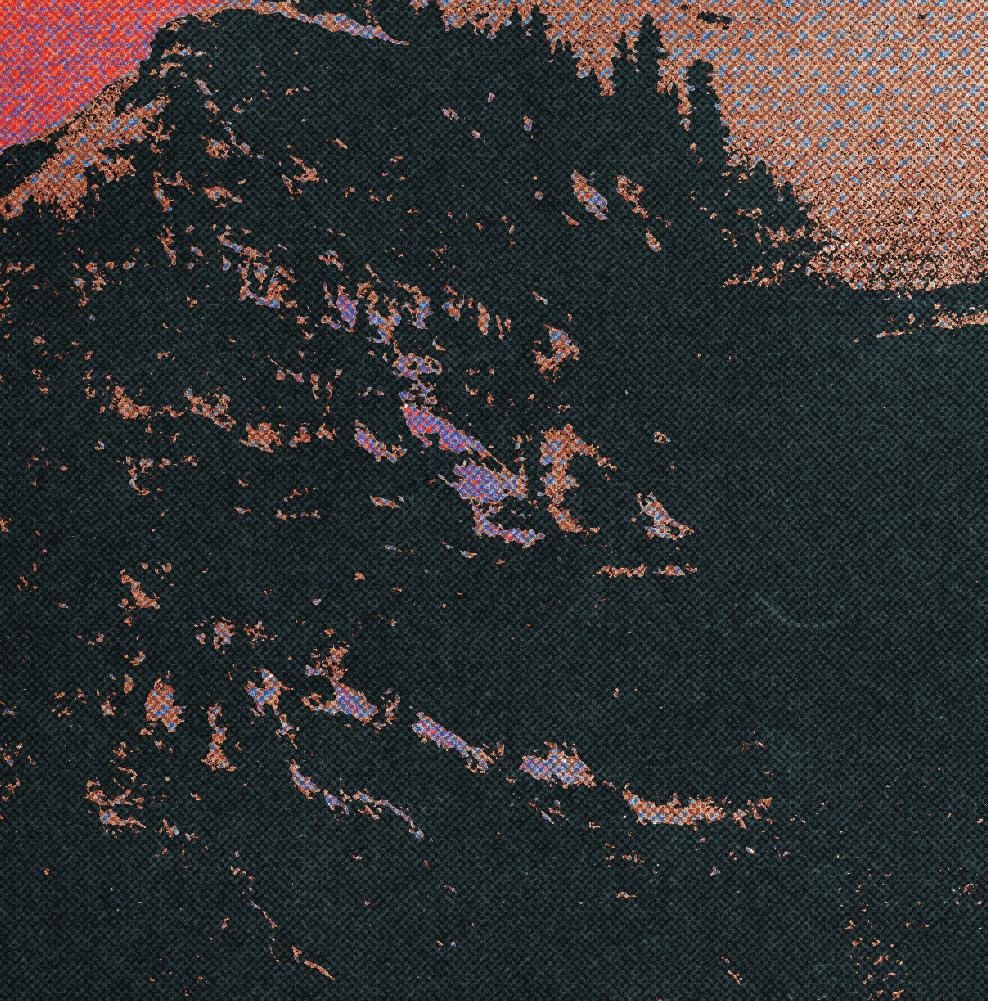

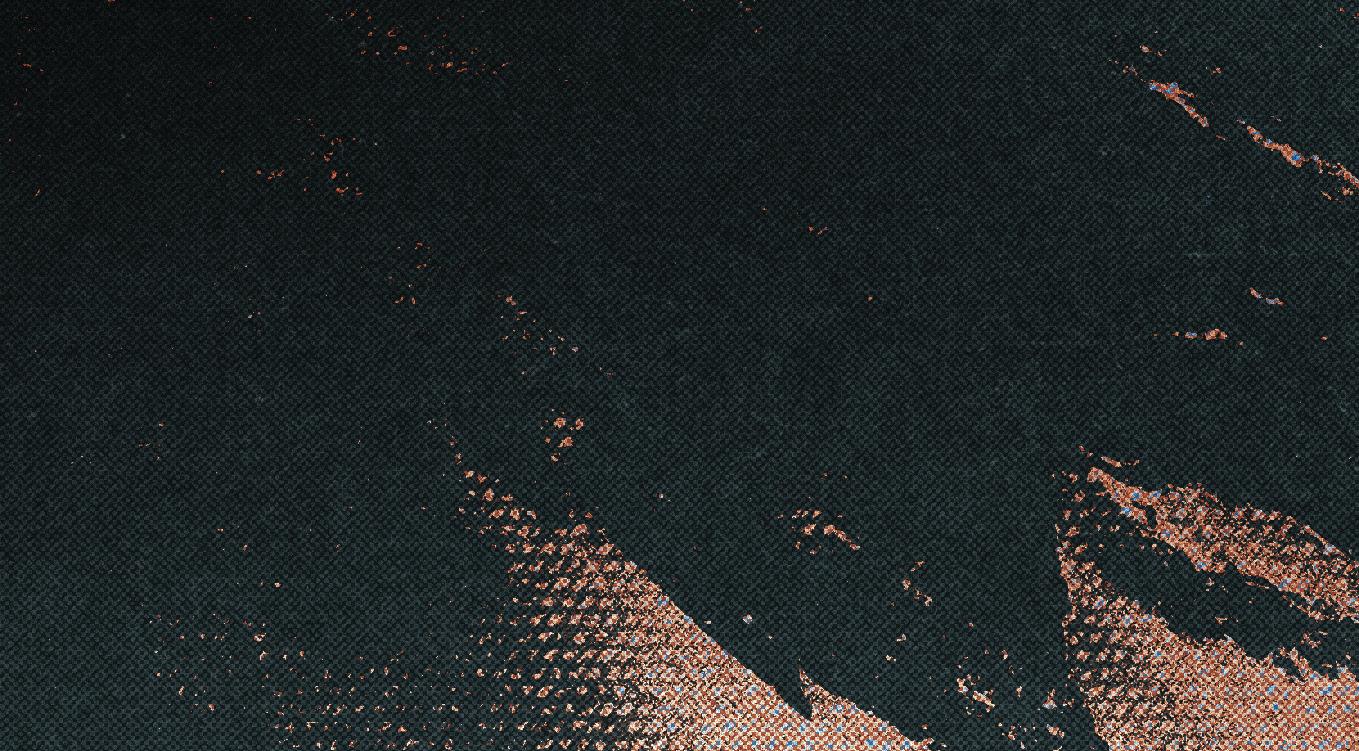


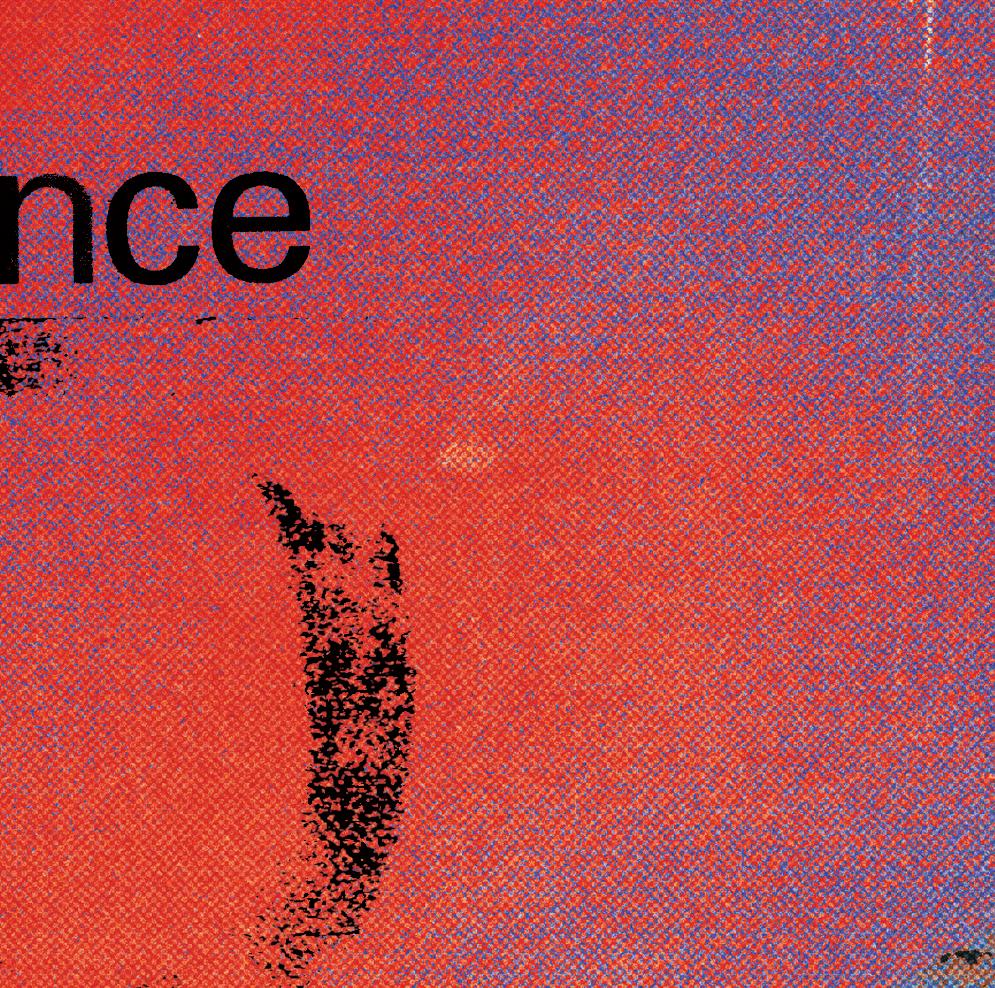
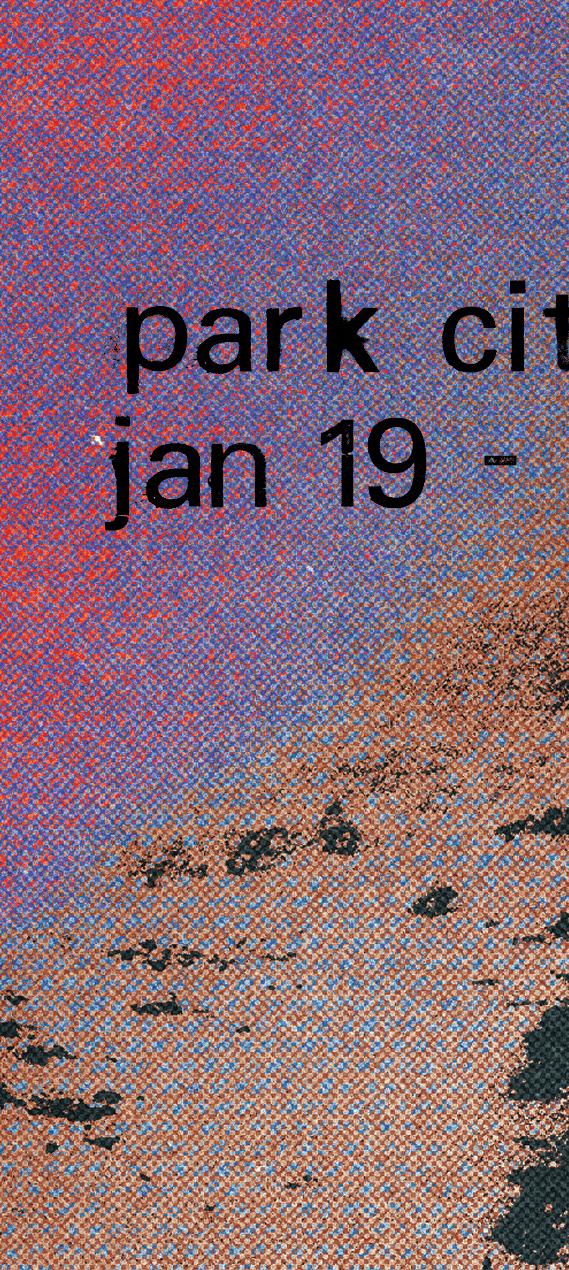

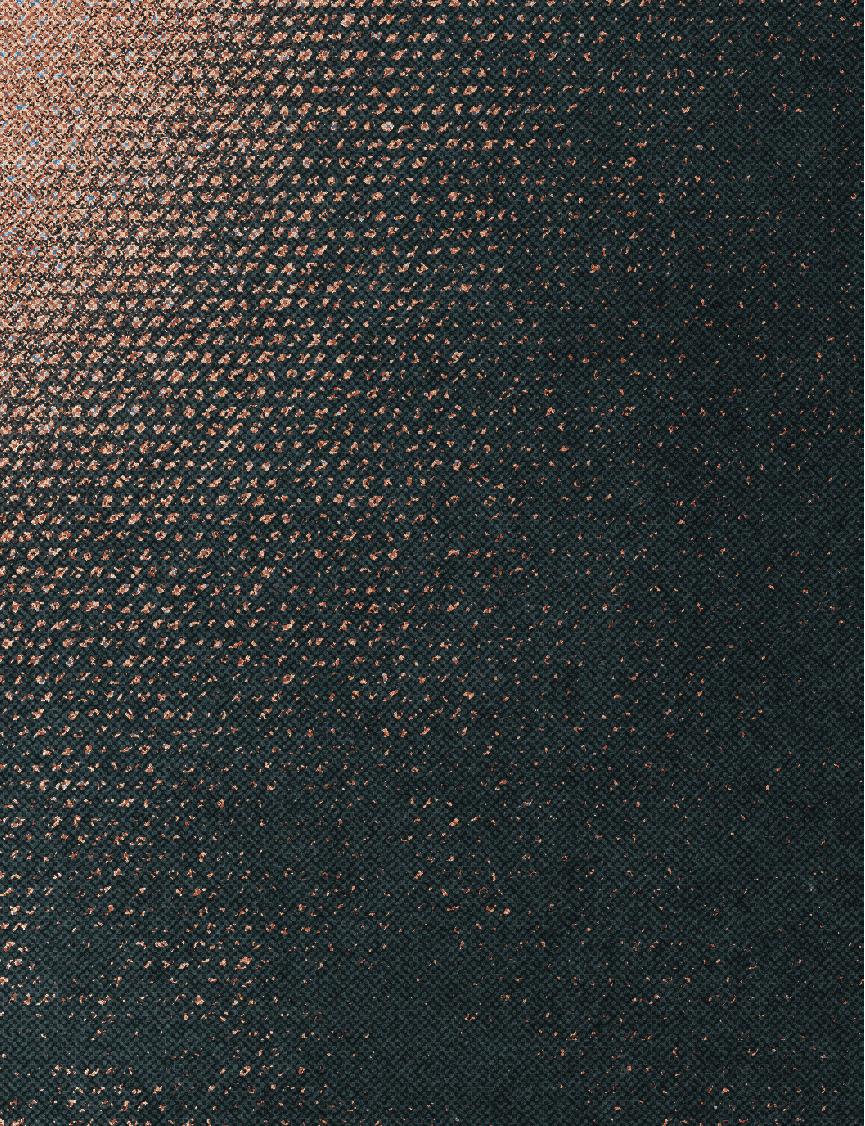
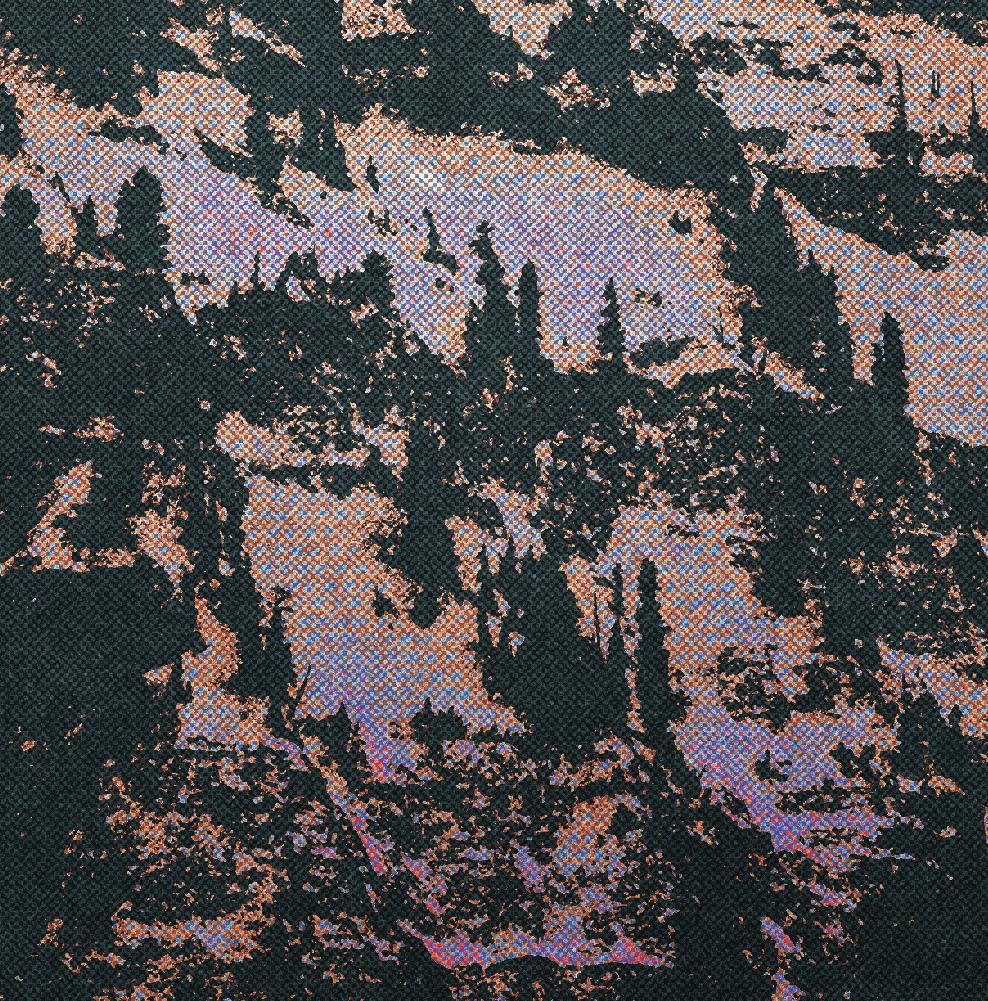

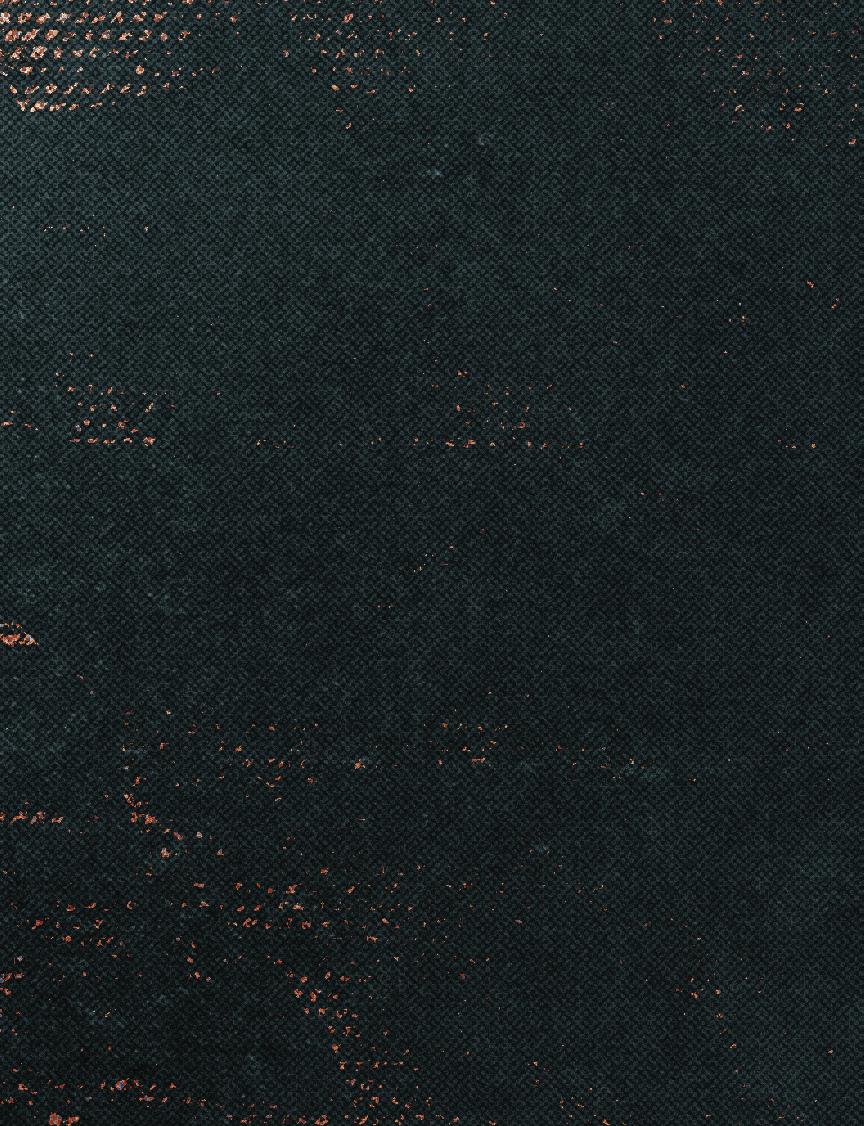
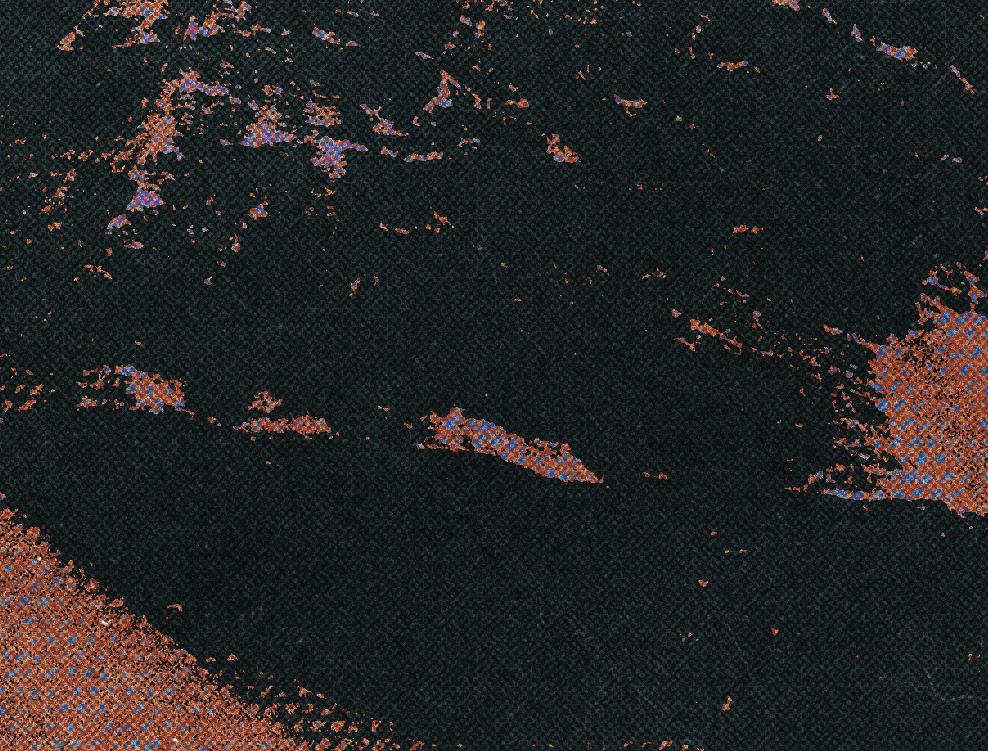
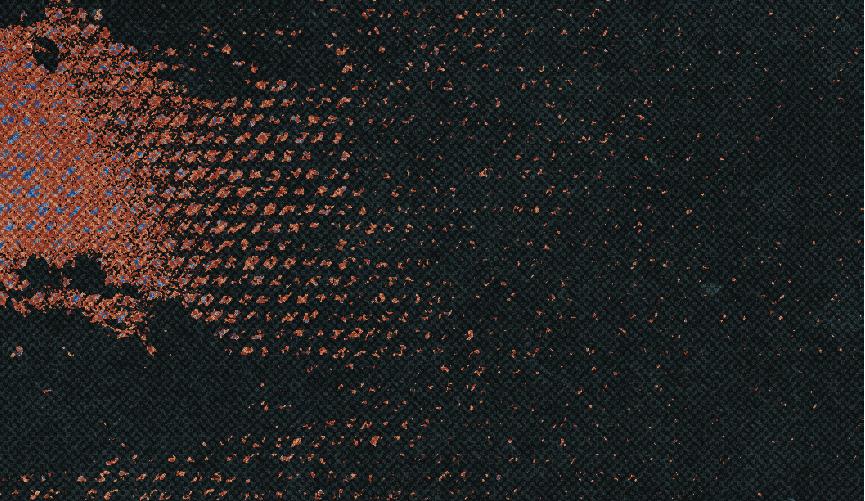

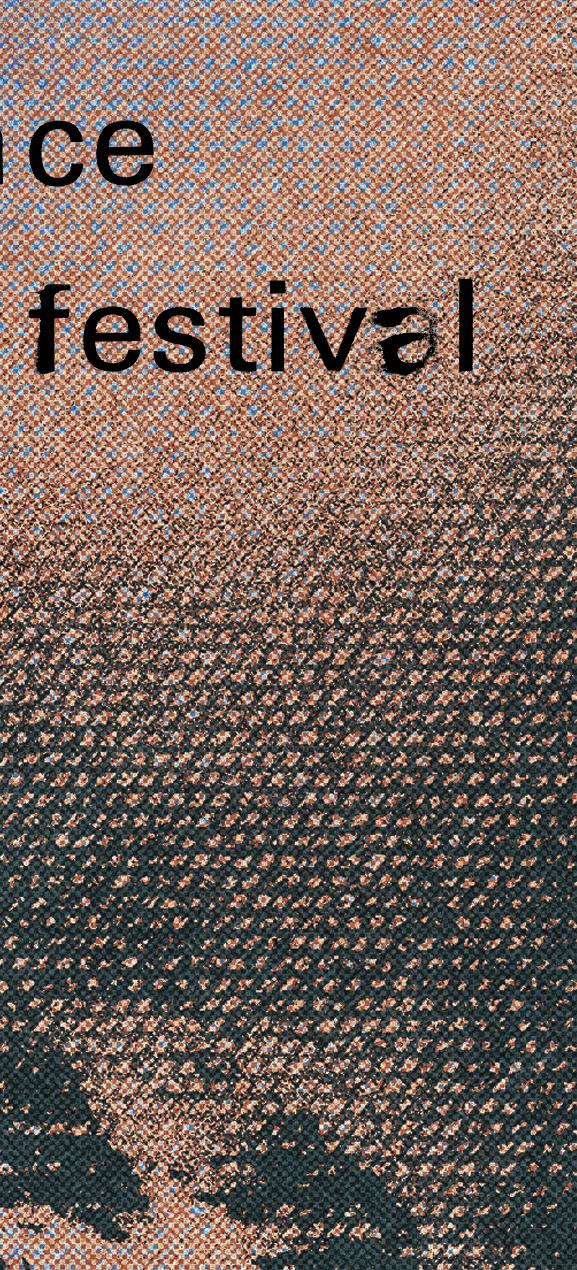

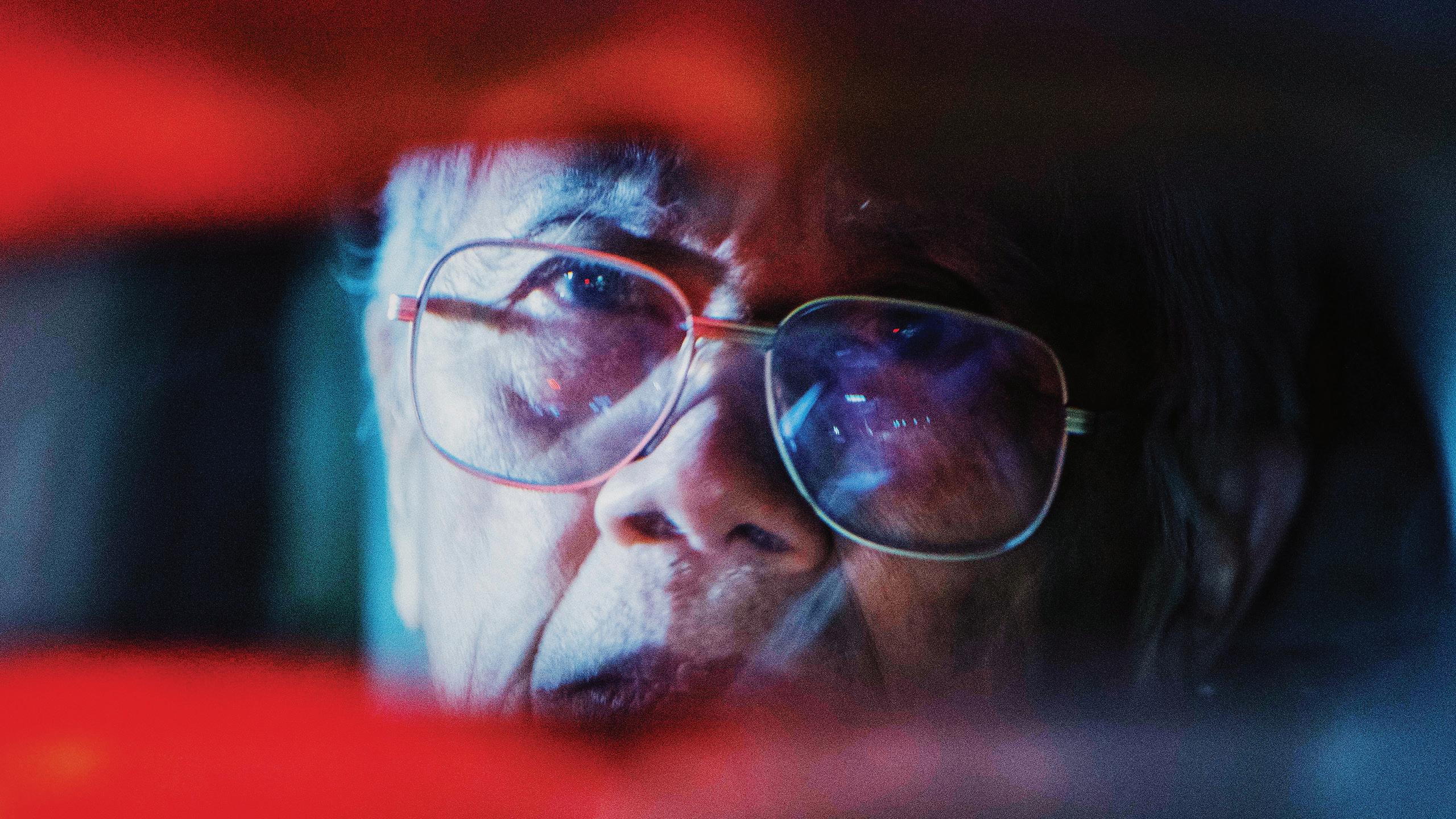
 THE ACCIDENTAL GETAWAY DRIVER / PHOTO BY RON BATZDORFF
THE ACCIDENTAL GETAWAY DRIVER / PHOTO BY RON BATZDORFF
AAPI films (and filmmakers) were having a moment at Sundance 2023; will it stick or fade away?
 by David Geffner
by David Geffner
JAMOJAYA / COURTESY OF ANTE CHENG
SHORTCOMINGS' DIRECTOR OF PHOTOGRAPHY SANTIAGO


GONZALEZ SAYS HE AND DIRECTOR RANDALL PARK "DIDN’T APPROACH THIS AS A STRAIGHT-UP COMEDY WHERE WE ALWAYS HAD TO BE PULLED BACK TO SEE AND HEAR THE JOKES. OUR FEELING ABOUT THE CAMERA WAS MAINLY DRIVEN BY THE CHARACTERS AND WANTING TO MAKE EACH OF THEIR STORIES REAL AND TRUE.”
PHOTOS TOP/BOTTOM BY JON PACK
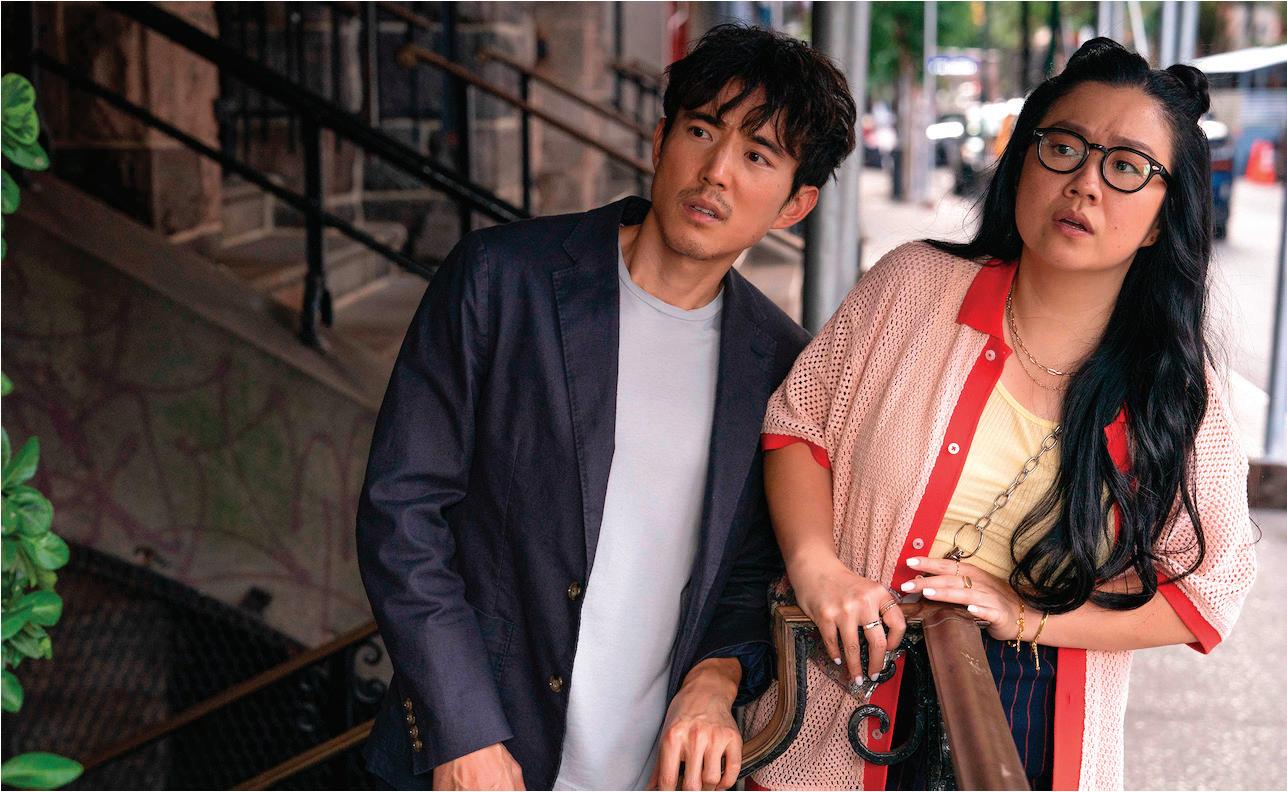
78 APRIL 2023
Indie film fans will recall a watershed 2001 Sundance when Writer/Director Justin Lin’s dark and edgy Better Luck Tomorrow screened in the prestigious U.S. Dramatic Competition section. Lin’s story of a group of over-achieving Orange County, CA teenagers who veer into crime was kinetic and compelling (as shot by Patrice Lucien Cochet), and it announced a fresh new voice in Asian-American and Pacific Islander (AAPI) filmmaking. Its characters were deeply flawed and light-years away from those of The Joy Luck Club, The Wedding Banquet, The Debut, Combination Platter, or any number of AAPI films that hit American screens before or after BLT. Those who saw Lin’s movie in Park City were left with the impression that AAPI films (and filmmakers) were primed for a break-out run well into the new millennium.
Although that didn’t happen (no one can fault the Taiwanese-American Lin, who veered into mainstream fare and a career that has produced more than $2 billion in worldwide grosses, including five films in The Fast & Furious franchise, Star Trek: Beyond, and such hit episodics as True Detective, Community, Swat, and Magnum P.I.), a quick flash forward to the 2023 Sundance Film Festival may well announce a new group of AAPI-themed features that hold a similar promise, albeit two decades later.
“I feel like our movie is connected to Better Luck Tomorrow , not just because we’re premiering at Sundance but because it’s also based around flawed characters,” shares director Randall Park, whose feature, Shortcomings, screened in the U.S. Dramatic Competition. “Better Luck Tomorrow was ahead of its time – to have the audacity to make a movie about privileged Asian-American teenagers who become criminals bothered some people,” Park adds. “The famous story [from Sundance] is about the critic who stood up at the Library screening after it was over and said, essentially, ‘How dare you make your people look so bad?’”
Written by Adrian Tomine and based on his graphic novel, Park says Shortcomings is in “the same vein” as a film like Better Luck Tomorrow, which couldn’t care less about traditional AAPI cinematic themes of success, assimilation, immigration, or generational confusion. In fact, Shortcomings’ main character, Ben Tanaka (Justin Min), as per the graphic novel, is a grade-A jerk. “We didn’t consciously talk about the look and framing being like a comic book panel,” Park tells me in a recent Zoom interview with Shortcomings’ Director of Photography Santiago Gonzalez. “But we did talk about being intentional with the framing and showcasing these performances. We wanted to use the surroundings to reveal something about the situation and characters, and in doing that, some of the wide shots do end up feeling like comicbook panels.”
Gonzalez, whose extensive music video credits include work for Beyoncé, Alicia Keys, John Mayer, Katie Perry, and Dua Lipa, says, “we wanted to have the look of the film reflect the current status of the characters’ relationships. With Miko and Ben’s apartment, we divided them with walls or counters to show their growing separation. Even when they’re fighting they’re in different rooms and talking to walls.”
Unlike the black and white graphic novel, color plays a big part in Shortcomings . Gonzalez says the first conversation he had with Park involved how to distinguish the two main cities in the story –Berkeley, CA, where Ben lives and works managing an art house cinema, and New York City, where his girlfriend, Miko Hayashi (Ally Maki), moves, ostensibly for a two-month internship – through color and tone.
“New York would be warm and sunny, and the Bay Area, in California, much cooler,” Gonzalez continues.
“Ben’s mindset at the beginning of the story is stuck in this drab place – he’s bored and disinterested. When Miko, and then Ben’s best friend, Alice Kim [Sherry Cola], both move to New York and Ben eventually follows them, it’s like a restart. New York is bright and peppy and holds new possibilities.”
Park says the movie’s primary themes are “personal growth” and Ben’s reluctance to change.
“The East Bay is a place where Ben could live forever,” Park describes. “It’s comfortable and easy and we wanted the color palette to reflect that. Ben’s the last person who would move to New York City, a place he hates for its gentrification and bravado, and we wanted to capture all these swirling emotions he’s having – desperation, resentment, and discovery – in how we shot New York.”
Regarding camera movement and lensing, Gonzalez says there was a mix of handheld, stage/ studio, and static locations depending on the narrative. “Randall and I talked about the camera being a fly on the wall to observe these people living their lives,” he adds. “But we also bring the camera into the action, like when Ben confronts Miko’s new boyfriend on the streets of New York. I used Canon Rangefinders to give a vintage feel to what was mostly a clean palette. The Rangefinders have this amazing falloff around the edges.”
Gonzalez points to the beginning of the film,
“when Ben’s at the movie premiere and we shot anamorphic with the Hawk V-Lites, and all on Steadicam,” he adds. “We certainly didn’t approach this as a straight-up comedy where we always had to be pulled back to see and hear the jokes. Our feeling about the camera was mainly driven by the characters and wanting to make each of their stories real and true.”
Park and Gonzalez both laugh when asked about the visual references they drew from, mainly for their broad cinematic range. “We talked about [Noah Baumbach’s 2019 romantic drama] Marriage Story [shot by Robbie Ryan] for the overall scene development,” Gonzalez recalls. “From Annie Hall , we looked at that voyeuristic aspect. And a movie like [Spike Jonze’s 2013 feature] Her [shot by Hoyte Van Hoytema, FSC, ASC] was great to look at for Ben’s isolation, once Miko leaves and he’s alone in his apartment. And even though Frances Ha [Noah Baumbach again, from 2012] was shot very differently, we took a lot of inspiration from its framing.”
Park says the collaboration with Production Designer Bill Boes and the work of Locations Manager Nathan Gendzier hark back to the duality of East Bay and New York, which sit as opposites in the characters’ lives. “Due to budget and time constraints, a lot of the East Bay had to also be shot in New York,” Park shares. “So, for example, the Berkeley party house where Ben meets Sasha [Debbie Ryan] was shot in Staten Island. An interviewer who’s from the East Bay insisted to me that he’d been in that house. I said, ‘No you have not! That house is in New York.’”
Gonzalez adds that because the film is almost “100 percent real locations, my main thought was to light everything from the outside and use as many practicals inside as possible. To me, this movie, like all of the movies we used as references, needed to look real – not overly lit or stylized. It’s about real people
79 APRIL 2023
and real consequences in the choices they make. That was always uppermost in our minds.”
Writer/director Justin Chon told the audience at the Sundance screening of his new feature, Jamojaya, that AAPI stories are always uppermost in his mind, “and,” the Korean-American, Orange County-raised filmmaker joked, “if anyone has a problem with that, we can meet afterward in the lobby.” Set on the island of Oahu, Jamojaya is the fourth feature Chon has made with Local 600 Director of Photography Ante Cheng (Blue Bayou, Ms. Purple, Gook), with the pair also having shot Apple TV+’s Pachinko
Centered on a complex father-son dynamic, Jamojaya draws from elements of Asian magical realism in telling its story of a young Indonesian hip-hop artist, James (Rich Brian), trying to break free of his father/manager (Yayu A.W. Unru), while recording a new album at his record label’s Hawaiian compound. Torn between his father’s smothering love and attention and the record label’s demands, James bounces between two worlds – Indonesia’s traditional past and pop culture’s modernity.
Chon, who co-wrote the film with Maegan Houang, says he and Brian spent “a few years talking about the story. Jamojaya was written for [Brian], so it was either we find something we both wanted to say or there would be no film,” Chon explains. “We had a lot of conversations about his father, and it seemed to strike a deep chord – that was my first way in to find something I felt would be emotionally
resonant. There was a specific story his manager –whom I have been friends with since we were 19 –told me about Brian and his father that made him very emotional. I knew that was the gold.”
As to the film’s visual tone, Chon says he was “definitely inspired by the magical realism of Southeast Asian films. There is a long tradition of that type of filmmaking from the region,” he continues. “The way we designed it was to have a lot of still shots on sticks to give an uneasy feeling. We worked closely with the VFX Supervisor [David Matheny] through the course of filming and in post to find a way to effectively accomplish the tone and manner for the dream sequences.”

As to his ongoing creative partnership with Cheng, the filmmaker says they have a visual shorthand. “We work in a very fluid way that allows us to have space to experiment,” Chon describes. “Especially with this film, I tried to create an atmosphere where we could try things without fear of judgment or pressure.”
Cheng notes that his first film with Chon [Gook] “was a passion project, shot with all our friends and almost no budget. We had total creative freedom making that movie,” he notes. “It won the Audience Award at Sundance [in 2017], and my DP career and Justin’s directing career started together from that point.”
The pair began Jamojaya after having spent eight months shooting Pachinko – in Toronto and Korea. And, Cheng adds, “we wanted to recapture the magic from that first film – a simple and pure kind
of filmmaking. Justin originally wanted to shoot the whole movie on Mini DV, so we went on eBay trying to find stock,” he laughs. “While prepping [Jamojaya], Blue Bayou premiered at Cannes, and when we saw that film [in Super 16 millimeter] projected on the big screen, the idea of shooting Mini DV [for Jamojaya] grew into using 35 millimeter. The main thing with this film was to push each other creatively and elevate [our art and craft].”
Cheng says he and Chon had wanted to include less handheld than in their past projects. “Our intention was to have the cinematography be quiet and let the performances take center stage,” he explains. “But as we shot, some scenes did feel better with the camera on my shoulder. Of course, carrying around an Arricam LT with a 400-foot mag of film on the beach is no joke!”
Much of the story takes place in the open-air guest house where James is staying. As visualized by Production Designer Bo Koung Shin, whom Chon and Cheng had worked with on Blue Bayou and Ms. Purple, the main room is filled with textural elements – thick billowing drapery and deep brown Koa wood furniture. “All that wind was the real breeze of Hawaii,” Cheng continues, “and shooting on film helped a lot as I didn’t have to put in too much fill light, knowing the highlights would always hold. Film let us shoot in a more naturalistic way, with a smaller footprint for grip and lighting.”
Cheng chose all vintage Japanese optics –Kowa spherical prime lenses and a Canon K35 zoom – with a scope finish. “It was my first time shooting
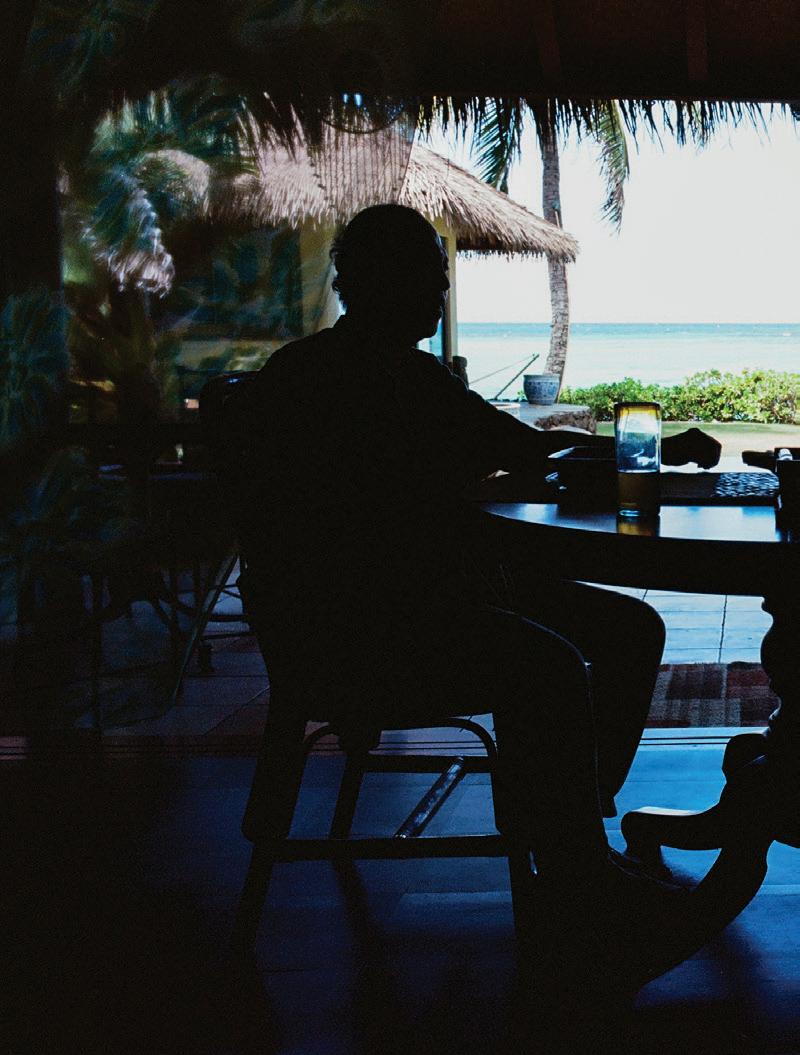
80 APRIL 2023
in Hawaii,” Cheng recounts, “and the crews there are so great; they came super early in the morning to get a surf in before we started, went back in the water on our lunch break, and then hung out after wrap in the guest house to have barbecue and watch the meteor shower! The thing about Hawaii is you have to embrace the changing weather, and the great thing about shooting film is I knew it could handle whatever we encountered.”
While the handmade father-son encounters were shot on film, Cheng used the Sony VENICE for segments where James interacts with his record company handlers. “Using very fast lenses, with the large Sony sensor, and keeping the camera static, all pushed the isolation James is feeling with the music industry people,” Cheng states. He praises Steadicam Operator Abraham Williams for a long oner on the VENICE as James heads out to perform. “Abraham was walking downstairs backward, and I was running around doing iris racks, and we somehow pulled it off,” he smiles.
Recalling several night exteriors written in the script that featured characters walking by the sea or mountains, Cheng says he told Chon, “‘Even if we had millions of dollars, I don’t think I could light these.’ But watching the moon rise at night, and looking at the schedule,” he adds, “I told Justin and the producers if we used a lens that was slightly faster than a T.1, scheduled the scenes on full moon days, and timed them with the moon rise, we could get an exposure with the ocean and the mountains. We prayed for no clouds and fortunately got some
JAMOJAYA WAS ANTE CHENG'S FOURTH FEATURE WITH WRITER/DIRECTOR JUSTIN CHON, AND THEIR FIRST SHOT ON LOCATION IN HAWAII. “SHOOTING ON FILM HELPED A LOT, AS I DIDN’T HAVE TO PUT IN TOO MUCH FILL LIGHT, KNOWING THE HIGHLIGHTS WOULD ALWAYS HOLD," CHENG EXPLAINS. "FILM LET US SHOOT IN A MORE NATURALISTIC WAY, WITH A SMALLER FOOTPRINT FOR GRIP AND LIGHTING.” / FRAMEGRABS COURTESY OF ANTE CHENG
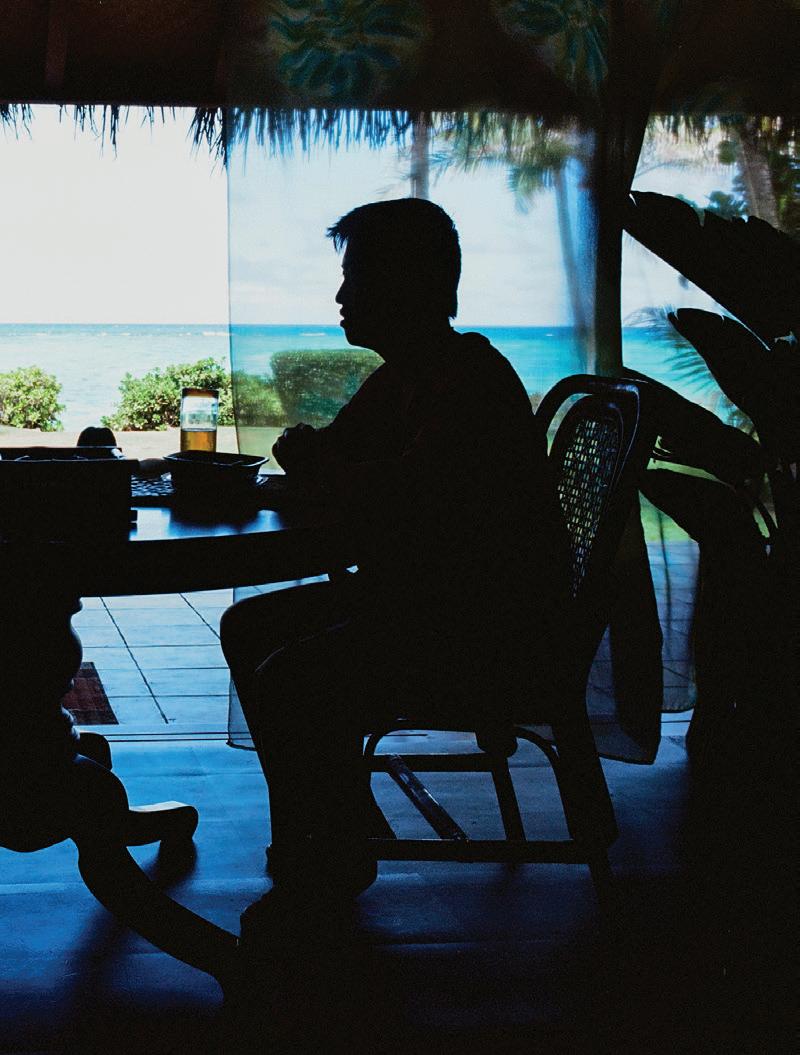

very memorable, magical footage.”
Chon says he doesn’t know whether a movie like Jamojaya can impact the conversation around AAPI films and filmmakers. “I guess that’s up to the viewers and people watching,” he offers. “I focus on what is within my power, which is making films consistently. The main thing is that I wanted to tell an authentic Indonesian relationship drama between father and son. Hopefully it resonates with people who see it.”
Of the many AAPI films at Sundance 2023 (including Celine Song’s cross-continental romance, Past Lives) Sing Lee’s The Accidental Getaway Driver may be the most surprising. Based on a 2017 GQ article about a real-life abduction of a Vietnamese taxi driver in Santa Ana, CA, Lee, who won Sundance’s U.S. Dramatic Directing Award, says he was drawn to the “soul of the story, which was four characters who have been misrepresented throughout the history of cinema,” he shares. “When someone at our [Sundance] premiere asked why I made it, I said, ‘Yes, I could see my personal story, and those of family members, reflected. But more than that was the fear of the ‘other’ version of what someone else might make. That version would probably be entertaining, but we’d miss the chance to tell a more tender, fragile story of four men, all of them immigrants or refugees in various ways. Incarcerated, or cast-off people, are often diminished in [cinema], and I wanted to bring that humanity front and center.’”
The story begins when a 71-year-old Vietnamese
cab driver, Long Mã (Hiep Tran Nghia), answers the phone in his apartment for a late-night pickup in Orange County, California’s Little Saigon neighborhood. The fare soon begins a journey not even Mã, a former lieutenant colonel in the South Vietnamese Army (SVA) and one-time prisoner in a Communist work camp, could imagine. Forced to become the “getaway driver” by an unlikely trio of prison escapees – 18-year-old Vietnamese gang member Eddie (Phi Vu), Iranian mastermind Aden (Dali Benssalah), and criminal lifer Tây (Dustin Nguyen) – Mã is shuttled through motel rooms and driven hundreds of miles north as the trio desperately tries to formulate a plan. Most surprising of all is the bond he forms with Tây, who affords him the respect due an elder in Vietnamese culture. After ultimately saving Mã from being executed by Aden, Tây takes the counsel of Mã, a man whom he now calls “father,” and turns himself in.
Director of Photography Michael “Cambio” Fernandez first teamed with Lee on a long-form music project for Rich Brian’s The Sailor (the very same Indonesian hip-hop star of Jamojaya ). Fernandez says Lee had a specific vision for The Accidental Getaway Driver, “as he knew most of it would be shot in Little Saigon, at night.” And while they had shot spherical for their past projects – “my choice over anamorphic,” the DP notes, with Lee putting a letterbox on the final project – “I figured we might as well use the real thing, and get the depth and width needed to help us capture the enclosed environments we’d be in – the car, the motel, the van,”
81 APRIL 2023
WRITER/DIRECTOR
SING LEE SAYS THERE’S SOMETHING “MAGICAL” ABOUT HOW [DP MICHAEL "CAMBIO"] FERNANDEZ LIGHTS EACH FRAME. “HE MAKES GREAT USE OF PRACTICALS THAT EACH LOCATION DOESN’T FEEL LIT SO MUCH AS THE WORLD IS EMANATING FROM THE CHOICES THE CHARACTERS MAKE.”
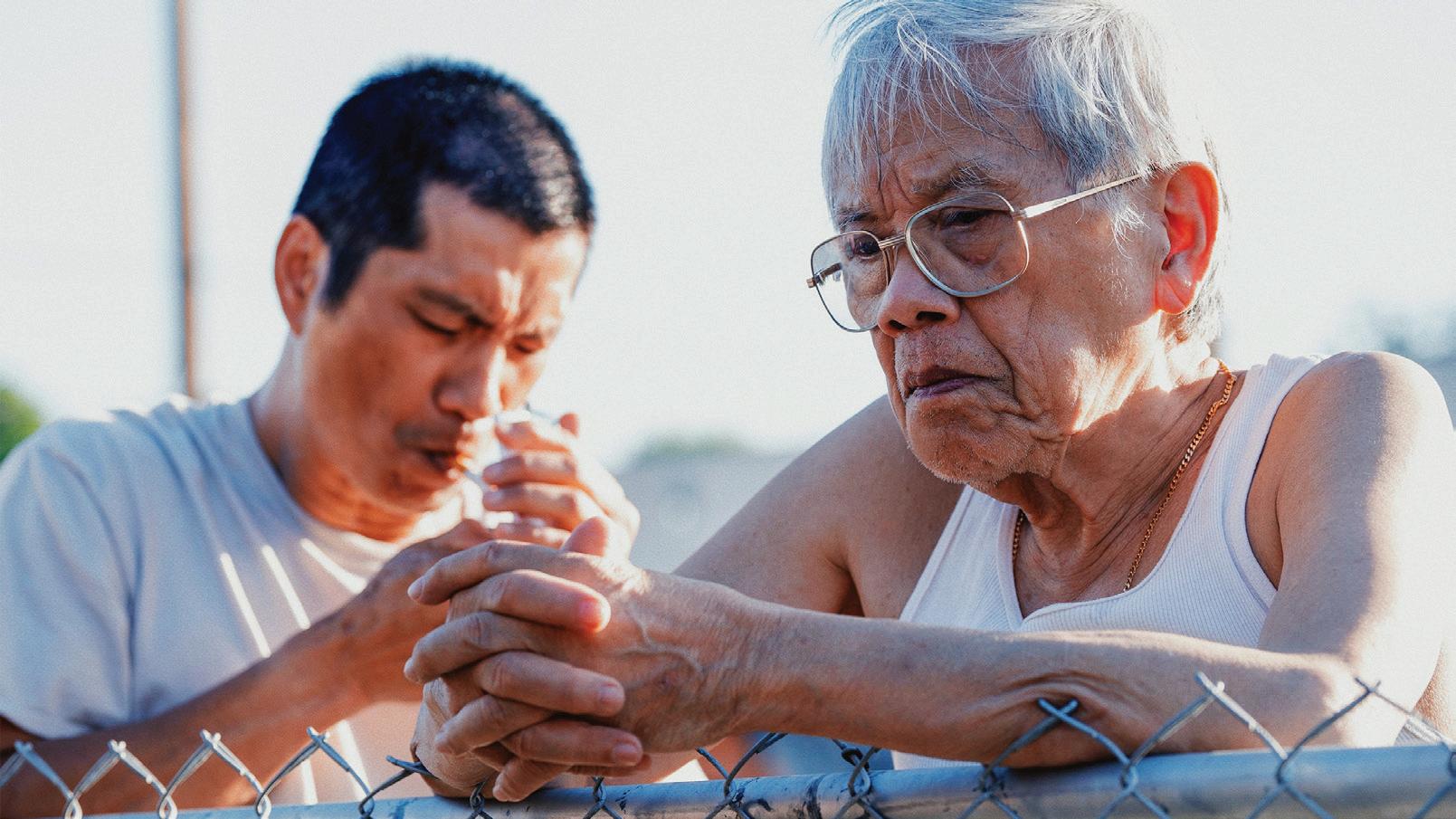
PHOTOS FROM THE ACCIDENTAL GETAWAY DRIVER BY RON BATZDORFF


82 APRIL 2023
Fernandez adds. “I love how the Hawk [anamorphic] lenses have such great character. They distort the image and fall off at the outer edges of the frame. I’m not a fan of anamorphic flare for narrative – it takes me out of the story whenever I see it. So, I tried to avoid flares as much as possible, or otherwise use the Lomo spherical lenses when the flares became too much.”
Lee says Fernandez “is self-taught through Latin cinema, and we connected over that. This film became an extension of what we’d been doing in our past work, and I never considered another cinematographer.” And basing the movie in Little Saigon, Lee wanted the tight-knit Vietnamese community revealed through visual detail. “I’m heavily influenced by Hong Kong and Taiwanese cinema, as well as British ‘Kitchen Sink Realism,’” he continues, “and all three of those tend to beautify the simple, everyday world of the stories being told. I’m quite particular about how the frame is composed, so creating this stillness [via wideframe anamorphic] allowed the real locations these characters inhabit to be discovered by the viewer.”
In fact, the anamorphic frame is used to box characters in, particularly at the outset when Long Mã is abducted, and then later as their resources run out, to render them small and impotent in the wide daytime exteriors. “If we know we’re going to be locked off [with the anamorphic frame],” Lee explains, “it’s important to choreograph the angles so it is not style over substance. Like when Tây and Long Mã are driving to the second motel, and their conversation breaks down, Tây’s single is not a standard close-up; it’s split down the middle. Or when Long Mã is going to lie about something: it’s not a clean single but a refracted view splintered in the rear-view mirror. Because Long Mã doesn’t speak or understand much English, his powers of observation are limited, which is why we used a lot of extreme close-ups as he tries to understand what’s happening.”
As for the dark and moody first half of the film, Lee says there’s something “magical” about how Fernandez lights each frame. “He makes great use of practicals that each location doesn’t feel lit so much as the world is emanating from the choices the characters make,” Lee describes. Fernandez says the film’s many night exteriors and interiors were one of the great photographic challenges of his career. “We had a small white hotel room, a tan interior car, and a red-clay hotel room as the main locations,” he recounts. “The question was how to simplify and not try to make it look like a
larger-budget film, with a Tier 1-budget lighting kit. My thought was to embrace the blacks and negative space and light when needed. I took inspiration from films like Le Havre [shot by Timo Salminen] and mixed in hard light.”
Little Saigon at night is mainly old tungsten streetlights and neon storefront signs. Fernandez says he worked with Velem Colorist Houmam Abdallah to develop a LUT that “helped us soften the world a bit and added some blues in the shadows. From there that blue became actual day as the movie progressed,” he explains. “The first time we see daylight is halfway through the film when Tây and Long Mã go outside for a cigarette. I wanted that very bright so the audience could feel daytime for the first time.”
Lee says the story moves from darkness – when we first see Long Mã, the dispatch call wakes him up – to light, and a final shot of Long Mã back in his Garden Grove complex on the phone with Tây in prison. “These characters exist in the shadows, both in reality as prison escapees, and, particularly with Tây, in the shadows of his misgivings,” Lee offers. “But as their options run out, they are forced to exist in the harsh daylight, and the story, visually and literally, reflects that. When we arrive at the ocean and we have this turbulent fight between Aden, who wants to execute Long Mã, and Tây, who comes to save him, Long Mã is like a lamb going to slaughter. He’s just trying to absorb what he believes will be his last few moments of life.” Fernandez says the extended fight scene in the ocean was the only time the camera went handheld. “We used natural light and some bounce and just jumped in with the actors and shot it,” he recalls. “It was one of my favorite moments to shoot and my first fight scene.”
For the challenging fight scene and the many late-night exteriors, Fernandez praises the contributions of his large union camera team. “They were diverse, amazing, and all Local 600,” he announces. “They were super helpful and professional through all the overnight shoots. I have to give a special shout-out to my 1st AC Christine Hodinh, who is from that community and is doing big things in our industry. She was the absolute best, and I couldn’t have done it without her.”
Where do these three AAPI-themed films (and many others at Sundance 2023) fit in the grand scheme? The Taiwan-born, L.A.-based Cheng says one of the great strengths of the U.S. film industry “is that it’s big enough to support stories of various
scales and budgets from all different cultures,” including AAPI filmmakers. “U.S. filmmaking is global, and that expands the stories being told,” Cheng shares. “I don’t think an Asian-American filmmaker today needs, or should even try, to replicate what Wong Kar-Wai did with Chris Doyle in the late 1990s and early 2000s to have an original voice. We have platforms like Sundance to support original AAPI work. On the studio side of things, Justin and I shot Pachinko, a U.S. production made by Apple, spoken in Korean and Japanese, that is as authentic as can be, shooting in the locations where it was scripted.”
As to authenticity, Park says that although Shortcomings doesn’t have the traditional markers of AAPI cinema, “it’s every bit as authentic and representative of a community I know very well and am a part of.” With regard to Shortcomings’ opening scene, where Ben is aghast at Miko’s (and the entire audience’s) fawning reactions to the Crazy Rich Asians -type premiere they’re attending, Park says one film can’t represent everyone.
“ Crazy Rich Asians was a huge moment for AAPI cinema and a huge hit,” he continues. “But there were people who didn’t feel it reflected their experience or that they had to ‘like it’ just because they’re Asian. Shortcomings doesn’t take a hard stance [on AAPI film trends], but if there’s any comment in that opening scene, it’s that one film can’t bear the burden of representing everyone. If anything, it’s more reflective of narrative scarcity in cinema today, and the need for more stories from all different communities.”
Lee says the fact we’re still talking about another Sundance film ( Better Luck Tomorrow ) twenty years later and the hope of where AAPI cinema could be is a testament to the glacial pace of change in this industry. “But I do think, overall, we’re in an exciting space,” he concludes. “The many conversations I had at Sundance, with people who were not Vietnamese, or even Asian, and who still connected personally with elements of this story, were the very best part of sharing this film with the world. To me, it’s deeply important that we’re exposed to [AAPI films] that don’t define an entire culture by one aspect, i.e., Vietnamese characters drenched in the flames of war. Little Saigon, like many other Asian-American communities in the U.S., has been around for a long time. How beautiful would it be to have a wealth of stories taking people who have never been to those communities, or who don’t even know they exist, and have them come away from that experience connecting with their personal histories?
83 APRIL 2023
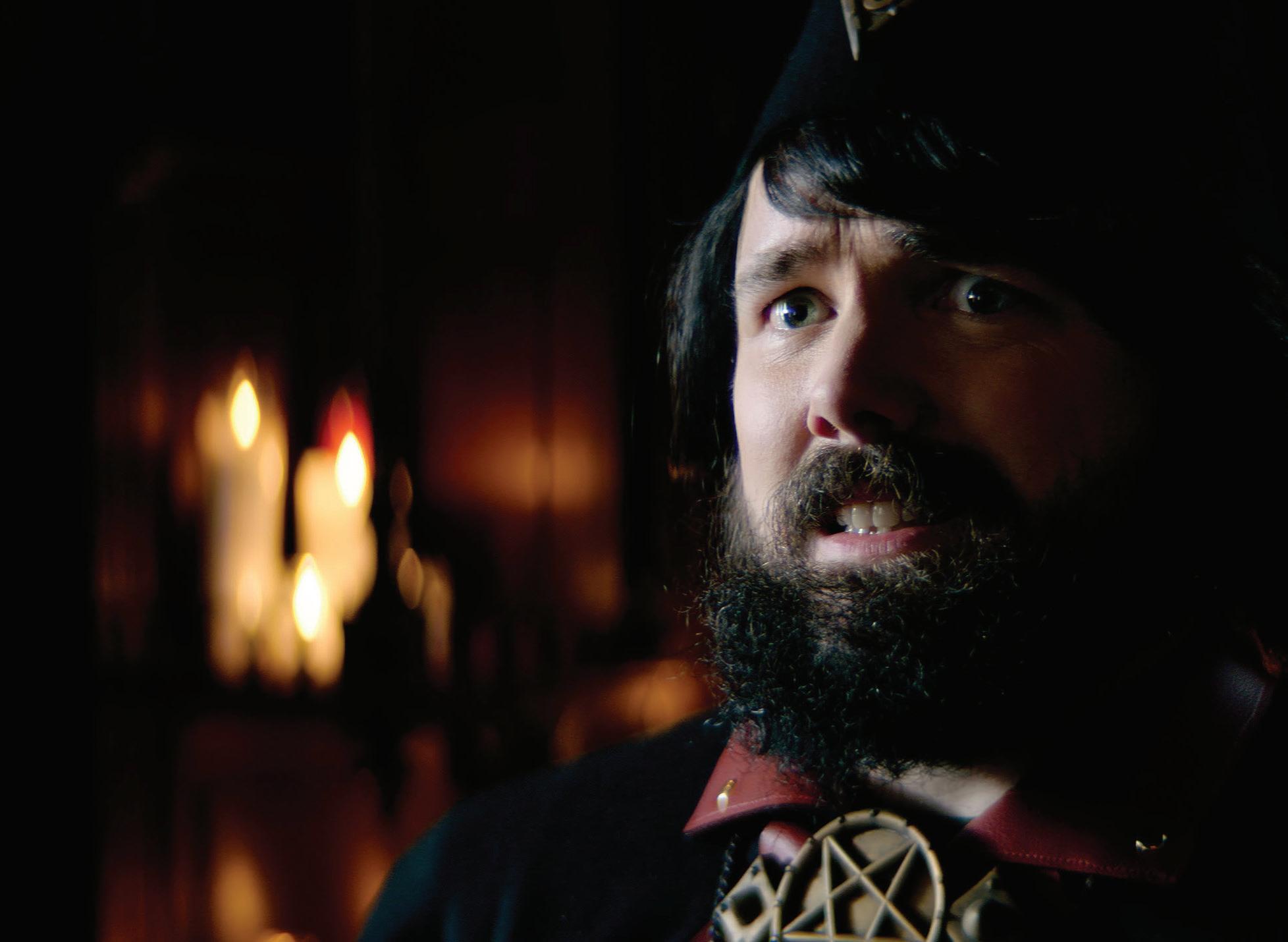

ONYX THE
FORTUITOUS AND THE TALISMAN OF SOULS / FRAMEGRAB COURTESY OF SUNDANCE INSTITUTE
Stay up late with the Guild camera teams who worked on these Sundance Midnight movies.
 by Michael Chambliss
by Michael Chambliss
85 APRIL 2023
BIRTH/REBIRTH / FRAMEGRAB COURTESY OF SUNDANCE INSTITUTE
Sundance filmmakers who have ever ventured out for a midnight fright treat (usually accompanied by nachos-in-a-tray and buttered popcorn) in anticipation of being scared silly, know that staking out fresh turf in the low-budget horror genre is no easy task. This makes the fiercely independent vision of two Local 600-shot features, Onyx the Fortuitous and the Talisman of Souls and Birth/Rebirth, that much more impressive – both films push the boundaries of indie horror with enough creative integrity and audience appeal to get a nod from the tough gatekeepers at Sundance’s Midnight selections. Both come from unexpected beginnings, with Onyx derived from a YouTube character’s fan base who supported a Kickstarter effort to launch the project, and Birth/Rebirth taking Mary Shelley’s classic Frankenstein trope on a ride to reveal the darkest (and goriest) sides of a mother’s love.
Onyx the Fortuitous and the Talisman of Souls
The movie’s titular lead character (played by the film’s writer/director Andrew Bowser) is a dissatisfied burger-flipper with a penchant for the dark side of the occult. He’s summoned, along with a few other likeminded would-be’s, to help his occultist idol execute a sinister plan that Onyx eventually discovers won’t go so well for them personally.
Director of Photography Dan Adlerstein reports that he watched the lead character and story grow over an extended period online. “Onyx is this very eccentric character that [Writer/Director/Actor] Andrew [Bowser] created years ago. He would seamlessly edit interviews of Onyx into otherwise straight news stories,” Dan shares. “When I first saw the clips on YouTube, I completely thought the character was a real person. It was only when I saw him in subsequent videos that I realized it was an actor. The thing that hooked me about the script is that it gives Onyx a backstory, discovering why he is the way he is. Even though it’s a film with a lot of plot, I found myself thinking more about character. Sometimes plot can get in the way of character, but I think this film holds the balance.”
Adlerstein says the Kickstarter campaign that got the movie going, included thousands of people making donations. “That wasn’t enough,” he continues. “But it was a seed, and we realized that this thing could happen if we could pull together more money – and we did! It’s so rewarding to have this kind of small Internet character build a fanbase and then see that fanbase have such a large part in getting the movie made.”
Film crews often tell stories about the fine line they typically walk on feature debut by an auteurtype filmmaker who’s been wedded to the project for years. But this was not the case with Onyx. “Andrew created this character, and lives and breathes this genre of movies,” Adlerstein adds. “This movie is completely an expression of the type of cinema he loves. And he wasn’t just the lead actor and director; he co-produced, wrote, and edited it. Yet even though it’s something that is so his, he was so open
to collaboration and input that working with him was truly a joy. The entire crew felt his love and passion and was rooting for Andrew because we knew how much it meant to him. It’s incredibly rewarding helping someone make a long-standing dream into reality.”
Watching Onyx in its Park City debut, it’s clear the film was shaped by the visual sensibilities of classic 1980s and 90s horror films without exactly emulating them. Indeed, right after Bowser sent Adlerstein the script, he sent a list of 15 movies for the DP to reference. That list included Gremlins , Fright Night, Nightmare on Elm Street, Child’s Play, and Pumpkin Head. “These are fun titles that make Andrew’s sensibilities crystal clear,” Adlerstein recalls. “We wanted to make our movie feel like those, but we weren’t trying to make a movie that looked like it came from the 1980s. We wanted modern aesthetics, sensibilities, and a lighting style that would feel to contemporary audiences how those films felt to their audiences when they first came out. For us it was about becoming immersed in a certain type of filmic space and just letting that come out on set. We weren’t making direct references, but instead making decisions about lens choices, camera placement and lighting styles that came from a place of ‘this just feels right.’”
Although the crew wasn’t as large as Adlerstein would have liked, he says, “sometimes you need to make those compromises so the money can go to the elements the audience is actually going to see on-screen.” This ethos drove many budgetary choices, like working with just a single camera style – the ALEXA Mini – even for large ensemble scenes including a seven-character dinner with upwards of six pages of dialogue. They also chose to use practical puppets instead of relying exclusively on VFX.
“The puppet design team, Kreature Kid, created these incredible puppets that were fun to shoot,” Adlerstein describes. “The only challenge was that they didn’t have legs. So, how do you move them from point A to B without seeing them move in a wide shot?” The answer is through an extraordinary
attention to detail from all of the film’s departments. “Everything in the movie, from the puppets, to props to costumes, to wigs, were so well made that I didn’t have to light them in a particular way to avoid any shortcoming,” he adds. “They could take the light and take the angles while still holding up to the camera. That opened up choices and made a big difference.”
With the exception of a week’s worth of work in Los Angeles, the majority of the film was shot over four weeks at a Gilded Age estate in Lennox, MA, named Ventfort Hall. Alderstein, who has an extensive resume in television and commercials, in addition to his work on indies, says that believable locations are vital to low-budget movies, “and our production designer, Teresa Strebler, and her team worked miracles. They turned a large empty doorway into an exquisite bookcase/secret door. They brought in perfectly matched walls to unrestored parts of the mansion to create corridors and secret passageways. They even created an entire cemetery on the grounds from scratch, including a ten-foot statue that plays an important role in the story.”
With the support of a technical team that included Local 600 1st AC Samuel Lusted, 2nd AC Danielle Bryant, Steadicam Operator Tom Dean, Key Grip John Lauterbach, and Chief Lighting Technician Rowan Lupton, Adlerstein was able to deliver close to final look images to editorial. “Our lighting package was modest without any big units, so we had to be inventive,” he states. “But I went in with a comprehensive look-book and strong ideas about how to approach lighting, and everyone got it.
“I’m a big believer in trying to nail the look on set, and being as close to the finished product as possible. I think it’s important to give the editor an accurate depiction of the mood and tone of the images, so that their emotional weight can accurately inform the edit,” he concludes. “I’m also a believer that the vibe on set translates to the end product. And for Onyx, it felt like everybody was truly in this together. The crew grew to become kind of a family, and that shows on the screen.”
86 APRIL 2023
DP DAN ADLERSTEIN SAYS ONYX WAS ABOUT "BECOMING IMMERSED IN A CERTAIN TYPE OF FILMIC SPACE AND JUST LETTING THAT COME OUT ON SET. WE WEREN’T MAKING DIRECT REFERENCES [TO THE MANY 1980S/90S HORROR FILMS WRITER/DIRECTOR ANDREW BOWSER BROUGHT FORTH], BUT INSTEAD MAKING DECISIONS ABOUT LENS CHOICES, CAMERA PLACEMENT AND LIGHTING STYLES THAT CAME FROM A PLACE OF ‘THIS JUST FEELS RIGHT.'" TOP/BOTTOM: FRAMEGRABS COURTESY OF SUNDANCE INSTITUTE
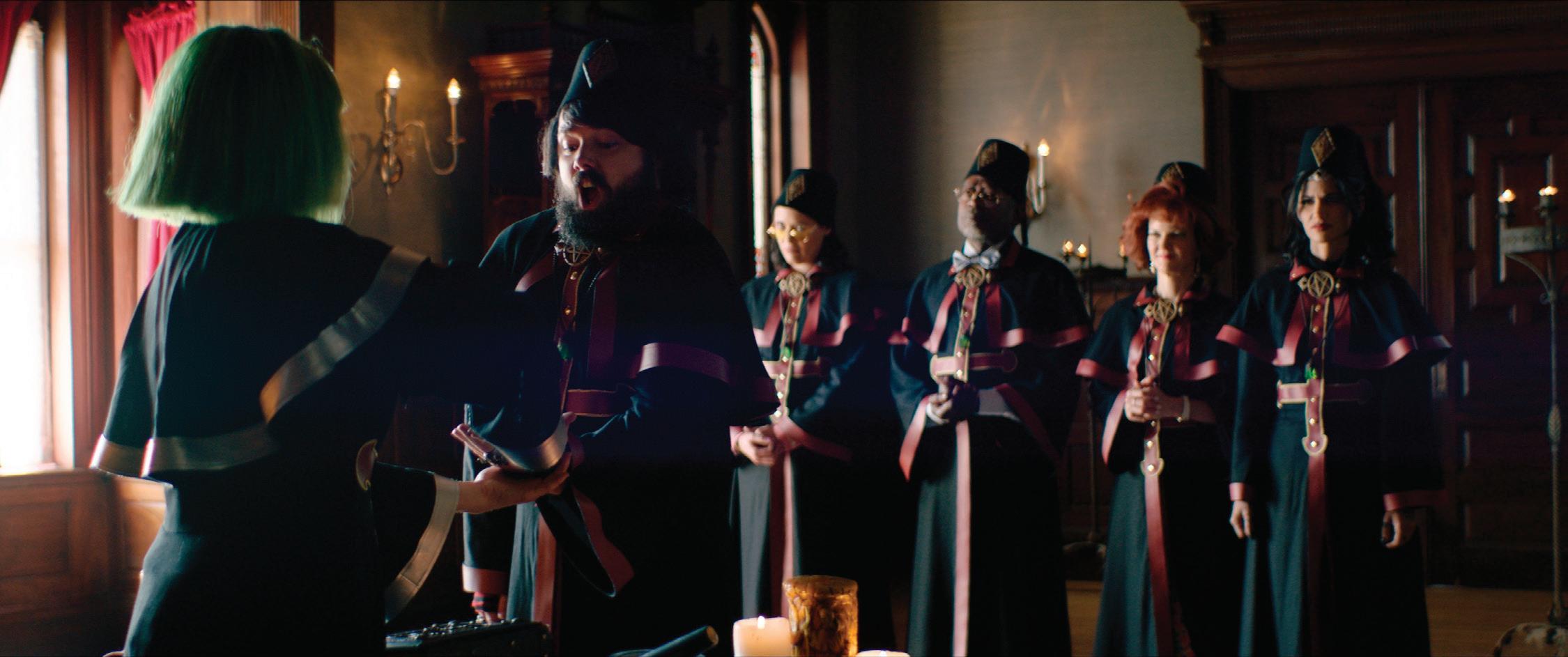

87 APRIL 2023
Birth/Rebirth
Dr. Rose Casper (Marin Ireland), who works in a hospital morgue, has finally succeeded in reanimating a dead pig (that she calls Muriel) in her apartment/ lab. Ready for the next step in her experiments, Casper sneaks home the body of a young girl, Lila (A.J. Lister), who has died suddenly of bacterial meningitis. Unbeknownst to the doctor, the child’s mother, Celie (Judy Reyes), works in the same hospital (although the pair have never met). When told her daughter’s body has “disappeared,” Celie undertakes a tireless search, leading to the discovery that Lila is unconscious, on a respirator, and alive in Casper’s apartment! What follows is an exploration, with some tastefully graphic moments, of how far a mother might go, the dark alliances she’ll form, and the rules she’ll shatter to bring her child back from the dead.
Director of Photography Chananun Chotrungroj, who went through the NYU film program with Writer/ Director Laura Moss, says this was her first feature with Moss. “We worked together on set a lot in school, but never as director and DP,” Chotrungroj reports. “Maybe they was the production designer, and I was the gaffer or a grip.”
Chotrungroj says that when she first received
Moss’s script, she had just given birth. “I could involve myself, not just as a mother but also as another kind of professional who has a dream of being successful,” Chotrungroj shares. “That’s a complex balance. This script is about two women, one of whom is into her own scientific research about bringing things back to life, and the other is a dedicated professional healthcare worker who is also a mother. This story is out there – one scene has a very realistic depiction of a C-section! Usually, that might be a sub-plot or something characters just mention, and we don’t get to see it. But Laura and I talked about that. They feel that we don’t have to be shy because it’s reality and something that women go through.”
With so much of the story taking place in a medical and laboratory environment, accuracy was key for the filmmakers. “It was very important to Laura that the medical elements be accurate,” Chotrungroj adds. “We had a medical supervisor and a pathologist on set. That gave me a lot of confidence and permission in my frame because I knew we didn’t have to hide anything or cheat an angle.”
Moss also gave Chotrungroj the freedom to choose shots that would best capture the scene. “Laura wanted to capture exactly what it feels like
USING ANAMORPHIC PRIMO LENSES FROM PANAVISION HELPED DP CHANANUN CHOTRUNGROJ (RIGHT IN NYC SUBWAY CAR) CRAFT THE VISUAL LANGUAGE OF THE FILM. “THE WIDE FRAMING ALLOWED US TO LAYER ACTORS IN WAYS THAT EMPHASIZED TENSION,” CHOTRUNGROJ SAYS. “WE ALSO USED THE ANAMORPHICS’ BOKEH AND BLURS TO DISTORT THE CHARACTERS AND BACKGROUND, CONJURING A SUBTLE GHOSTLY FEELING." ABOVE: FRAMEGRAB COURTESY OF SUNDANCE INSTITUTE/ RIGHT: COURTESY OF TRICIA MEARS
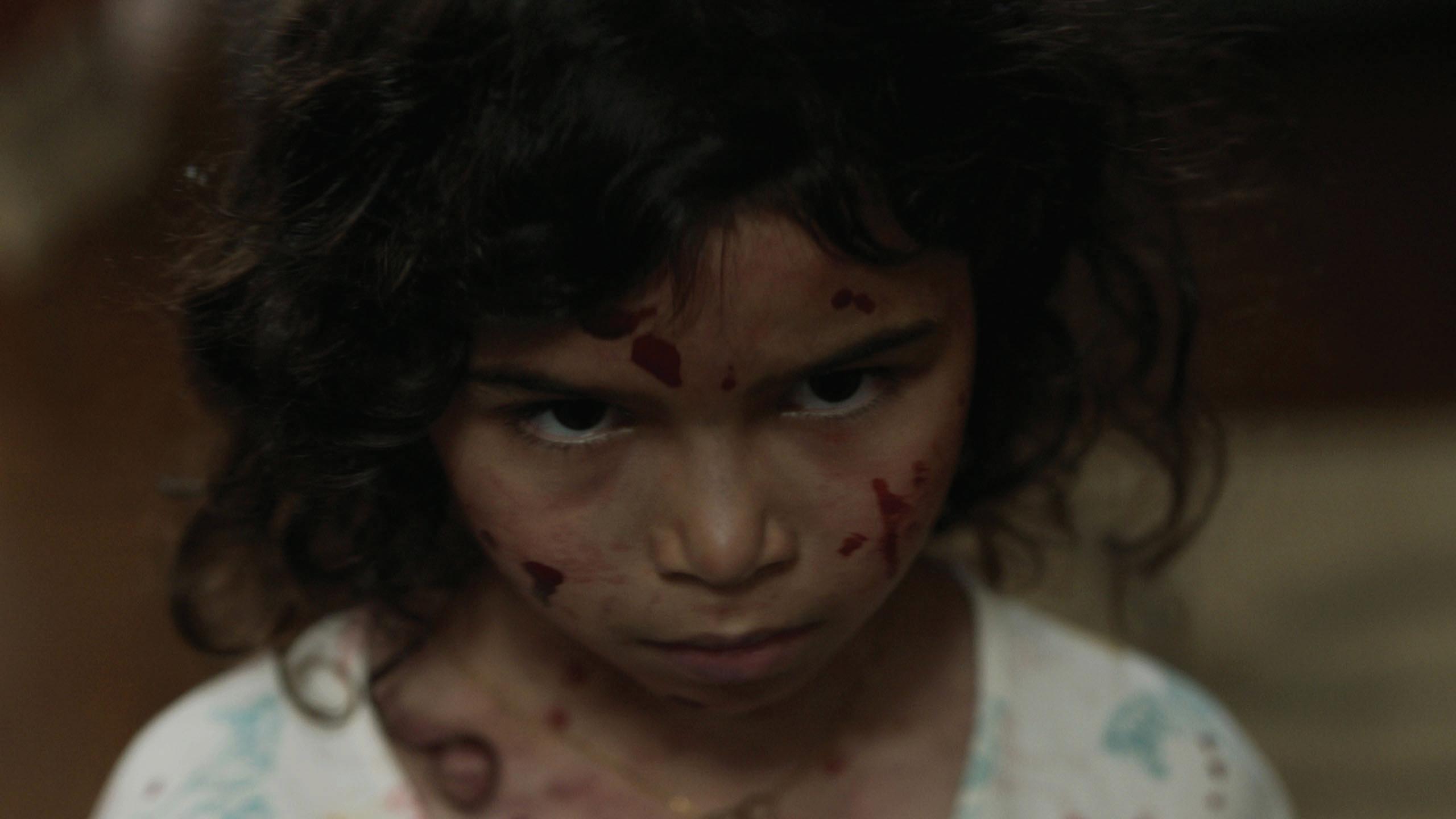
88 APRIL 2023
from a woman’s perspective,” Chotrungroj continues. With the desire for tasteful accuracy, the advisor’s input was vital to blocking decisions. “We needed to know how many people are involved and what they do. Sometimes we wanted a scene to be chaotic and discovered they just calmly stand there and do their thing. So, I’m like ‘OK, what do we do with that?’ So, we’d go to the perspective of the mother or the baby, sometimes using a swing lens on the ALEXA Mini, where we could be disoriented and not see clearly. That way it doesn’t matter how the doctors and nurses stand, as it’s not about them being hectic, it’s about the frenzy in the mother’s head. She was just put in an ambulance, and now she’s awake in an operating room and going to be cut open. It’s scary.”
Using anamorphic Primo Lenses from Panavision helped Chotrungroj craft the visual language of the film. “The wide framing allowed us to layer actors in ways that emphasized tension,” she adds. “We also used the anamorphics’ bokeh and blurs to distort the characters and background, conjuring a subtle ghostly feeling.” Moss and Chotrungroj also worked out a tight plan for their 24-day shooting schedule, which helped communicate their vision to Key Grip Jared Diaw, Chief Lighting Technician Jori Stigers, Second Unit Director of Photography Benjamin Rutkowski, and 1st AC Tricia Mears. (Other Guild members on the shoot included 2nd AC Max Schwarz and Unit Still Photographer Mike Sofokles, who also handled EPK with Matt Infante.)
“We had to storyboard for the production designers [Courtney and Hillary Andujar], special effects, and the actors for scenes where we had open organs or nudity,” Chotrungroj notes. “I had created a DP bible with a shot list, location pictures, and lighting diagrams. In the crew interviews, I’d pick one or two scenes and see what they’d come up with. In the end, we had to work to the budget, so I was open to options if they felt like what Laura and I talked about.”

Chotrungroj’s careful prep was valuable in the push to have a final cut for Sundance. “I was in Thailand when we had to start the final color grade because I didn’t know that we’d have to finish the film so fast,” Chotrungroj recalls. “I had put together a look-book – like a narrative without words – that captures the feeling of the script. It’s just picture, picture, picture, and if you put it next to the script it makes sense. That helped set the tone for post. I showed it to our colorist, Maxine Gervais at Picture Shop, and she carried it from there.”
The DP was remote from Thailand for the first two color timing sessions, with the final two sessions conducted in person. “Maxine was amazing,” Chotrungroj adds. “Most of the time we were just bringing something up or down a little. We had a lot of hot metal reflections to deal with in our environments.” The filmmakers made a creative decision to grade in SDR (standard dynamic range) versus HDR (high dynamic range.) Chotrungroj says the SDR look “helped contain the film a little bit. It kept me in the story to some degree because this kind of story is a place apart. Things are very familiar, but it needed to be just a bit different. I think being in SDR is a benefit to this type of narrative.”
89 APRIL 2023
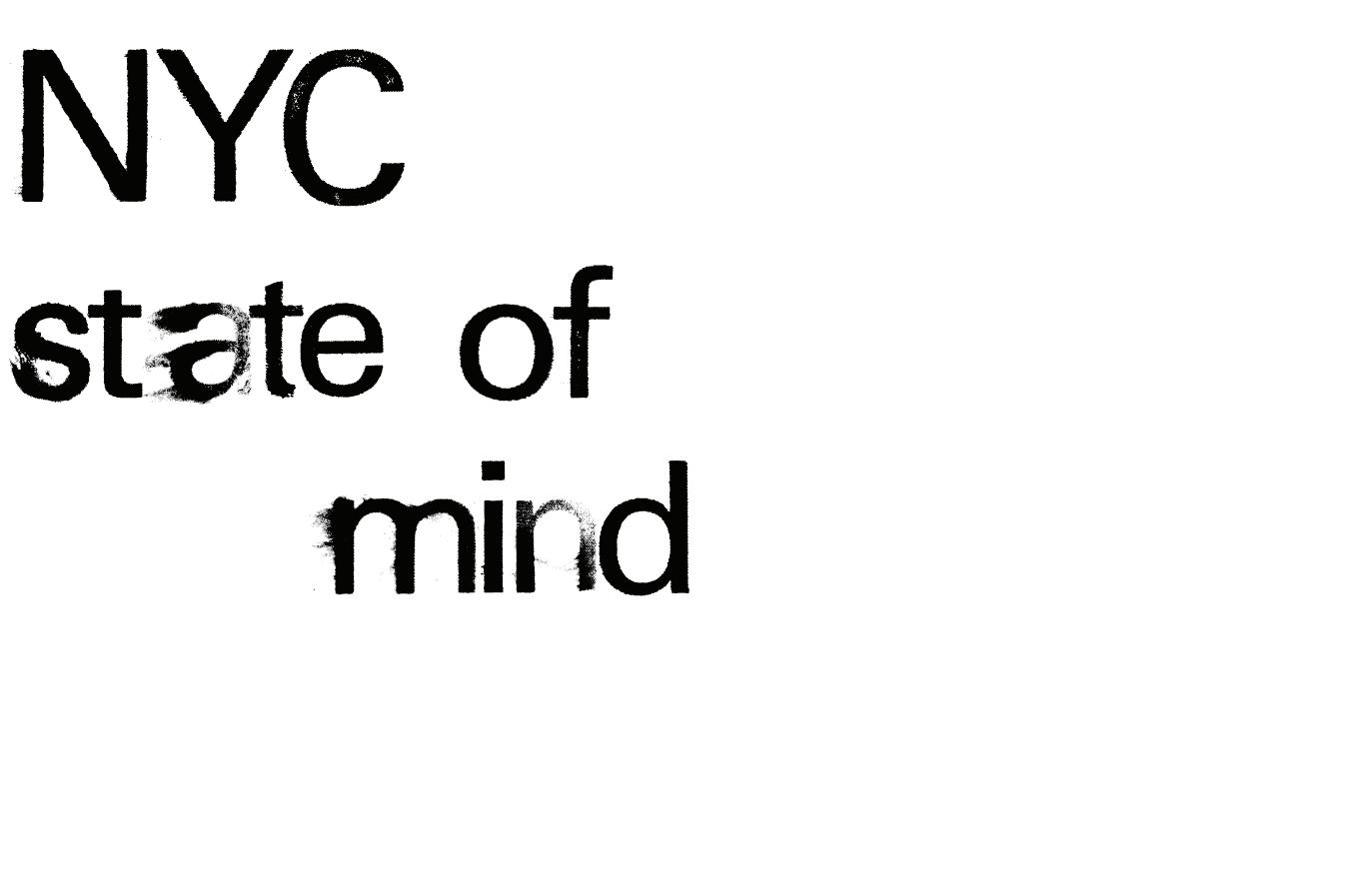
Two New York-based guild directors of photography discuss their debut features at Sundance 2023.

 by Valentina Valentini
by Valentina Valentini
THEATER CAMP / FRAMEGRAB COURTESY OF FOX SEARCHLIGHT PICTURES
DP MANUEL BILLETER ON THE NYC LOCATION OF CAT PERSON / PHOTO BY DAVID GIESCRECHT
The last time Local 600 Director of Photography Manuel Billeter attended the Sundance Film Festival was in 2007 as a camera operator on Dedication, Starting Out in the Evening, and Joshua. For Sundance 2023, which he describes as “the independent filmmaking mecca,” Billeter returned – as a director of photography – on Cat Person, his feature film debut after being a “go to” episodic DP for the last 10 years. Billeter’s long list of television credits includes Law & Order, Person of Interest, Jessica Jones, Luke Cage, Iron Fist, The Affair, Ozark, Inventing Anna and The Gilded Age.
“It felt like coming home,” the New York-based Billeter says of his visit to Park City. “Sitting in a theater filled with people, having this communal experience of watching the film together and witnessing every laugh, gasp, giggle or cringe, all of the reactions. Going to the cinema, as opposed to watching things at home, is a sacred space. It gives a sense of community, social engagement and shared experiences.”
Cat Person is a slow-burn thriller based on the viral New Yorker short story of the same name by Kristen Roupenian. Directed by Susanna Fogel and starring Emilia Jones and Nicholas Braun, it follows a 20-year-old college sophomore, Margot (Jones), as she tentatively embarks on a short-lived and ultimately toxic relationship with an older man, Robert (Braun). Although Billeter always considered returning to feature films over the years, the pull from episodic television was strong. And he’s been grateful for the momentum, but after wrapping Season 1 of The Gilded Age [ICG Magazine February/ March 2022], Billeter says he was again looking for feature scripts, and a change of challenge and pace.
“It was a bit of luck that Cat Person came to me when it did,” he recalls. “I wanted to do something different on a smaller scale again and had been attached to some features, but they’d gotten delayed. Juggling TV series and feature films can be challenging. I was happy to be at the right place at the right time.”
ICG Magazine: What was it like coming back into this independent filmmaking mecca, as you call it?
Manuel Billeter: I was proud to be there, but maybe the only weird thing about it was how long that gap was. To come back 16 years later, it’s almost a generation. But I was constantly shooting, creating and working on interesting projects. In a way, it was a technicality that it was my first feature as a DP. I was happy to work with Susanna and get back to the way a feature film was shot.
How do you mean? With TV there is usually a revolving door of directors. A feature is singular, and you concentrate all your efforts and can be much more focused on the project at hand. It’s not like in TV when oftentimes you have two scripts and then you don’t know what episode four, six or the finale is going to be. So, as a DP, you can’t plan too much further down the line. Whereas with the feature, that script is the blueprint for what we’re shooting, and it feels more concrete.
How did you move from operating on features to operating on television? It was a serendipitous encounter on a street in New York City. I was operating on a small feature in the East Village and [Guild Director of Photography] Bill Klayer happened to walk through the neighborhood. He struck up a conversation with the camera crew members that he knew and then approached me about Law & Order. They were already on season 18, I think, and I’m not sure what he saw in me, having had zero experience in operating for TV, but I was intrigued by the challenge of trying something new, in a different environment. I also knew that I would be able to hone my skills as an operator by doing it daily over a longer period, even if walking onto a big set like that was going to be intimidating. Since most of the show
was shot handheld, often in scenes consisting of just one prolonged and choreographed shot moving about and around the action and dialogue, I learned a lot and had such fun dancing around operating the camera, hitting the right spot at the right time, like in a piece of music.
Law & Order was your first credit as a DP, other than a handful of short films. Yes, and because we would shoot two episodes at the same time, the opportunity did arise to get me on the next episode. But I wasn’t sure. It was the gaffer on the show, Pat Cousins, who encouraged me. He said, “Look: if you want to shoot, go shoot. Don’t worry about lighting – you just concentrate on camera, shots, lenses and working with the director – we’ve been guiding the show for almost 20 years, so we know what we’re doing.” And that gave me the peace of mind to throw my hat in the ring. It’s also a testament to the producers, who gave me a shot at this first episode of TV. Knowing I had the support of the crew and trust of the producers was huge.
Jumping back to the present, what was your approach on Cat Person? What I liked about the script right off the bat was that it wasn’t just a linear story with a beginning, middle, and end. It did have that three-act structure, but it was more essay-like with the vignettes of Margot’s daydreams and how her imaginations become visualized. I saw that it would be an opportunity to express an emotion or a thought with images rather than with words or dialogue. The script was often very dark in tone with a lot of moody night exteriors juxtaposed with daily college life. That required many varied tonal elements that we needed to hit. And what was so important – and helpful to me – was that right after we started prep, Susanna sent me a playlist. It wasn’t
necessarily music that would end up in the film, but it was music she had in mind and that created an emotional blueprint and a psychological tone of what the movie should look like and where the film wanted to go. I’ve always felt that music and film go hand in hand; structurally, they have a lot in common – emotion, rhythm, time continuum and tempo. It was quite an eclectic collection of songs and artists, and it helped me to get into Susanna’s head to see what her intentions were – much more than a written pitch could have. As our collaboration progressed, we’d both add songs to the playlist as we bounced ideas back and forth.
You’ve worked with many directors in your career. Was there something else about Susanna, besides the musical connection? Before I started on Cat Person , I watched her previous work and liked the visual language, especially in The Flight Attendant There were some stylish choices, and she was not shying away from thoughtful – and bold – visual expressions. Sometimes you can watch a director’s work and you just don’t see any connection. That happens and it’s normal – not everybody has the same preferences or tastes. But finding common ground is crucial. Without it, collaboration would be extremely difficult. From the very beginning, Susanna was collaborative. She wanted to be very prepared and we shot-listed the whole film. We had this little ritual behind our shot-listing sessions: we shot most of the film in New Jersey and just a day in New York City, so we would meet in different diners all over Jersey to do our work. It added a certain playfulness and sense of adventure to the approach. And being so thoroughly prepared helped us on the day – it provided the freedom to deviate or try something that felt more appropriate in the moment.
92 APRIL 2023
BILLETER
FRAMEGRABS THIS PAGE COURTESY OF MANUEL BILLETER
We can assume this budget was different from the budgets you’re used to on an HBO or Marvel TV series. Did that change your approach? Having less money and a smaller crew made me think twice about where I wanted to allocate my resources. There were a lot of locations, and a lot of night exteriors scripted, so I had to be strategic about lighting placement and budget. On a TV show, I would have probably had three Condors anytime you have a night exterior. On Cat Person, I think we had a Condor once. And I was okay with that because I knew that we could achieve what we had in mind with the logistical parameters I had to work within. The locations need to be a bit more accommodating, with some practical lighting already present. It made it a challenge, but it made me think more creatively and strategically. Plus, I wanted to go back to a way of working that was simpler: less crew and less equipment are more sustainable, and get you out of the comfort zone of just throwing money at a problem. I think we were able to achieve something evocative and important and emotional by not relying on more gear. We just had to find a different way to execute it. One key position that I wasn’t ready to give up was the dimmer board programmer. It enabled us to be quick and precise, on top of giving us creative freedom.
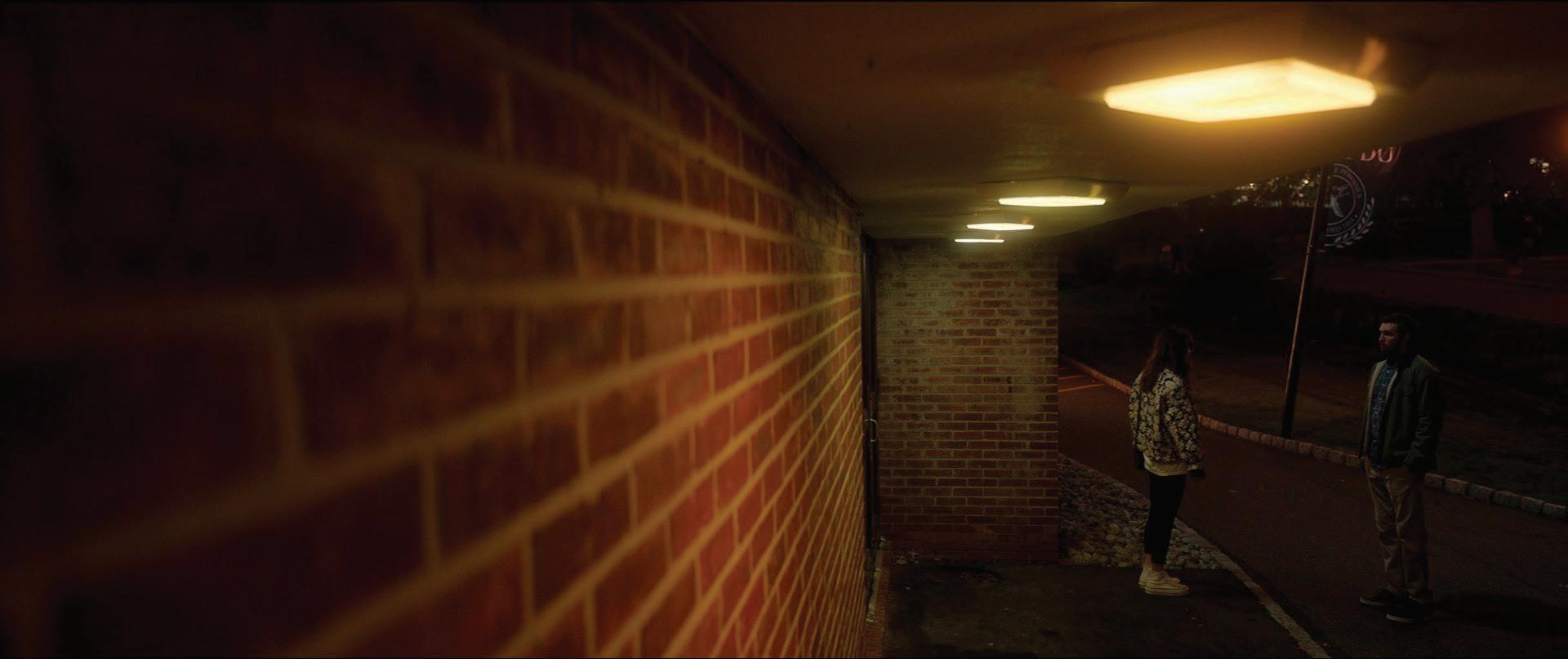
It sounds like it might have reinvigorated you, as a DP. Absolutely. Being lower budget didn’t deter me at all. And one thing I’ve learned from working in TV is that you have to be fast. So, I think that skillset is super helpful when it comes to an independent film where you have lots of pages to cover, night shots, driving night shots, complicated and time-consuming scenes. I was able to make suggestions that were time-saving and cost-saving without compromising the look.
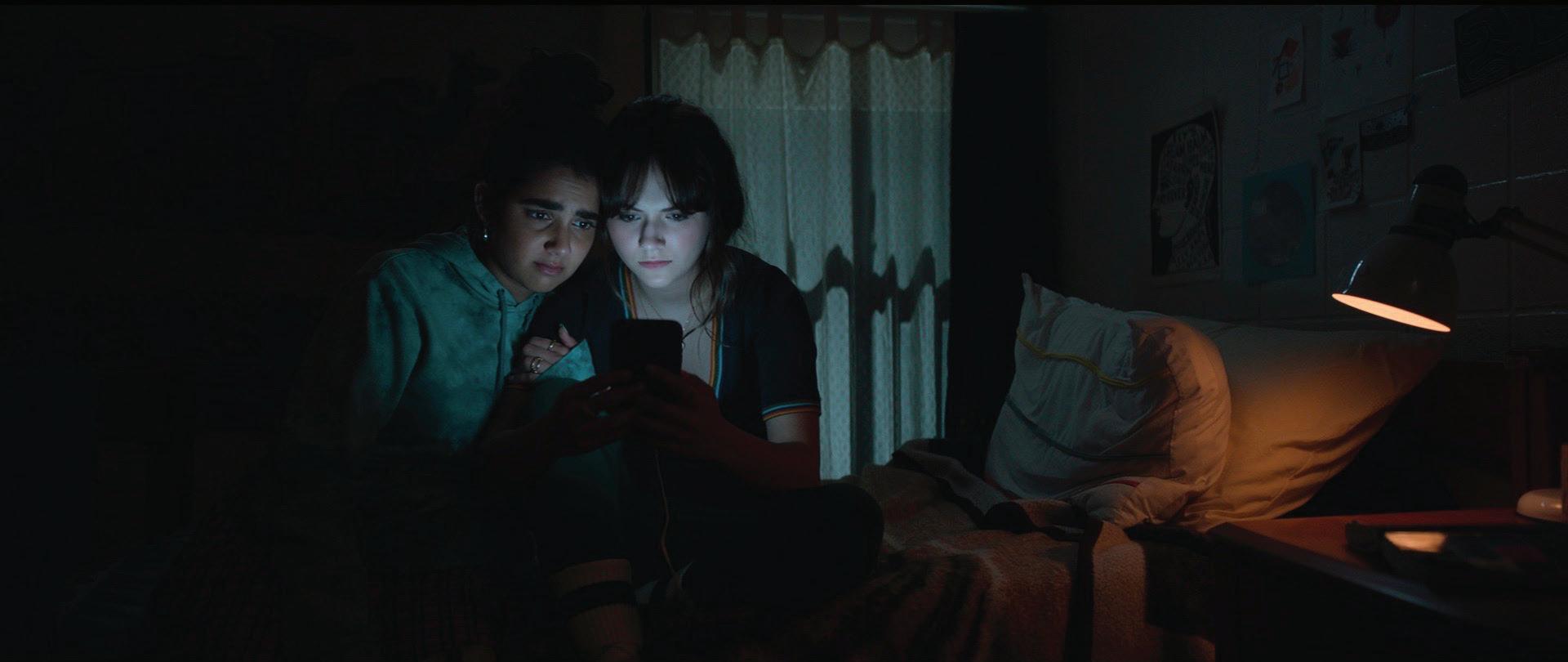
Do you miss operating? I do! But on Cat Person, I was lucky to have had a very good camera and Steadicam operator, Peter Vietro-Hannum. Having a trusted collaborator like Peter, I didn’t have to explain much – tempo or the composition or whatever, because he just brought so much heart to the project. I think because this film had many different visual approaches and a shooting schedule that would have me lighting multiple sets at the same time, if I had been tethered to the camera it wouldn’t have given me the freedom to be juggling everything else. I did get to operate for one scene – we had a jib arm and Peter was controlling the remote head and I was controlling the position of the arm. In that moment, I got the taste of being an active participant in the scene and orchestrating or maneuvering the camera, dancing around the characters. It’s a very satisfying feeling, to be in control of every movement of the camera and create a mood in the moment with your composition. On the other hand, having a great operator who is of one mind with you is a great asset.

93 APRIL 2023
SAYS " CAT PERSON WAS MORE ESSAY-LIKE WITH THE VIGNETTES OF MARGOT’S DAYDREAMS AND HOW HER IMAGINATIONS BECOME VISUALIZED. I SAW THAT IT WOULD BE AN OPPORTUNITY TO EXPRESS AN EMOTION OR A THOUGHT WITH IMAGES RATHER THAN WITH WORDS OR DIALOGUE."
Theater Camp won Sundance’s Special Jury Award for Best Ensemble Cast for a good reason. The zany, heartwarming film – especially funny if you’re someone who participated in school plays or community theater programs – was made by a group of longtime friends: Nick Lieberman, Molly Gordon and Noah Galvin co-wrote the script with Lieberman and Gordon codirecting, and Ben Platt and Galvin as co-stars, along with Gordon. All the hyphenated roles can be confusing, but the intertwined-ness also makes perfect sense in the musical theater world. The new kid in class was Local 600 Director of Photography Nate Hurtsellers. But as the filmmakers’ goal was a mockumentary approach, having an outsider to guide the visuals worked.
“I would joke with [the directors] that this narrative movie was more documentary than most of the documentaries I’ve shot,” recounts Hurtsellers about Theater Camp, which tells the story of a small theater community trying to save its beloved summer training camp. And Hurtsellers says his combination of narrative and documentary experience is what first enamored his co-directors. Shot in the summer of 2022 in upstate New York at a former Jewish sleepaway camp, the project’s blueprint is part treatment, part script. Filming included lots of improvisation, natural light, and finding comedic moments with the camera.
Hurtsellers began his career in the lighting department, having learned on small jobs he secured at New York University while studying comparative religion. Eventually he went to the American Film Institute to hone his passion for cinematography. While his parents still don’t think it’s a real job, over the last 12 years Hurtsellers has shot dozens of music videos, documentaries, and short films and has six feature films under his belt. And that’s not even counting his dozen credits as a Chief Lighting Technician. “A lot of the crew ended up coming to Sundance,” Hurtsellers adds of his Park City debut. “It was crazy – my whole camera team came, my board operator and my gaffer; everyone loved the experience so much, they wanted to be at Sundance as part of it all.”
Would you say that your background is in documentaries? Nate Hurtsellers: Well, sort of. But I’ve never really liked documentaries. [Laughs.]
That’s a bold statement! I shouldn’t say that. I just never really watched them; I love the escape fiction brings me. When I first started shooting, I didn’t want to make documentaries, but I was young and stupid. A friend of mine had a short doc he wanted to do, so I said fine, but let’s shoot it like a movie. I shot it how I would approach a movie – there’s Steadicam and it’s very stylized, it’s shot-listed and it’s cinematic. Funny enough, a lot of people saw that film, Bull Rider, and it got me an agent. I started doing more documentaries, but always with a cinematic style.
What were the visual goals for Theater Camp? The film was intended to be shot in a vérité style. We talked about how far we would go with that, and how we planned to execute it. I introduced the idea of doing 16-millimeter mode – the ALEXA Mini and AMIRA have a capture mode that’s Super 16 – because Molly and Nick were talking about classic documentaries like War Room and Jesus Camp, some of which are Super 16 and some shot on DVX. I wanted to get towards this degraded, deeper-focus image. We did test shooting on Super 35, but we wanted to be on zooms, and the Panavision Super 35 zooms were like two feet long. We need to be agile and light, and we wanted it to look old with some character, so finding vintage zooms that had a significant range was very tough. But what’s cool about the Super 16 mode is that the Super 16 zooms, because they don’t need such a large image area to cover, are much smaller and lighter weight. We ended up with old Canon 16-millimeter zooms from the 1970s and 80s.
Were the vintage lenses on the ALEXA Mini enough to give it that handmade look? The original plan was to do a film-out: shoot on digital, then print to film stock and then scan back into digital. I’ve done it a few times on commercials, and it helps to imbue the picture with a film look and those highlights that halate; it made the grain more organic than just slapping an overlay of grain on there. Not sure we’d be able to afford the film-out and knowing we might not get to do it, we didn’t want the producers looking at clean digital dailies and then suddenly, if we did get to do it, it would look completely different. My DIT, Kim Sauer, pointed me to FilmBox, a DaVinci Resolve plugin that you can use on dailies, and we used it for finishing the movie. It has halation algorithms that give highlights that bloom. That worked perfectly for our look.
Tell me about shooting mockumentary style and covering lots of improv. Because there wasn’t going to be a lot of lighting, and a lot of the jokes are pulled off with the camera – snap zooms and finding and handheld – there’s a lot of authorship in
OF THE TIGHT-KNIT THEATER CAMP CREW, HURTSELLER SAYS: "EVERYONE LOVED THE EXPERIENCE SO MUCH, THEY ALL CAME TO SUNDANCE TO BE A PART OF IT ALL.” / ABOVE: (L) A-CAMERA 2ND AC MAX SCHWARZ (R) A-CAMERA 1ST AC SEBASTIAN IERVOLINO

the camera, so it was important that I operate. It was a three-camera show for a couple of days during the performance scenes at the end of the movie because there was so much ground to cover, but otherwise, it was two cameras operated by myself and Emmett Kerr-Perkinson. We cross-covered everything to allow for improvisation, flexibility and speed. We did have a shot list, despite it being a movie that seems to have a lot of the camera work discovering in the moment. And our production office was on the location property, so we’d talk about a scene and then go walk into the area where it was going to take place and take Artemis pictures of different setups. Of course, there’s variability on the day, but we were prescriptive about where we thought the action should play out.
Some moments felt reminiscent of The Offic e. Some of those scenes are my favorite. We looked at The Office, Arrested Development, This Is Spinal Tap and other Christopher Guest films, although his stuff is not so handheld. I love all of it, and it’s been wellsituated in my subconscious. I revisited those shows
94 APRIL 2023
PHOTO COURTESY OF BRIANNA MORRISON
to see how camera played off jokes, but we wanted to be a bit grittier. I was thinking of The Office meets Barry Ackroyd [BSC] – real 16-millimeter gritty but with the humor and discovery and weirdness and snap zooms and hilarity.

How was it working with co-directors? I’ve done it a few times before. I work with a pair out of L.A., too, and I always like working with two directors. I can see that you could have problems, but I never had. It’s probably because Nick and Molly, and the other two as well, have known each other forever. On this film, Nick, Molly, Ben and Noah were such a team. They’ve all known each other for so long that there’s an honesty that comes out of that. If you don’t know somebody really well, you can’t be brutally honest with them, and that could be tricky on a set. These two were amazing, and they complimented each other. Molly is the funniest improviser I’ve ever met – she has an inherent brilliant comedic strangeness. And as a director – and this was her first time – she has a good sense of how to make something funnier. Nick is also brilliant. And so often Molly was in the
scene, which would be tough normally, but she juggled it all like a pro. Having VTR was important, so we could get playback as soon as a scene was done. And we’d do our morning meetings before she had to get into hair and makeup and wardrobe. We had a lot of the conversations we needed to have before shooting.
What was it like filming in upstate New York?
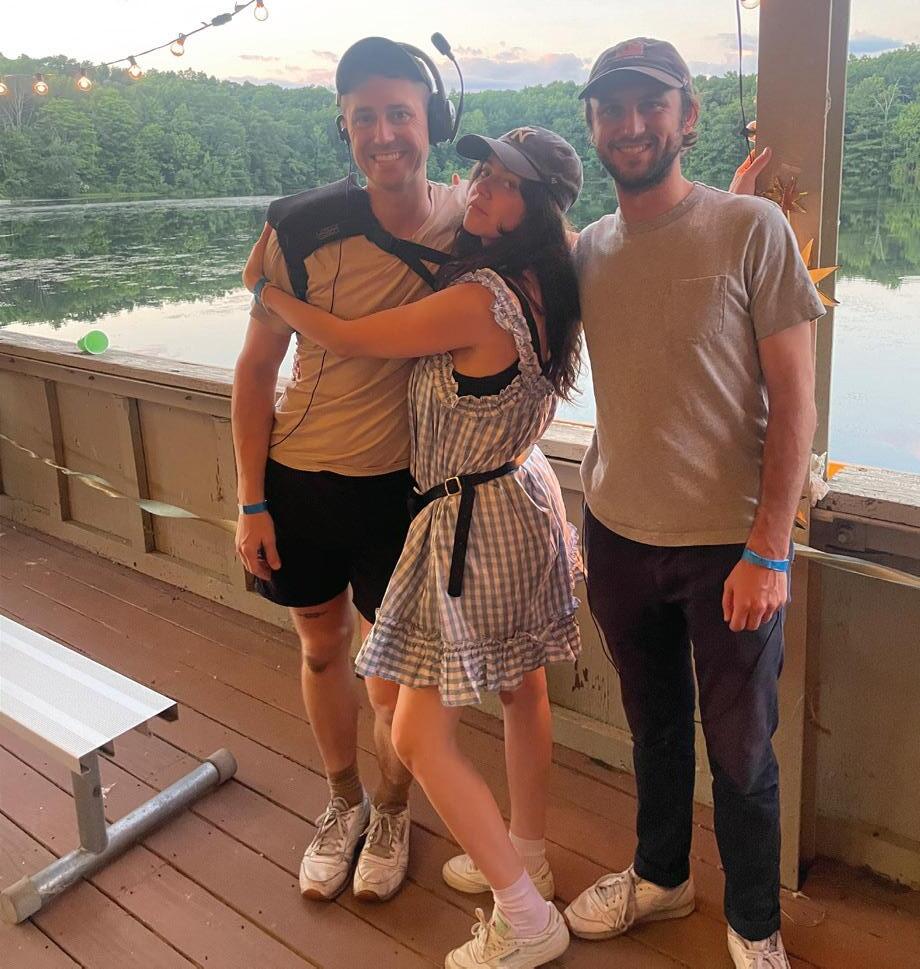
We wanted the New York tax incentives, but it was also the perfect place to film this. In Warwick, there’s a Jewish sleepaway camp that had closed, and it couldn’t have been a better location for a story revolving around a sleepaway camp. Another miracle that happened: there’s this rule in New York that to qualify for the tax you have to shoot one day on a qualified stage. There was a community center about 30 minutes away that had a qualified stage, and we used that for Amy Sedaris’s first scene, set in a high school theater. And then, in the basement of this place, there was a standing hospital set. In what world do these two things just happen to be at the same location and are the only other two
locations that we needed for this film?! The camp itself, which Molly had found, is a beautiful and interesting space and worked perfectly for how little lighting we were going to use – just hiding Titan tubes inside fluorescent ceiling lights and using a lot of soft boxes. The point being that there wasn’t a lot of control, like pulling light off walls or taking time to sculpt things. So having interesting spaces and nice big windows was super helpful.
Did you bring your crew from the city with you, or did you hire locally? We pulled some local PA’s, and my key grip, Greg Meola, and DIT. There are a lot of great crew folks upstate because a few recent shows have shot up there, like The White House Plumbers , Pretty Little Liars , and The Gilded Age It’s also a beautiful area and easy to get around and permit. Again, it was documentary style, so it wasn’t like we needed that many people. Sometimes there were lights outside a window, but it wasn’t like setting up on a movie where sometimes you light every shot. It was, “Turn on the practicals and shoot.”
95 APRIL 2023
DP NATE HURTSELLERS (ABOVE LEFT) SAYS HE JOKED WITH CO-DIRECTORS NICK LIEBERMAN AND MOLLY GORDON (ABOVE RIGHT WITH HURTSELLERS) "THAT THIS NARRATIVE MOVIE WAS MORE DOCUMENTARY THAN MOST OF THE DOCUMENTARIES I’VE SHOT.”
PHOTO COURTESY OF MAX SCHWARZ
PHOTO BY JEONG PARK
While indie narratives often steal the limelight at Sundance, insiders know it’s the documentary section that offers unrivaled quality year after year.
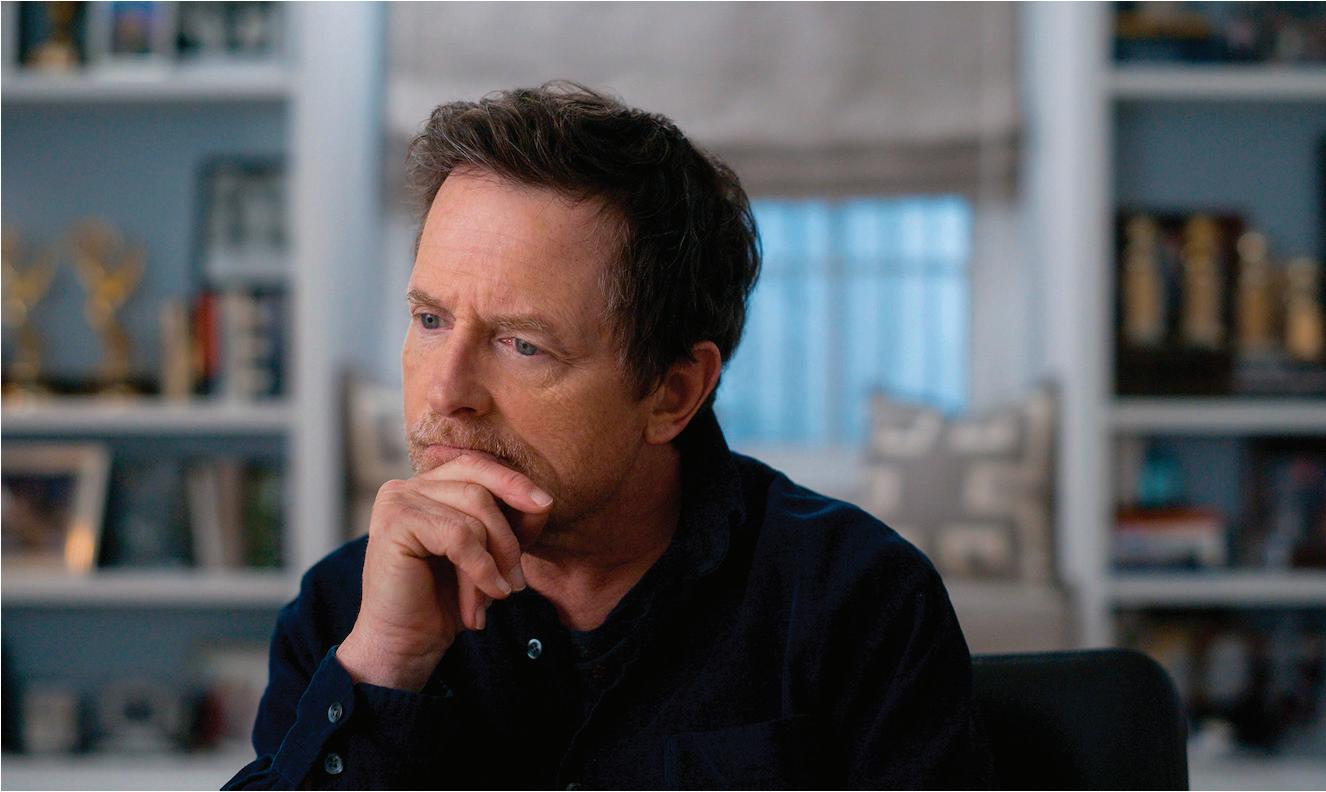 by Michael Chambliss Framegrabs Courtesy of Sundance Institute
by Michael Chambliss Framegrabs Courtesy of Sundance Institute
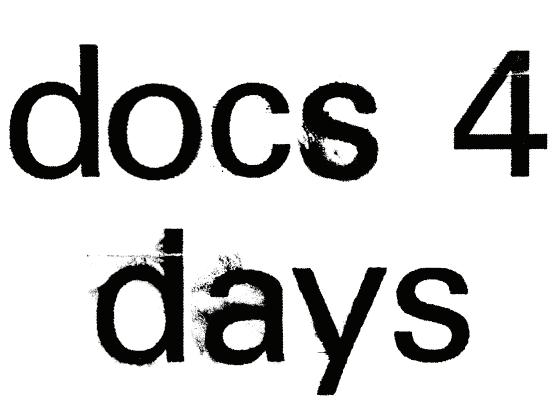
It wasn’t long ago that documentaries were confined to the realms of public broadcasting, off-hours slots on news outlets, and film schools. It took the insatiable appetite of mass audience streaming outlets to catapult the art form into the mainstream. With sights set on this evolving business model and the nimble capabilities of digital and lightweight LED lighting, documentary producers screened a stunning array of new work at Sundance 2023. Local 600 directors of photography, some crossing over from theatrical and episodic narratives, engaged festival audiences with powerful stories of the struggle for social justice and change. Here are three stellar examples of nonfiction storytelling at its finest.
Invisible Beauty
Beginning as the first Black cheerleader in her high school, Bethann Hardison became a pioneering fashion model, activist, and agent demanding that the fashion industry realize that Black is beautiful. Hardison’s early life was split between her Islamicleader father and goodtime-girl mother in BedfordStuyvesant Brooklyn, where the impact of inequality had a razor-sharp point. Teaming with co-director Frédéric Tcheng (Halston, Dior and I), Hardison traces her development as a social thinker and leader, and her efforts to impact the fashion industry – from the runways to the roundtables – by taking on the lack of racial diversity.
Invisible Beauty was not the first time Director of Photography Mia Cioffi Henry had run into Hardison’s work. “I teach at NYU, where I’m the head of cinematography in the graduate department,” Cioffi Henry shares. “Somehow this project found me through those connections. I remembered one of my first jobs in the camera department, when I moved to New York from L.A., was operating and assisting on a documentary that was about the 1973 “Battle of Versailles,” a groundbreaking fashion show where Bethann and a bevy of New York models, many of them Black women, walked in a showdown between American and French designers. It was something of a publicity stunt, but still groundbreaking, because it was the first time Black models had appeared on a major runway in Paris. They did so well that they took the fashion world by storm, and that launched Bethann’s career.
Cioffi Henry adds that when she finally got to meet Hardison, she went to her apartment, “and we watched the sizzler trailer for the film along with Frédéric, her co-director. It was mostly archival and some interviews with Bethann and a bit of vérité that they had just shot. Bethann and I both just sat there crying, and I don’t cry often. I think we
realized we were so similar in our ethos and ethics, but also in trying to do good work as Black women in predominantly white and male industries. I don’t typically do documentaries, and I thought it was a bit of a stretch. But they said, ‘No, we’re looking for somebody who is thinking of narrative and story.’ So, it just worked out.”
The backbone of Invisible Beauty is its plethora of archival footage. Cioffi Henry and the directors knew the story they wanted to tell, so early conversations were mainly about what the through-line would be. “The initial thought was that Bethann was writing this book and had a deadline, so the book and the film could come out at the same time,” Cioffi Henry recounts. “That hasn’t quite happened, but it gave us a time and place, as we needed some present tense. We talked about how to differentiate the present from the past, from her archival footage and interviews, and how to frame the cinematic language. It had a lot to do with lighting, naturalism, and patience; and giving ourselves a place to breathe in between the archival footage and historical interview vignettes that were set up around the present.”
Cioffi Henry was able to see a lot of the archival footage before she started filming. She says there was a certain look to it, “especially from the sixties and seventies,” she continues, “and there was a lot of great color because of the fashion and wardrobe elements. But I wanted something that felt a bit more neutral and contemporary. We were going to be shooting a lot in her apartment, which was with her throughout all of these periods of her life. We let the apartment guide the color palette and went with neutral to cooler tones. The biggest thing I was trying to track throughout the mixing of all the footage was skin tones. Our colorist, Natacha Ikoli,
has an amazing sensibility for maintaining threedimensionality in skin, especially with all of our varied and darker skin tones.”
The filmmakers worked in two- or three-day bursts across sixteen months. Their main cameras were Canon C70 and C300 with Canon lenses and the occasional Sigma prime. “Most of the time the crew was just Fred and I, and sometimes we’d have a camera operator or AC,” Cioffi Henry adds. “I like to think of everything in terms of simplicity. Coming up as a New York DP, you’re always shooting in small apartments, and you’re always pressed for time, space and extra hands. I was often just bouncing light into the ceiling and using a few LEDs to create shape and depth. So often it is just about shaping the quality of the light, not the amount of light, and then leaning into that with exposure. I think it’s mostly about using fewer lights in the right places and the right combination.”
Little Richard: I Am Everything
Born in Macon, Georgia, in 1932, a time when music was divided into “white” and “colored” domains, Richard Wayne Penniman forged a path from southern gospel and the small-town blues circuit to become Little Richard, the “Architect of Rock ‘n Roll.” His is a heart-wrenching story of a struggle for recognition and identity – white recording artists like Elvis Presley and Pat Boone soared in popularity, even re-recording Little Richard’s hits for coverage on “white only” radio at the same time. With nine top40 pop singles and seventeen top-40 R&B singles by 1959, Little Richard joined Fats Domino and Chuck Berry in insisting that mixed audiences be allowed into their performances, even though Black fans
97 APRIL 2023
would be relegated to the balcony while white fans had the main floor. Despite campaigns against him by white supremacist groups like the North Alabama White Citizens Council, Little Richard shattered the popular myth that Black performers could not succeed in white-only venues. Flamboyant, with unstoppable energy and a refusal to be pushed down, this musical icon pulled himself up again and again.

Little Richard: I Am Everything paints a complex portrait of a two-tiered America. It reveals the artist’s struggle to simply be himself, a talent that would inspire the likes of John Lennon, Paul McCartney, James Brown and Jimmy Hendrix, and the power of music and dance to bring people together. Director Lisa Cortes (also the producer of Invisible Beauty) asked Director of Photography Keith Walker to design the look of the film. “I do a lot of documentaries, broadcast and commercials,” Walker describes. “I’ve done some narrative work, but that’s not my mainstay. My biggest client over the years has been Oprah. I was the DP on her interviews with the Royals and the interviews for her CBS Special with Adele. I had worked with Lisa [Cortes] on a documentary that isn’t out yet, and we bonded.”
Walker says Cortes wanted to work with backdrops for each of the different interviews so the audience would automatically know from a visual perspective who they were talking to. “We spent a lot of time choosing the right one for each person,” Walker continues. “Shipping those turned into a logistical challenge because we were working with twelve-foot backdrops, not canvases that could be stuffed in a bag. Once we had that worked out, I did several test shoots with her to come up with the look.
“We shot with my Sony FX9 and lit with octagon light banks and Aputure 600s and 300s; we picked up a grip truck in whatever city we were in. One of the biggest challenges was finding locations that
gave me the depth needed for separation between the subject and the background. Sometimes our locations were dictated by the person who was going to be sitting in the chair, not the production itself, other times we could be in a studio with plenty of headroom. You work with what you have.”
To enable Cortes to establish a direct connection with the interviewees while maintaining a first-person camera angle, Walker worked with his own version of the Interrotron, an interviewing device developed by Oscar-winning documentarian Errol Morris. Using beam splitters, the Interrotron works like a two-way teleprompter enabling the subject to look directly into the camera lens and the interviewer’s eyes while they’re speaking to each other.
Walker says he went into the production without a script while the archivist was still assembling the historical footage. “The beautiful thing about a documentary is that it has a mind of its own,” he offers. “While the director knows where they want to [go], what people communicate during the interviews ultimately creates the documentary’s journey, sometimes influencing how it’s going to be shot and definitely how it’s going to be edited. I leaned heavily on my knowledge of who Little Richard was. I’m too young to have been a teenybopper when he was at his height, but I vividly remember him being on the Johnny Carson Show while I was growing up. He was funny, insightful, and would joke around. But there was this anger or frustration about him because of how badly he was treated by the entertainment world. I kind of liken his manner to biting you with kindness.”
Cortes’ concept was that Little Richard was a kind of whimsical character blessed with what she called pixie dust. “There were all of these different artists who were hugely successful that borrowed or sometimes just stole his pixie dust,” Walker adds. “The Beatles were his opening band. That gives you
an idea of the magnitude of the impact that he had at that moment in time, but he never got his accolades. I’d be a little pissed, too. Michael Jackson gave him a lump sum of money many years later because Little Richard never got any payment for many of his hits.”

Little Richard: I Am Everything is currently completing the film festival circuit before booking distribution. New York Camera Operator Graham Willoughby shot the contemporary live-performance segments of the film.
Still: A Michael J. Fox Movie
With two hugely successful sitcoms ( Family Ties and Spin City ) and the blockbuster Back to the Future trilogy, the kinetic acting of Michael J. Fox made him a household name in the 1990s – so much so that audiences were shocked in 1998 when Fox disclosed he had been hiding early onset Parkinson’s disease for years, working under constant medication while adjusting his acting style to cover the symptoms. Through TV appearances and testimony before Congress, Fox has used his optimistic drive to focus awareness on Parkinson’s disease and raise over a billion dollars for medical research through his foundation. For the upcoming Apple TV+ documentary Still: A Michael J. Fox Movie , director Davis Guggenheim [ICG Magazine, Waiting for Superman] wove together contemporary live interviews with Fox, his home movies, archival footage and newly scripted recreations of historical behind-the-scenes perspectives to capture a deeply personal portrayal of the actor’s life: his triumphs, his struggle with Parkinson’s and his refusal to give up hope.
“Our industry is all word-of-mouth and

98 APRIL 2023
recommendation,” observes Julia Liu, director of photography for the contemporary segments. “I believe a producer whom I had worked with on another feature doc recommended me for the interview work, and then Davis Guggenheim talked to another director I had worked with. We started with a lot of conversation because anytime I’m collaborating with a new person I want to get to the point where I can almost read their mind and be on the same visual page. We got on ShotDeck together to share our favorite shots and pick the frames apart. From that, I put together an informal look-book that I sent to Davis and the producers so we could narrow it down to the looks that we liked.”
Liu wanted a sense of stillness in the contemporary frames, so a lot of the shots are lockoffs. She adds, “Parkinson’s disease often involves involuntary tremors and a lot of motion, so we felt that having a very still camera allows for this contrast between the subject and the frame. Also, Michael J. Fox is a very dynamic actor. He’s almost acrobatic in some of the historical footage. We wanted the contemporary portions of the film to contrast with that dynamic motion, so that when we arrived at present-day Michael we’d have this peaceful, observational feeling.”
Other visual goals included making the primary interviews as clean and intimate as possible. “Michael has these striking blue eyes,” Liu continues. “The idea was to have him look directly into the lens so the audience could emote with him. There are two ways to do that: with the Interrotron, which is a ton of gear, or with the EyeDirect system. But neither of those seemed like a good option. Davis suggested that we strip down the camera to just a box and a lens, so that is what we did. There was no matte box, the filter was taped on, and we even took the battery off the back. Everything but a lens motor on a rail was
stripped off and moved. Davis was then able to sit directly behind the camera with just his eyes peeking over the top. We had to move quickly because we could only have Michael for three or four hours a day. I could tell that it was taxing for him, but he always had a joke to lighten the mood.”
Liu says there were also many scenes shot more like a narrative. “There’s one where he wakes up in bed, and it’s dark with light coming through diffuse curtains, or another where he’s working with his trainer after an injury,” she recounts. “Davis had a very clear idea of what each scene would represent and where it would hit in the emotional arc of the story. We tried to work with practical light as much as possible and tailor it to the tone Davis wanted to capture. Michael had a lot of great lamps in his office, so we used Aputure B7c bulbs that our gaffer could control on the iPad, along with LiteMats and Astera tubes to keep the footprint as small as possible.”
The contemporary portion of the film was lensed in four or five shoots spread over about a year. Liu says the team would work for a few days or a week at a time. “I was shooting other things as well,” she notes, “but there was a lot of preproduction for each shoot because there were so many moving parts. I felt that most of the hard work had been done by the time we got to shooting. We started before any of the scripted portions of the show were done, so it was like a gift to see it all come together for the first time on a big screen at Sundance. I was elated.”

Director of Photography C. Kim Miles, ASC, CSC, MYSC, shot elaborate behind-the-scenes recreations of Michael J. Fox working on the sets of some of his biggest titles. “I had been in Winnipeg shooting Bobby Farrelly’s Champions with Line Producer Drew Locke,” Miles recalls. “When we finished, Drew called and said, ‘Do you want to come and do this project for Apple TV+? It should be
fun.’ And when he mentioned Davis Guggenheim, I thought, ‘How could I not?’”
Miles says that because the documentary portions were mainly done and Guggenheim had completed most of the interviews, “Davis was able to send me a rough cut with storyboards in place for what we’d be shooting. That helped a lot with being able to come up with the formula for the flashbacks. Davis had specific ideas about what he wanted. For example, he wanted the Florida hotel room at the beginning of the movie where Michael wakes up with his fingers twitching to be dark and silhouetted, with flares coming through the window when he looked at his hand.”
The DP says he shot everything like a movie, with the caveat that Guggenheim never wanted to see the face of the actor playing Michael J. Fox. “He felt that with Michael being so predominant in the show, it would be distracting to see a different face playing him in the fl ashbacks,” Miles states. “Our actor, Danny Irizarry, had studied Michael’s mannerisms closely, preparing for the role, and was dead on in the way he carried himself, how he walked, and how he entered a room.”
Beyond doing the homework to match the lighting styles of Fox’s classic work, finding the right lenses to capture the 1980s and 90s production was key to the flashbacks. “ARRI has these wonderful MovieCam lenses that I had never heard of until not long before this film,” Miles shares. “MovieCam commissioned Zeiss to build some lenses back in the eighties, and they never hit the market. So, ARRI has been sitting on this glass for 40 years, and they decided to rehouse them in LPL lens barrels. They have a wonderful eighties kind of feel – kind to skin tones but at the same time a bit contrasty and a little gritty. They instill a sense of nostalgia and flare in a cool, unrefined way. So, I thought that since this movie takes place in that period, why not embrace the flaws?”
Miles shot for roughly twenty-one days with two cameras. He says it was “a treat to do something with no dialogue, one actor, and to flesh out the details of what Davis wanted. He’s such a wonderful collaborator; always smiling and trying to push the envelope to make it better. If anyone came up with an idea, Davis would listen, and sometimes we’d put it in front of the camera. He has a grounded approach to filmmaking and is evolutionary. I feel like people who do documentaries are accustomed to approaching production with a general idea that’s built on top of an understanding that they’re going to run into things along the way that should be integrated. Documentaries are more of a discovery process than narrative.
“This was such a heartfelt project,” Miles concludes. “Everyone had a connection to Michael, whether it was just a memory from back in the day to having grown up in the same neighborhood or knowing his mom. There was just such a pleasant aura around the set. Michael was planning to come up to Vancouver and hang out with us but was unable to make the trip. So, on the second to the last day of shooting we had to stop everything for a largescreen Zoom call Michael set up so he could talk to the crew. A film like this only comes along once in a lifetime.”
99 APRIL 2023


How Eric Yue and Writer/Director A.V. Rockwell recreated three decades of New York City life.
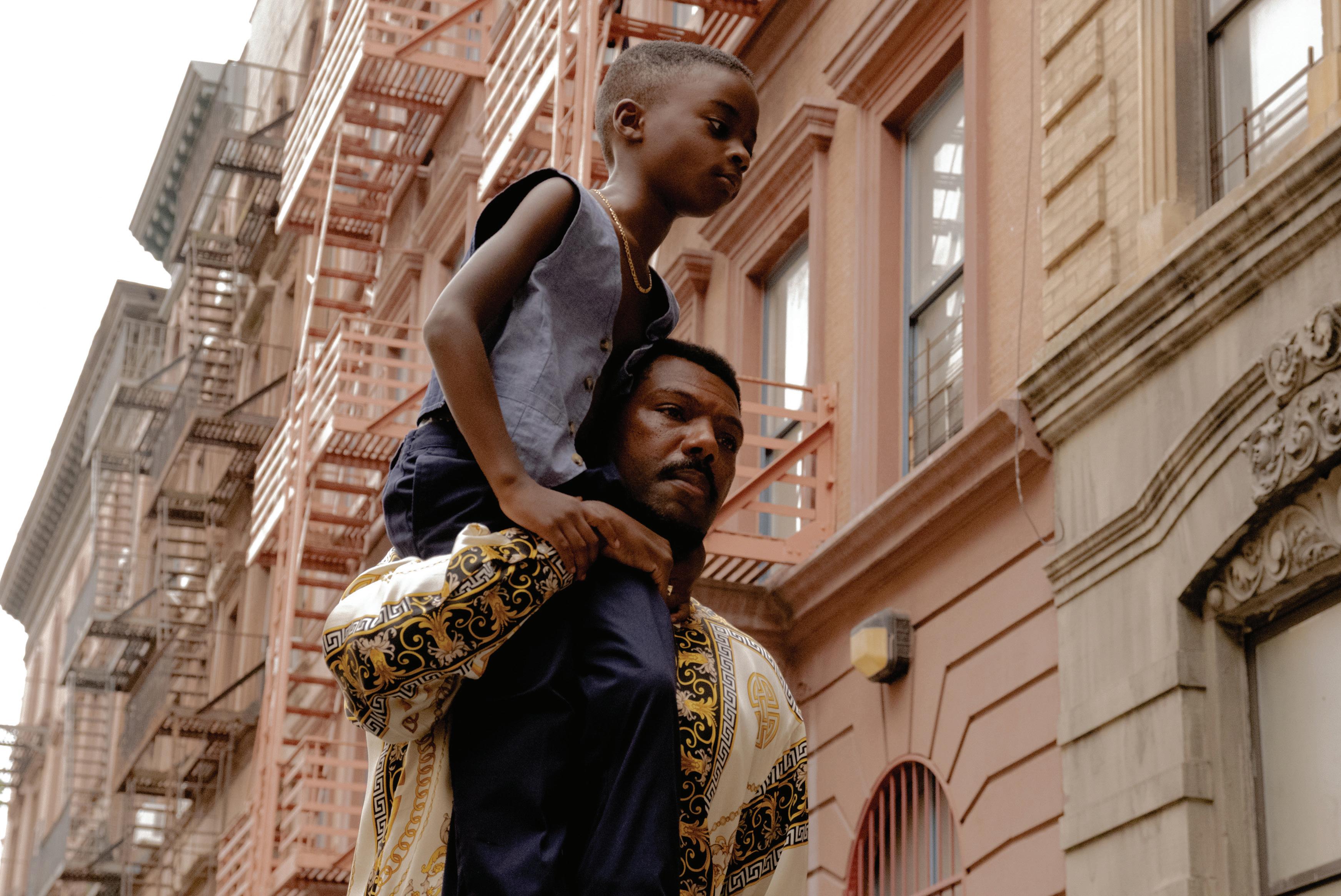 by David Geffner
Photos by Aaron Ricketts / Focus Features
by David Geffner
Photos by Aaron Ricketts / Focus Features
Watching the Sundance indie drama A Thousand and One, which recently enjoyed a late March theatrical release via Focus Features, I was struck by the film’s enormous ambition. What begins as a narrow slice of New York City life circa the late 1990s, with Inez de la Paz (a ferocious Teyana Taylor), a single Black mother kidnapping her 6-yearold son Terry (Aaron Kingsley Adetola) from a dehumanizing foster care system, swiftly transforms into a sweeping (yet personal) tale that covers three decades of political, economic, and social change in the Big Apple.
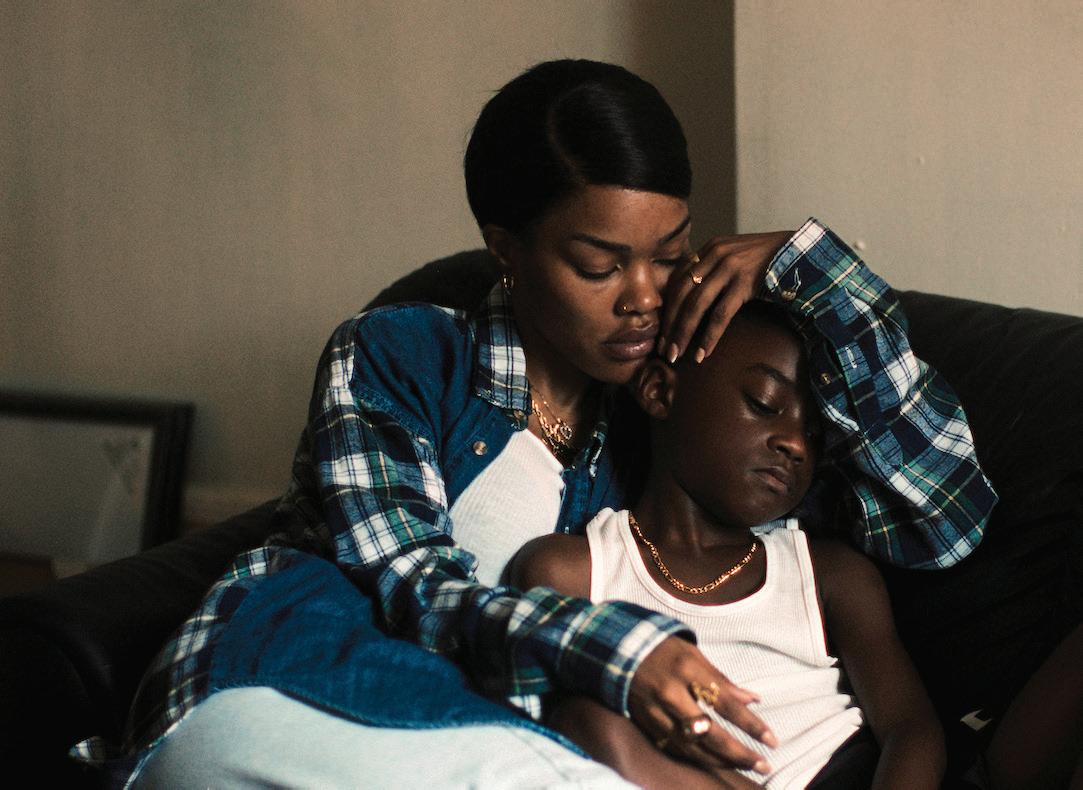
First-time feature director A.V. Rockwell, working in creative lockstep with Guild Director of Photography Eric Yue, somehow portrays years of different visual looks and textures, from Harlem to Brooklyn, without ever losing sight of the narrative thread that drives her story – a mother’s fierce loyalty to her child in a world bent on destroying their bond. Yue, whose 2019 Toronto Film Festival feature The Giant connected with Rockwell, says the two found a quick creative consensus on how to amplify, and visually separate, the multiple periods.
“One of the film’s producers asked me how I planned to do it,” Yue laughs, “and I said, ‘No problem. I’ve shot in New York all the time.’” Yue says the story has such a long reach, he and Rockwell instinctively knew the movie would lean heavily into location scouting. “It was all about finding the right blocks in Harlem that still felt like the 90s,” he told me in a Zoom interview with Rockwell just a week after the festival ended. “A.V.’s look-book was so rich with references that I could not help but be drawn in.” ICG readers will be drawn in by my wide-ranging Q&A with Yue and Rockwell, an interview that could easily double as a primer for filmmakers looking to break out of the conventional indie boxes of limited budgets, schedules and toolkits.
ICG Magazine: You’re both from New York City – did that play into how you approached this ambitious project? Eric Yue: I think so. A.V. and I are both from Queens, and growing up in an outer borough, there’s a shared experience that overlaps into our perception of Manhattan. We always called it “the city,” as even though Queens is in New York City, it’s a different world. We talked about what we remembered from the past – trends, music, fashion styles – all of that. So, we began with a shared history and found the overlaps. A.V. Rockwell: For me, it was when I first saw Eric’s feature The Giant , and how much his visual style spoke to me. I really appreciated how he captured the lives of the characters in that film, as well as some other short-form films he’s done that I watched. And, as Eric said, both of us being from New York was common ground for how we wanted to approach this story. I also appreciated that Eric came in with his own ideas, as well as his general temperament, which is so open and collaborative, which I felt was needed for this project.
Beyond the changing music, and having different
actors portray Inez’s son, Terry, what conversations did you have about how to differentiate the various periods? EY: One of the first things A.V. and I talked about was the color palette. She wanted the beginning of the film, in the 1990s, to feel warmer. So, we see Inez, in the beginning, wearing this red shirt, and the walls of some of the locations reflect that warmth. I remember A.V. saying, “I want us to feel the heat of New York in the summer,” so when scouting, we’d look for a location that would have more frontal, overhead noon light, which is normally not something DP’s like very much [laughs.] But I felt having that overbearing top light would convey New York in the summer. As we move forward in time, the film becomes much cooler. A.V. worked with the costume designer [Melissa Vargas] and production designer [Sharon Lomofsky] to have those cooler color tones throughout the different locations, like Inez’s apartment with Lucky [William Catlett], Terry’s school, and the park in their neighborhood. There was also the emotional component, which is reflected in the camera work. Inez’s life, in the beginning, is tumultuous and frenetic, so there’s a lot more handheld camera. As she grows older, things settle down, and the frames become more static, usually on a tripod or dolly. The hardest part was keeping track of all the rules we set up in preproduction and then shooting the film out of order!
AVR: As Eric said, it was very important to have the camera reflect the emotional journey of these characters throughout the film. There’s so much instability when we first meet these people. This is a story about the yearning for home, and Inez and Terry, literally, have no home. As their lives begin
to stabilize, we feel that change in how the camera captures them. Also, with regard to the changing locations, we wanted to be specific and thoughtful about where we dropped in our characters. New York is a vibrant place when we meet them. The architecture, in Harlem and Brooklyn, is iconic and traditional. One of my favorite shots Eric did was when we first meet Inez. She’s walking down the street, and the camera’s under her, and we see this classic New York neighborhood, with this New York woman, so full of life and attuned to the streets, bouncing with life and energy. But as time goes on, and the new millennium comes, the city becomes gray and sterile. The color palette is muted, as if all that life we saw in the beginning has drained away. All of the visual choices we made were meant to support how we portrayed these people in a changing New York City.
As you mentioned, when we meet Inez she’s in constant motion. It feels spontaneous and organic, almost like the story was improvised. What was your process as a director, relative to Eric’s camera and the actors? AVR: I know we just talked about setting up a lot of rules in prep for how we would capture the different eras. And I’m definitely not opposed to improvisation as a director. But nearly all of what you see on the screen was already on the page, and the actors just brought it home with their great gifts. Coverage-wise for each scene, we did plan out our shots, but we also had to be reactive in the moment. There were a lot of restrictions when making this film, whether they were due to COVID, to weather, to locations or only being able to shoot one side of the street.
102 APRIL 2023
EY: …as well as being limited schedule-wise working with minors. And as A.V. mentioned, New York changed their permitting process to only one side of the street, which meant having to shoot around modern cars. We would select locations weeks in advance, and then on the day, there would be a modern car parked across the street and we couldn’t shoot in that direction.
AVR: And we couldn’t tow or move cars in our shot, even with the permit. Thankfully, we could fall back, somewhat, on visual effects to paint out some of the things that could not be changed on the day. But the location/permit thing was always a challenge.
Here in L.A., we struggle with period projects requiring older sodium vapor streetlights for night exteriors as so many neighborhoods have been swapped out with LED’s. Did you encounter that for this film? EY: A.V.’s vision for this was that a lot of the story is during the day, and there’s only one night shot that emits that kind of sodium vapor/ mercury vapor look you’re talking about. That was planned to be a day scene, but we shot into the night.
AVR: Although there weren’t going to be a lot of those streetlight-lit exteriors in the story, we did talk a lot about that in prep. Just like the differences in the way people have historically photographed New York City and the way it looks now [with LED lighting]. Personally, I wanted to avoid all of that because it can be such a striking visual element –the older streetlights. I kind of wrote it all out in the script so we wouldn’t have that challenge [laughs].
The sound in this movie is crazy! Especially in the beginning, when it’s summer and the windows are open in most of the locations. We hear so much street noise and the aural backdrop of the city. Was that done in post or built into the production sound? AVR: We did get some stuff from production sound as a reference. But most of it was built in post, which I loved doing. It was fun to recreate and add to everything Eric had captured in-camera. Harlem, in particular, has so much vitality as a neighborhood, and I wanted people to feel that noise and clamor that is New York as a total melting pot. Then, as we discussed, things become quieter – gentrification is typically a quiet process that happens over time, not all at once – so all that background noise we hear in the beginning is still there, but to a much lesser degree. Gentrification creates a more suburban way of life within a city, and with it a different culture and soundscape.
This felt like a longer lens movie, with the background going softer in the exteriors. EY: We had a concept of how the lensing would relate to the time change as well. The 90s timeframe was shot with vintage Panavision Super Speeds, and the 2000s section was shot with Panavision Primos. I wanted the beginning to feel shallower, as A.V. and I spoke about having this almost filmic quality when Terry is a young boy. Vintage lenses tend to have a funkier quality when you shoot wide open, so the 90s section was designed to be shot that way to get that film-like character. And, as noted, going with that shallow depth of field helps to obscure the background.
Were there any film references? EY: We took some cues from an older Cassavetes film, which had scenes shot in wide frames but still with a shallow depth of field, to compress the space. As our movie progresses, I shot at a 2.8 or higher. The frame is crisper and colder, and you don’t feel the breathing with a newer lens. We had even talked about shooting the first section on film and the later part on digital, but that wasn’t doable, budget-wise. So, we shot with ALEXA Mini throughout and tried to get that film/digital contrast through lens changes. For the wider shots on the street, we used an Angénieux Optimo 12:1 zoom, as A.V. wanted movement in the foreground, almost like a documentary.
AVR: Obviously, you have to be reactive when you’re shooting outside in New York City. But we went into the exterior street scenes wanting to create visual layers not directly related to the characters – like cars and people passing by – that would feel impressionistic. They might not be in focus or distinct, but, like our approach to sound, they allow you to fill things in with your imagination.
These were both your first narrative features at Sundance and the first time A Thousand and One was screened for a general audience – what were your respective experiences? AVR: It’s super exciting just to have a film at Sundance – period. It’s such a community of support, the way they get behind filmmakers and create a platform for us. But
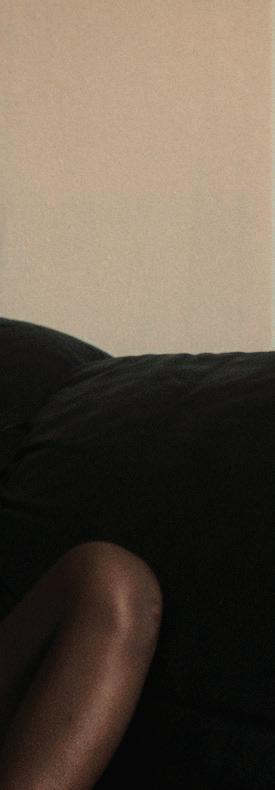
also, the mission of keeping the spirit of independent film protected, and elevating what kind of stories are possible. That idea never gets lost within the Sundance community. And with characters like these, that are less represented, I’m grateful to Sundance audiences for really seeing [these characters] fully. In the short time since we screened there, I’m so appreciative of how deeply felt and thoughtful the reactions have been to what we created. I just want to touch people and let them see themselves on screen or see people different from themselves with more empathy and connection. Sundance is a place that champions films that sit outside the greater circle of Hollywood, and Sundance audiences are open and receptive to those stories, which I’m very grateful for.
EY: It was so beautiful to see the film with people. The response was way more than what I could have imagined in terms of positivity. It was also good to connect with A.V. in a celebratory way, outside of the work mode we were in when we made the movie. I’m friends with [Writer/Director] Savanah Leaf, whose film Earth Mama was also at this festival and also deals with a single black mother [to be]. Jody Lipes shot that movie on Super 16 millimeter, and it’s gorgeous! Savanah and A.V. know each other, so coming to Sundance felt like being part of a real community. To see all the many female directors, the many women of color directors, with films at Sundance, and how beautiful their films are, is wonderful. And these stories are not tokenism –they’re part of a general shift toward seeing more diverse voices on screen, with a story palette that’s expanding. I’m just grateful to A.V. for letting me be a part of it all.
As we sit and talk on Zoom right now, there’s news of another young Black man shot and killed by police officers. Reporters suggested that because some of the officers were Black, young – aged 24 to 35 – and raised by single Black mothers, their upbringing contributed to what happened. Can a movie like yours help to change that kind of thinking? AVR: Those comments were shared with me, specifically because they’re connected to the type of story we’re telling. And it is wild to hear something like that on broadcast television, or in mainstream news reporting. My choice, relative to our story, is to be calm, rather than reactive. I had to keep in mind those types of comments are exactly why I wanted to tell this story in the first place. Anyone who’s grown up with a single mom, especially if she’s a young mom, regardless of their background, but in this case a Black woman, I want people to understand what that person had to endure and see her humanity. She’s not always a perfect mom or the best mom, and those kids, now grown, can struggle to understand those relationships, which is also why I wanted to portray this dynamic in a movie. Growing up and seeing many examples on film of people from a similar world, mostly told from the perspective of young Black men, I always felt like the voice of Inez was missing. And when she was represented, she was villainized, as they just did in the news. I didn’t grow up with a woman like Inez having a platform. And I would hope the timing of our movie may help to change those stereotypes.
103 APRIL 2023
PRODUCTION CREDITS
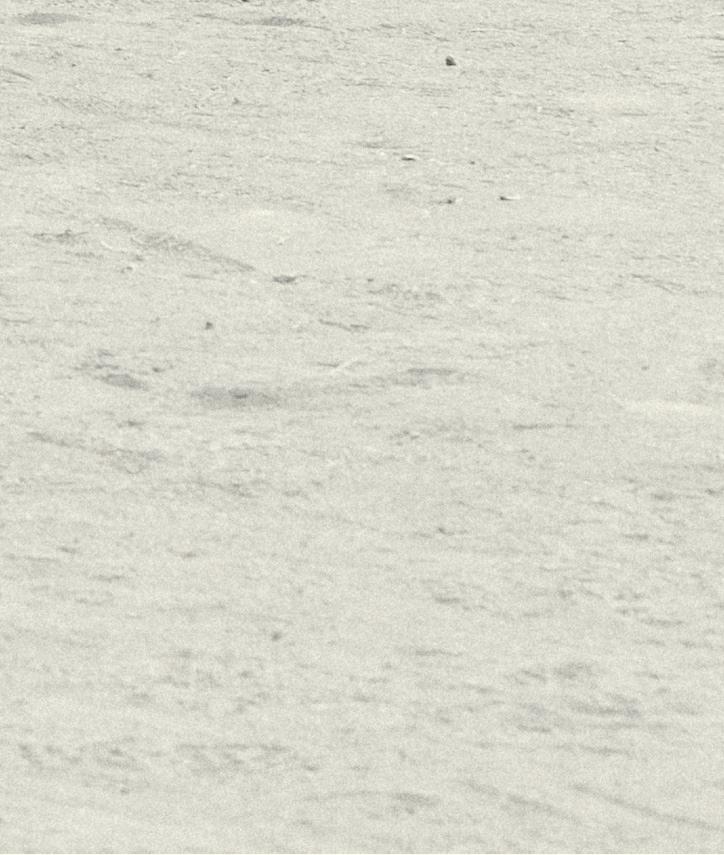
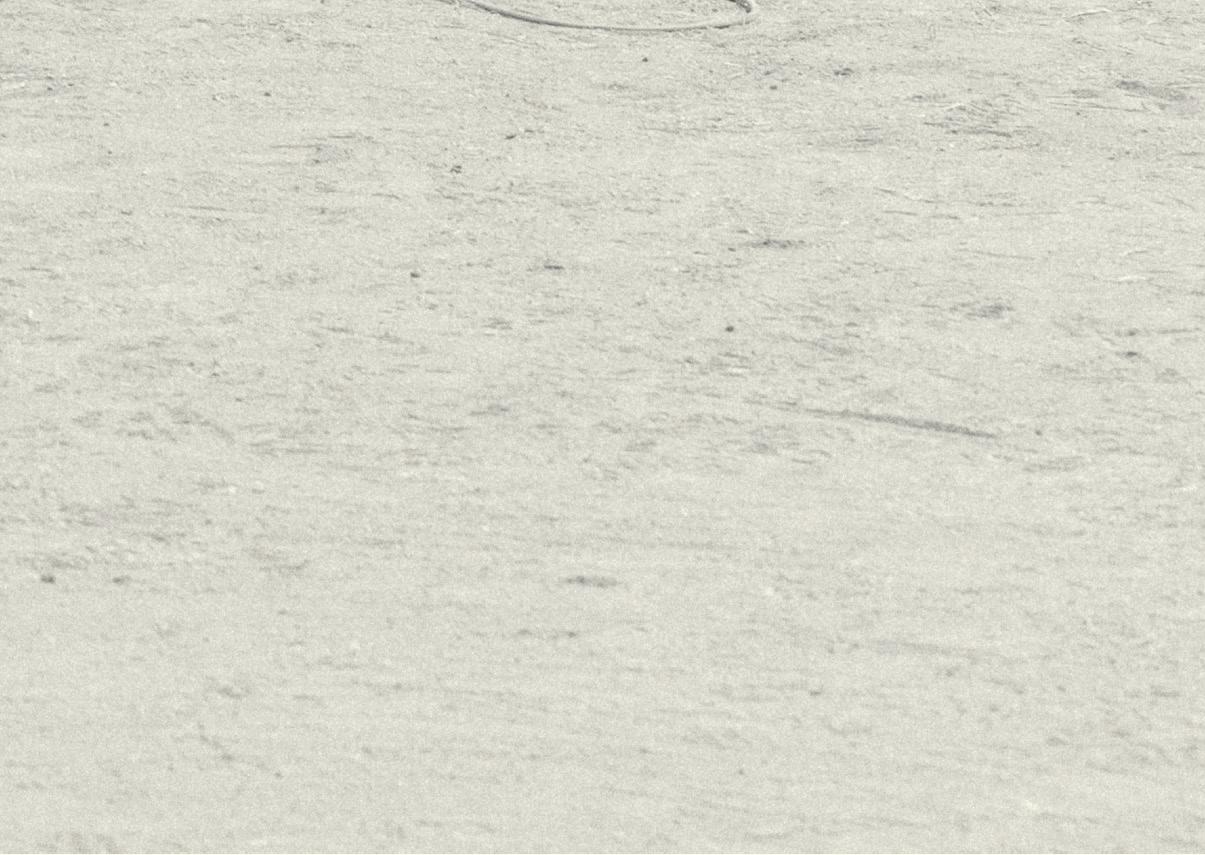

COMPILED BY TERESA MUÑOZ
The input of Local 600 members is of the utmost importance, and we rely on our membership as the prime (and often the only) source of information in compiling this section. In order for us to continue to provide this service, we ask that Guild members submitting information take note of the following requests:
Please provide up-to-date and complete crew information (including Still Photographers, Publicists, Additional Units, etc.). Please note that the deadline for the Production Credits is on the first of the preceding cover month (excluding weekends & holidays).
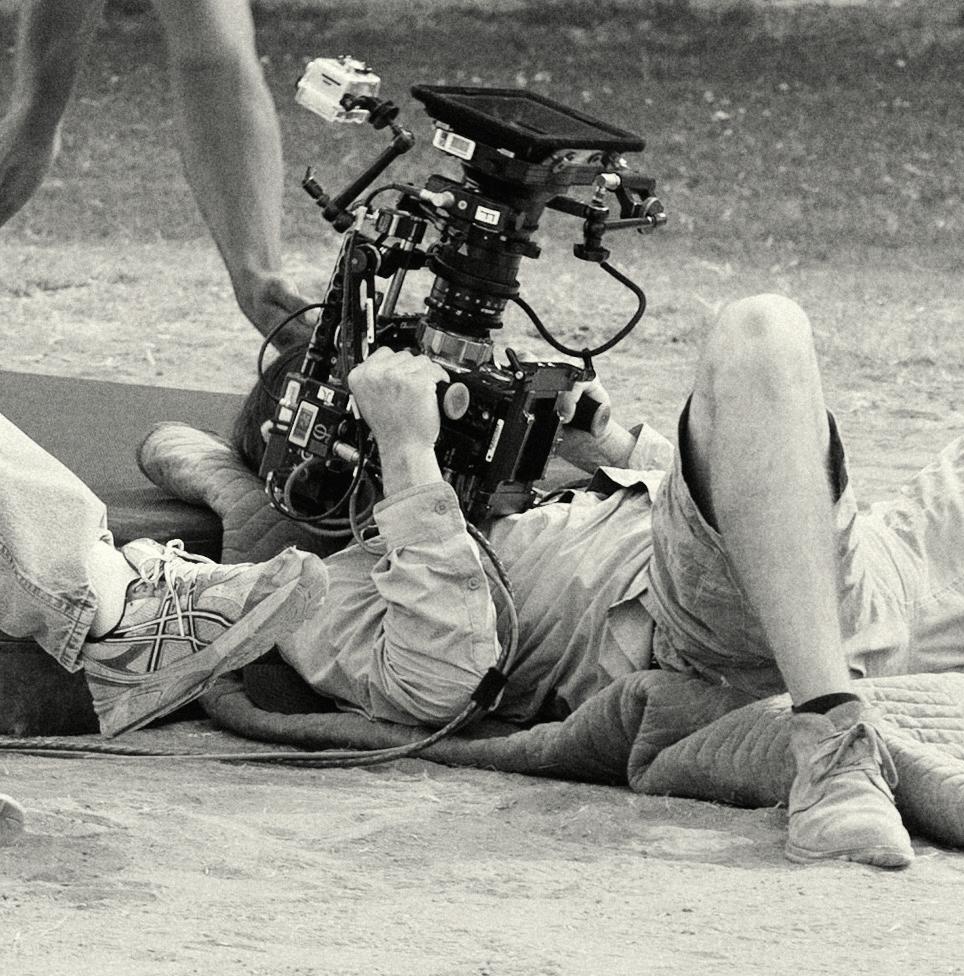
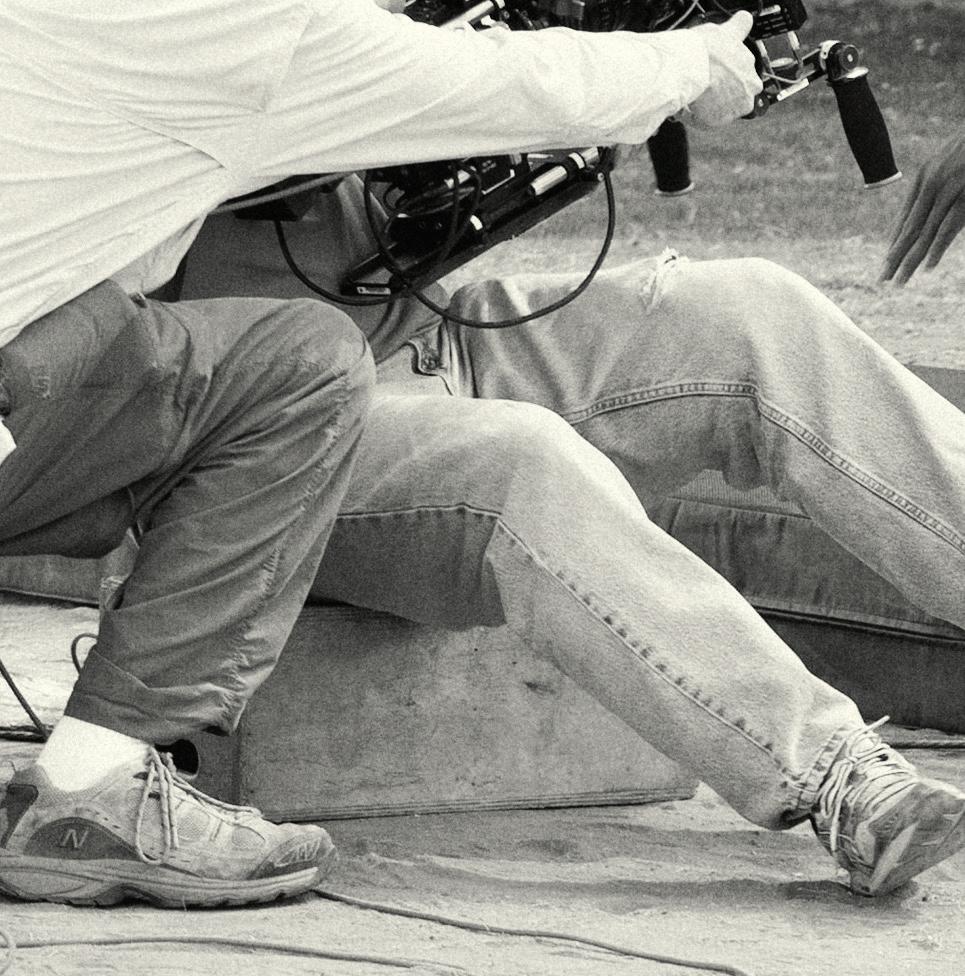
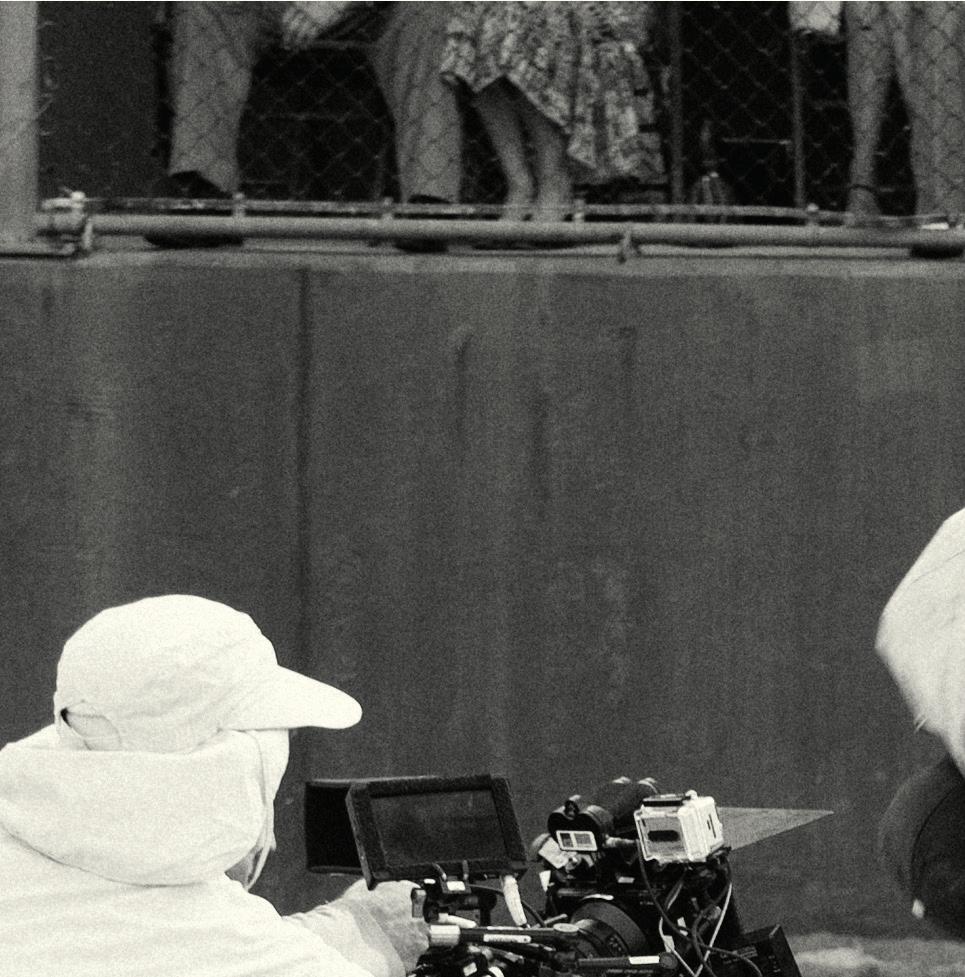
Submit your jobs online by visiting: www.icg600.com/MY600/Report-Your-Job
Any questions regarding the Production Credits should be addressed to Teresa Muñoz at teresa@icgmagazine.com
THE STUDIO
thestudiobh.com |
Exclusive for ICG members: Ask us about our purchasing program for members including our comprehensive set of financial services. Please contact thestudio@bhphoto.com for more details

20TH TELEVISION
“911: LONE STAR” SEASON 4
DIRECTORS OF PHOTOGRAPHY: NATHANAEL VORCE, PJ RUSS
OPERATORS: BRICE REID, JACK MESSITT, JAMES HAMMOND, DEAN MORIN
ASSISTANTS: CARLOS DOERR, KAORU “Q” ISHIZUKA, PENNY SPRAGUE, KELSEY CASTELLITTO, BLAIR ROGERS, EVAN WILHELM, BEN PERRY
STEADICAM OPERATOR: BRICE REID
RONIN OPERATOR: DEAN MORIN
DIGITAL IMAGING TECH: MIKE SANCHEZ
CAMERA UTILITY: JOE PACELLA
DIGITAL UTILITIES: BASSEM BALAA, BEAU MORAN
“ONLY MURDERS IN THE BUILDING” SEASON 3
DIRECTOR OF PHOTOGRAPHY: KYLE WULLSCHLEGER
OPERATORS: DANIEL SHARNOFF, PETER VIETRO-HANNUM
ASSISTANTS: TIMOTHY TROTMAN, JUSTIN SIMPSON, SARA BOARDMAN, KRISTINA LALLY
LOADERS: CHAD KEAN, MARINO SANNUTI STILL PHOTOGRAPHER: PATRICK HARBRON
ABC STUDIOS
“JIMMY KIMMEL LIVE!” SEASON 20
LIGHTING DIRECTOR: CHRISTIAN HIBBARD
OPERATORS: GREG GROUWINKEL, PARKER BARTLETT, GARRETT HURT, MARK GONZALES
STEADICAM OPERATOR: KRIS WILSON
JIB OPERATORS: MARC HUNTER, RANDY GOMEZ, JR., NICK GOMEZ
CAMERA UTILITIES: CHARLES FERNANDEZ, SCOTT SPIEGEL, TRAVIS WILSON, DAVID FERNANDEZ, ADAM BARKER
VIDEO CONTROLLER: GUY JONES

STILL PHOTOGRAPHERS: KAREN NEAL, MICHAEL DESMOND
2ND UNIT
DIRECTORS OF PHOTOGRAPHY: BERND REINBARDT, STEVE GARRETT
“GREY’S ANATOMY” SEASON 19 DIRECTORS OF PHOTOGRAPHY: BYRON SHAH, JEANNE TYSON
OPERATORS: STEPHEN CLANCY, SARAH LEVY, GREG WILLIAMS
ASSISTANTS: NICK MCLEAN, KIRK BLOOM, FORREST THURMAN, LISA BONACCORSO, CHRIS JONES, J.P. RODRIGUEZ
STEADICAM OPERATOR: STEPHEN CLANCY
STEADICAM ASSISTANT: NICK MCLEAN
LOADER: MARTE POST
DIGITAL UTILITY: SPENCER ROBINS
“GROWN-ISH” SEASON 6
DIRECTOR OF PHOTOGRAPHY: MARK DOERING-POWELL, ASC
OPERATORS: JESSE EVANS, ROBIN PABELLO
ASSISTANTS: ROBERT SCHIERER, MICHAEL KLEIMAN, TOMMY IZUMI, ROCIO MEDA LOADER: ANDREW OLIVER
DIGITAL UTILITY: LAUREN VANDERWERKEN STILL PHOTOGRAPHER: RON JAFFE
“STATION 19” SEASON 6
DIRECTORS OF PHOTOGRAPHY: DARYN OKADA, ASC, BRIAN GARBELLINI
OPERATORS: HARRY GARVIN, LISA STACILAUSKAS, SOC, DAVID MUN
ASSISTANTS: TONY SCHULTZ, GEORGE MONTEJANO, III, SALVADOR VEGA, DUSTIN FRUGE, ANDREW DEGNAN, HANNAH LEVIN
STEADICAM OPERATOR: HARRY GARVIN
STEADICAM ASSISTANT: TONY SCHULTZ
DIGITAL IMAGING TECH: ANDREW LEMON
UTILITIES: GRANT JOHNSON, BELLA RODRIGUEZ
CRANE TECHS: CHRIS DICKSON, DERRICK ROSE
A+E STUDIOS
“THE LINCOLN LAWYER” SEASON 2
DIRECTOR OF PHOTOGRAPHY: ABRAHAM MARTINEZ
OPERATORS: DENNIS NOYES, BRETT JUSKALIAN
ASSISTANTS: JOE CHEUNG, BRENDAN DEVANIE, PENNY SPRAGUE, BEN PERRY
DIGITAL IMAGING TECH: FRANCESCO SAUTA
CAMERA UTILITIES: ANDREW VERA, ELANA COOPER
LOADER: RAUL PEREZ
APPLE STUDIOS, LLC
“CATAMOUNT”
DIRECTOR OF PHOTOGRAPHY: ERIK MESSERSCHMIDT, ASC
ASSISTANTS: ALEX SCOTT, BRIAN WELLS, JONATHAN CLARK, ANDY HENSLER
STEADICAM OPERATORS: BRIAN OSMOND, MICK FROEHLICH
105 APRIL 2023 PRODUCTION CREDITS
thestudio@bhphoto.com
CINEMATOGRAPHY - POST PRODUCTION - DIGITAL WORKFLOWS
Discover what the studio can do for you
DIGITAL IMAGING TECH: CALVIN REIBMAN
LOADERS: SEAN GALCZYK, WILLIAM ESPINOLA
STILL PHOTOGRAPHER: JESSICA KOURKOUNIS
PUBLICIST: AMY JOHNSON
“UNICORN”
DIRECTOR OF PHOTOGRAPHY: LARKIN SEIPLE
OPERATORS: MICHAEL FUCHS, REBECCA RAJADNYA
ASSISTANTS: JAMES SCHLITTENHART, BAYLEY SWEITZER, ALEC NICKEL, RACHEL FEDORKOVA
CAMERA UTILITY: GLEN CHIN
DIGITAL IMAGING TECH: DOUGLAS HORTON
LOADERS: LIZZY COMPTON, NAIMA NOGUERA
STILL PHOTOGRAPHER: SCOTT GARFIELD
PUBLICIST: SPOOKY STEVENS
BEACHWOOD SERVICES
“DAYS OF OUR LIVES” SEASON 56
DIRECTOR OF PHOTOGRAPHY: VINCE STEIB
OPERATORS: MARK WARSHAW, MICHAEL J. DENTON, JOHNNY BROMBEREK, STEVE CLARK
CAMERA UTILITIES: STEVE BAGDADI, GARY CYPHER
VIDEO CONTROLLER: ALEXIS DELLAR HANSON
BILTMORE CHRISTMAS, LLC
“UNTITLED BILTMORE CHRISTMAS MOVIE AKA A BILTMORE CHRISTMAS”
DIRECTOR OF PHOTOGRAPHY: ANDREW RAWSON
OPERATORS: RON SCHLAEGER, TIMOTHY WALKER
ASSISTANTS: JUSTIN URBAN, MATHHEW MEBANE, EMILY
RUDY, NICHOLAS COLE BROWN
LOADER: ERICH COMBS
STILL PHOTOGRAPHER: DAVID SCOTT HOLLOWAY
BLIND FAITH PRODUCTIONS, LLC
“DAREDEVIL: BORN AGAIN”
DIRECTOR OF PHOTOGRAPHY: HILLARY FYFE SPERA
OPERATORS: THOMAS SCHNAIDT, BLAKE JOHNSON
ASSISTANTS: ALEXANDER WORSTER, OLGA ABRAMSON, YALE GROPMAN, ANGJELA COVIAUX
DIGITAL IMAGING TECH: PATRICK CECILIAN
LOADERS: MCKENZIE RAYCROFT, BRIANNA MCCARTHY
STILL PHOTOGRAPHER: GIOVANNI RUFINO
PUBLICIST: NICOLE KALISH
CBS
“ENTERTAINMENT TONIGHT” SEASON 41 LIGHTING
DESIGNER: DARREN LANGER
DIRECTOR OF PHOTOGRAPHY: KURT BRAUN
OPERATORS: JAMES B. PATRICK, ALLEN VOSS, ED SARTORI, BOB CAMPI, RODNEY MCMAHON, ANTHONY SALERNO
JIB OPERATOR: JAIMIE CANTRELL
CAMERA UTILITY: TERRY AHERN
VIDEO CONTROLLERS: MIKE DOYLE, PETER STENDAL
“EVIL” SEASON 4
DIRECTORS OF PHOTOGRAPHY: PETR HLINOMAZ, FRED MURPHY
OPERATORS: KATE LAROSE, PARRIS MAYHEW
ASSISTANTS: ROBERT BECCHIO, RENE CROUT, ALISA COLLEY, VINCENT LARAWAY
LOADERS: FAITH EMMOLO-JOHNSON, HOLDEN HLINOMAZ, ROBERT STACHOWICZ, DENIZE SZALMA
STILL PHOTOGRAPHER: ELIZABETH FISHER
“FRASIER” SEASON 1
DIRECTOR OF PHOTOGRAPHY: GARY BAUM, ASC
OPERATORS: ALEC ELIZONDO, DEBORAH O’BRIEN, LANCE BILLITZER, EDDIE FINE ASSISTANTS: NIGEL STEWART, BRADLEY TRAVER, CHRIS WORKMAN, JEFF ROTH, YUKA KADONO UTILITIES: DAN LORENZE, RICHIE FINE
VIDEO CONTROLLER: JOHN O’BRIEN
DIGITAL IMAGING TECH: DEREK LANTZ
“NCIS” SEASON 20
DIRECTOR OF PHOTOGRAPHY: WILLIAM WEBB, ASC OPERATORS: GREG COLLIER, CHAD ERICKSON ASSISTANTS: JAMES TROOST, NATE LOPEZ, HELEN TADESSE, YUSEF EDMONDS, ANNA FERRARIE LOADER: MIKE GENTILE
“THE NEIGHBORHOOD” SEASON 5
DIRECTOR OF PHOTOGRAPHY: CHRIS LAFOUNTAINE, ASC OPERATORS: BRUCE REUTLINGER, KRIS CONDE, CHRIS WILCOX, KEVIN HAGGERTY
ASSISTANTS: CHRIS TODD, JEFF ROTH, CRAIG LA FOUNTAINE
DIGITAL IMAGING TECH: RYNE NINER
VIDEO CONTROLLER: KELSEY NINER
CAMERA UTILITIES: VICKI BECK, TREVOR LA FOUNTAINE
TECHNO JOB OPERATOR: SCOTT ACOSTA
TECHNO JIB TECH: JESSE WILLIAMS STILL PHOTOGRAPHER: MONTY BRINTON
“THE TALK” SEASON 13
LIGHTING DIRECTOR: MARISA DAVIS
PED OPERATORS: ART TAYLOR, MARK GONZALES, ED STAEBLER
HANDHELD OPERATORS: RON BARNES, KEVIN MICHEL, JEFF JOHNSON
JIB OPERATOR: RANDY GOMEZ
HEAD UTILITY: CHARLES FERNANDEZ
UTILITIES: MIKE BUSHNER, DOUG BAIN, DEAN FRIZZEL, BILL GREINER, JON ZUCCARO
VIDEO CONTROLLER: RICHARD STROCK
STILL PHOTOGRAPHER: RON JAFFE
CHAIR 10 PRODUCTIONS, LLC
“HOLLY JOLLY”
DIRECTOR OF PHOTOGRAPHY: BARBIE LEUNG
OPERATORS: NADINE MARTINEZ, NIKNAZ TAVAKOLIAN
ASSISTANTS: MICHAEL BELARDI, MATTHEW LYNCH, MATT ALBANO, AMAYA CHENU
STILL PHOTOGRAPHER: DAVID SCOTT HOLLOWAY
CHUCK LORRE PRODUCTIONS
“HOW TO BE A BOOKIE”
DIRECTOR OF PHOTOGRAPHY: JAIME REYNOSO, AMC OPERATORS: MIKAEL LEVIN, APRIL CROWLEY, JOEL PERKAL
ASSISTANTS: ROBERT MUTHAMIA, RYAN PILON, MATTHEW G. FISHER, ROSE LICAVOLI, JON JUNG, NATHAN CRUM
STEADICAM OPERATOR: MIKAEL LEVIN
STEADICAM ASSISTANT: ROBERT MATHUMIA
LOADER: PHOEBE KRUEGER
DIGITAL UTILITY: JACOB HELLINGA
CRANETOWN MEDIA, LLC
“SHEEPDOG”
DIRECTOR OF PHOTOGRAPHY: EVANS BROWN
OPERATOR: THOMAS DEAN
ASSISTANTS: TALIA KROHMAL, AUDREY STEVENS
LOADER: JENNA HOBGOOD
DISNEY/SALTY PICTURES
“HIGH SCHOOL MUSICAL: THE MUSICAL” SEASON 3
DIRECTOR OF PHOTOGRAPHY: HISHAM ABED
OPERATORS: JESSE EVANS, TAHLEE SCARPITTI
ASSISTANTS: MAX NEAL, ROBERT GILPIN, STEVE ROMMEVAUX, KEITH BRONSDON
STEADICAM OPERATOR: JESSE EVANS
DIGITAL IMAGING TECH: EARL FULCHER
LOADER: EMMA MASSALONE
EYE PRODUCTIONS, INC.
“BLUE BLOODS” SEASON 13
DIRECTOR OF PHOTOGRAPHY: DONALD THORIN
OPERATORS: STEPHEN CONSENTINO, GEOFFREY FROST
ASSISTANTS: NICHOLAS DEEG, GLEN CHIN, KENNETH MARTELL, JONATHAN SCHAEFER, MICHAEL GUTHRIE, MAXWELL SLOAN, MATEO GONZALEZ, HAROLD ERKINS, MYO CAMPBELL
LOADERS: NANDIYA ATTIYA, MICHAEL PARRY
STILL PHOTOGRAPHERS: LINDA KALLERUS, ALYSSA LONGCHAMP, EMILY ARAGONES
FIDELIS PRODUCTIONS, LLC
“AMERICAN RUST” SEASON 2
DIRECTOR OF PHOTOGRAPHY: RADIUM CHEUNG, HKSC
OPERATORS: DAVID KIMELMAN, FRANK RINATO
ASSISTANTS: GUS LIMBERIS, AMANDA ROTZLER, BRIAN BRESNEHAN, GABRIEL MARCHETTI, VINCENT DEPINTO
DIGITAL IMAGING TECH: CHRISTOPHER CHARMEL
LOADER: THOMAS HOLMES
DIGITAL UTILITY: JUSTIN ILLIG
STILL PHOTOGRAPHER: DENNIS MONG
GHOST PRODUCTIONS, INC.
“POWER BOOK II: GHOST” SEASON 4
DIRECTORS OF PHOTOGRAPHY: AARON MEDICK, DANIEL PATTERSON
OPERATORS: JAY SILVER, GARETH MANWARING, PHILIP MARTINEZ
ASSISTANTS: MICHAEL GAROFALO, RODRIGO MILLAN GARCE, TREVOR WOLFSON, KATHERINE RIVERA
DIGITAL IMAGING TECH: ROB MUIA
LOADERS: BRENDAN CRILLEY, FAY EMMOLO-JOHNSON STILL PHOTOGRAPHERS: PAUL SCHIRALDI, MATTHEW INFANTE, CARA HOWE
PUBLICIST: SABRINA LAUFER
HOP, SKIP, & JUMP PRODUCTIONS
“WHILE YOU WERE BREEDING” SEASON 1
DIRECTOR OF PHOTOGRAPHY: BENJAMIN KASULKE
OPERATORS: MARC CARTER, GARRETT ROSE
ASSISTANTS: SHARLA CIPICCHIO, LITONG ZHEN
DIGITAL IMAGING TECH: CHARLES ALEXANDER
IRONY WEST CORP.
“LITTLE FILMS AKA FANTASMAS
DIRECTOR OF PHOTOGRAPHY: SAM LEVY
OPERATOR: JENNIE JEDDRY
ASSISTANTS: MARCOS HERRERA, TROY SOLA, BABETTE GIBSON, BRITTANY JELINSKI
DIGITAL IMAGING TECH: LOIC DE LAME
LOADER: RICHARD PENA
STILL PHOTOGRAPHERS: MONICA LEK, ATSUSHI NISHIJIMA
APRIL 2023 PRODUCTION CREDITS 106
KANAN PRODUCTIONS, INC.
“POWER BOOK, III: RAISING KANAN” SEASON 3
DIRECTORS OF PHOTOGRAPHY: CHRIS LAVASSEUR, FRANCIS SPIELDENNER
OPERATORS: JEFFREY DUTEMPLE, GREGORY FINKEL
ASSISTANTS: MARK FERGUSON, SUREN KARAPETYAN, EMILY DEBLASI, KEITH ANDERSION
DIGITAL IMAGING TECH: HUNTER FAIRSTONE
LOADERS: BRIAN CARDENAS, PAUL SPANG, JC QUIROZ
STILL PHOTOGRAPHERS: CARA HOWE, DAVID SCOTT HOLLOWAY, MATT INFANTE, ERIC LIEBOWITZ
PUBLICIST: EVELYN SANTANA
MINIM PRODUCTIONS, INC.
“THE BORDER” PILOT
DIRECTOR OF PHOTOGRAPHY: ALEXANDER WITT
OPERATORS: RONALD HERSEY, SCOTT KOENIGSBERG
ASSISTANTS: CHRISTOPHER WIEZOREK, SOREN NASH, AMBER MATHES, JAMES DEMETRIOU
DIGITAL IMAGING TECHS: MATT RIGGIERI, MATTHEW JENSEN
LOADER: AMANDA DEERY, NATASHA MARSHALL, ALI CIRENZA
STILL PHOTOGRAPHER: ERIC LIEBOWITZ
NBC UNIVERSAL TELEVISION, LLC
“CHICAGO PD” SEASON 10
DIRECTOR OF PHOTOGRAPHY: JAMES ZUCAL
OPERATORS: VICTOR MACIAS, JAMISON ACKER, CHRIS HOOD
ASSISTANTS: KYLE BELOUSEK, DON CARLSON, NICK WILSON, MARION TUCKER, CHRIS POLMANSKI, MAX MOORE
STEADICAM OPERATOR: VICTOR MACIAS
STEADICAM ASSISTANT: KYLE BELOUSEK
LOADER: STEVEN CLAY
DIGITAL UTILITY: REBECCA JOHNSON
STILL PHOTOGRAPHER: LORI ALLEN
“FBI” SEASON 5
DIRECTOR OF PHOTOGRAPHY: BART TAU
OPERATORS: AFTON GRANT, MICHAEL LATINO
ASSISTANTS: LEE VICKERY, YURI INOUE, GEORGE LOOKSHIRE, NKEM UMENYI
LOADERS: RAUL MARTINEZ, CONNOR LYNCH STILL PHOTOGRAPHER: BENNETT RAGLIN
“LAW & ORDER” SEASON 22
DIRECTOR OF PHOTOGRAPHY: CRAIG DIBONA, ASC
OPERATORS: CHRIS HAYES, TOM WILLS
ASSISTANTS: ALEX WATERSTON, IAN BRACONE, DEREK DIBONA, EMILY DUMBRILL
LOADERS: MAX SCHWARZ, MATT ELDRIDGE
“LAW & ORDER: ORGANIZED CRIME” SEASON 3
DIRECTOR OF PHOTOGRAPHY: JIM DENAULT, ASC
OPERATORS: JONATHAN BEATTIE, JOHN PIROZZI
ASSISTANTS: JOHN OLIVERI, NICHOLAS HAHN, KEVIN HOWARD, DERRICK DAWKINS
LOADERS: PAT ARELLANO, BRANDON OSBORN
“LAW & ORDER: SPECIAL VICTIMS UNIT” SEASON 24
DIRECTOR OF PHOTOGRAPHY: FELIKS PARNELL
OPERATORS: JON HERRON, CHRIS DEL SORDO
ASSISTANTS: MIKE GUASPARI, CHRISTIAN CARMODY, RYAN HADDON, MARY NEARY
LOADERS: LIAM GANNON, JAMES WILLIAM
STILL PHOTOGRAPHER: ALYSSA LONGCHAMP
“THE EQUALIZER” SEASON 3
DIRECTORS OF PHOTOGRAPHY: TERRENCE BURKE, RON FORTUNATO
OPERATORS: JOSPEPH BLODGETT, TODD SOMODEVILLA, JASON MASON, RICARDO SARMIENTO ASSISTANTS: ADAM GONZALEZ, JOHN FITZPATRICK, JELANI WILSON, BRYANT BAILEY, JAY ECKARDT, WARIS SUPANPONG, MICHAEL LOBB, JASON RASWANT, NIALANEY RODRIGUEZ, DANTE CORROCHER, ALEJANDRO LAZARE
DIGITAL IMAGING TECHS: TIFFANY ARMOUR-TEJADA, NATHANIEL SPIVEY
LOADERS: NAJOOD ALTERKAWI, TOM FOY, JAMAR OLIVE, SAM SHOEMAKER
STILL PHOTOGRAPHERS: MICHAEL GREENBERG, ALYSSA LONGCHAMP
NORTH CENTER PRODUCTIONS, LLC
“THE PENGUIN”
DIRECTOR OF PHOTOGRAPHY: DARRAN TIERNAN
OPERATORS: SAM ELLISON, ELI ARONOFF
ASSISTANTS: KALI RILEY, DEAN MARTINEZ, ADAM RUSSELL, BRIAN GRANT
STEADICAM OPERATOR: ELI ARONOFF
DIGITAL IMAGING TECH: ANTHONY HECHANOVA
LOADER: TAYLOR PRINZIVALLI
CAMERA UTILITY: MOXIE HARFELD
STILL PHOTOGRAPHER: MACALL POLAY
PARAMOUNT PICTURES
“MEAN GIRLS: THE MUSICAL”
DIRECTOR OF PHOTOGRAPHY: WILLIAM KIRSTEIN
OPERATORS: ARI ROBBINS, BRIAN JACKSON
ASSISTANTS: ERIC SWANEK, ANDREW PECK, TYLER SWANEK, CAROLYN WILLS
DIGITAL IMAGING TECH: GABRIEL KOLODNY
LOADER: AMANDA LETTIERI
STILL PHOTOGRAPHER: JOJO WHILDEN
SALT SPRING MEDIA, INC.
“LIFE & BETH” SEASON 2
DIRECTOR OF PHOTOGRAPHY: ROBERT BAROCCI
OPERATORS: CHARLES BEYER, CAROLYN PENDER, PYARE FORTUNATO
ASSISTANTS: CORY STAMBLER, BRENDAN RUSSELL, ALEX DUBOIS, CHARLOTTE SKUTCH
LOADERS: BRANDON BABBIT, JEANNA CANATSEY
STILL PHOTOGRAPHER: MARCUS PRICE
“SEVERANCE” SEASON 2
DIRECTORS OF PHOTOGRAPHY: JESSICA LEE GAGNE, SUZIE LAVELLE
OPERATORS: SCOTT MAGUIRE, MARK SCHMIDT ASSISTANTS: MICHAEL GUTHRIE, EMMA HING, CAMERON SIZEMORE, FRANCIS MILEA
STEADICAM OPERATOR: MARK SCHMIDT
DIGITAL IMAGING TECH: LUKE TAYLOR
LOADER: AMELIA SUMMAR
HEAD TECH: MICHAEL INDURSKY, DANIELLE WILCOX
STILL PHOTOGRAPHER: JON PACK
PUBLICIST: PEGGY MULLOY
SHOVEL BUDIES, LLC
“ZOEY 102 AKA ELECTRIC LOVE”
DIRECTOR OF PHOTOGRAPHY: MATHEW RUDENBERG OPERATORS: JOHN LEHMAN, MICHAEL REPETA ASSISTANTS: PATRICK BOROWIAK, ELI MCMEEN WALLACE-JOHANSSON, ROY KNAUF, JILL AUTRY
DIGITAL IMAGING TECH: ANDY BADER
LOADER: BRANDON ROBEY
DRONE OPERATOR: ANDREW RORK
STILL PHOTOGRAPHER: DANA HAWLEY
SHOWTIME
“BILLIONS” SEASON 7
DIRECTORS OF PHOTOGRAPHY: JOSEPH GALLAGHER, GIORGIO SCALI, BRAD SMITH
OPERATORS: ALAN PIERCE, NICOLA BENIZZI
ASSISTANTS: GRAHAM BURT, LEONARDO GOMEZ, KELLON INNOCENT, SEAN MCNAMARA
LOADER: HUSSEIN FARRAJ
STILL PHOTOGRAPHERS: PATRICK HARBRON, WILLIAM DOUGLAS MEILS
SONY PICTURES TELEVISION
“JEOPARDY!” SEASON 36
DIRECTOR OF PHOTOGRAPHY: JEFF ENGEL
OPERATORS: DIANE L. FARRELL, SOC, MIKE TRIBBLE, JEFF SCHUSTER,
L. DAVID IRETE
JIB ARM OPERATOR: MARC HUNTER
HEAD UTILITY: TINO MARQUEZ
CAMERA UTILITY: RAY THOMPSON
VIDEO CONTROLLER: JEFF MESSENGER
VIDEO UTILITIES: MICHAEL CORWIN, JEFF KLIMUCK
STILL PHOTOGRAPHER: CAROL KAELSON
“WHEEL OF FORTUNE” SEASON 37
DIRECTOR OF PHOTOGRAPHY: JEFF ENGEL
OPERATORS: DIANE L. FARRELL, SOC,
L.DAVID IRETE, RAY GONZALES, MIKE TRIBBLE
HEAD UTILITY: TINO MARQUEZ
CAMERA UTILITY: RAY THOMPSON
VIDEO CONTROLLER: JEFF MESSENGER
VIDEO UTILITIES: MICHAEL CORWIN, JEFF KLIMUCK
JIB ARM OPERATOR: STEVE SIMMONS
STILL PHOTOGRAPHER: CAROL KAELSON
STALWART PRODUCTIONS, LLC
“SUMMIT”
DIRECTOR OF PHOTOGRAPHY: ADRIAN CORREIA
OPERATORS: DEVIN LADD, KATHLEEN HARRIS
ASSISTANTS: ANDREW BRINKMAN, CASEY JOHNSON, JOSHUA REYES, YAYO VANG
CAMERA UTILITY: VICTOR DUNN
DIGITAL IMAGING TECH: LOIC DE LAME
LOADER: PAUL SPANG
STILL PHOTOGRAPHER: GENE PAGE
VERIFIED
“NEON”
DIRECTOR OF PHOTOGRAPHY: DIANA MATOS
OPERATORS: EDGAR COLON, CESAR MARRERO
ASSISTANTS: ABNER MEDINA ALEJANDRO, BRENDALIZ NEGRON COLON, ZORAIDA LUNA, MARAYDA CABRERA DAVILA
LOADER: NESTOR CESTERO
STILL PHOTOGRAPHER: FRANCISCO ROMAN SANCHEZ
WARNER BROS.
“ALL AMERICAN” SEASON 5
DIRECTORS OF PHOTOGRAPHY: ERIC LAUDADIO, ERIBERTO CORDERO
OPERATOR: DANIEL WURSCHL
ASSISTANTS: BLAKE COLLINS, GREG DELLERSON,
107 APRIL 2023 PRODUCTION CREDITS
KIRSTEN LAUBE, JESSICA PINNS
STEADICAM OPERATOR: DANIEL WURSCHL
STEADICAM ASSISTANT: GREG DELLERSON
DIGITAL IMAGING TECH: URBAN OLSSON
DIGITAL UTILITY: LAVEL MO MORTON
“YOUNG SHELDON” SEASON 6
DIRECTOR OF PHOTOGRAPHY: BUZZ FEITSHANS, IV
OPERATORS: NEIL TOUSSAINT, AARON SCHUH
ASSISTANTS: MATTHEW DEL RUTH, GRANT YELLEN, BRAD GILSON, JR., JAMES COBB
STEADICAM OPERATOR: AARON SCHUH
LOADERS: BAILEY SOFTNESS, CONNER MCELROY
WONDER STREET PRODUCTIONS
“EAST NEW YORK”
DIRECTORS OF PHOTOGRAPHY: ZEUS MORAND, JENDRA JARNAGIN
OPERATORS: JULIEN ZEITOUNI, PETER NOLAN, DAVID ISERN, ALAN JACOBSEN, LUCAS OWEN
ASSISTANTS: SAMANTHA SILVER, VINCENT TUTHS, ERIKA HOULE, EVAN WALSH, MARC CHARBONNEAU, ELIZABETH CASINELLI, ANABEL CAICEDO, KYLE TERBOSS, CORY MAFFUCCI, NOLAN MALONEY, JAMES DEMETRIOU, KATHERINE RIVERA, CHRISTOPHER PATRIKIS
DIGITAL IMAGING TECHS: MATTHEW RICHARDS, JESSICA TA
LOADERS: MANUEL GARCIA, TOM FOY, ALEX LILJA, DAVID DIAZ
TECHNOCRANE TECH: JORDAN HRISTOV
STILL PHOTOGRAPHERS: SCOTT MCDERMOTT, PATRICK HARBRON
WOODBRIDGE PRODUCTIONS
“THE BLACKLIST” SEASON 10
DIRECTORS OF PHOTOGRAPHY: DEREK WALKER, MICHAEL O’SHEA
OPERATORS: DEVIN LADD, JAY SILVER
ASSISTANTS: MIKE GUASPARI, EDWIN HERRERA, EDGAR VELEZ, KAIH WONG
LOADERS: REMINGTON LONG, BERNARDO RUIZ POZO
STILL PHOTOGRAPHERS: PATRICK HARBRON, WILL HART
ARTS & SCIENCES
“STELLA ARTOIS”
DIRECTOR OF PHOTOGRAPHY: JEREMY SNELL
OPERATOR: RYAN TOUSSIENG
ASSISTANTS: EVAN WALSH, SHAUN MALKOVICH, AMANDA URIBE, IVANA BERNAL
DIGITAL IMAGING TECH: MIKE KELLOGG
REMOTE HEAD TECH: SEAN FOLKL
BAUIE+RAD
“PRIME VIDEO”
DIRECTOR OF PHOTOGRAPHY: GUS SACKS
OPERATORS: WESLEY KABAKJIAN, MEGAN MASUR
ASSISTANTS: JOHN CLEMENS, NINA CHIEN, SCOTT MILLER, RICHARD PALLERO
DIGITAL IMAGING TECH: RYAN WINSOR
BELIEVE MEDIA, INC.
“KOHL’S HOLIDAY”
DIRECTOR OF PHOTOGRAPHY: MIKA ALTSKAN
ASSISTANTS: FILIPP PENSON, NINA CHIEN
DIGITAL IMAGING TECH: MIKE KELLOGG
CMS PRODUCTIONS
“ESPN”
DIRECTOR OF PHOTOGRAPHY: MAX GOLDMAN
ASSISTANTS: ETHAN MCDONALD, ALAN CERTEZA, ARTHUR ZAJAC
STEADICAM OPERATOR: ROSS COSCIA
DIGITAL IMAGING TECH: JESSE TYLER
CMS/YORK PRODUCTIONS
“LIQUID IV”
DIRECTOR OF PHOTOGRAPHY: ALLISON ANDERSON
OPERATOR: JUN LI
ASSISTANTS: JOSEPH SORIA, JORDAN OGLESBY
STEADICAM OPERATOR: JUN LI
DIGITAL IMAGING TECH: ISAAC GUY
COMMUNITY FILMS
“TAYLOR MADE”
DIRECTOR OF PHOTOGRAPHY: ERIC SCHMIDT
ASSISTANTS: GREG FRANK, WILLEM VAN VARK, ABDIEL THORNE, DANIEL LUCIO
STEADICAM OPERATOR: JAMES BALDANZA
DIGITAL IMAGING TECH: JON MCARDLE
“WHITE CLAW VODKA”
DIRECTOR OF PHOTOGRAPHY: ERIC SCHMIDT OPERATOR: CHRIS BOTTOMS
COMMERCIALS
3700 PRODUCTIONS, INC.
“MD LOTTERY”
DIRECTOR OF PHOTOGRAPHY: THOMAS INSKEEP
ASSISTANT: IAN AXILROD
ALPEN
“SJC”
DIRECTOR OF PHOTOGRAPHY: DAVID JONES
ASSISTANTS: WILL DAUEL, ANTHONY ROSARIO, AUSTIN PEDRONI
DIGITAL IMAGING TECH: JORDAN LIVINGSTON
ASSISTANTS: LILA BYALL, BILL ROBINSON, GAVIN GROSSI
DIGITAL IMAGING TECH: TAMAS HARANGI
DICTIONARY FILMS, LLC
“SAMSUNG”
DIRECTOR OF PHOTOGRAPHY: DEREK MCKANE
ASSISTANTS: ERIK KANDEFER, NOLAN MALONEY
DIGITAL IMAGING TECH: MARIUSZ CICHON
TECHNOCRANE TECH: MICHAEL BUCK
LIBRA TECH: LANCE MAYER
ELEANOR
“HYUNDAI”
DIRECTOR OF PHOTOGRAPHY: XIAOLONG LIU
ASSISTANTS: RYAN SAX, JONATHAN CYPRESS
STEADICAM OPERATOR: COLIN MACDONNELL
DIGITAL IMAGING TECH: GIANENNIO SALUCCI
GLP CREATIVE, LLC
“BETWAY”
DIRECTOR OF PHOTOGRAPHY: LUKE MCCOUBREY
ASSISTANTS: WALTER RODRIGUEZ, MATT DEGREFF
GREENCARD
“GENENTECH”
DIRECTORS OF PHOTOGRAPHY: BENJI DELL, ED WU
ASSISTANTS: BRYCE PLATZ, DUSTY SAUNDERS, DARRELL NASH
DIGITAL IMAGING TECH: NICK STRAUSER
HONOR SOCIETY FILMS, LLC
“DIETZ & WATSON”
DIRECTOR OF PHOTOGRAPHY: JUSTIN DERRY
ASSISTANTS: JAMES MAYFIELD, MIKE TOLAND, WILLIAM ESPINOLA
STEADICAM OPERATOR: KYLE DERRY
DIGITAL IMAGING TECH: JACOB JOSEPH WESTPHAL
HUNGRY MAN PRODUCTIONS
“VERIZON”
DIRECTOR OF PHOTOGRAPHY: DARREN LEW
ASSISTANTS: JOHN CLEMENS, PETER MORELLO, SCOTT HALL MILLER, NATHAN MCGARIGAL
STEADICAM OPERATOR: JEFF MUHLSTOCK
DIGITAL IMAGING TECH: JEFFREY FLOHR
IMPERIAL WOODPECKER
“AT&T”
DIRECTOR OF PHOTOGRAPHY: ALEXIS ZABE
OPERATOR: WAYNE GORING
ASSISTANTS: BAS TIELE, KEITH BRONSDON, NICK FISCHER, ROB GILPIN
DIGITAL IMAGING TECH: NINA CHADHA
REMOTE HEAD TECH: JAY SHEVECK
CRANE OPERATOR: GREG BROOKS
LATITUDE 18 FILMS, INC.
“CORONA”
DIRECTOR OF PHOTOGRAPHY: IGOR JADUE-LILLO
ASSISTANTS: RYAN RAYNER, ANTONIO SILVA
CAMERA UTILITY: SAMUEL VELEZ ROMERO
DIGITAL IMAGING TECH: OMAR D RIVERA ABREU
MERMAN USA, LLC
“MONTEFIORE”
OPERATOR: SCOTT HALL MILLER
ASSISTANTS: JOHN CLEMENS, AUSTIN ROBERT KITE, JORDAN LEVIE
DIGITAL IMAGING TECH: ARTUR DZIEWECZYNSKI
PARK PICTURES
“GOOGLE”
DIRECTOR OF PHOTOGRAPHY: JODY LEE LIPES
ASSISTANTS: VANESSA VIERA MORRISON, DARNELL MCDONALD
DIGITAL IMAGING TECH: JEFF FLOHR
APRIL 2023 PRODUCTION CREDITS 108
PRETTYBIRD
“GLACEAU VITAMIN WATER”
DIRECTOR OF PHOTOGRAPHY: ROB WITT
ASSISTANTS: NICOLAS MARTIN, ANDIE GILL
DIGITAL IMAGING TECH: FABRICIO DISANTO
PSYOP PRODUCTIONS, LLC
“FANDUEL”
DIRECTOR OF PHOTOGRAPHY: COREY WATERS
ASSISTANTS: THOMAS GRECO, MITCH MALPICA
STEADICAM OPERATOR: ARI ROBBINS
DIGITAL IMAGING TECH: IAN EDWARDS
RADICAL MEDIA
“FCAS”
DIRECTOR OF PHOTOGRAPHY: JODY LEE LIPES
ASSISTANTS: ERIC SWANEK, TYLER SWANEK
SCHROM
“RED LOBSTER”
DIRECTOR OF PHOTOGRAPHY: MICHAEL SCHROM
OPERATOR: JOHN MCCABE
ASSISTANT: RICHARD GIOIA
DIGITAL IMAGING TECH: DONALD CORNETT
SMUGGLER
“COKE GATHERING”
DIRECTOR OF PHOTOGRAPHY: DARREN LEW
OPERATOR: FRANK LARSON
ASSISTANTS: JOHN CLEMENS, GLENN KAPLAN, SCOTT HALL MILLER, EVE STRICKMAN
DIGITAL IMAGING TECH: TOM WONG
“SMARTWATER”
DIRECTOR OF PHOTOGRAPHY: BRYAN NEWMAN
OPERATOR: MATTHEW LYONS
ASSISTANTS: JOHN CLEMENS, JOHNNY SOUSA, SCOTT HALL MILLER
DIGITAL IMAGING TECH: MARIUSZ CICHON
SPARE PARTS
“FOX SPORTS”
DIRECTOR OF PHOTOGRAPHY: AUTUMN DURALD
ARKAPAW, ASC
OPERATOR: JOSH MEDAK
ASSISTANTS: ETHAN MCDONALD, ANDRAE CRAWFORD, ALAN CERTEZA
STEADICAM OPERATOR: ROSS COSCIA
DIGITAL IMAGING TECH: LONNY DANLER
SUPERPRIME
“WALMART”
DIRECTOR OF PHOTOGRAPHY: EDU GRAU, ASC
ASSISTANTS: JESSE CAIN, ROBBIE JULIAN
DIGITAL IMAGING TECH: JESSE TYLER
SWEET RICKEY
“DRAFTKINGS”
DIRECTOR OF PHOTOGRAPHY: PATRICK RUTH
OPERATORS: JOSEPH LAVALLEE, M. DEAN EGAN
ASSISTANTS: CHRISTIAN HOLLYER, RICHELLE TOPPING
DIGITAL IMAGING TECH: NICK PASQUARIELLO
THE CORNER SHOP
“VANGUARD”
DIRECTOR OF PHOTOGRAPHY: MARCELL REV
ASSISTANTS: NORRIS FOX, PAUL METCALF, AMANDA MORGAN
DIGITAL IMAGING TECH: KEVIN ZANIT
LOADER: CLEO PALMIERI
TOOL OF NORTH AMERICA
“CAPITAL ONE”
DIRECTOR OF PHOTOGRAPHY: ERIC SCHMIDT
OPERATOR: COLLIN DAVIS
ASSISTANTS: LILA BYALL, BILL ROBINSON, GAVIN GROSSI, NOAH GLAZER
STEADICAM OPERATOR: XAVIER HENSELMANN
DIGITAL IMAGING TECH: TAMAS HARANGI
WORLD WAR SEVEN
“JETBLUE”
DIRECTOR OF PHOTOGRAPHY: AUTUMN DURALD ARKAPAW, ASC
OPERATOR: JOSH MEDAK
ASSISTANTS: ETHAN MCDONALD, ANDRAE CRAWFORD, ALAN CERTEZA
DIGITAL IMAGING TECH: LONNY DANLER
109 APRIL 2023 PRODUCTION CREDITS
COMPANY PAGE URL ARRI 5 WWW.ARRI.COM/ALEXA-MINI-LF B&H THE STUDIO 105 WWW.THESTUDIOBH.COM CINE GEAR EXPO 17 WWW.CINEGEAREXPO.COM MASTERPIECE INT’L 7 MASTERPIECEINTL.COM/LIGHTS-CAMERA-ACTION-LOGISTICS/? NAB SHOW 112 WWW.NABSHOW.COM SONY 9 WWW.SONYCINE.COM TIFFEN 11 WWW.TIFFEN.COM Advertisers Index ADVERTISING REPRESENTATIVES WEST COAST & CANADA ROMBEAU INC. Sharon Rombeau Tel: (818) 762-6020 Fax: (818) 760-0860 Email: sharonrombeau@gmail.com EAST COAST & EUROPE ALAN BRADEN INC. Alan Braden Tel: (818) 850-9398 Email: alanbradenmedia@gmail.com
DENNYS ILIC
PICARD
This image, taken during Picard’s final season, showcases three amazing filmmakers. I had worked with Jonathan Frakes (left) before on Star Trek: Discovery and found him to be one of the most talented directors I have ever met – inclusive, kind and wildly funny. Crescenzo (center) I have known for many years, having published his fine art photography book Nude . (I’m a boutique publisher as well as a unit photographer.) However, this was my first time in the same room with Michael Dorn (right) and my first time on a set with Crescenzo. I’m not often overwhelmed by the talent that I work with, but I’ve been a Star Trek aficionado since watching the original series back in the 1960s. So, finally meeting and photographing Dorn was a wonderful experience. Add to this the privilege of watching Crescenzo work his art; it brought me to another level of appreciation for this incredible cinematographer and how easy he made it for me to obtain beautiful images on this series.

110 APRIL 2023
STOP MOTION 04.2023 110 APRIL 2023
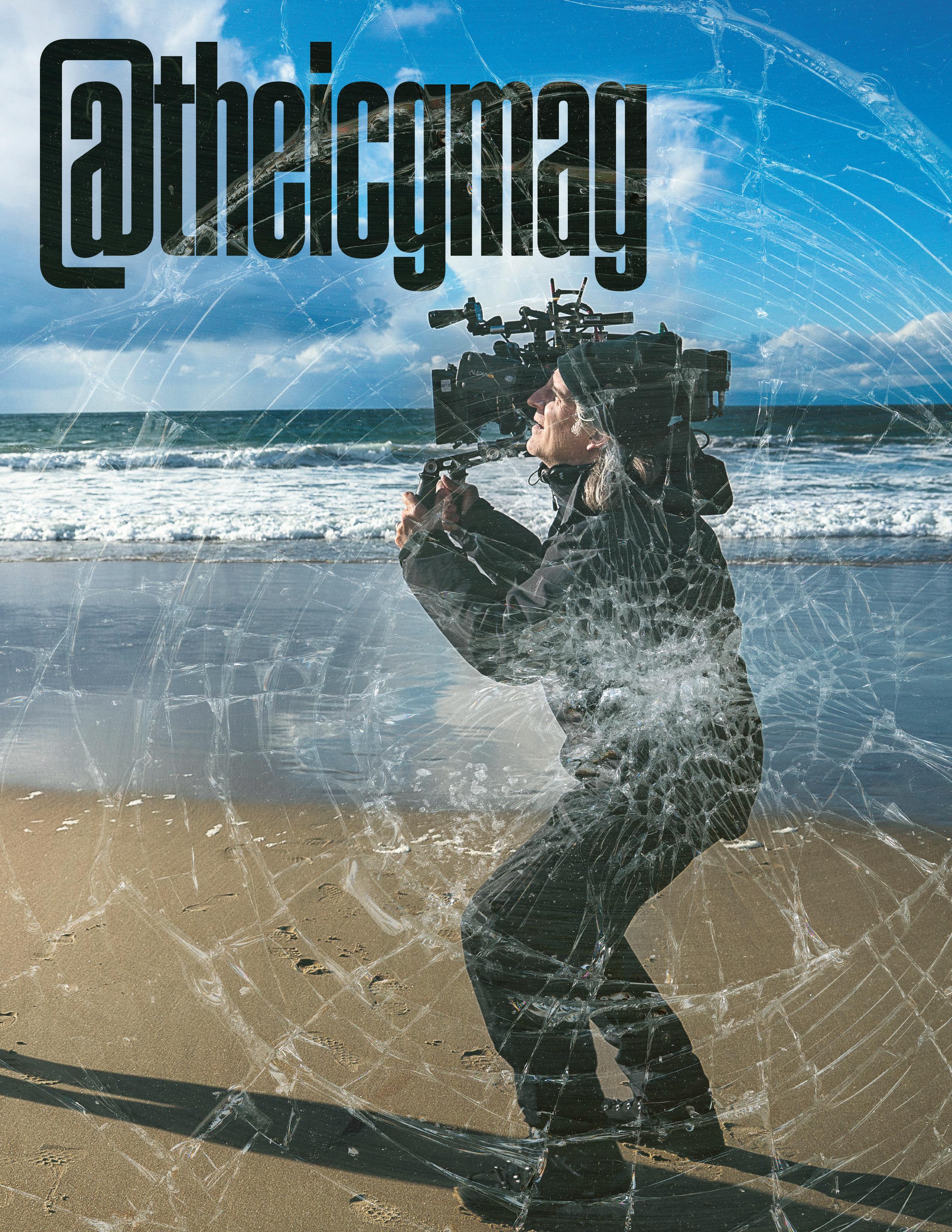
“NAB
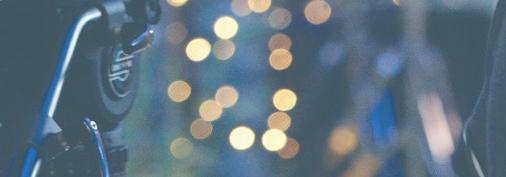







LIGHTS. CAMERA. ACTION. THE GEAR IS HERE

Experience the broadcast, media and entertainment industry’s unrivaled event for must-see tech, tools and gear. Connect with a global community of content creators, cinematographers, editors and crew. Get hands-on with products that enable the future of the art of storytelling.

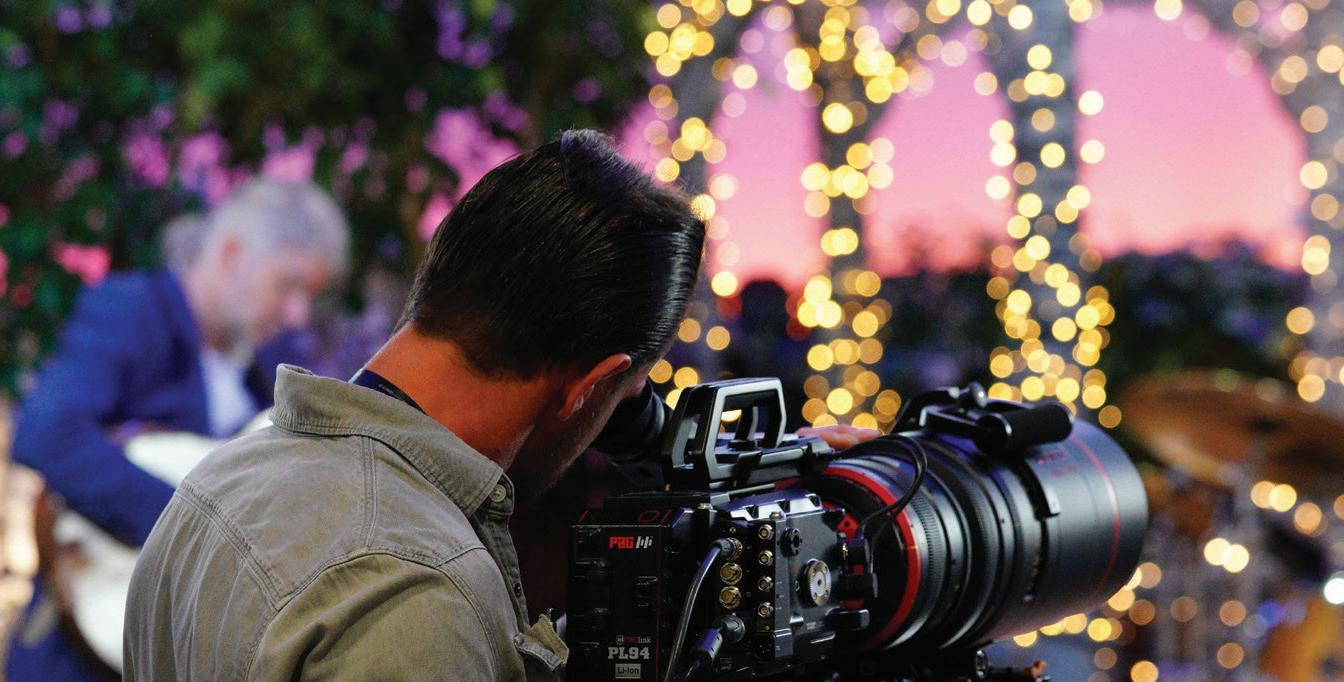
You’ll find everything to master your craft in CREATE, the most massive of four distinct show floor destinations. Learn advanced cinematic techniques, engage with the leaders of Cine Live and hear from the best in Hollywood. NAB Show has it all. REGISTER NOW with code MP04.
INCREDIBLE, IMMERSIVE EDUCATION
Level up with ASC Cinematography Lighting Workshops, ACE Editorial Workshops, the NAB Show Conference CREATE Track and/or Post|Production World. NABShow.com

Show allows me to learn about gear that I might not see, or a rental house might not show me. And the great thing is I get to see everything in one place.”
—Eric Fletcher, SOC - Technical Chair







































 Executive Editor
Executive Editor












































 BY DAVID GEFFNER
BY DAVID GEFFNER



 Crescenzo Notarile, ASC, AIC, and Jon Joffin, ASC, chart a visual journey beyond Federation borders for Star Trek: Picard
by Kevin Martin
Photos by Trae Patton / Paramount+
Framegrab Courtesy of Paramount+
Crescenzo Notarile, ASC, AIC, and Jon Joffin, ASC, chart a visual journey beyond Federation borders for Star Trek: Picard
by Kevin Martin
Photos by Trae Patton / Paramount+
Framegrab Courtesy of Paramount+















 SEASON
PHOTO BY MONTY BRINTON / PARAMOUNT+
SEASON
PHOTO BY MONTY BRINTON / PARAMOUNT+


 Director of Photography Ashley Connor listens to her “inner creative voice” for Hulu’s new musical series, Up Here
by Pauline Rogers
photos by Sarah Shatz & Patrick Harbron / Hulu
Director of Photography Ashley Connor listens to her “inner creative voice” for Hulu’s new musical series, Up Here
by Pauline Rogers
photos by Sarah Shatz & Patrick Harbron / Hulu
 Photo by Patrick Harbron / Hulu
Photo by Patrick Harbron / Hulu















 PHOTO BY SARAH SHATZ/HULU
PHOTO BY SARAH SHATZ/HULU

 by Valentina Valentini
by Valentina Valentini

 Photo by Jessica Brooks
Photo by Jessica Brooks
 Photo by Jessica Brooks
Photo by Jessica Brooks
 Photo by Erin Simkin
Photo by Erin Simkin

 Photo by Jessica Brooks
Photo by Jessica Brooks








 PHOTO BY JESSICA BROOKS
PHOTO BY JESSICA BROOKS



















 THE ACCIDENTAL GETAWAY DRIVER / PHOTO BY RON BATZDORFF
THE ACCIDENTAL GETAWAY DRIVER / PHOTO BY RON BATZDORFF
 by David Geffner
by David Geffner












 by Michael Chambliss
by Michael Chambliss






 by Valentina Valentini
by Valentina Valentini






 by Michael Chambliss Framegrabs Courtesy of Sundance Institute
by Michael Chambliss Framegrabs Courtesy of Sundance Institute







 by David Geffner
Photos by Aaron Ricketts / Focus Features
by David Geffner
Photos by Aaron Ricketts / Focus Features























